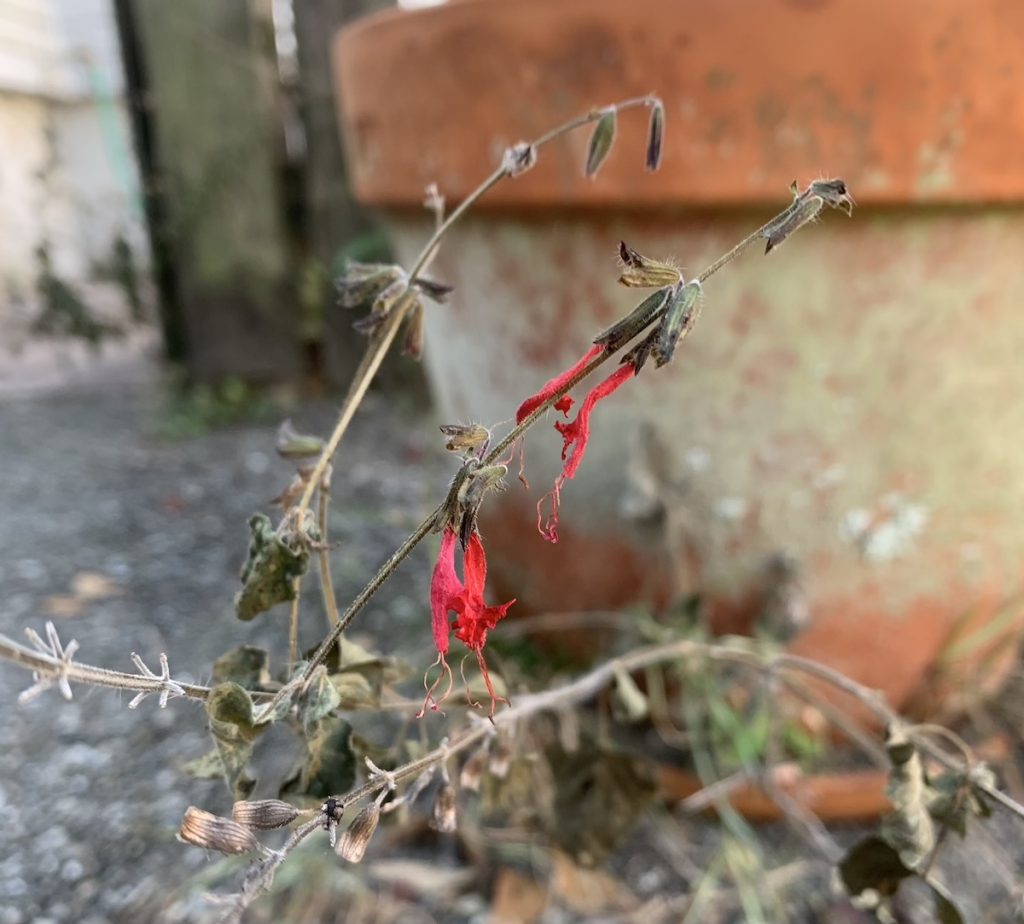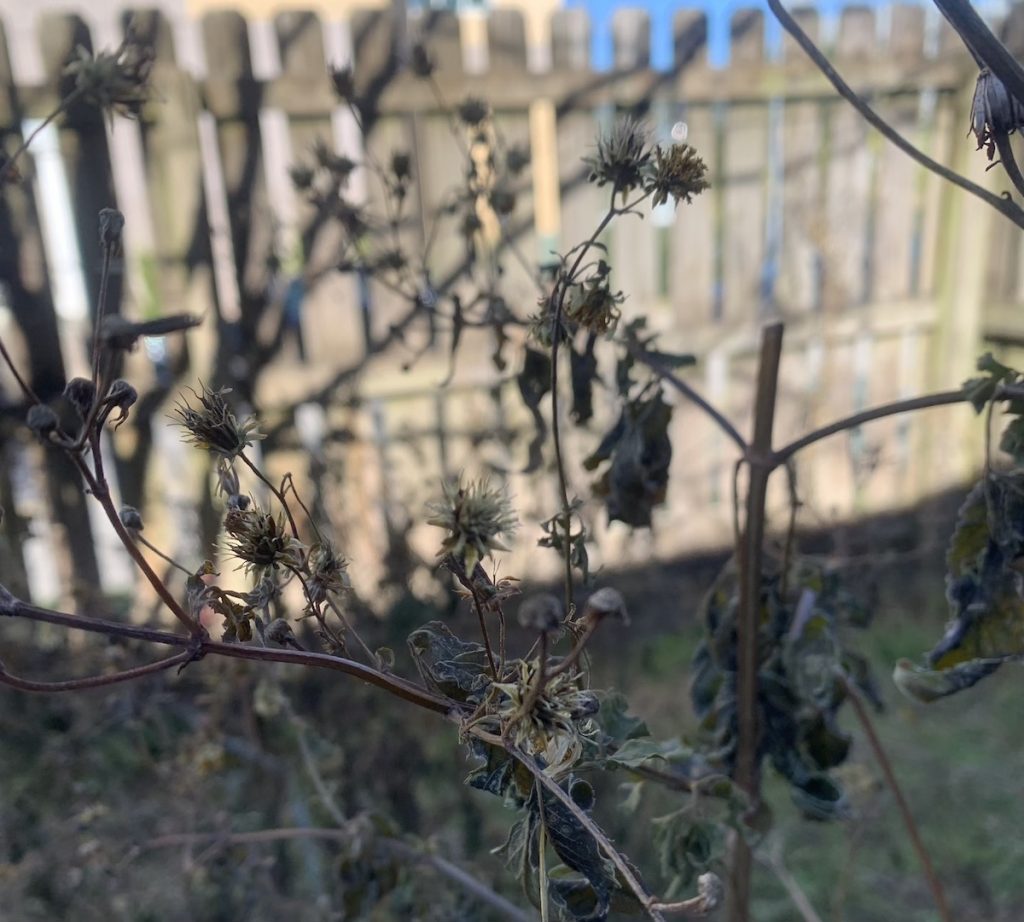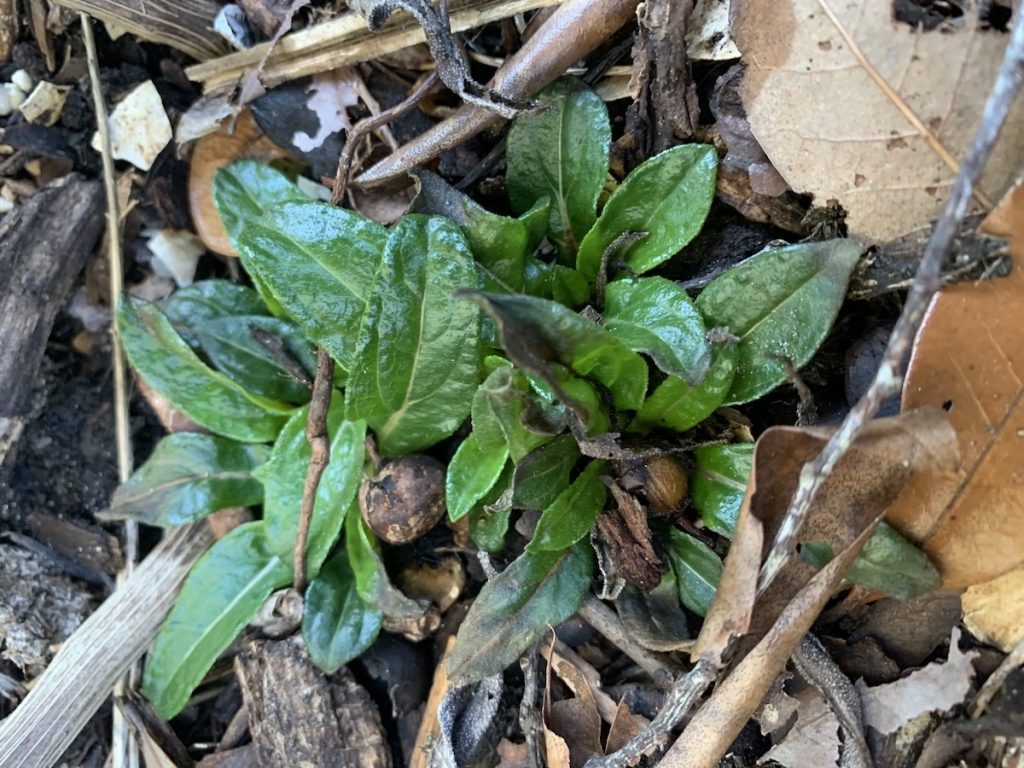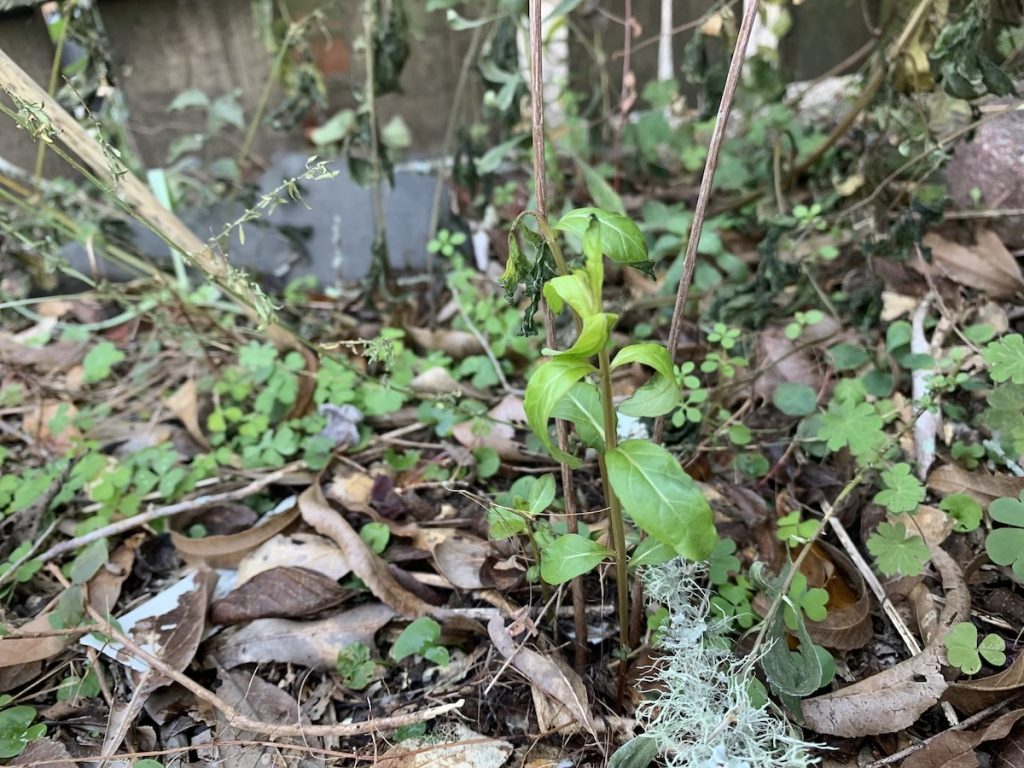After four years of taking photos and writing about insects in my yard, I called it quits. I was in the middle of a large project as 2022 approached, and anyway, I see a lot of the same insects every year. That didn’t mean I would stop taking photos, but maybe I didn’t need to take the time to organize and write about them.
There would be no 2022 Bug Blog.
I underestimated my yard. Space opened up in 2021, and I installed a large new pollinator space. The yard became a richer space, a more diverse space. It drew me in with new visitors, and stories unfolded before my eyes. Once the small things have your attention, you’re in their world. They are hunters and they are hunted, and they all need to seek a mate.
With the changing of seasons, storylines resolve or evolve. Many of our characters change, and they have a flair for the unexpected. I make it sound dramatic, and it can be. But observing insects pays off in more than sex and death.
Why do I Bug Blog?
- For one thing, it’s a seasonal record. Five years in, we see when different wildflowers started to bloom, when different bees started visiting. And when did monarchs start passing through this year? It’s phenological information, and I like having that record.
- If you pay enough attention, you observe different plant and animal behaviors. Some are subtle things, and, yes, some are choc full of sex and death. It’s all part of the process of learning about our backyard ecosystems.
- And then, yes, I do see new critters and even new native plants popping in as weeds. If you treat it like an ecosystem, it will always surprise you.
So let’s jump right in. The record will be a little more sparse at the beginning of the year, when I was focused on Bee in My Garden Days (bees are, of course, well represented). Also, there are less insects to observe in the winter months. It starts picking up when I started noticing too many things I couldn’t not photograph.
January 4, 2022- mistletoe falls
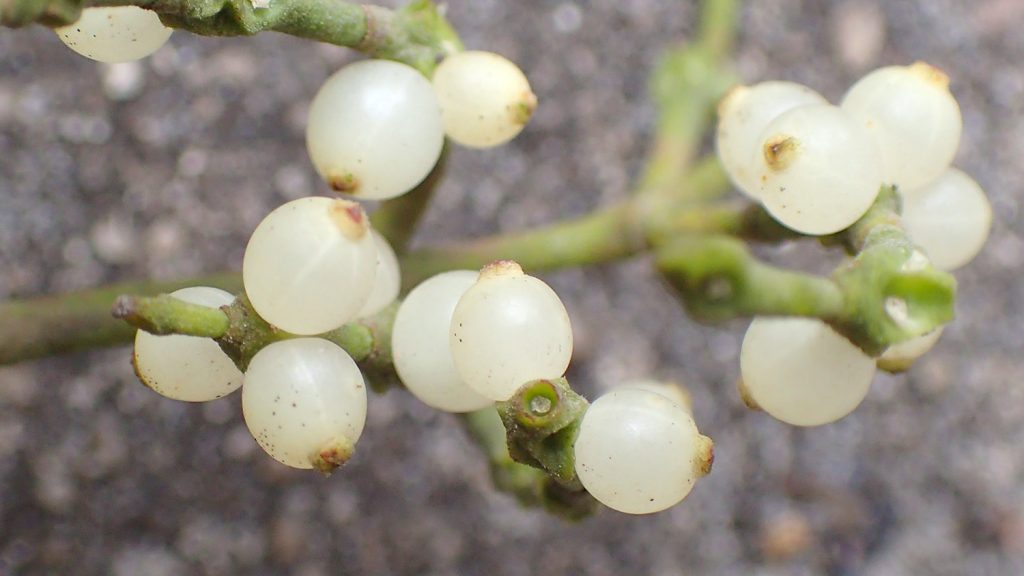
Every year around this time, a chunk of mistletoe falls from the pecan tree. The plant is only a minor parasite to its host tree, and it has wildlife value. For one, its berries feed birds.
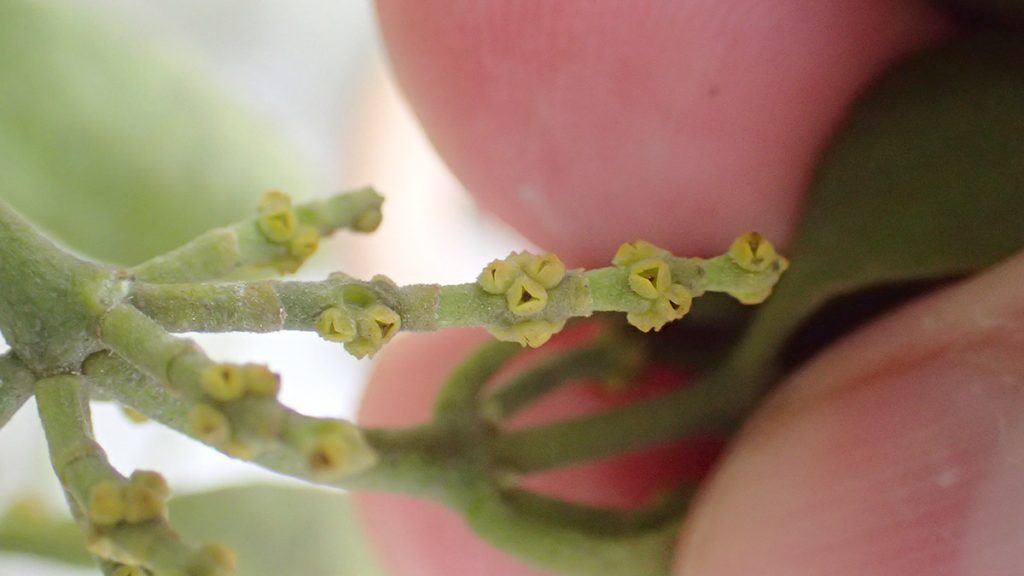
And here are its flowers. They look like barnacles. I have a special appreciation for the flowers that don’t look like flowers.
In December of 2020 when the mistletoe fell, I found some true bug nymphs on it. They were possibly plant eating leaf-footed bugs, but another possibility is that they were assassin bugs. They look so similar at that stage. We did find assassin bug eggs while filming our segment on mistletoe in 2019.
January 18, 2022
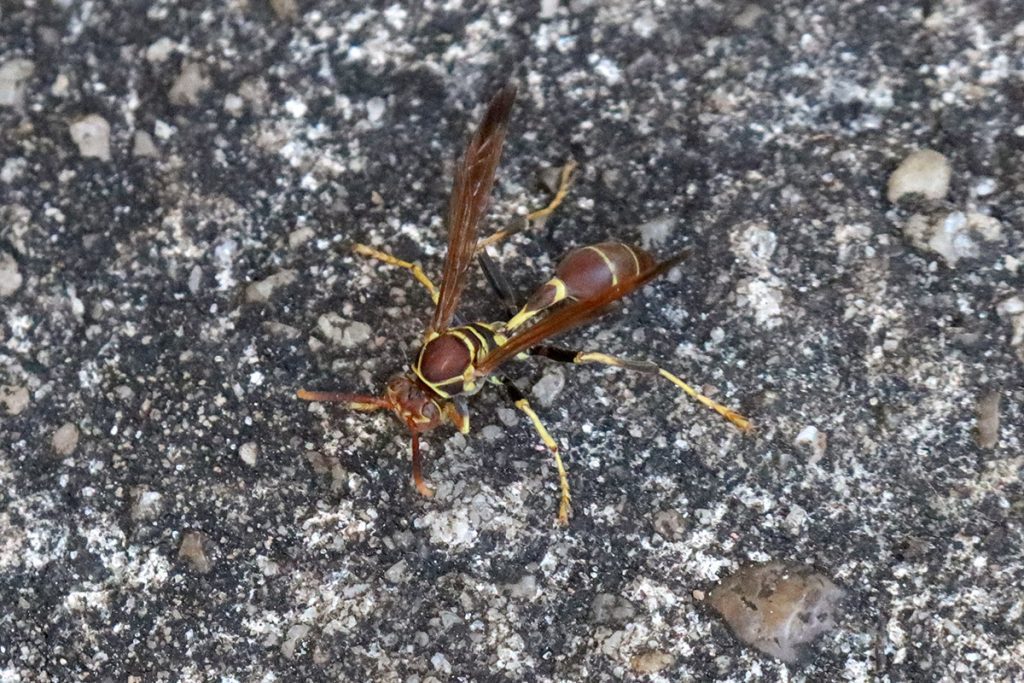
The temperatures dipped below freezing last night, and yet here’s a flying insect. Well, today, a walking insect. I’ve noticed paper wasps perusing leaves after it’s too cold for other pollinators. They seem to be fairly cold tolerant, perhaps taking advantage of this to find hibernating insects to bring back to the nest for their larvae to feed on.
January 26, 2022- a winter visitor
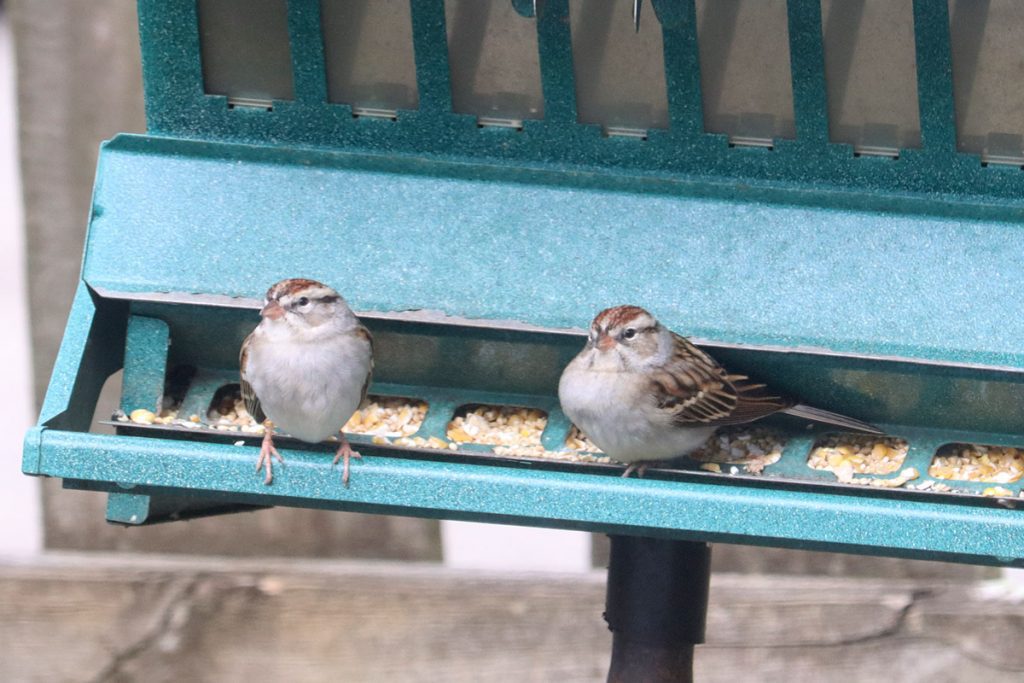
Before I became obsessed with insects, I observed birds. Insects did not replace birds, just as plants did not replace insects. My interest in plants came from insects, which eat and pollinate them. Learning plants helped me understand insects, both of which are of the world of birds.
I haven’t seen chipping sparrows in the yard since 2018 or ’19. This cute little winter migratory bird is a common visitor to a backyard feeder.
February 19, 2022
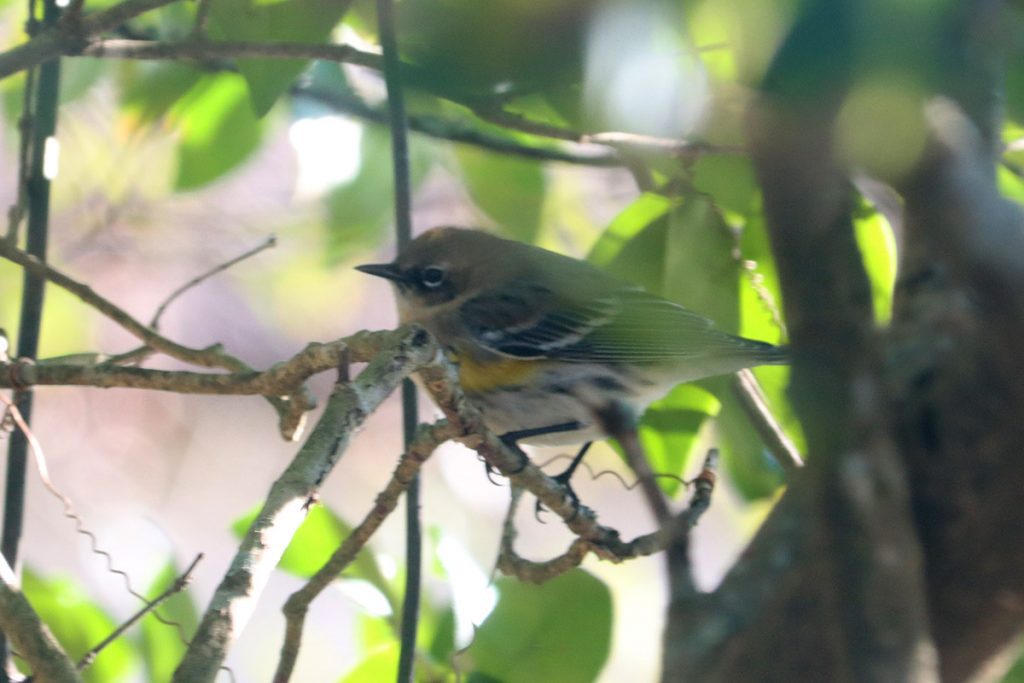
Perhaps the most common winter visitor to the yard, and commonly seen around the area during colder months.
February 28, 2022- The first bees of the year
Not thinking about collecting photos for a bug blog, I shot video of this mining bee (Andrena) pollinating a cherry laurel flower. Mining bees are some of the first native bees we see in our area. I had also been seeing carpenter bees flying to and from our fence posts, where they nest, and occasionally meeting while in flight. This is when they emerge, find nectar, and mate.
Back to those mining bees. Because they fly so early in the year, they rely on trees and shrubs, which bloom when mining bees are in flight. By April, they will return to the ground nests for the year.
March 2, 2022
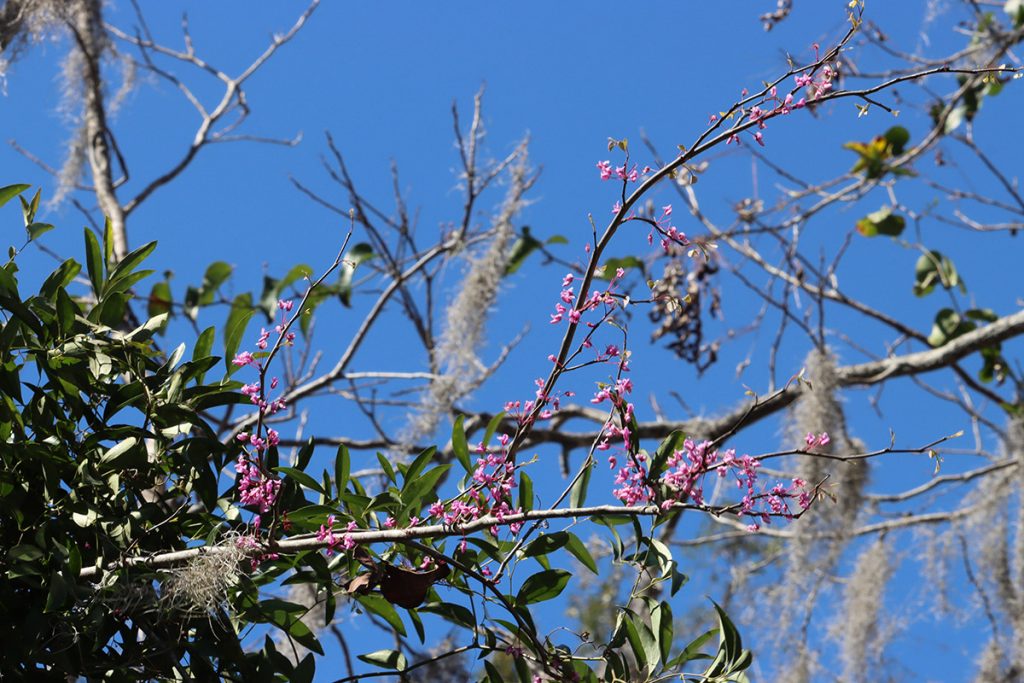
Eastern redbuds are an early blooming understory tree. Here, it has snuck in amongst native cherry trees, where it almost escaped notice before flowering. This is an important tree for early flying bees.
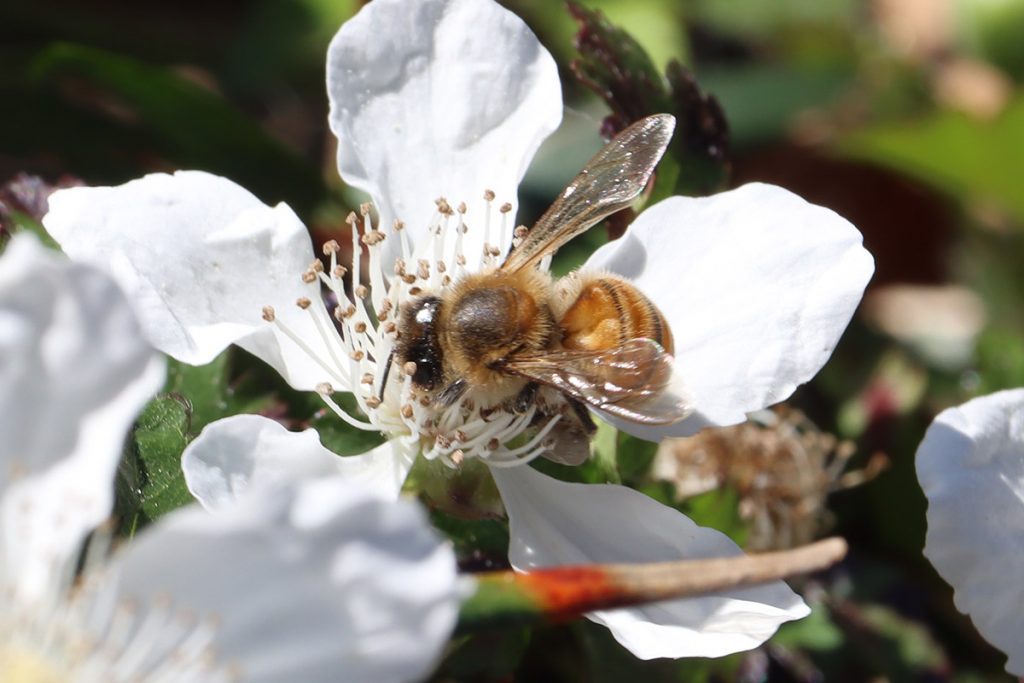
Dewberry can be weedy, crawling over the ground and crowding out other plants. And it is thorny. At this time of year, it redeems itself, producing copious amounts of white flowers for honeybees and other pollinators out and about now. It will soon produce fruit for birds and mammals, and I guess humans as well.
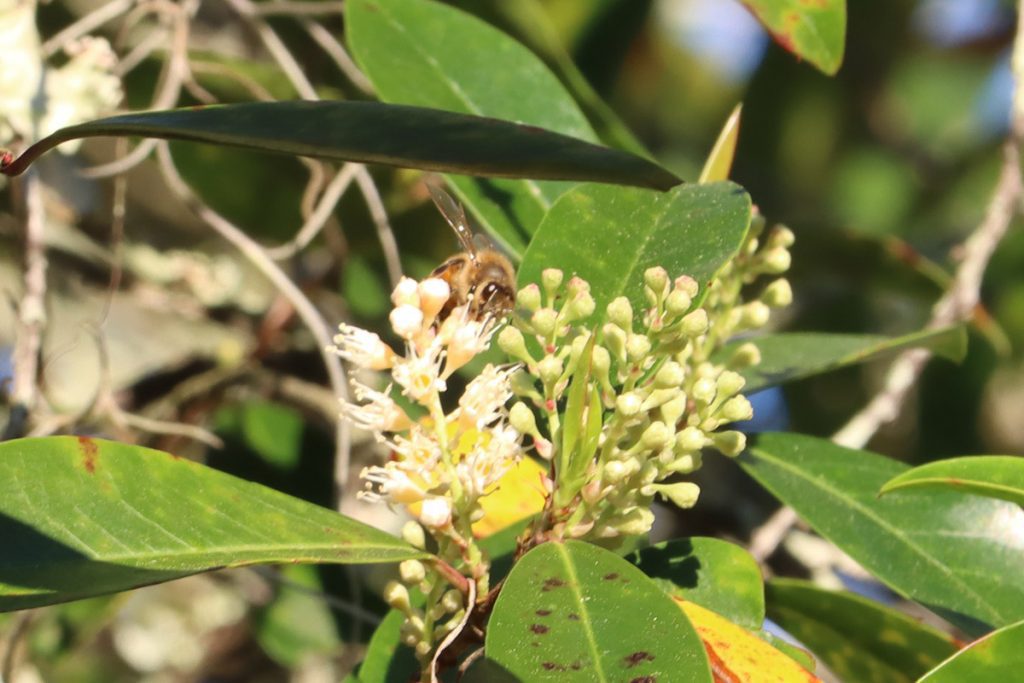
And here’s another mining bee.
March 3, 2022- Luna moth
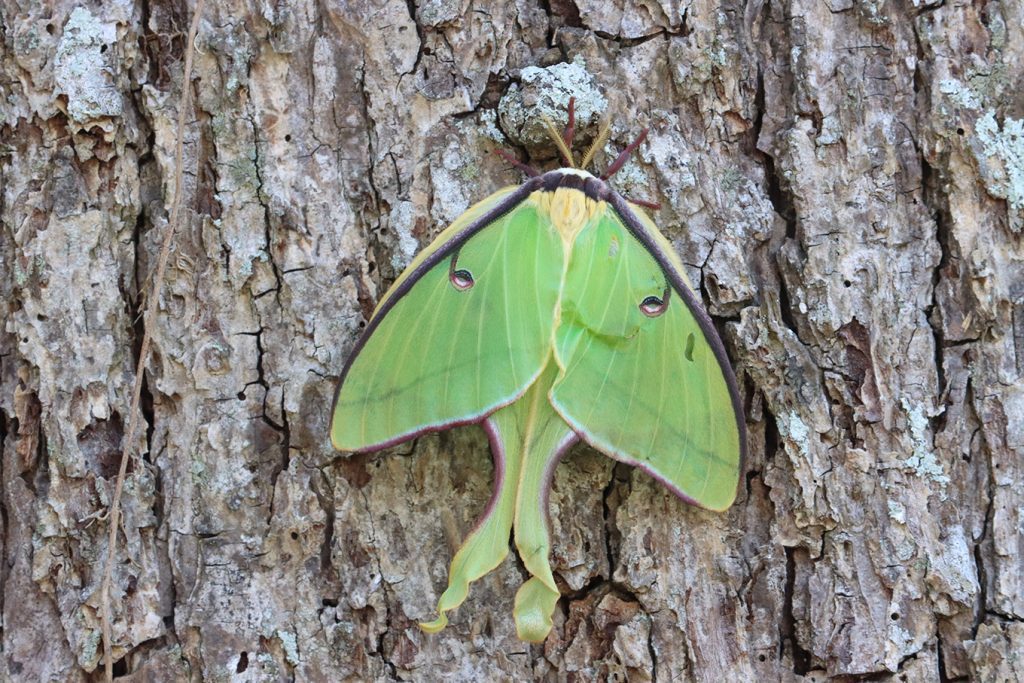
The real reward of observing insects in the yard all year long is learning the stories of all the different, often ignored, creepy crawlies. I’m talking about the parasitoid breeders whose larvae devour other insects from within. The decomposers who turn leaves and wood to soil. And all the various hunters who often eat the pretty little insects I like, but also aphids.
The Bug Blog exists to celebrate the unappreciated insects.
But who isn’t happy to see a luna moth hanging around in a conspicuous place during daylight hours?
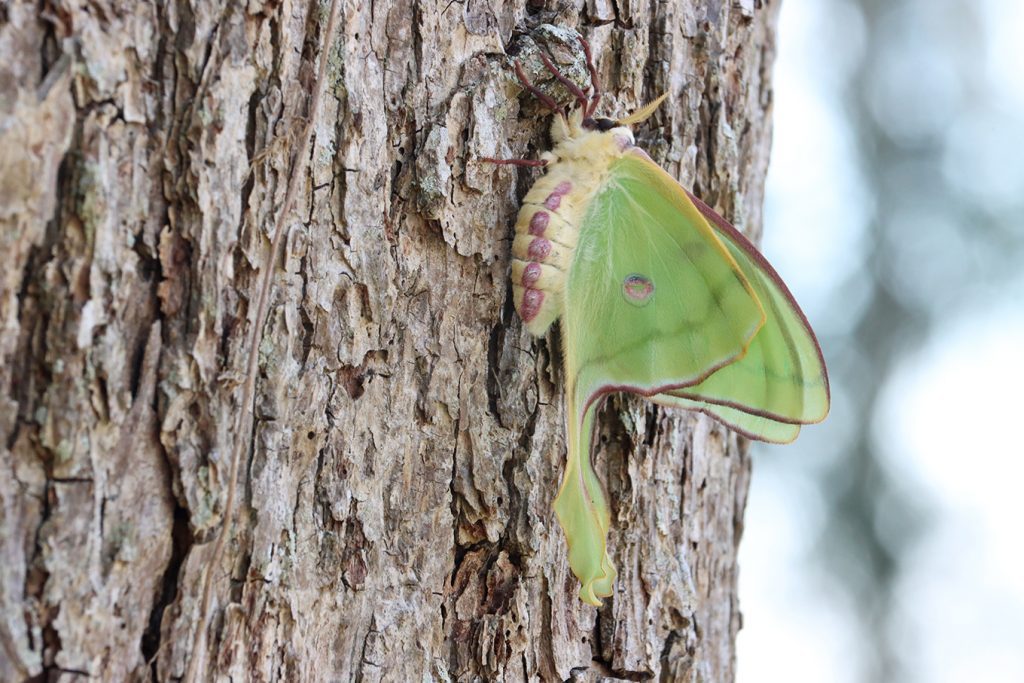
In the morning…
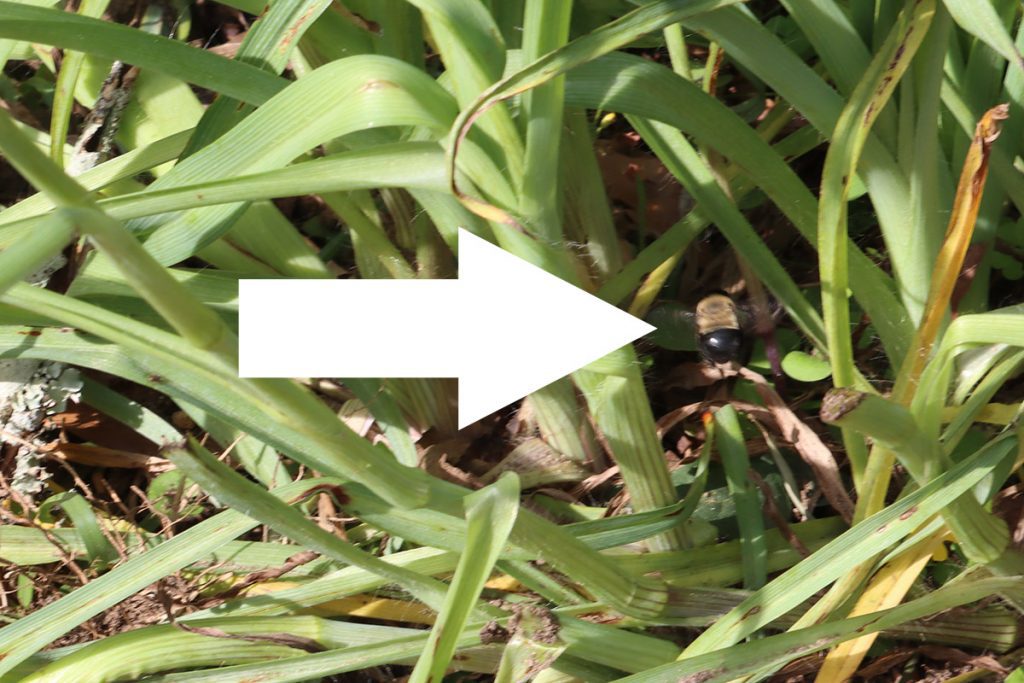
That morning, I watched as a bee searched the ground. Perhaps it was looking for a place to nest. In the spring, females of many bee species emerge from a sort of hibernation to make their nests. They will usually have mated in the fall, carrying the next year’s brood within them.
This bee looked a little like a bumblebee, but from this no-so-great-photo, I can see that it has a smooth abdomen. It’s a little small for a carpenter bee (another similar looking bee with a smooth abdomen), and those nest in wood. I lost it among the spiderwort, hoping to see it again.
March 3, 2022
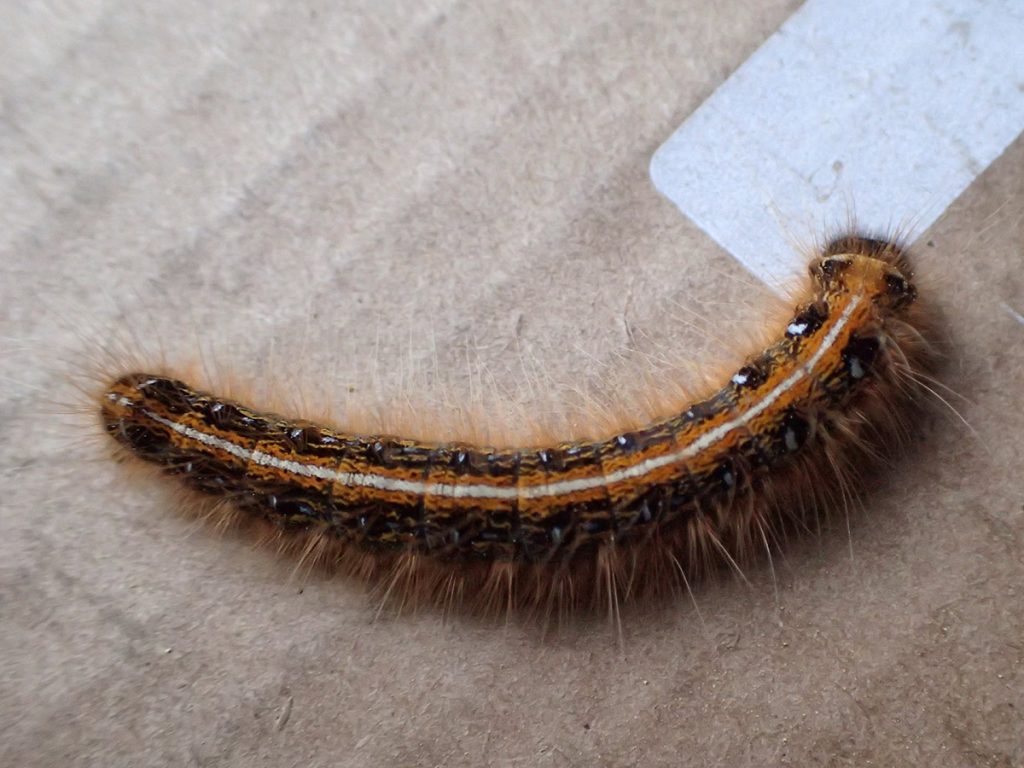
As happens in some years, these caterpillars were everywhere as winter turned to spring. In the previous spring, a moth laid a couple hundred eggs, likely up in a cherry tree. Then, a week or two before this photo, they hatched, began to feed, and created a silk tent around the lot of them.
They leave the tent to feed, which is when we see them wandering.
March 14, 2022- small flowers in full force
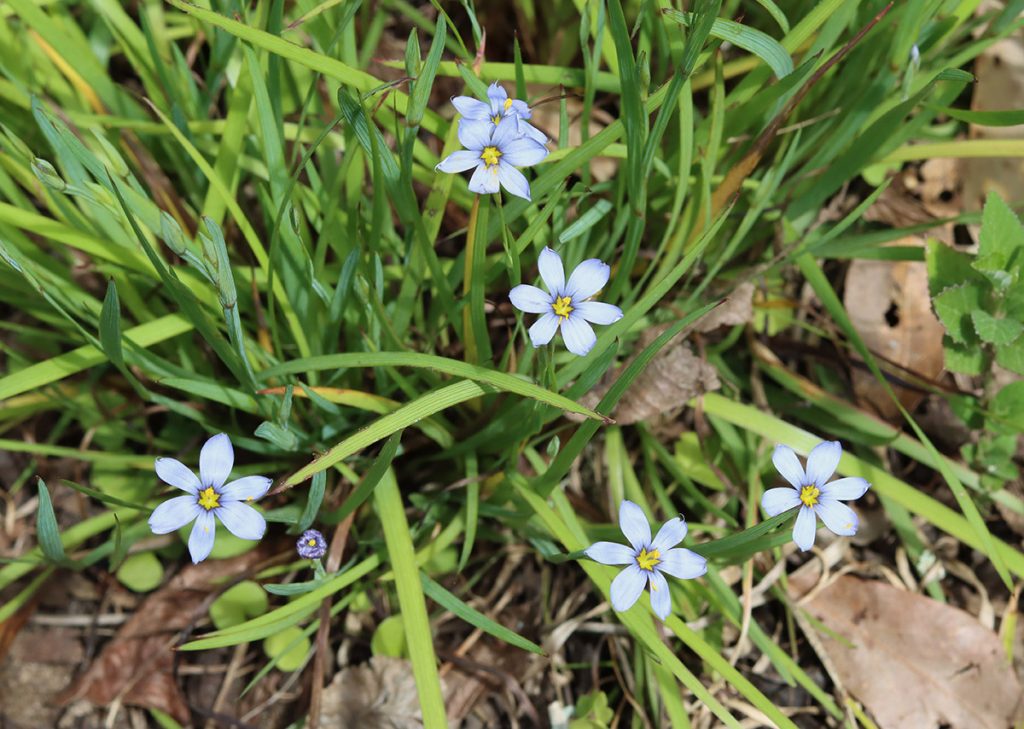
Trees and shrubs have been blooming for weeks now, providing nectar for early flying bees. In our yard we’ve already seen Carolina cherry laurels and redbuds. By March 14, as spring approaches, many small flowers start to emerge. Many of these are weeds- welcome, native species. This is why I work to identify every plant that sprouts in the yard. If you let your yard do its thing, a lot of what grows is not native, and then a lot of it is.
These are natives you might never see in a nursery, but that add some diversity and, often, nectar sources to your yard. They are splashes of color in an overgrown lawn.
The flower above is not a weed, though it has a reputation for spreading in a yard. A couple of years ago, I bought two species of Sisyrinchium, both blue and purple eyed grasses.
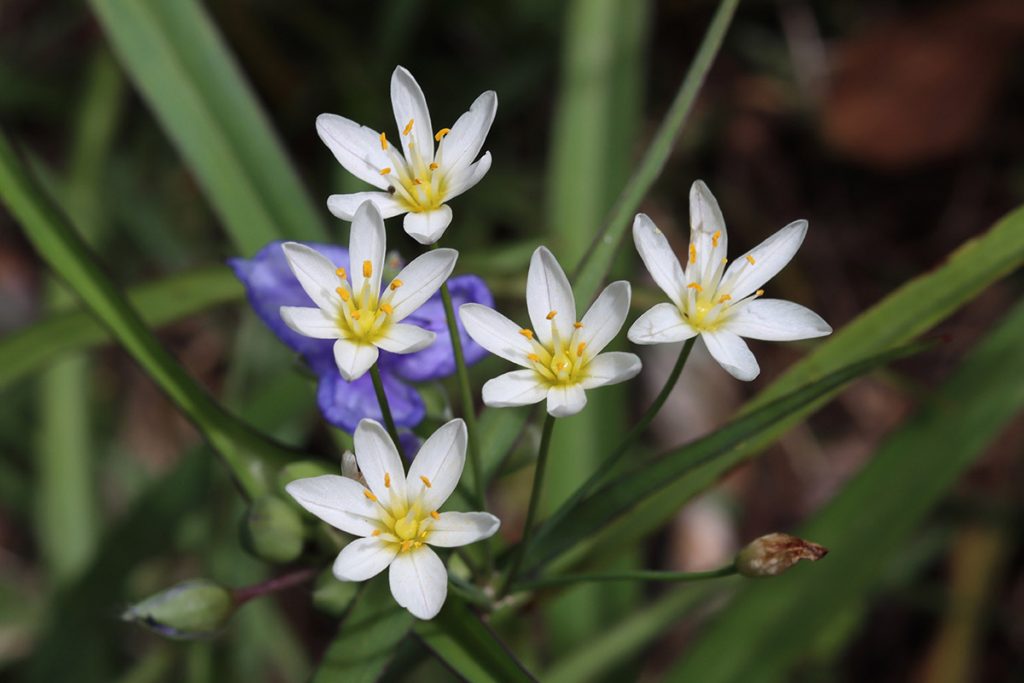
These bloom profusely in the spring, with an echo in the early fall. Like many of the small flowers I see at this time of year, they are visited by small bees and hoverflies.
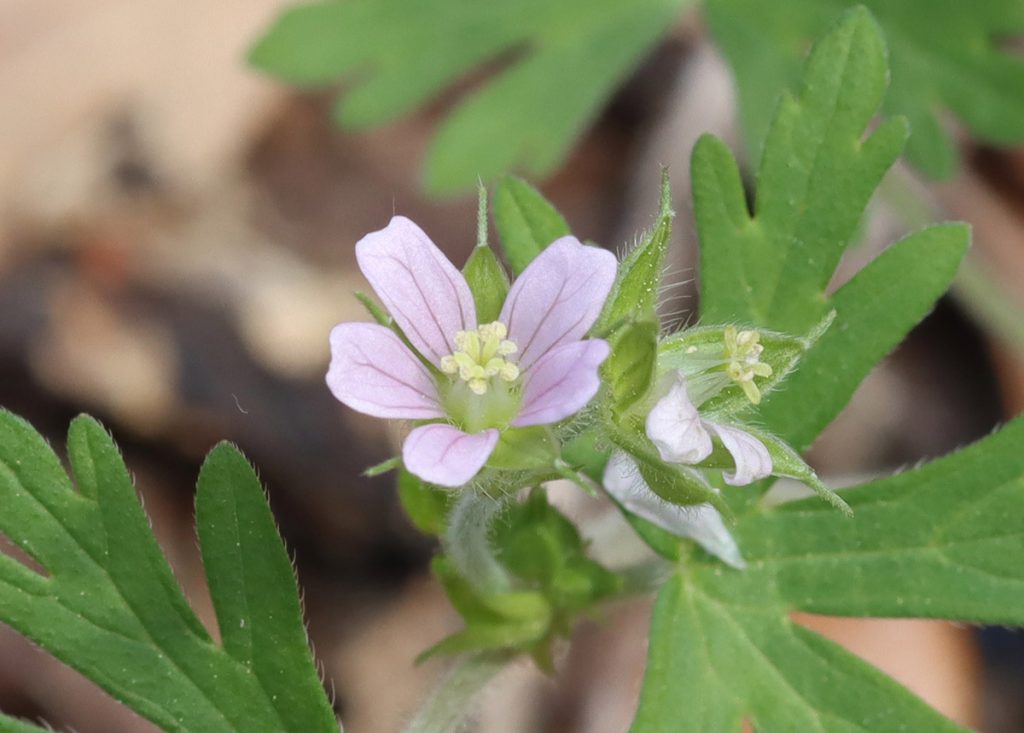
Another tiny flower. The name cranesbill refers to the pointed seedhead it will later produce, which I’ve seen squirrels eat. Starting in November, you might see parsley-like leaves emerging in your yard. It could be this native geranium, which will bloom by March.
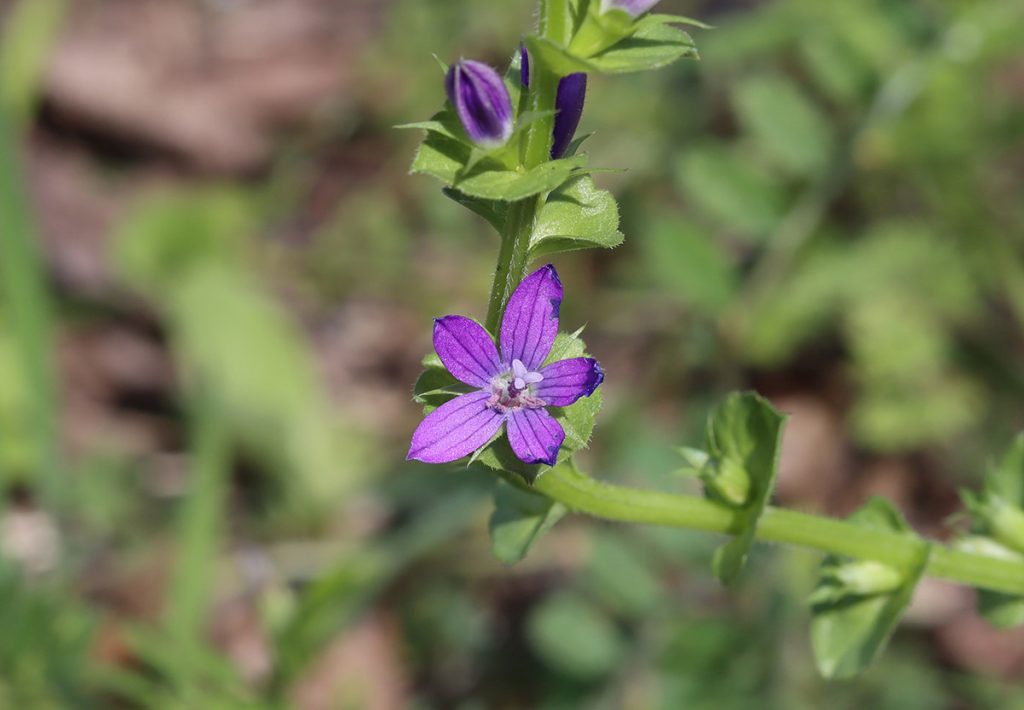
We had much more of these flowers in 2022 than we did in 2021.
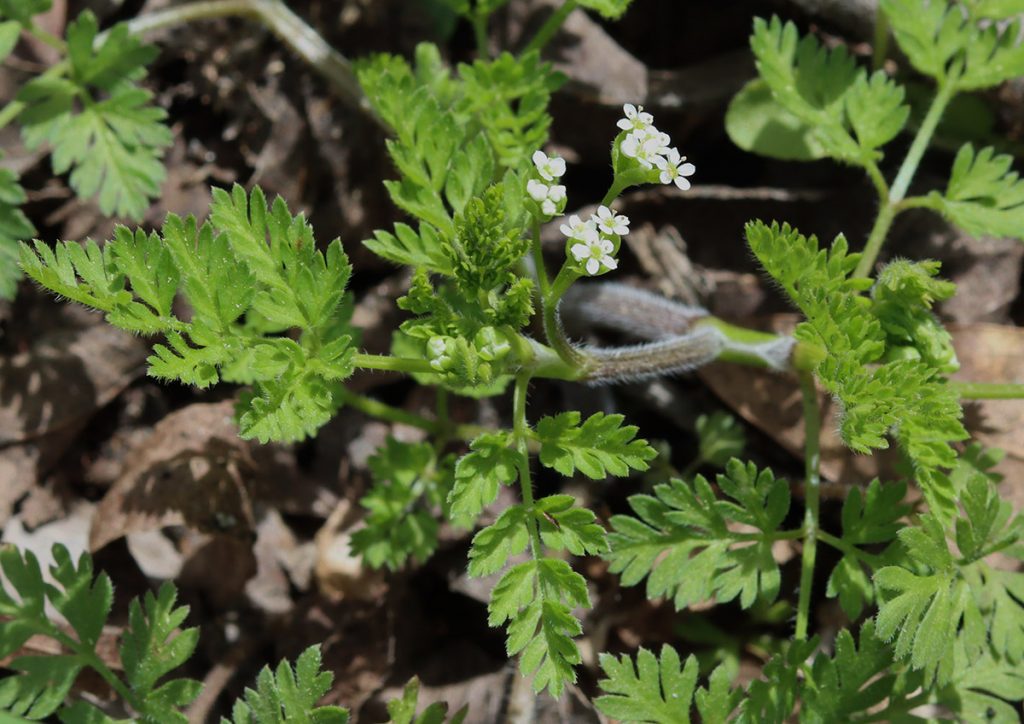
This is a native Apiaceae, or carrot family plant. Like many of the weeds on this list, it’ll be totally gone by the end of spring.
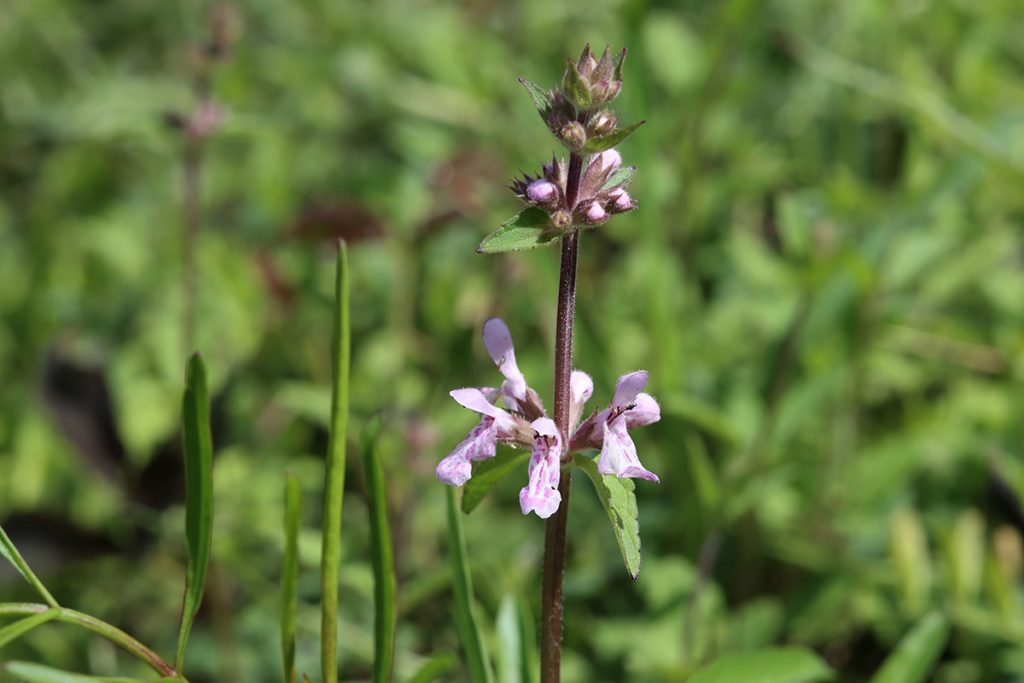
We have a patch of our yard that, for a few weeks, blooms pink with betony in the spring.
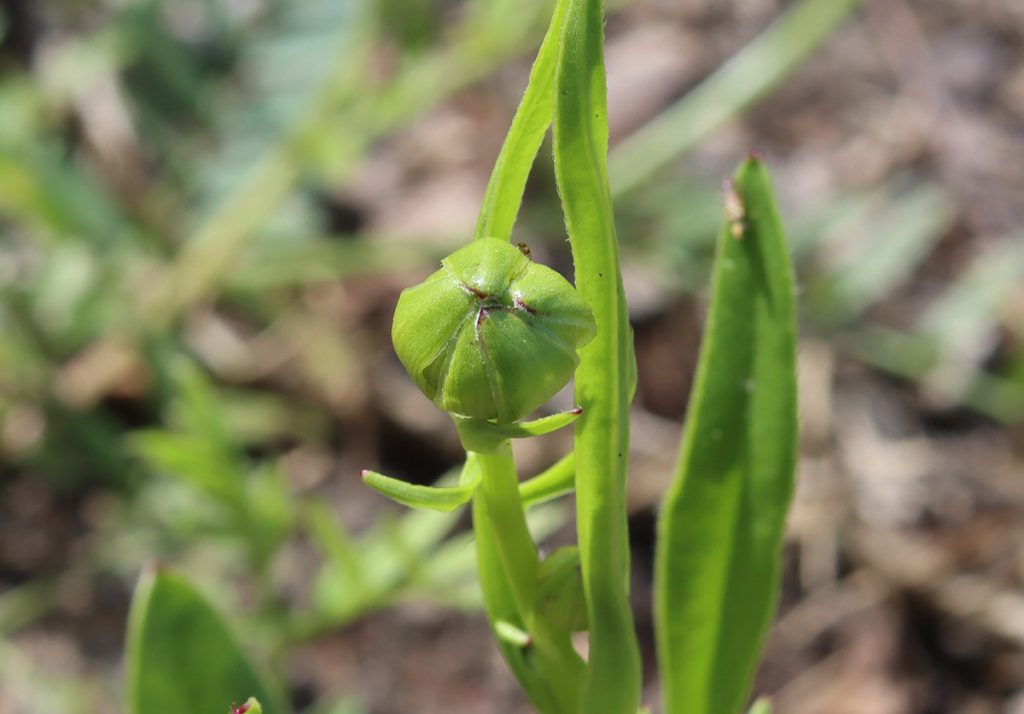
Not a weed, though it spreads like one, this is a wildflower I started from seed. From those first plants, years ago, more followed. When our two species of Coreopsis start to flower, pollinator season starts to take off in our yard.
March 21, 2022
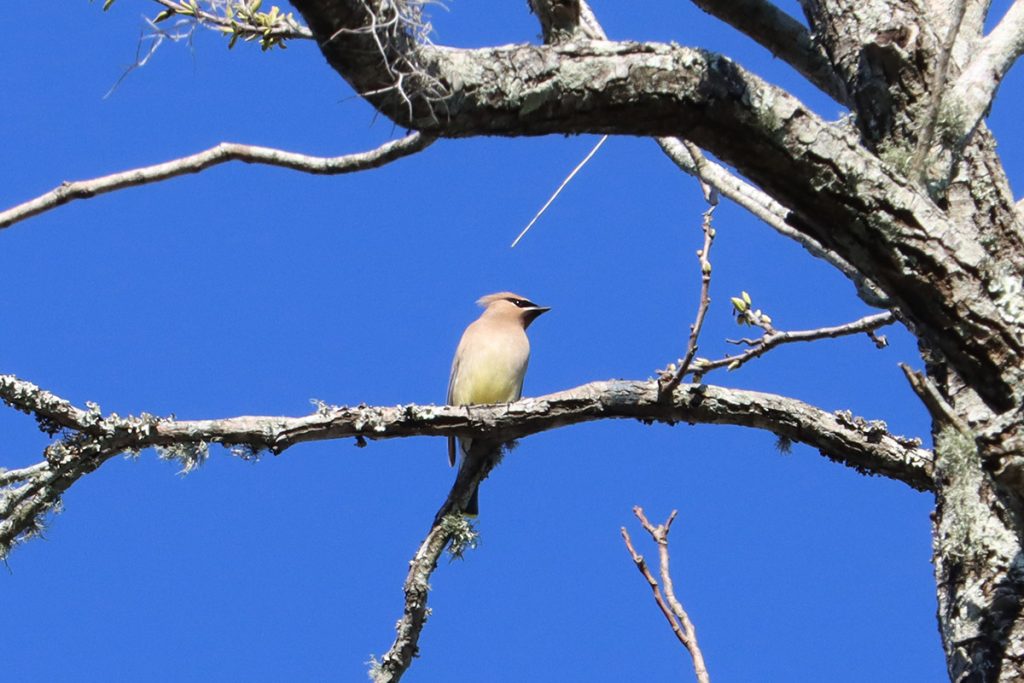
Last year, cedar waxwings and robins ran rampant through through our neighborhood, and regularly mobbed our cherry laurels. Not so much this year. You can see that the pecan tree is starting to leaf out again; soon, these winter visitors will depart, and spring will begin in earnest.
March 29, 2022
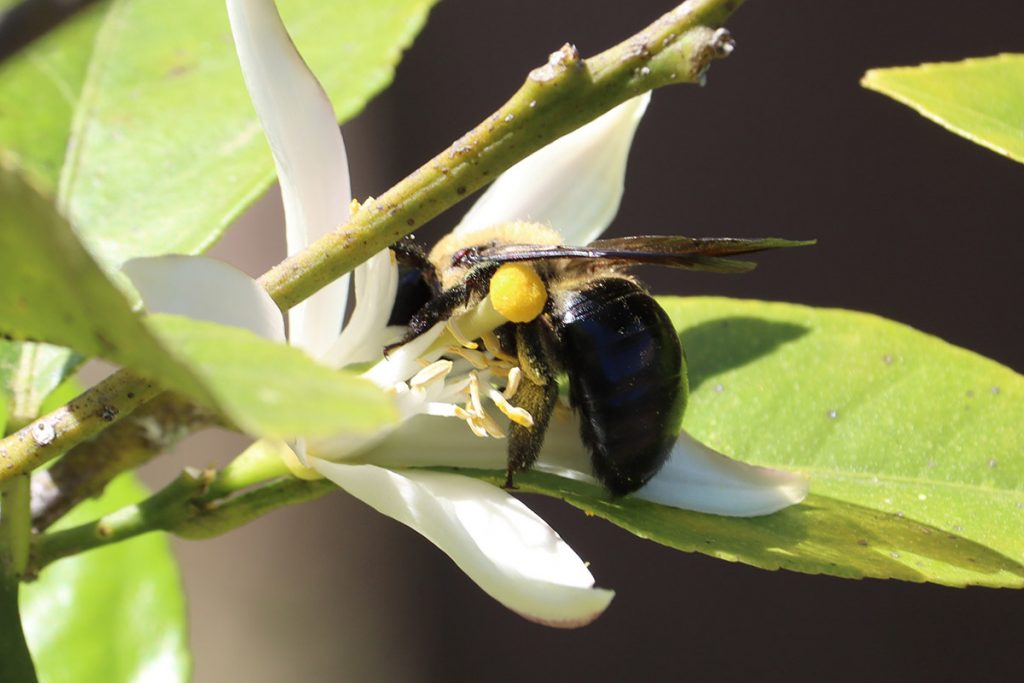
Carpenter bees were the first bees I saw flying this year, just ahead of mining bees. But I never thought to stalk them coming and going from their nests, and until the horsemint blooms in August, I don’t see them on many flowers. Here is one visiting our Meyer lemon tree.
April 1, 2022- first monarch sighting
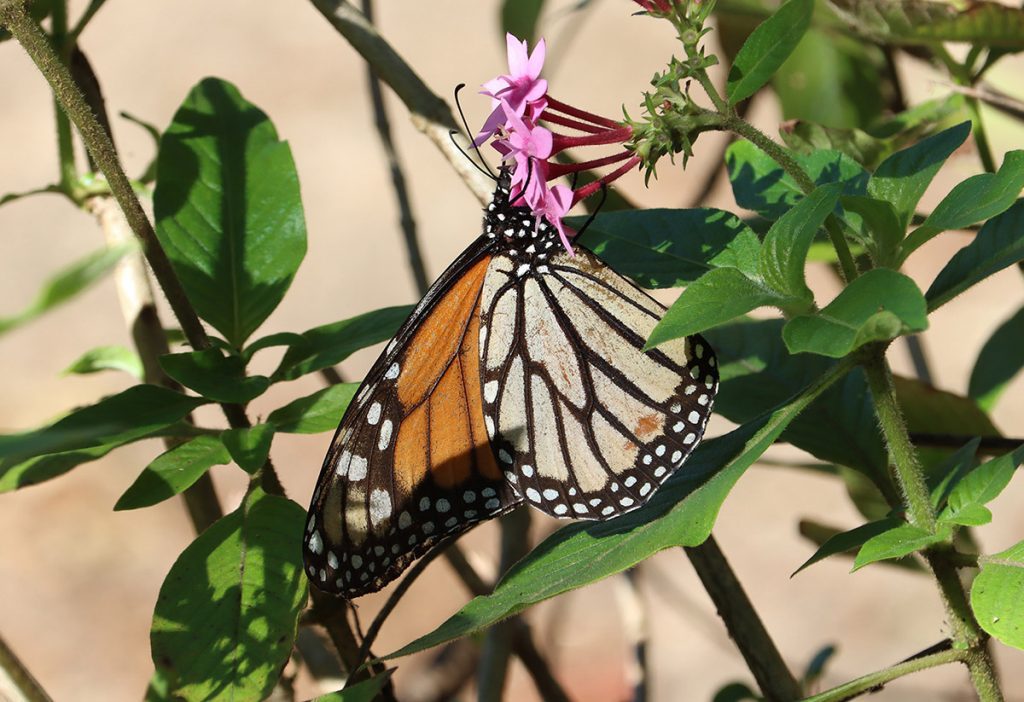
This monarch was passing through, stopping for nectar but not to lay eggs on our milkweed. The migration has started.
April 5, 2022
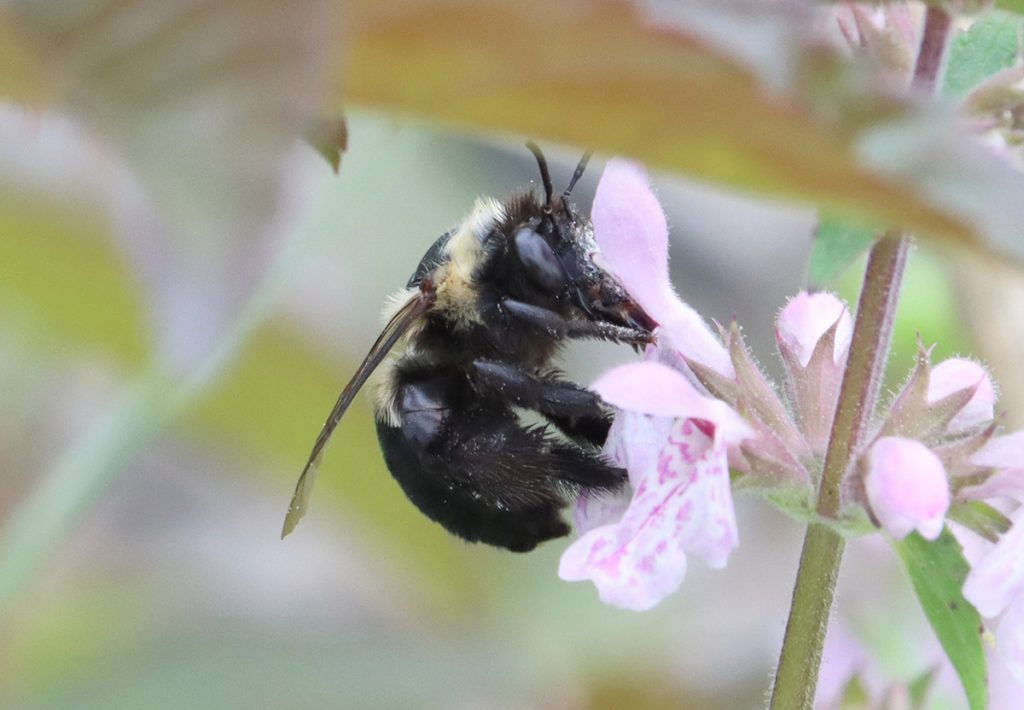
Shame on me for walking the garden without a camera. I’d seen this bee a few times visiting our blueberry flowers, but only now, after the flowers had mostly started to turn to berries, did I catch it on a different plant. This bee is known as a specialist, but it’s obviously not too specialized.
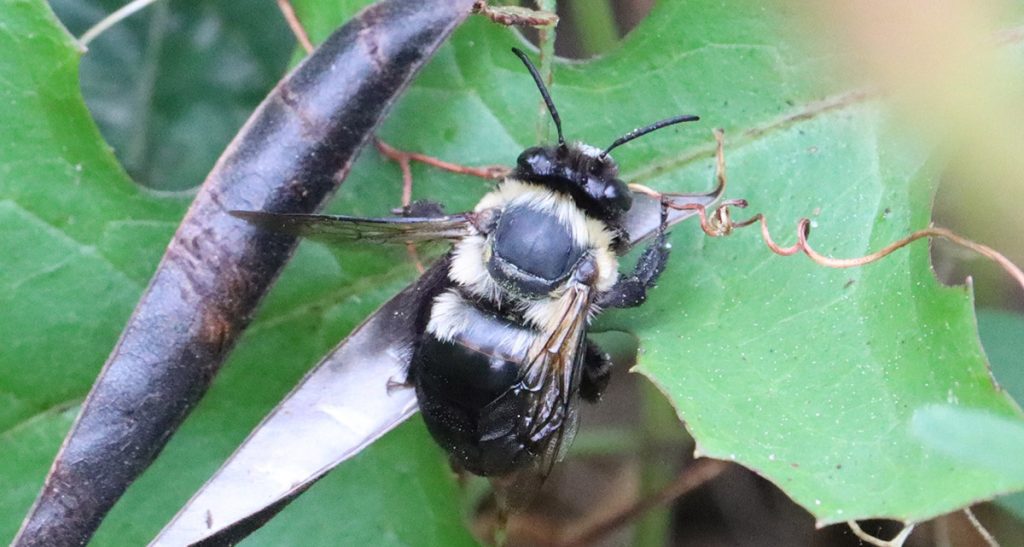
Here’s another look. It’s a new species for the yard, and the bee I saw searching for a nest a couple weeks before. Here it is on a busted open vetch seed pod. Common vetch is not native, but it only lasts through the spring, and it fixes nitrogen in the soil. It dies off right as many other plants are starting to grow and flower, taking advantage of the soil it enriches. So I leave it.
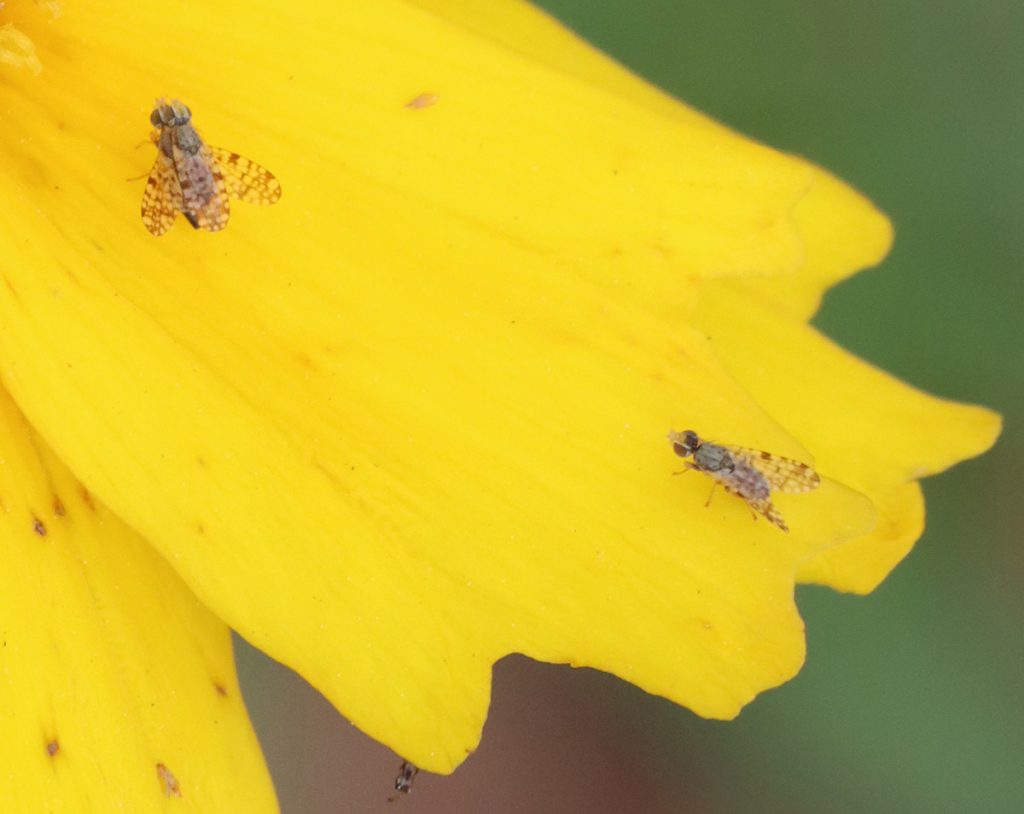
The Coreopsis has started flowering. We’re still not seeing many pollinators, but other insects are starting to fly.
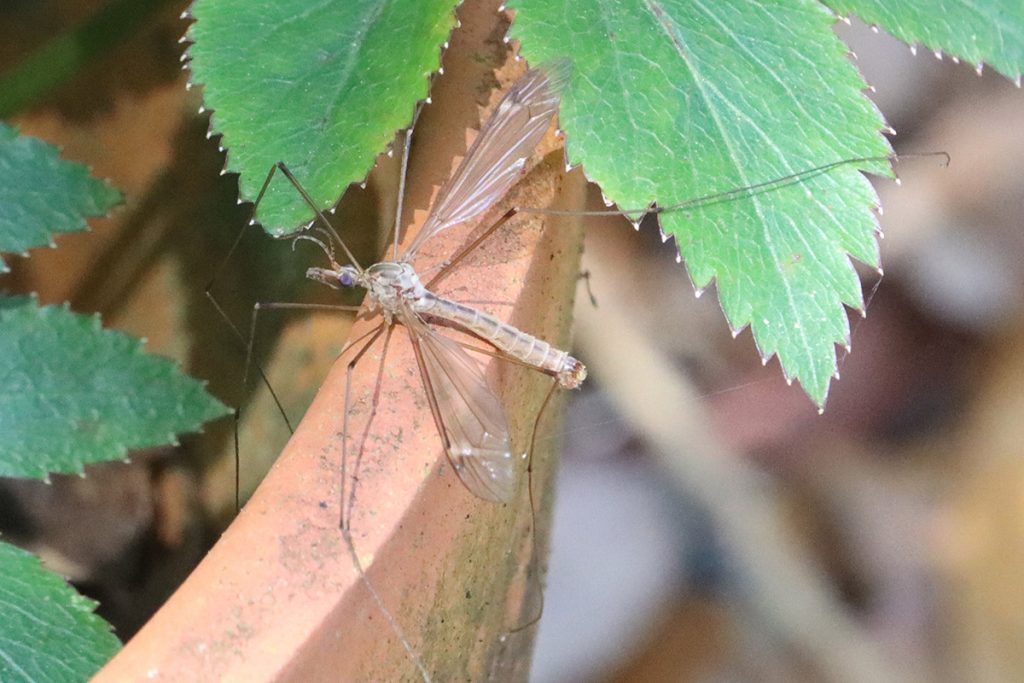
I haven’t found out much about this insect, but crane fly larvae are known to eat the roots of plants after their mothers lay eggs in soil.
April 17, 2022
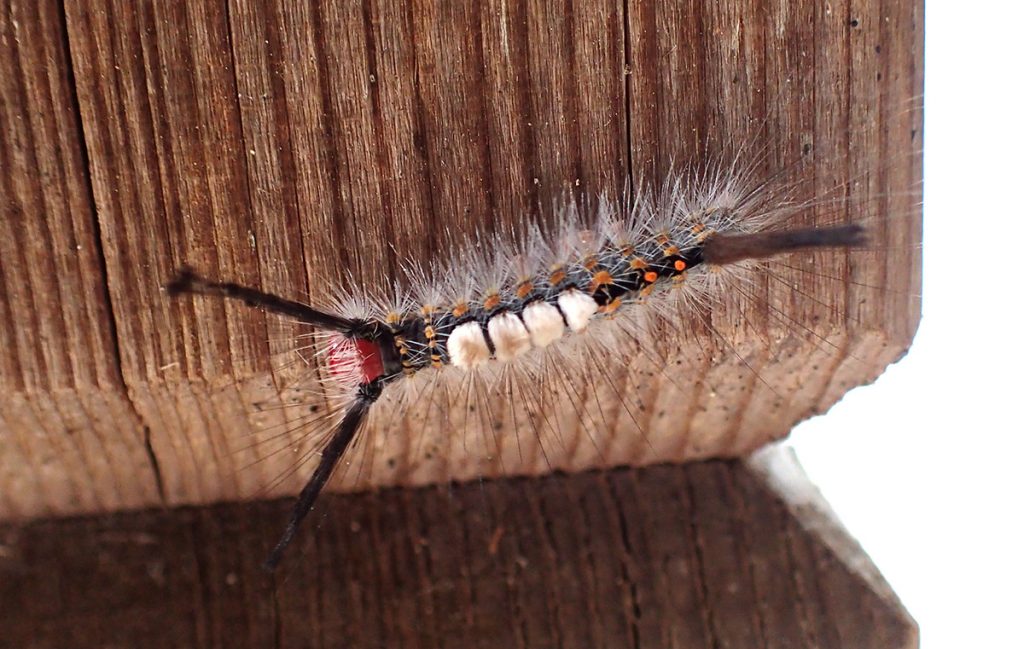
I’ve been looking more at the seasonality charts for different species in iNaturalist. It displays observations based on month of the year, and some species have a more specific seasonality than others. The white marked tussock moth peaks in April, though it is observed throughout the summer.
Using iNaturalist as a garden tool
I mention iNaturalist so often and sometimes forget that some readers don’t know what that is. iNaturalist is a free app that helps identify plants, animals, mushrooms- basically, anything that lives. It scans your photos and offers you suggestions. Other users, including biologists, confirm your identification or suggest a new one.
The app also collects data from user observations. You can get an idea of the range of a species by looking at a map of observations, and can see the observations plotted over time. I use the app as a garden tool. Identifying whether weeds are natives of nonnatives, I make decisions on who stays or goes. And it’s a main way I learn about insects in the yard.
April 21, 2202
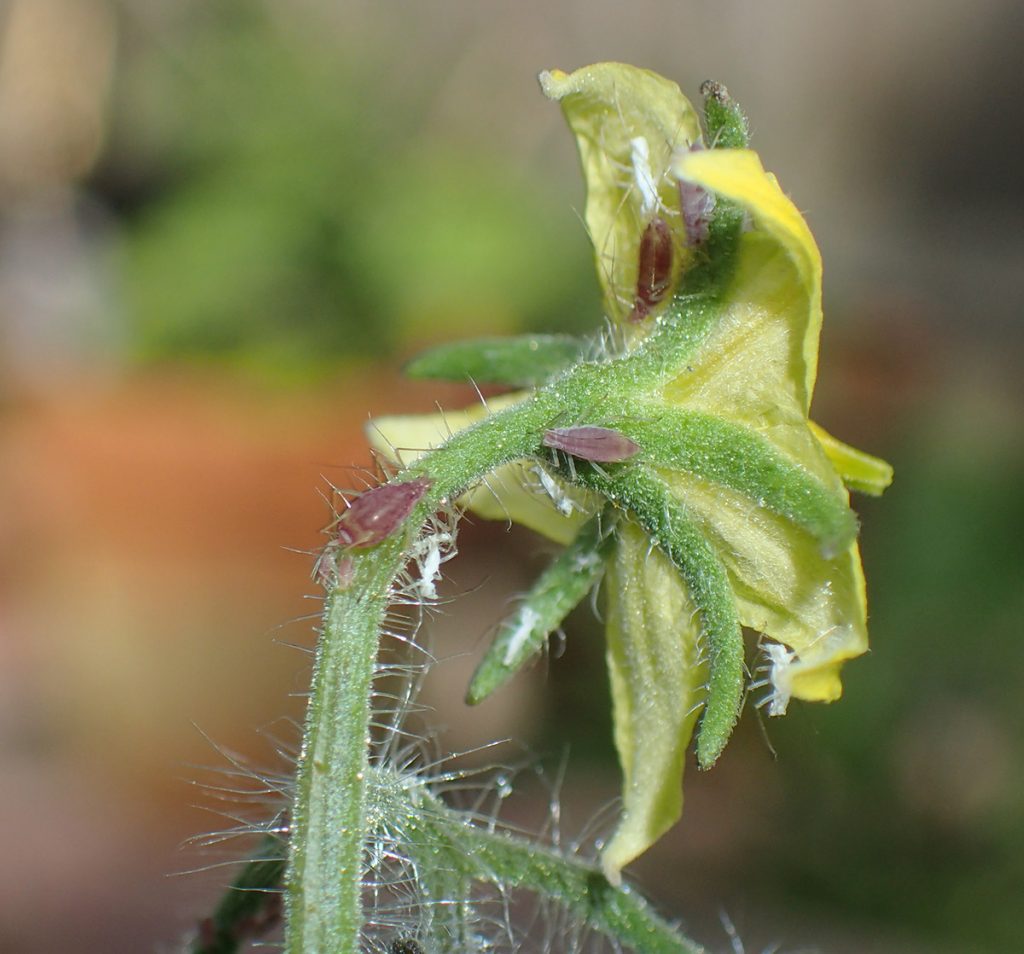
There was a time when I would rush to counteract these aphids attacking the first of my tomato flowers. Since I’ve started my insect photographing mission, though, I’ve learned a few things about the predators in my yard. Between hoverflies, long-legged flies, and lady beetles (though most of ours are invasive Asian lady beetles), aphids have a natural check in our yard.
I used to think the white aphid bodies alongside the living aphids were corpses. These are aphid molts. Like all insect larvae, they need to shed their exoskeletons before continuing to grow into their adult form.
I do worry when I see aphids on fruit flowers, but these were soon taken care of. The biggest impediment to a bountiful tomato crop was to be impending dry spells.
April 27, 2022
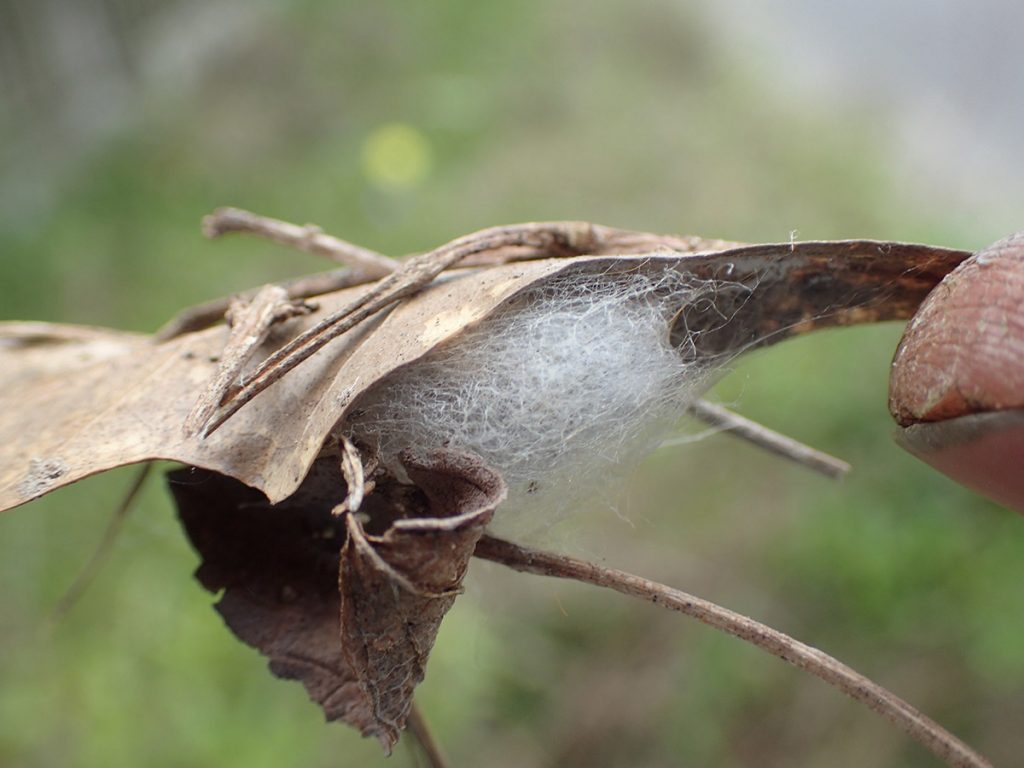
The first thing I notice in this photo is my grody gardening fingertip. The darkness under my fingernail speaks to a morning well spent.
I should spend more time turning over leaves and seeing what scurries out, or has sought shelter as it transitions between life stages. Earlier in the year we find moth cocoons of various shapes and sizes, and then as it gets warmer, we see more adult moths flying out. As April turned to May, I was straightening out a part of the yard and clearing out leaves.
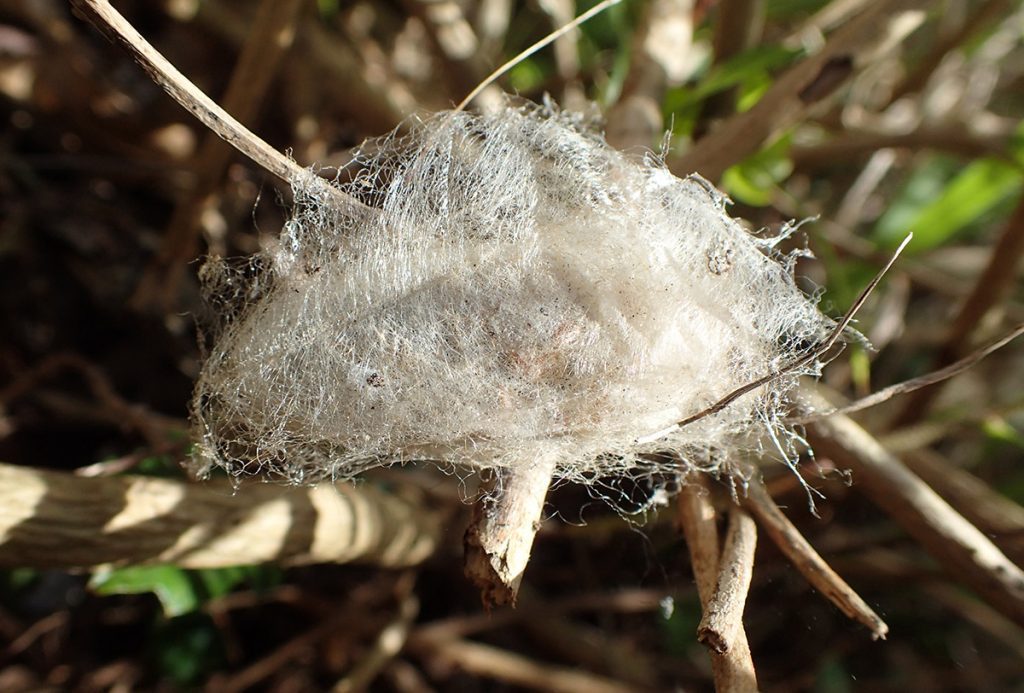
Googling “white fuzzy moth cocoon,” I see this resembles a tussock moth cocoon, about ten days after seeing a tussock moth caterpillar.
May 3, 2022- Bee season begins
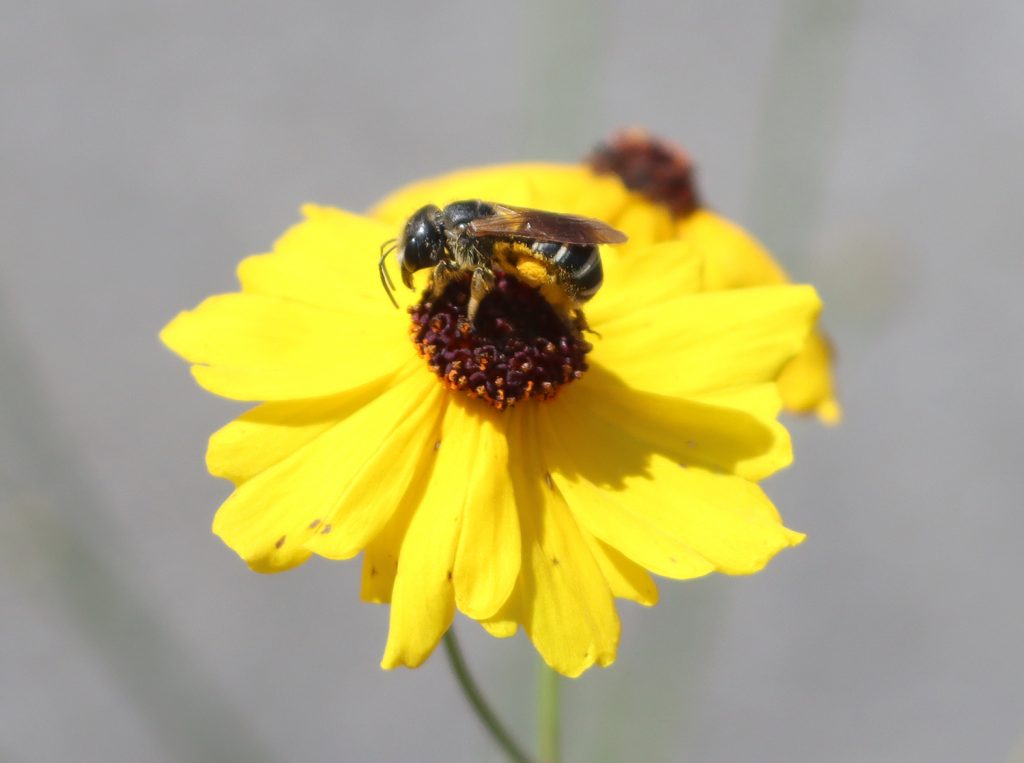
Yes, we’ve been seeing bees for a few months by now. But two of those were early flying species; both the blueberry digger bee and the mining bees are through flying for the year. We’ve had carpenter bees since February, but bumblebees have been mysteriously absent from the yard so far.
On this day, I saw our first Poey’s furrow bee taking advantage of all the Coreopsis flowers that have started to bloom. This is a common bee for our yard, and it’s usually around through the start of fall.
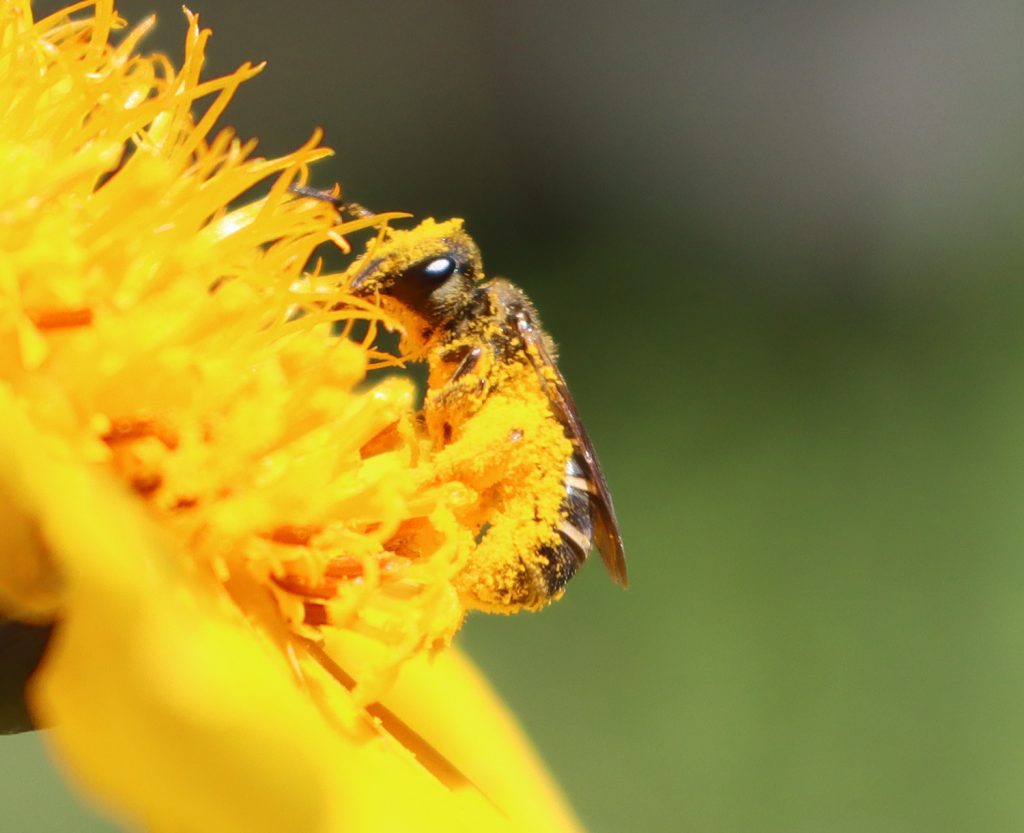
We had two species of Coreopsis flowering in early May. Lance-leaved Coreopsis has larger, prettier flowers than Leavenworth’s, but it makes far fewer flowers. The blooms last a few days and die off, and sometimes plants lie flowerless for stretches. And when a hot or dry stretch hits, the plants mostly quit making flowers for the year. At least, that’s how they behave in our yard. Leavenworth’s are more reliable.
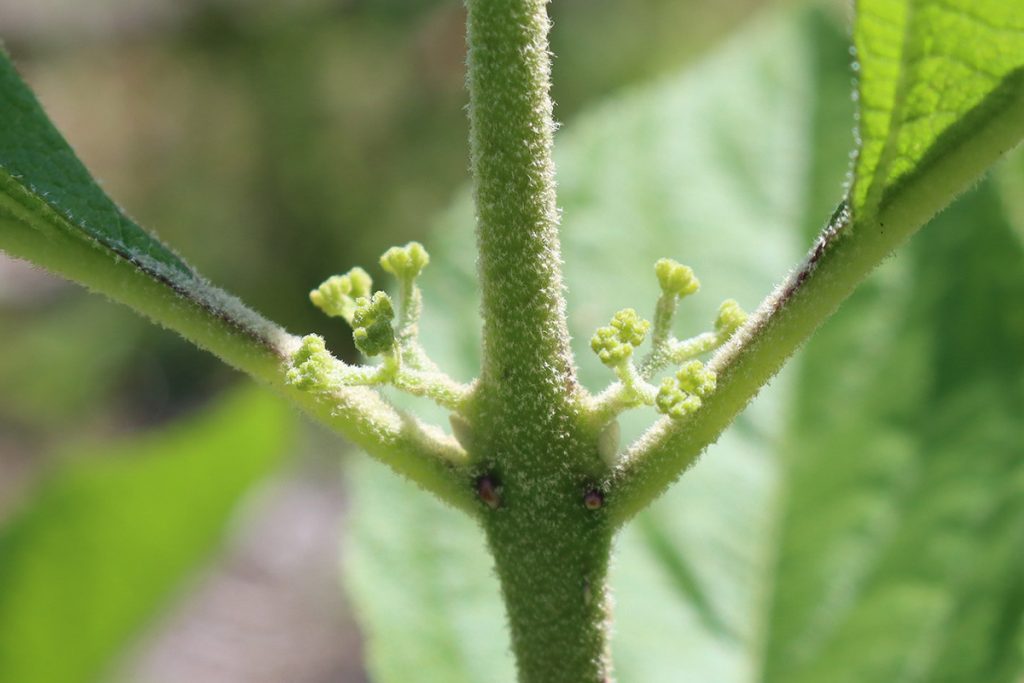
When we compiled our list of 30+ plants for a bee friendly yard, Multiple interviewees mentioned beautyberry. I had never considered it a pollinator plant, but then I’d never seen its flowers. What bees would visit these flowers? I wondered.
Also, because I’ve so often seen passionvine growing on beautyberry bushes, I planted one on either side of this, our largest bush. It promised to be a year of many new sights in the yard.
The yard is different this year
Since moving here over a decade ago, the little bit of front yard next to the driveway was shaded by a laurel oak. Last year, the tree fell (on both of our cars), and sun reached the ground. I paid to have the stump ground, knowing I would plant something here. But what?
While my wife and I debated what tree to plant there, a ring of shrubs grew around the stump. Some were new to the yard, like beautyberry and pokeweed. We also had fanpetals, dog fennel, and Bidens alba. All of these are native, and all have wildlife value. I planted wildflowers and threw seeds down in and around the stump soil, and I now have a large new pollinator area in the yard.
May 6, 2022
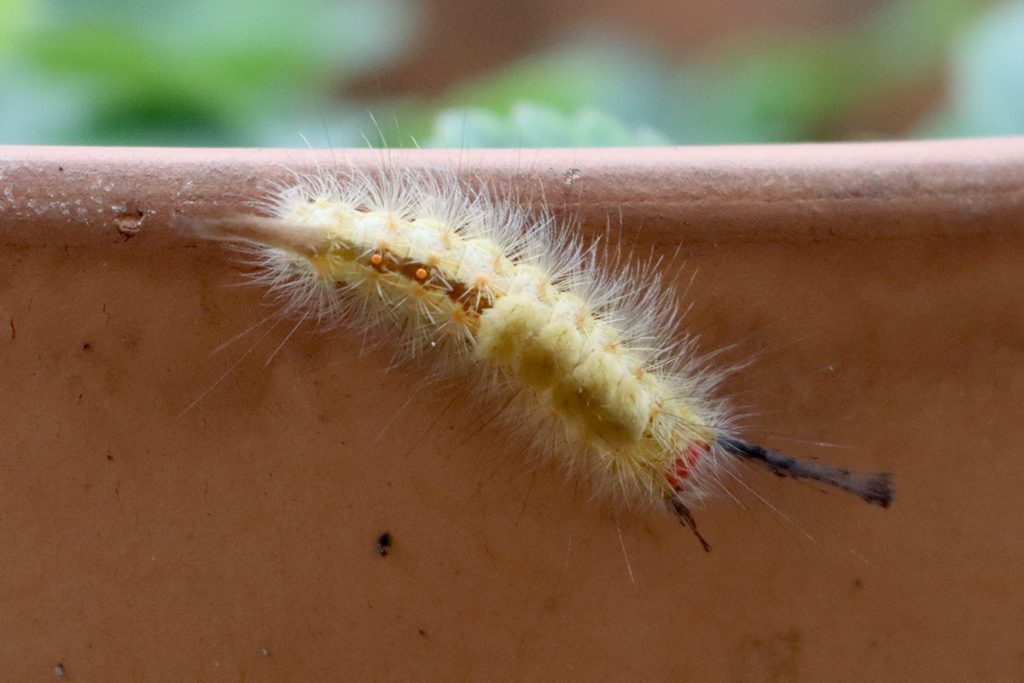
This doesn’t look quite like the white marked tussock I saw last month. Looking at iNaturalist observations for Leon County, my best guess is definite tussock moth, though I feel anything but definitive about it.
May 22, 2022
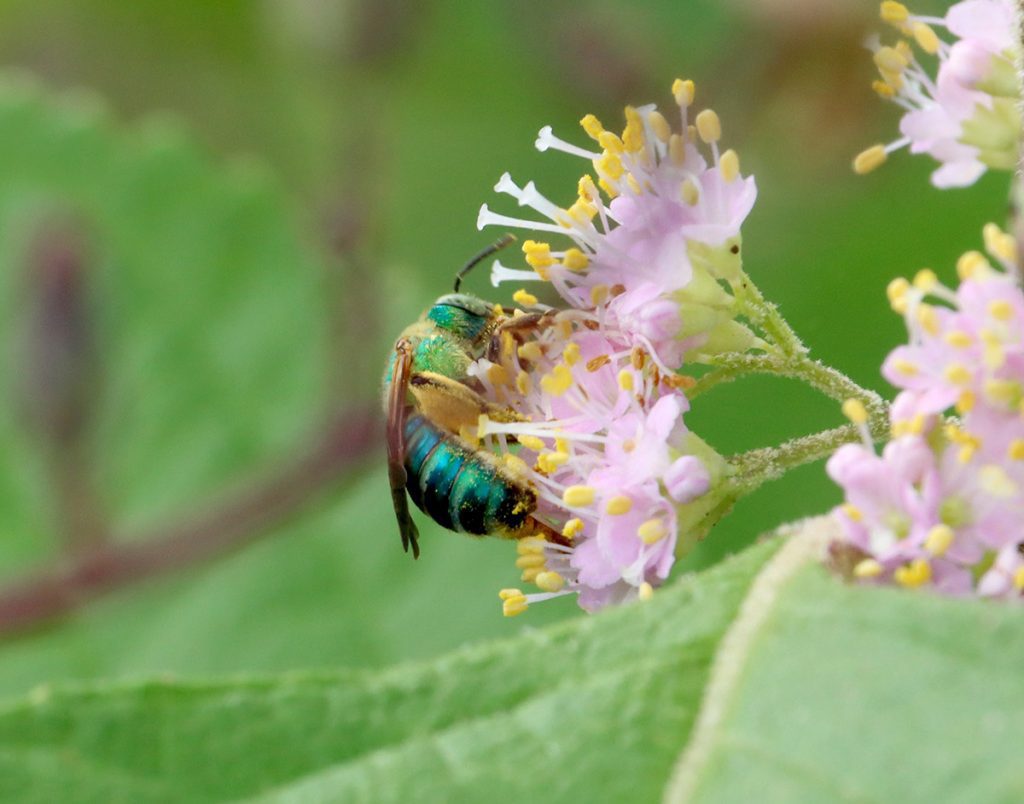
My first sighting of the year for this species, and on a flower I’d not seen in our yard before today.
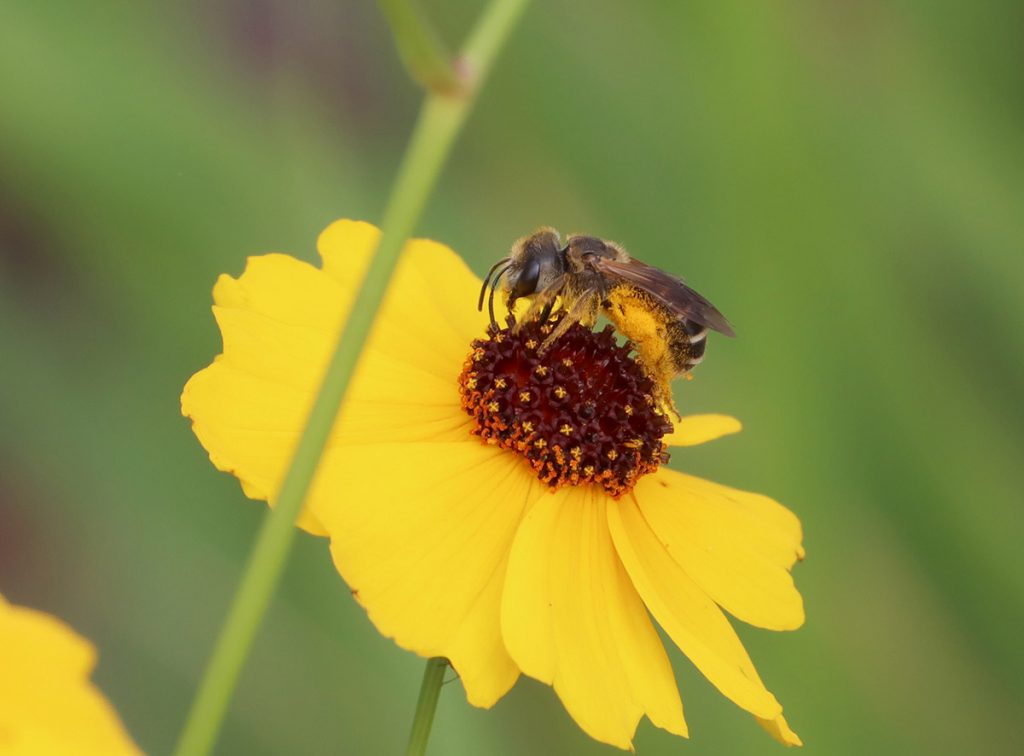
Here’s a Poey’s furrow bee again.
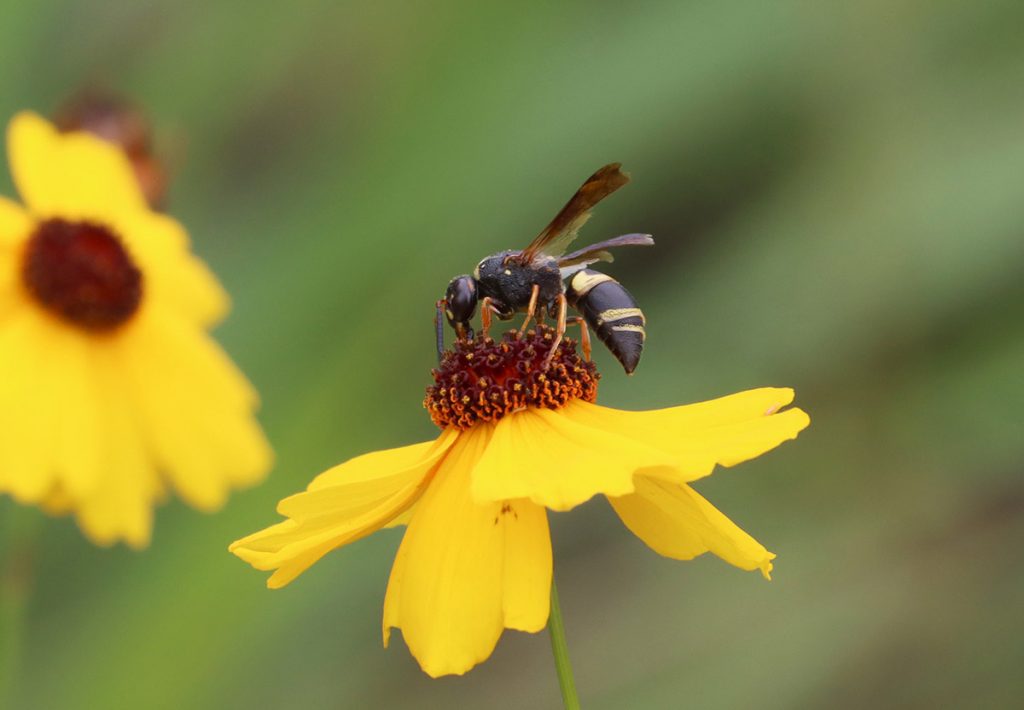
There are several mason wasp species observed on iNaturalist in Leon County. Searching through these observations, I count six from the Euodynerus genus alone.
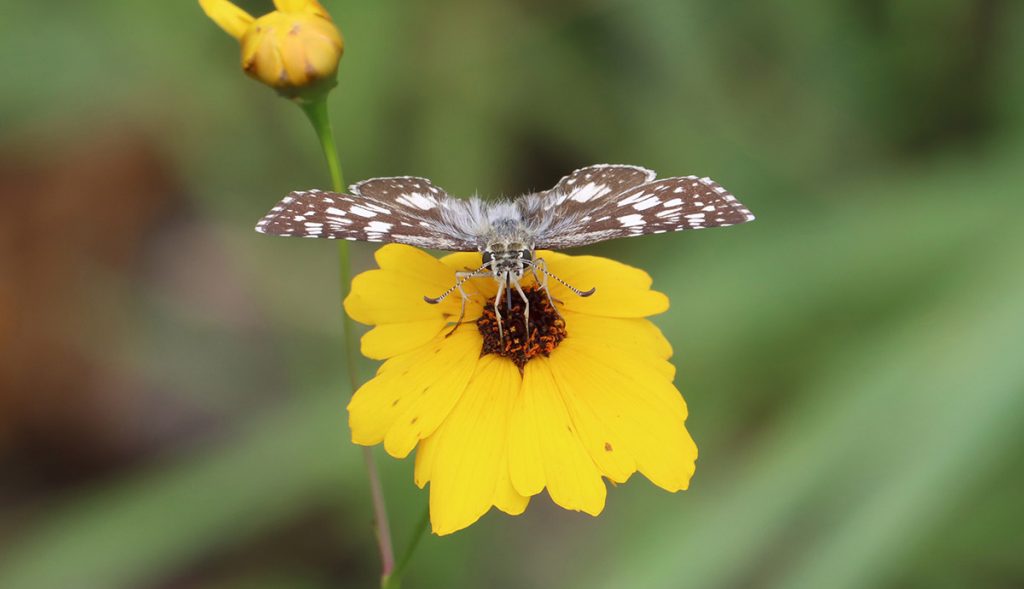
I’m fairly certain of the ID. The female tropical checkered skipper looks similar, but the tips of its wings are smudged brown where the white-checkered keeps the white checkered pattern all along its wings. One of the many beneficial weeds I let grow are fanpetal shrubs (Sida genus), the larval food host for checkered-skipper butterflies.
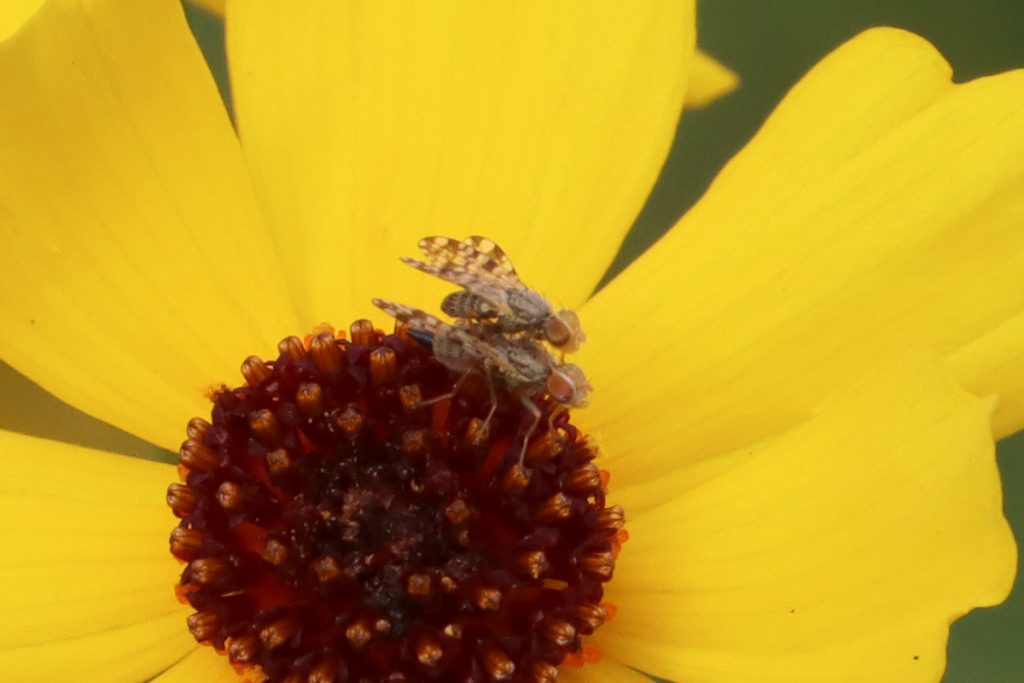
The Leavenworth’s Coreopsis received heavy traffic today, and not just from pollinators.
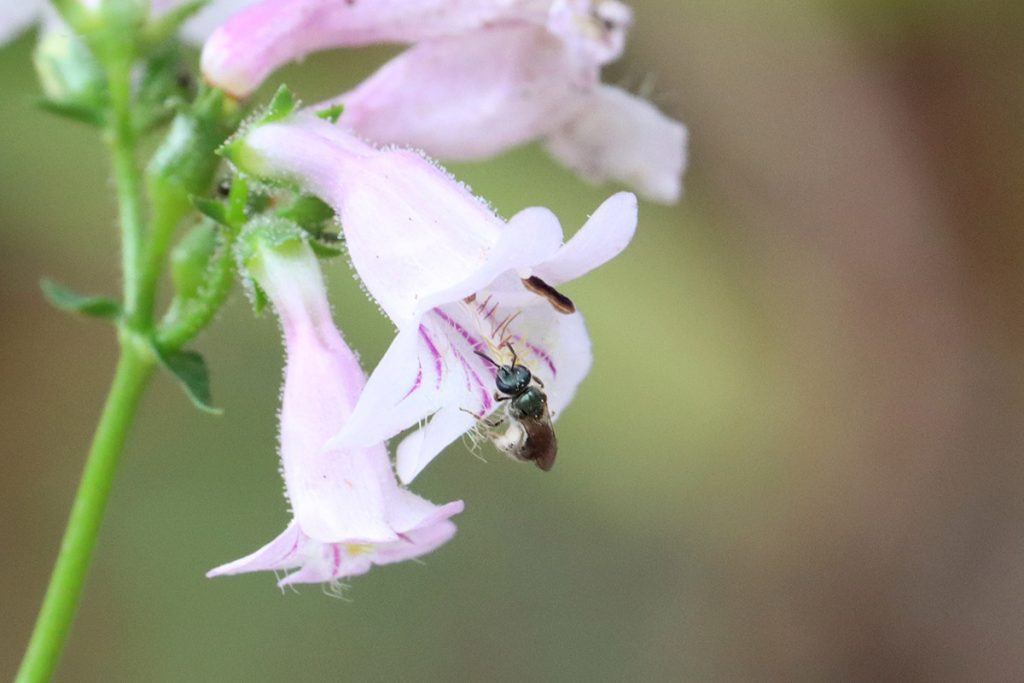
That’s three species of bee today, all sweat bees (Halictidae). This small bee was visiting a beardtongue (Penstemon), a flower that blooms for a couple of weeks in mid-spring. I was able to grow a few from last year’s seeds, though, like their mother plant, they did not bloom in their first year.
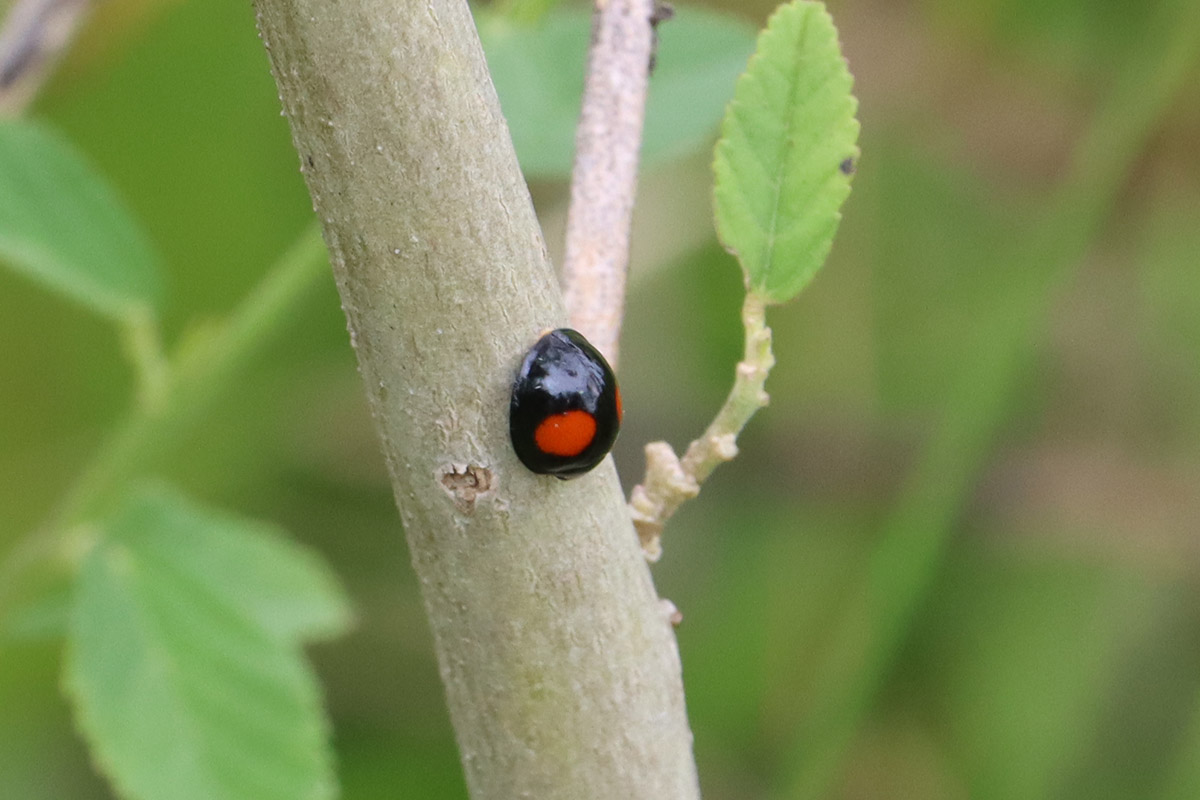
So many of the lady beetles we see are invasive Asian lady beetles; here’s a native.
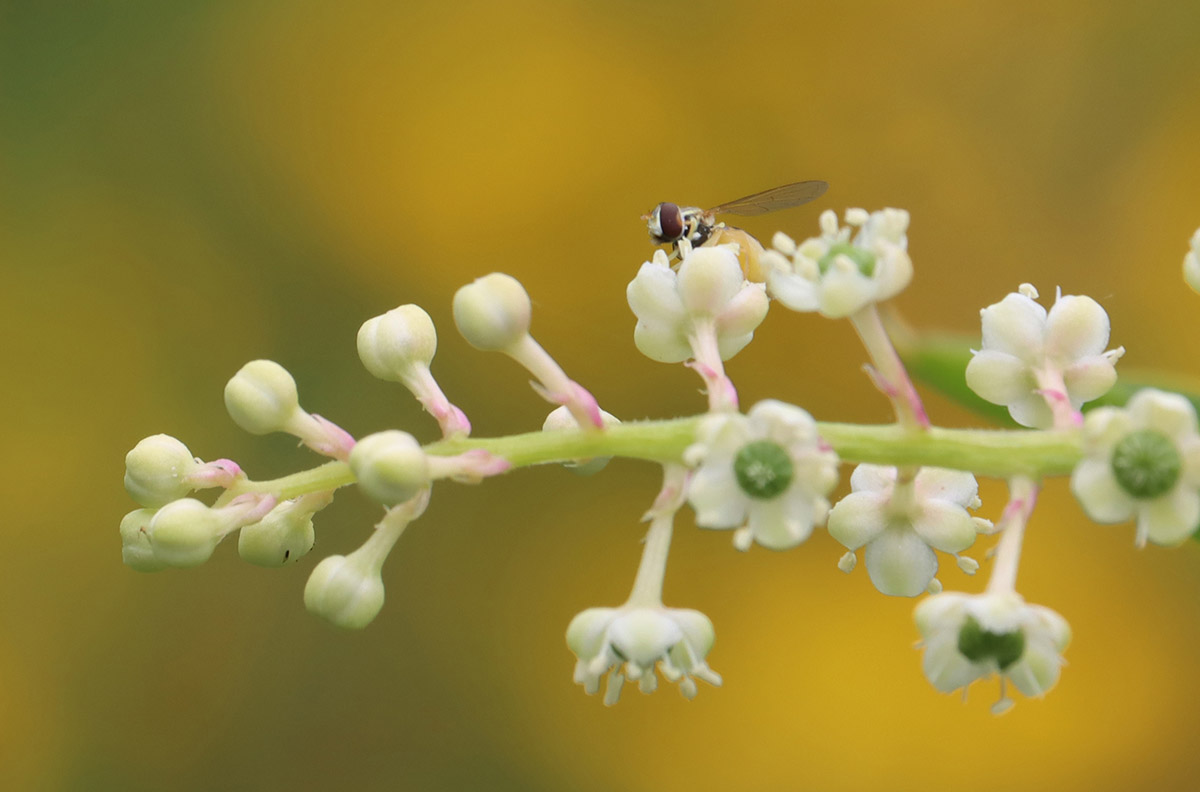
This hoverfly quickly flew away, so I don’t have a more specific ID.
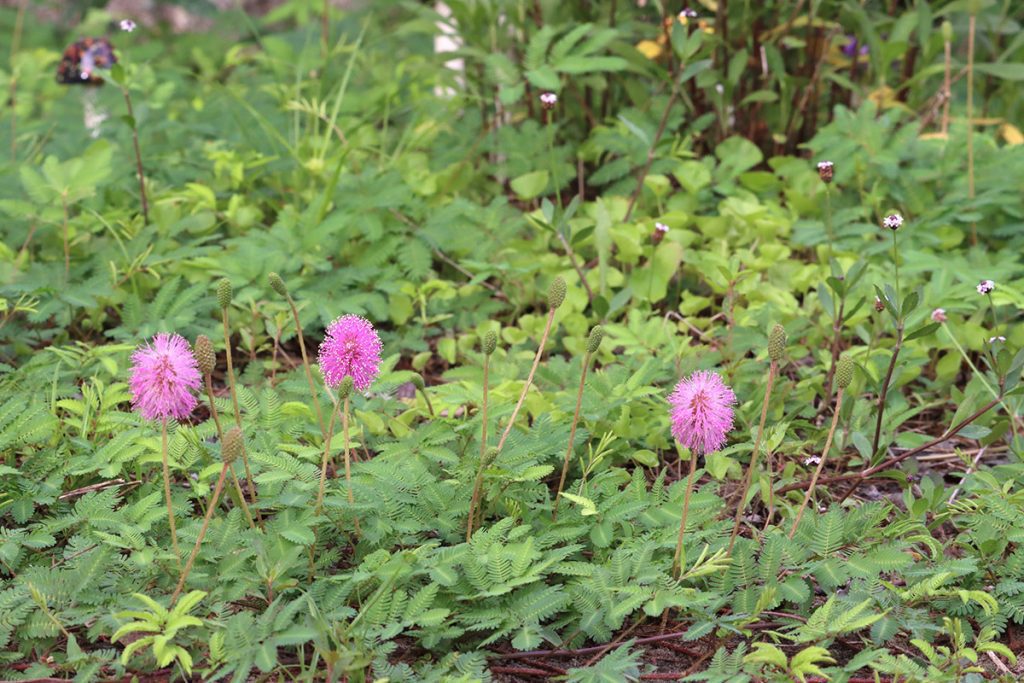
Lastly for the day, our native groundcover plants are starting to bloom.
May 23, 2022
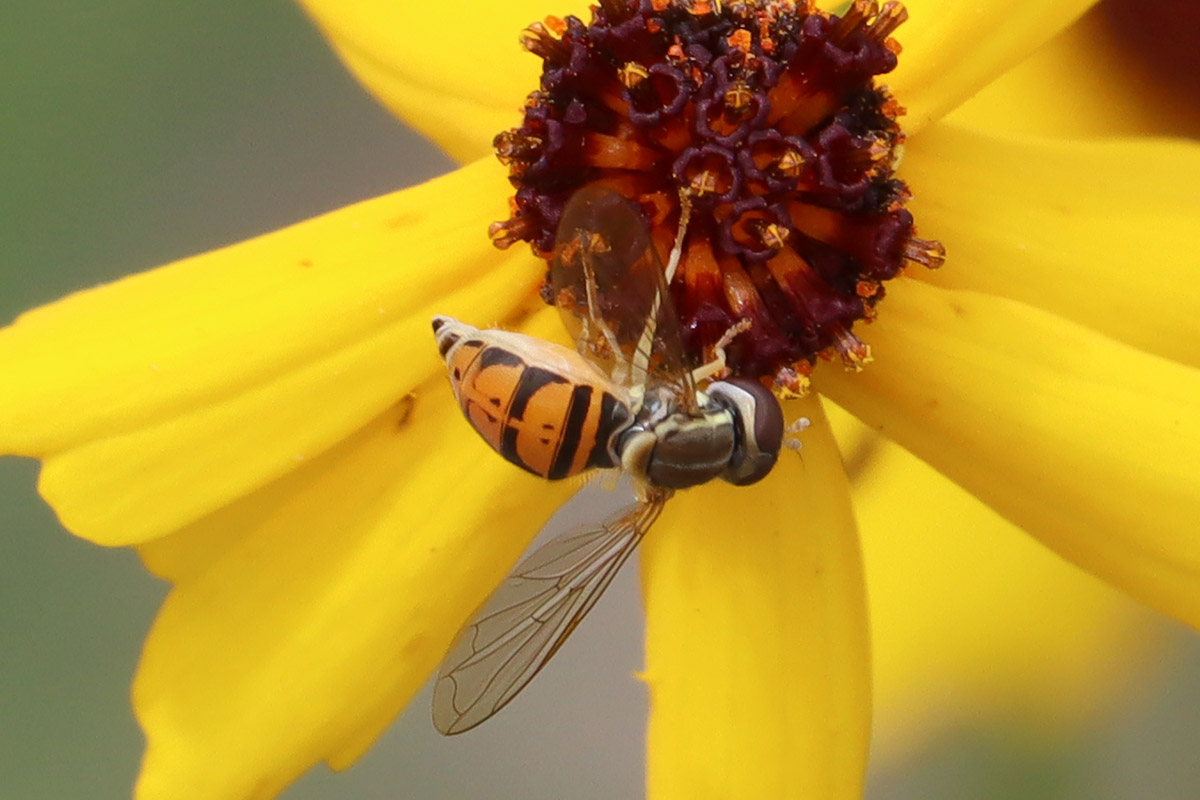
Yesterday I took photos of bees, butterflies and wasps pollinating the Leavenworth’s Coreopsis. Now here’s a pollinating hoverfly. Several species of Syrphidae visit our yard. As I often write, these are some of my favorite insects; the adults are bee-mimicking pollinators and their larvae eat aphids. I promise that’s the only time I write that in this post.
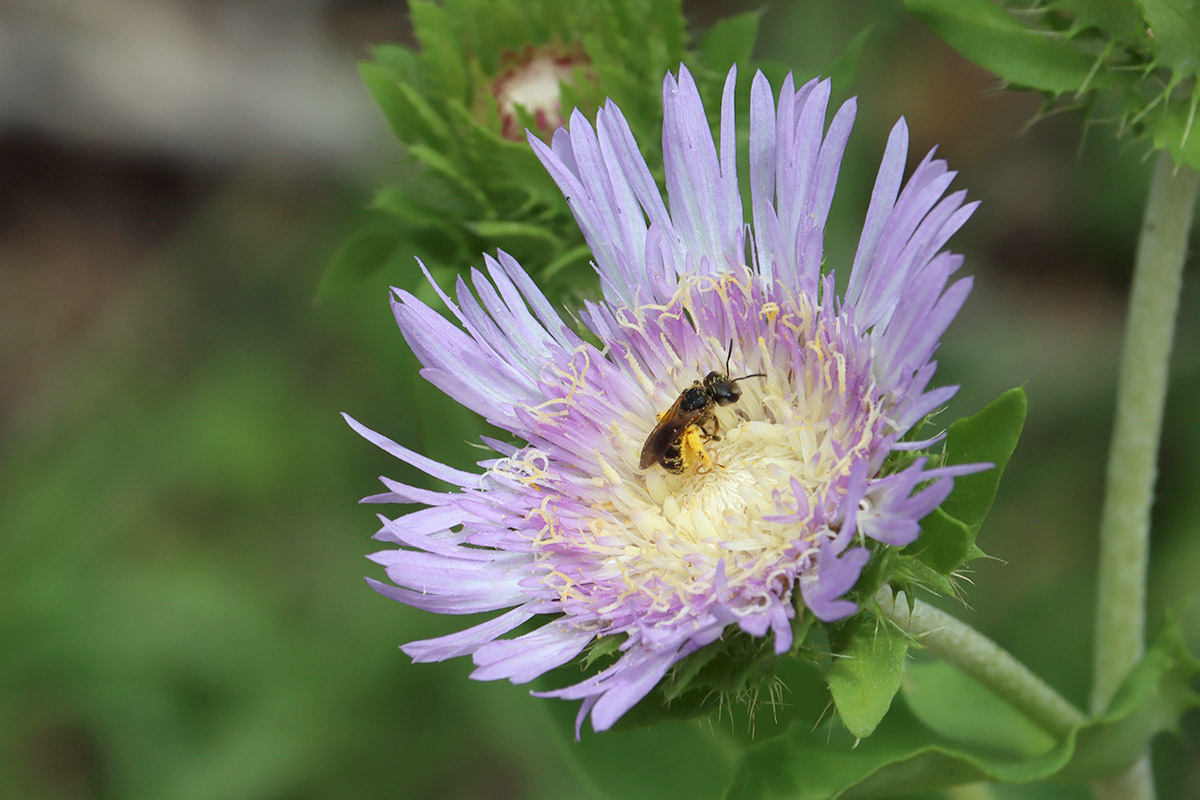
The Poey’s furrow bees have been active, here visiting one of the prettiest native flowers in the yard.
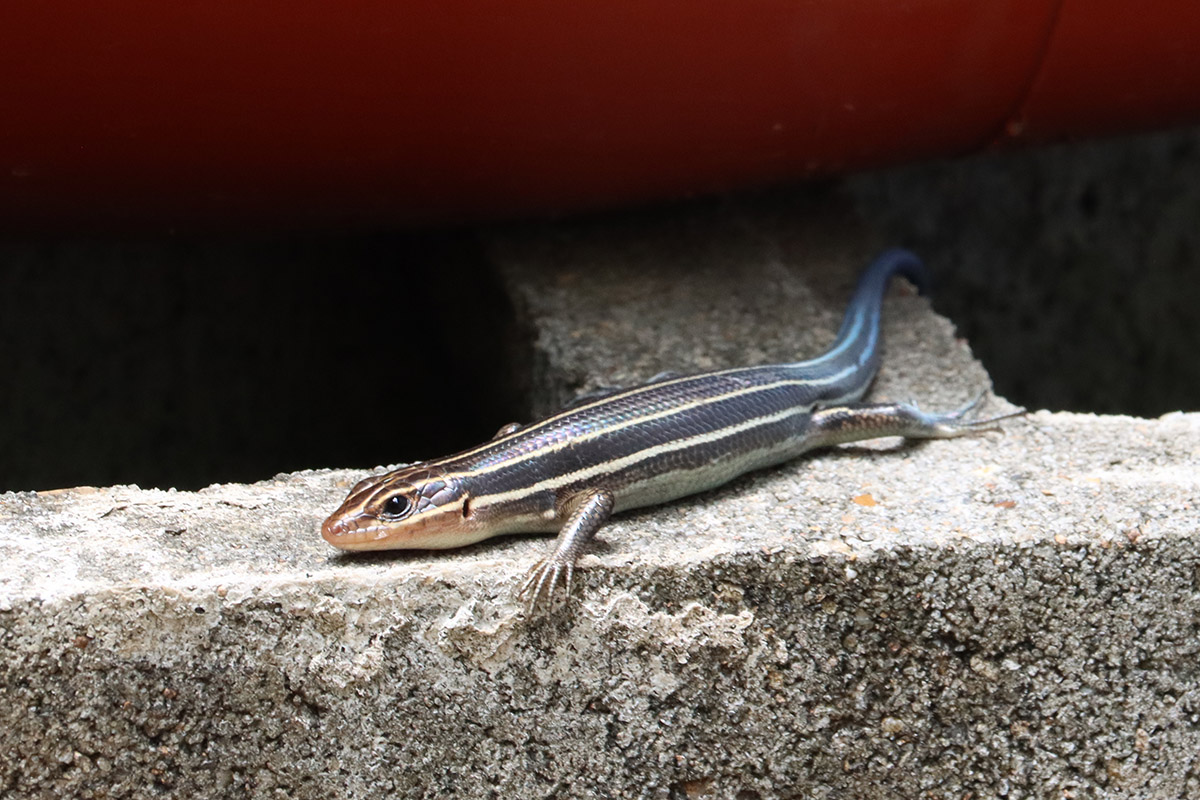
Starting in 2020, we’ve had a skink spot around this time of year. A female will regularly lay upon a spot, and will stay in sight of humans unless they approach her directly. In 2020, it was the back steps. In 2021, it was the brush pile.
Within a month or two, I end up seeing baby skinks within the vicinity of the spot. I think there might be a skink’s nest in the cinder blocks holding up our rain barrel.
May 29, 2022
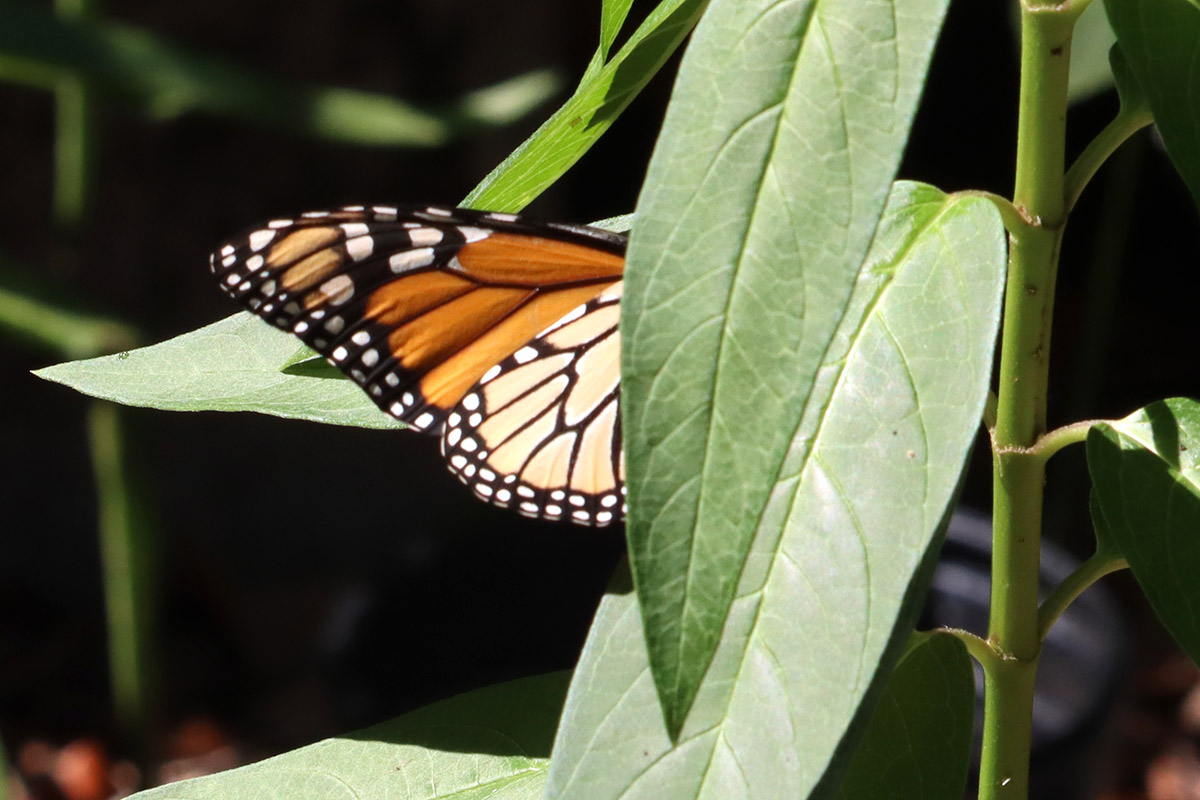
I need to find a way to better track the monarch migration in a given year. There are years where they’ve started laying eggs on our milkweed at the very start of spring, and other years where we don’t see them until July. In one of those years we visited Massachusetts in early July, and I was seeing monarchs there, over a thousand miles to the north, before they’d visited our yard in Tallahassee. I’ve had heavy traffic periods during which friends just to the north in Thomasville say they’ve been absent.
Anyhow, in 2022, I first spotted a monarch butterfly laying eggs on May 29.
June 1, 2022
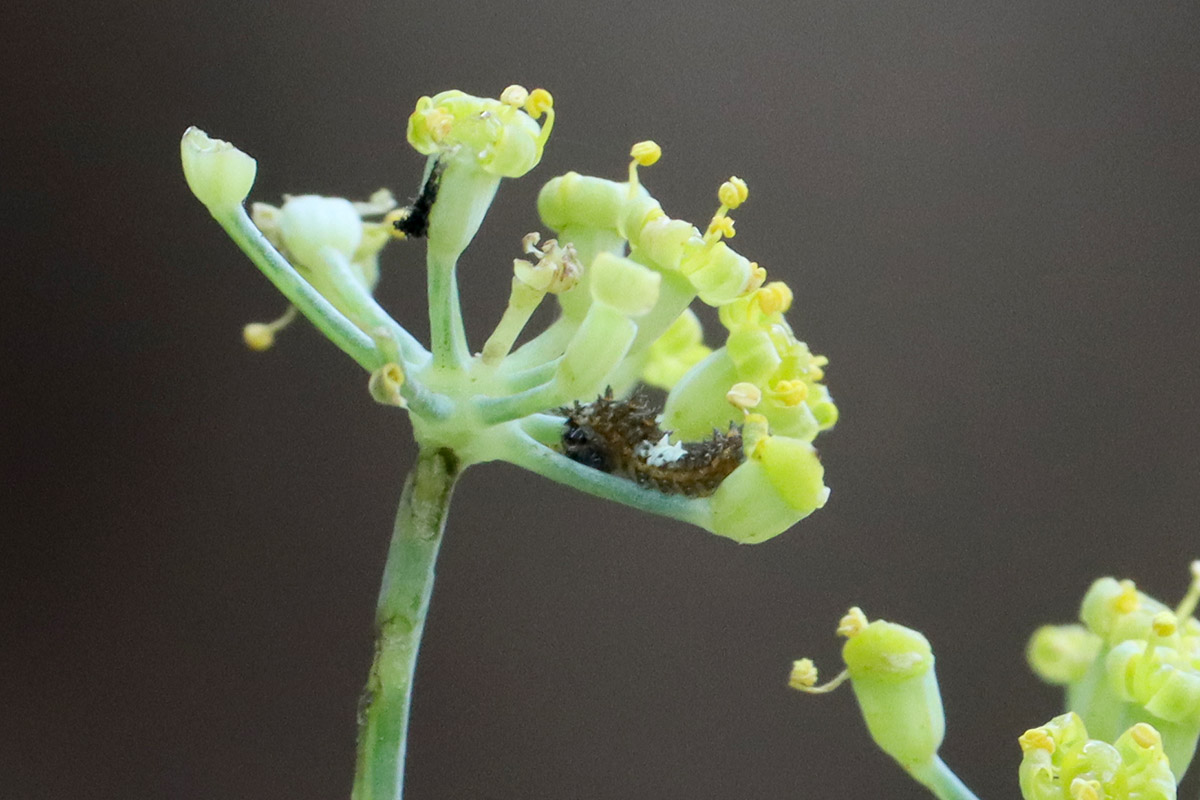
Three years ago, we had three black swallowtails on this very fennel plant, and overnight, they disappeared. That ended a two or three year run of consistently hosting black swallowtails. I missed them. I wonder whether adults return to where they host as caterpillars; if so, losing all of them at once may have broken a lineage in our yard.
Watering the plants one morning, I felt like I’d been visited by an old friend. Just the one, not several as it once had been. I fought the urge to put it in an enclosure, at least right away. I’m still committed to letting natural selection play out. My job is to provide food and space, and set the stage on which the drama plays out.
I think this is a second instar caterpillar. If you see the black smudge on the topmost flower, that looks like a molted skin. Black swallowtails spend a lot of time in the flowers of the carrot family plants their caterpillars eat.
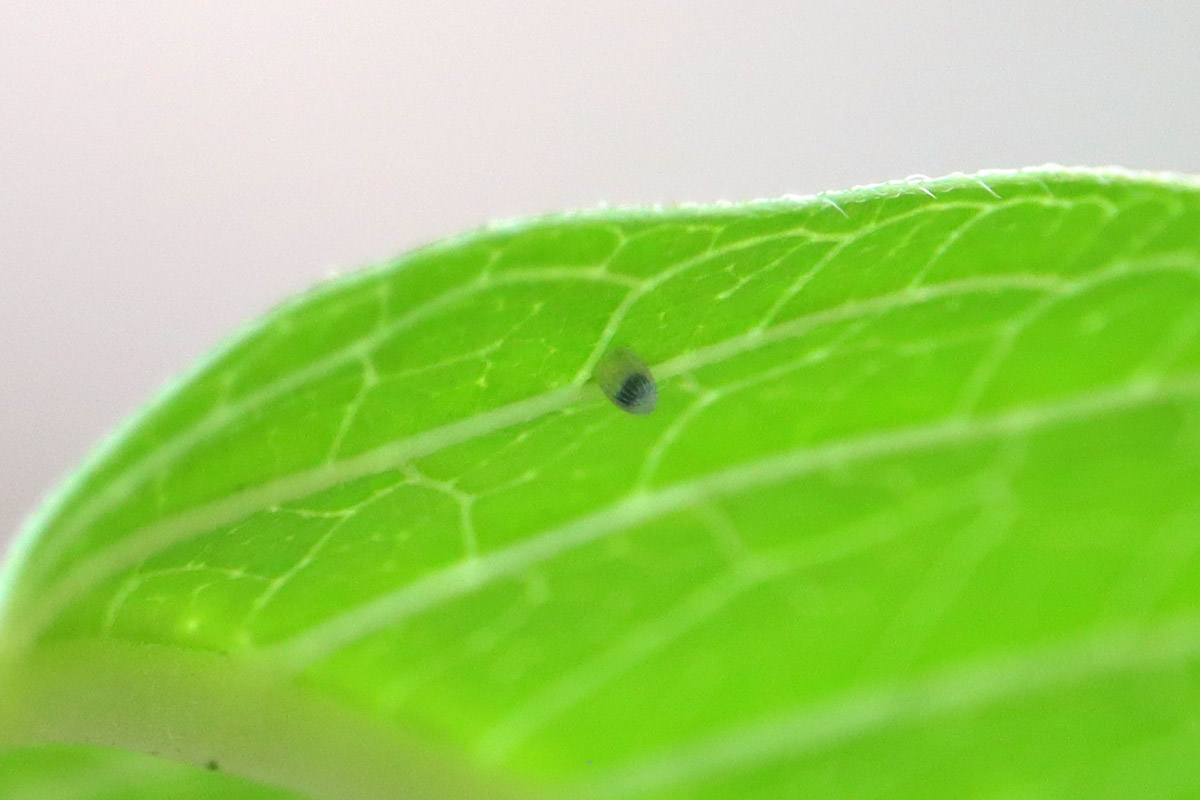
Seeing the black swallowtail reminded me that a monarch had visited the milkweed just a few days before. This monarch egg is becoming transparent, and you can see the caterpillar within, getting ready to eat its way out.
June 2, 2022
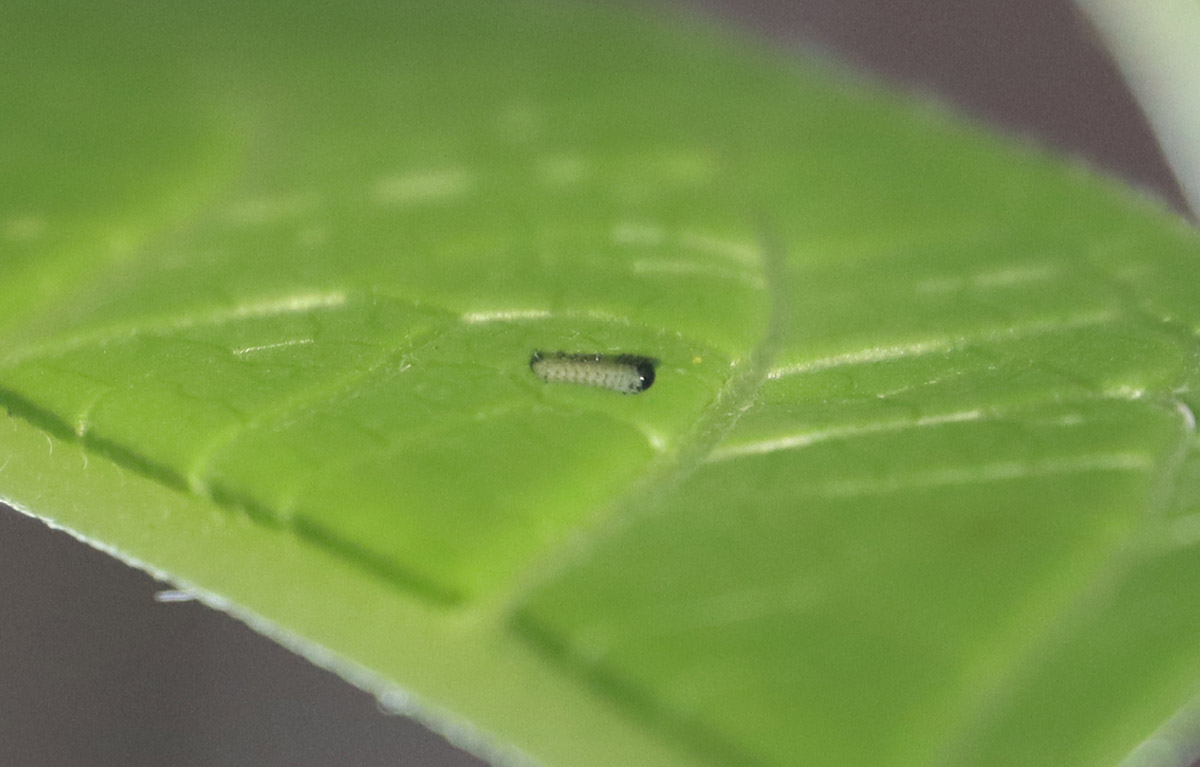
Monarchs don’t usually lay just a single egg, but so far I’ve only seen the one. I haven’t had time to scour the plants, and some butterflies lay their eggs in discreet places. It’s to their advantage to do so.
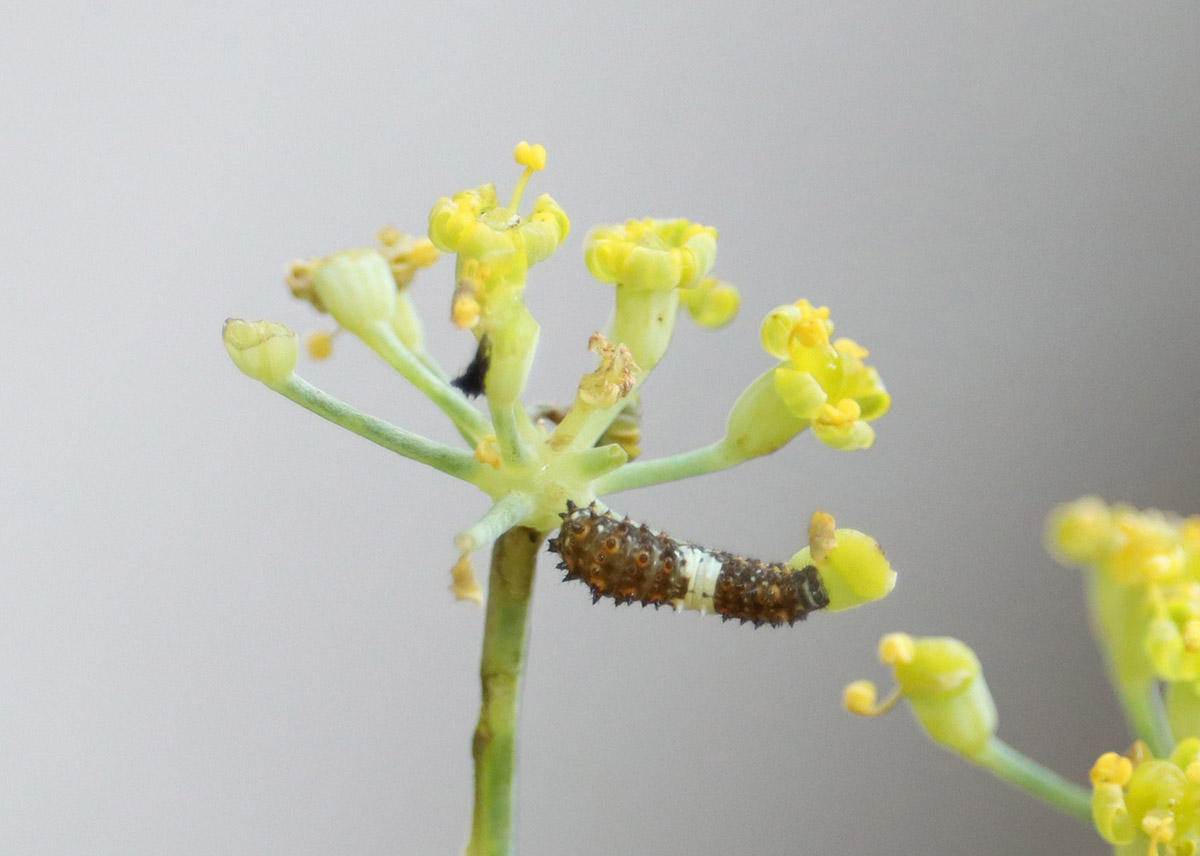
Buying more fennel at Native Nurseries around this time, I asked a question of the person attending me. I had noticed that, although I’ve had native Apiaceae plants in the yard, black swallowtail butterflies have always laid eggs on our fennel, a cultivated food crop imported from Europe. And I’d seen them on friends’ dill plants as well.
Seeing they had caterpillars on fennel in an enclosure, I asked if this was the same at the nursery. He said that in the nursery and in his yard, they preferred the imported food plants. Have we conditioned them over time with the plants we’ve made available?
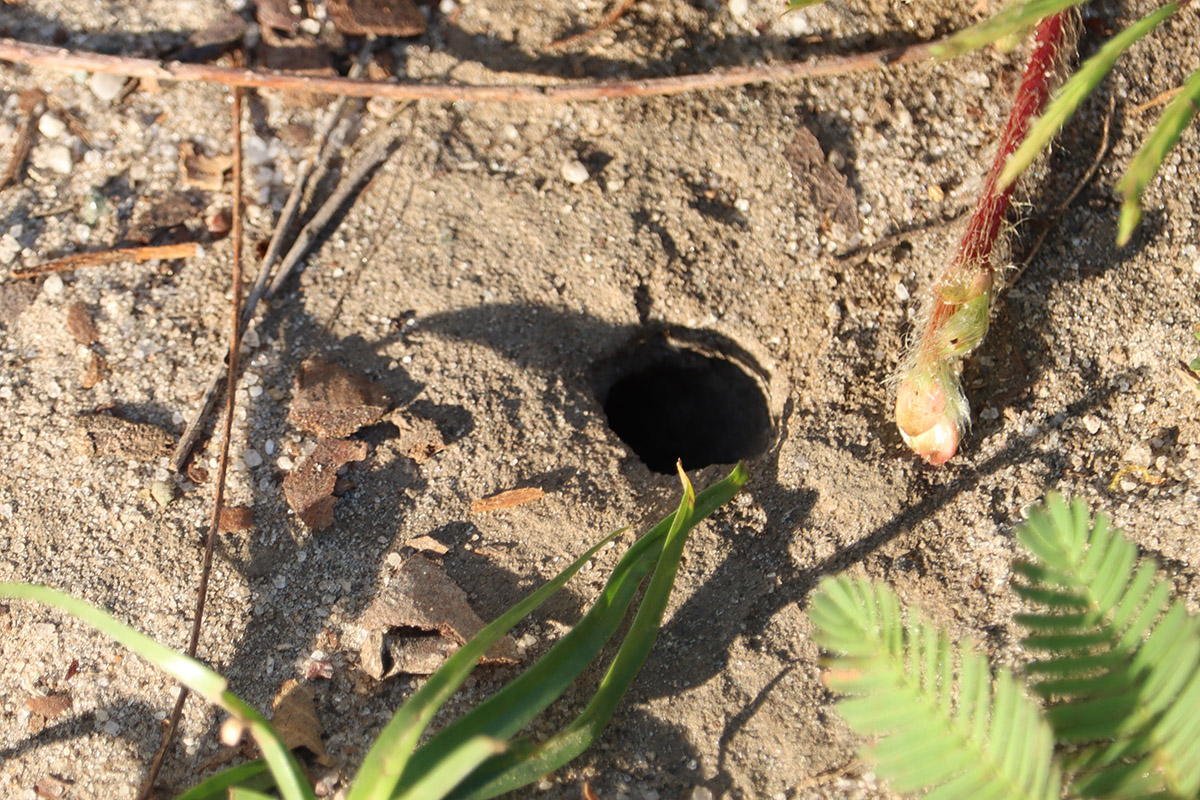
As we see more bees and other insects, I see more holes in the ground. You can see the sunshine mimosa starting to grow around it, and within a few weeks this hole will be under the cover of leaves. Unlike turf grass, mimosa vines over the ground instead of crowding it with roots, so insects still have the access to earth they need to nest.
June 3, 2022
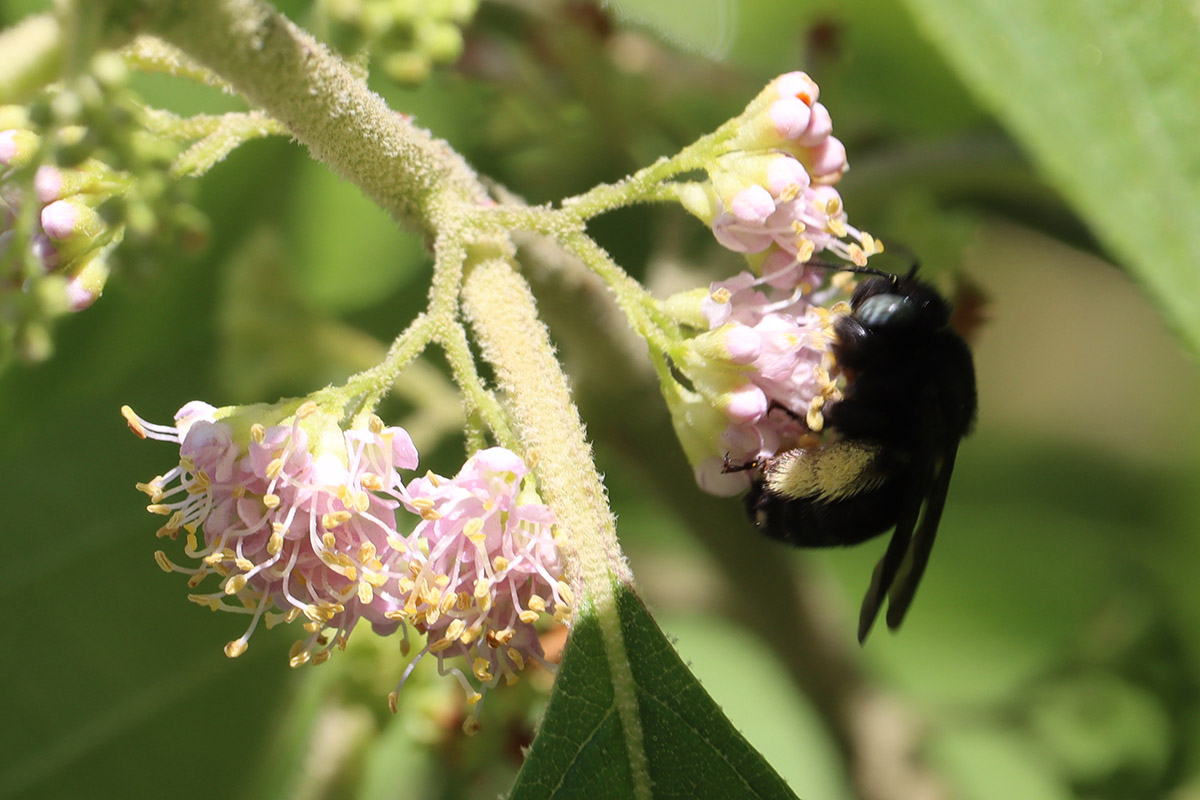
This is the first longhorn bee I’ve spotted in the yard this year, and the second bee species I’ve spotted on the beautyberry. I see this bee in the yard as early as mid-May and as late as early July. It’s another one of our seasonal indicator bees.
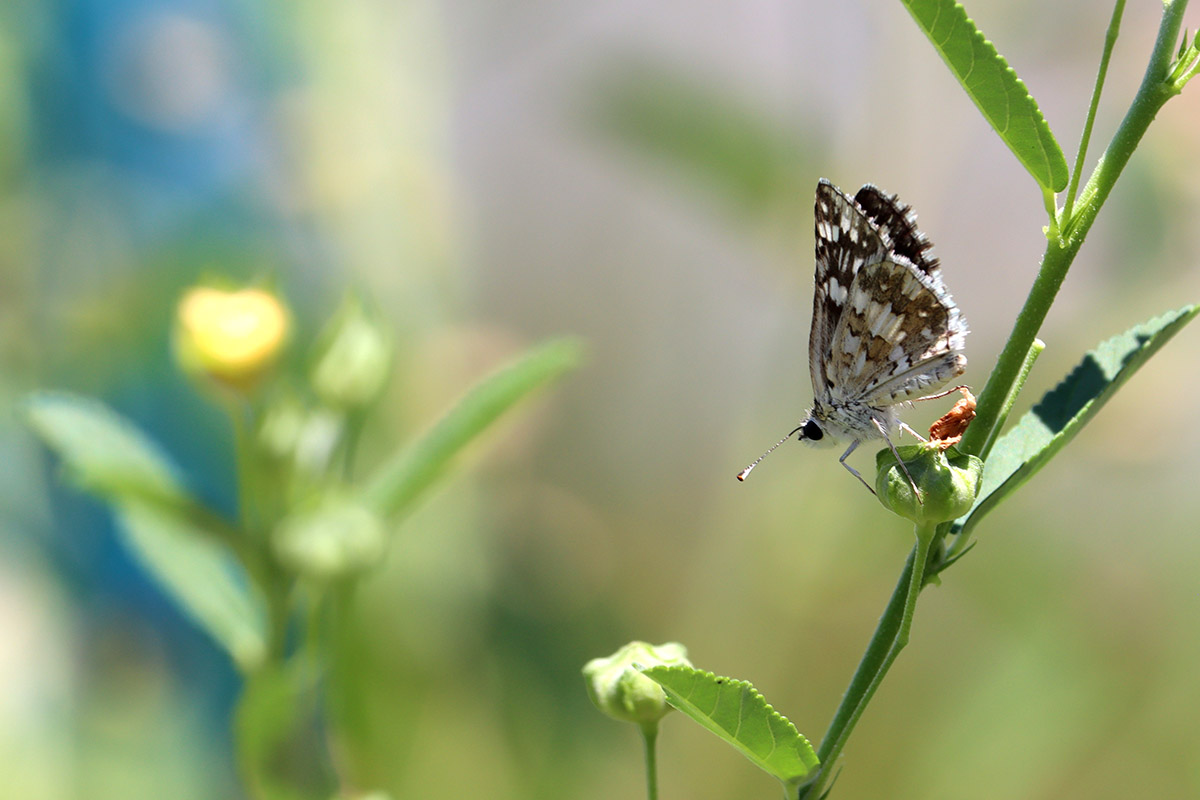
Here is a checkered skipper on its larval food host plant.
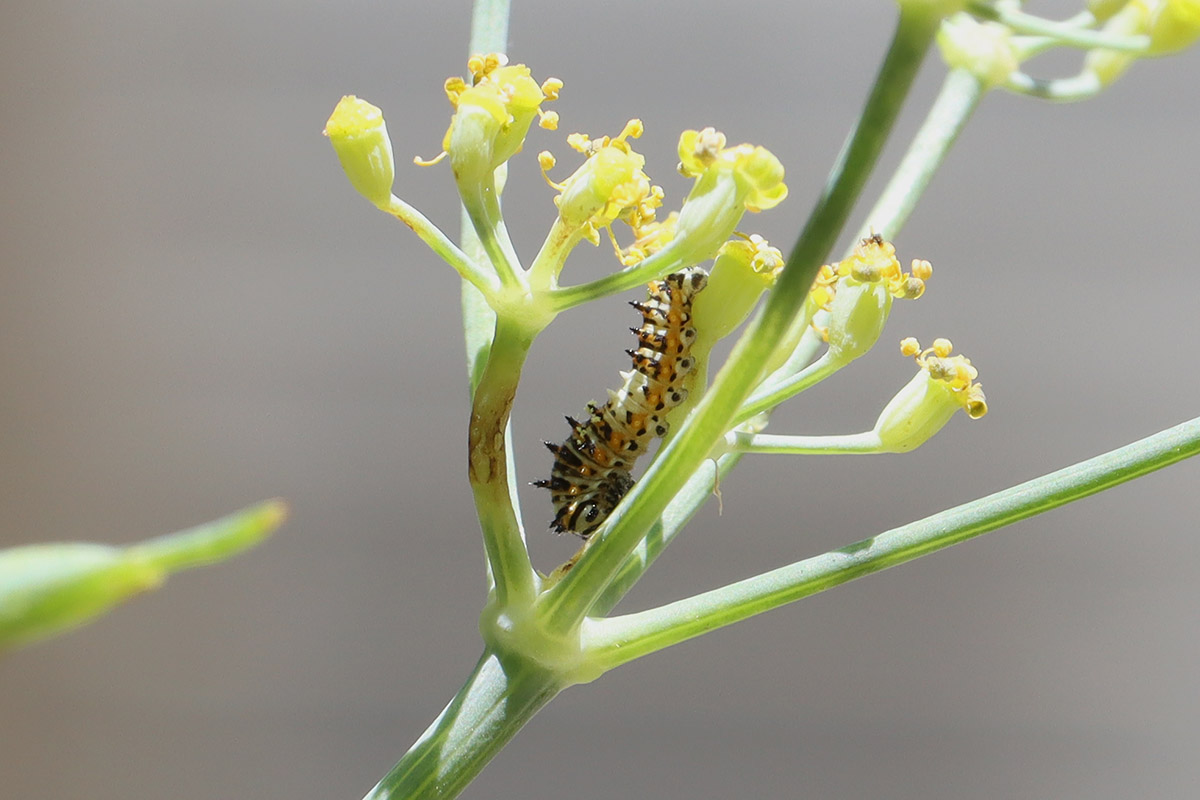
Our swallowtail caterpillar has molted again.
June 6, 2022
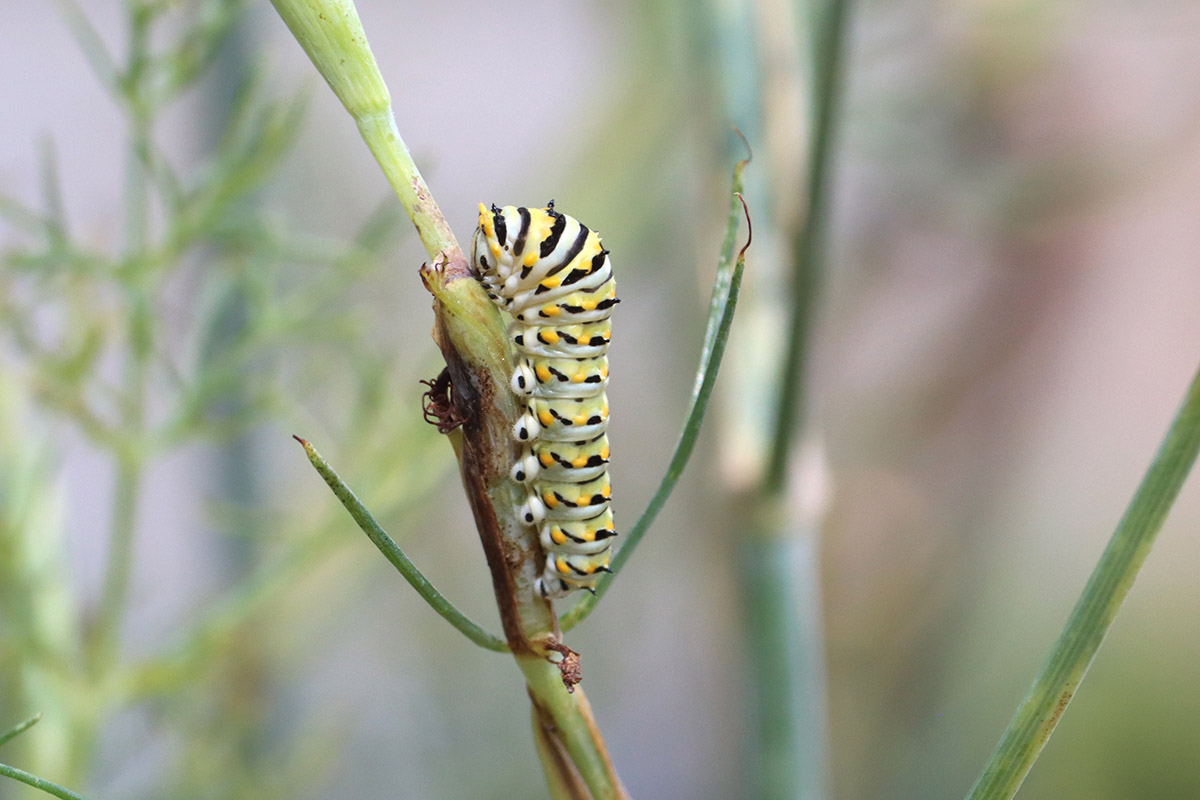
Once again, our swallowtail caterpillar has molted. You can see the vestiges of spines; in its final phase, it will be entirely smooth.
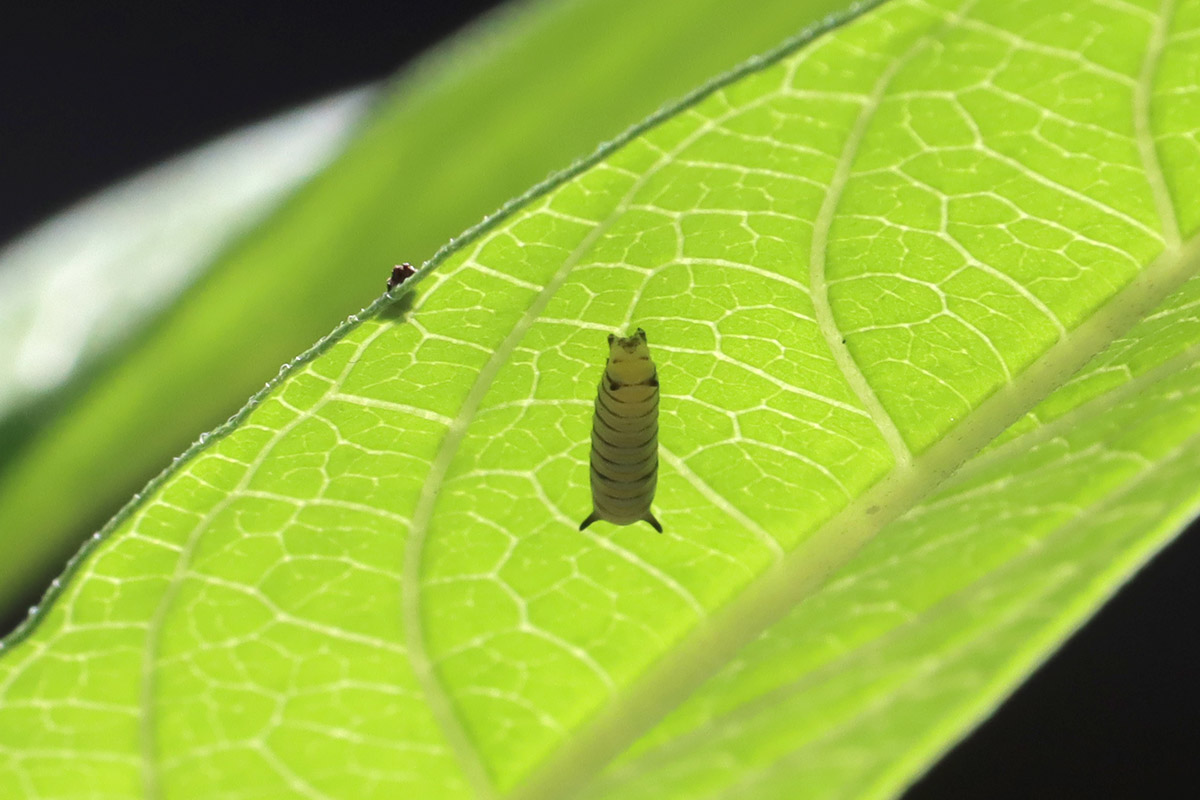
Before I move on to our many bees, let’s check on our monarch caterpillar. If this is the one that hatched just after the swallowtail, it is growing much more slowly.
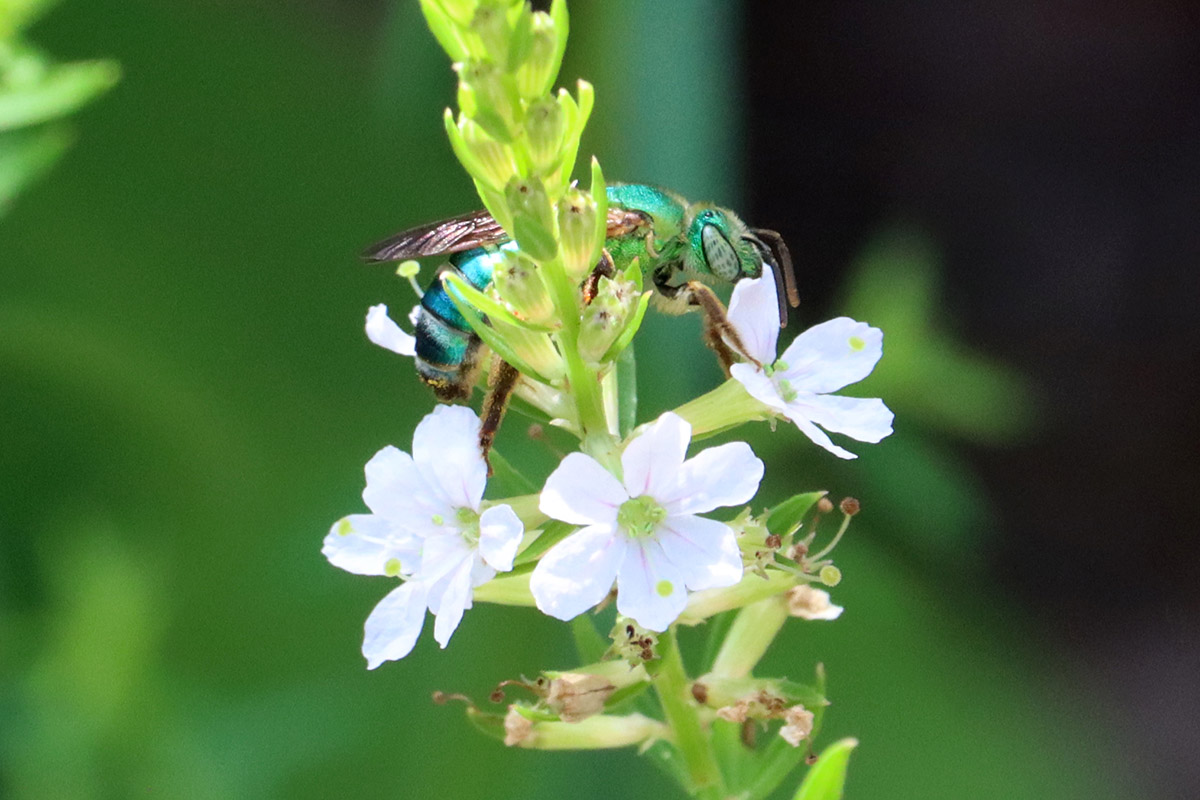
A flower that has been a staple in the yard over the years is now in bloom. It’s a favorite of the sweat bee species we see.
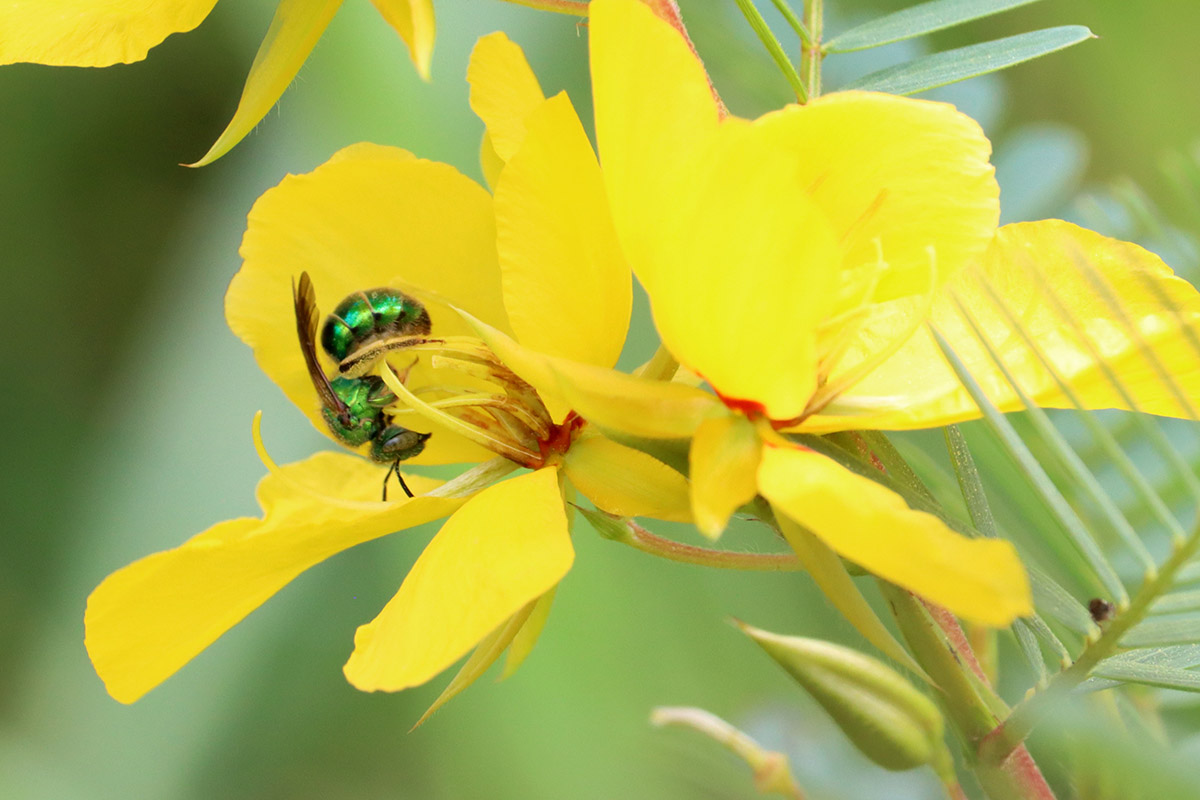
This one is visiting a new flower in the yard- partridge pea. It grew from a seed collected a few miles away in the Munson Sandhills. A few months ago I filmed our segment on bee friendly plants, and interviewed Florida Native Plant Society’s Lilly Anderson-Messec there. She plucked a seed pod from a plant and told me that they’d grow easily from seed.
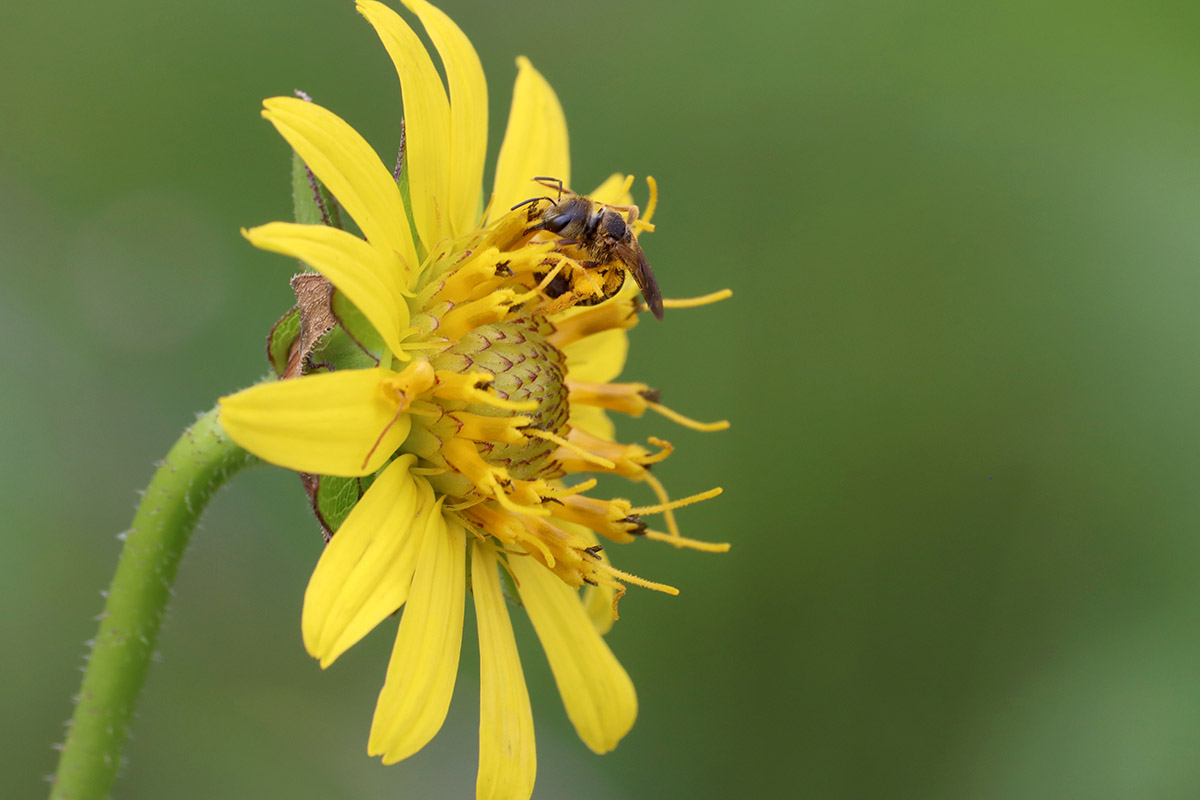
Another staple flower is in bloom and receiving pollinator love.
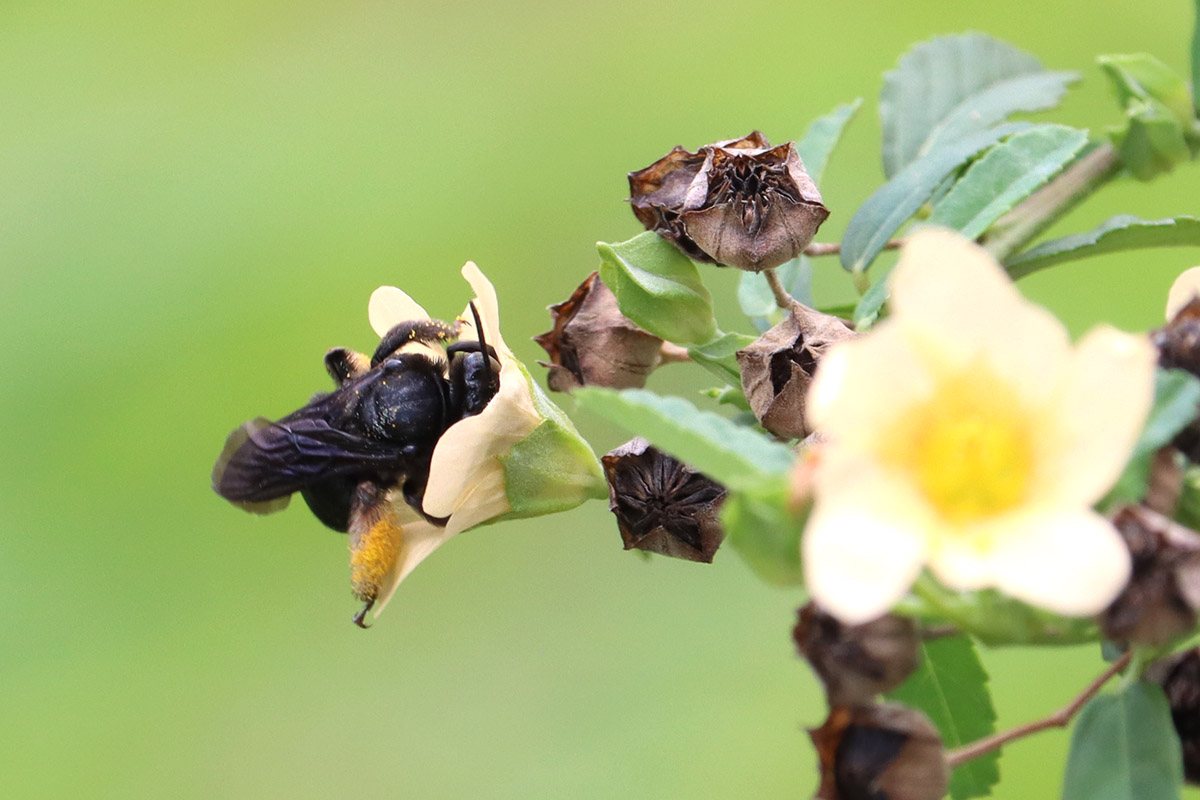
Fanpetals are a favorite of longhorn bees in our yard, which are now bouncing between these and the beautyberry flowers.
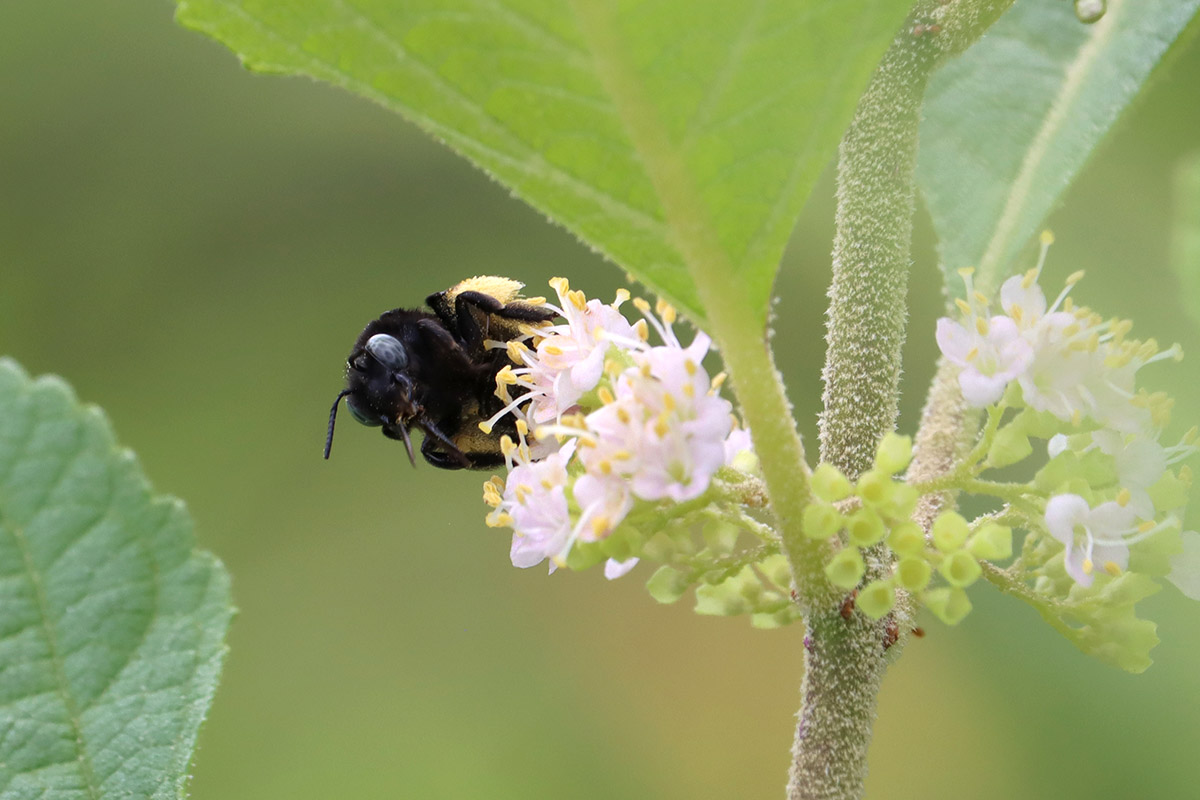
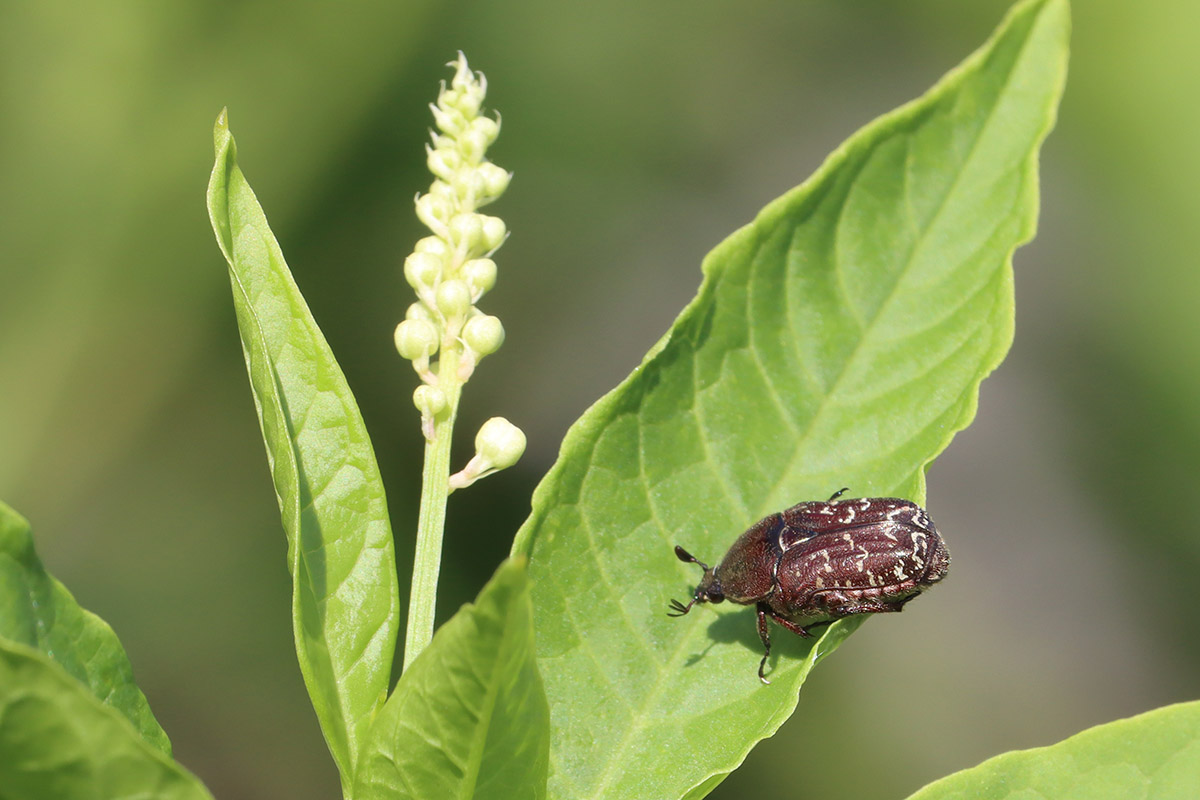
Our pokeweed is starting to bloom, and is here visited by a pollen eating beetle.
June 7, 2022
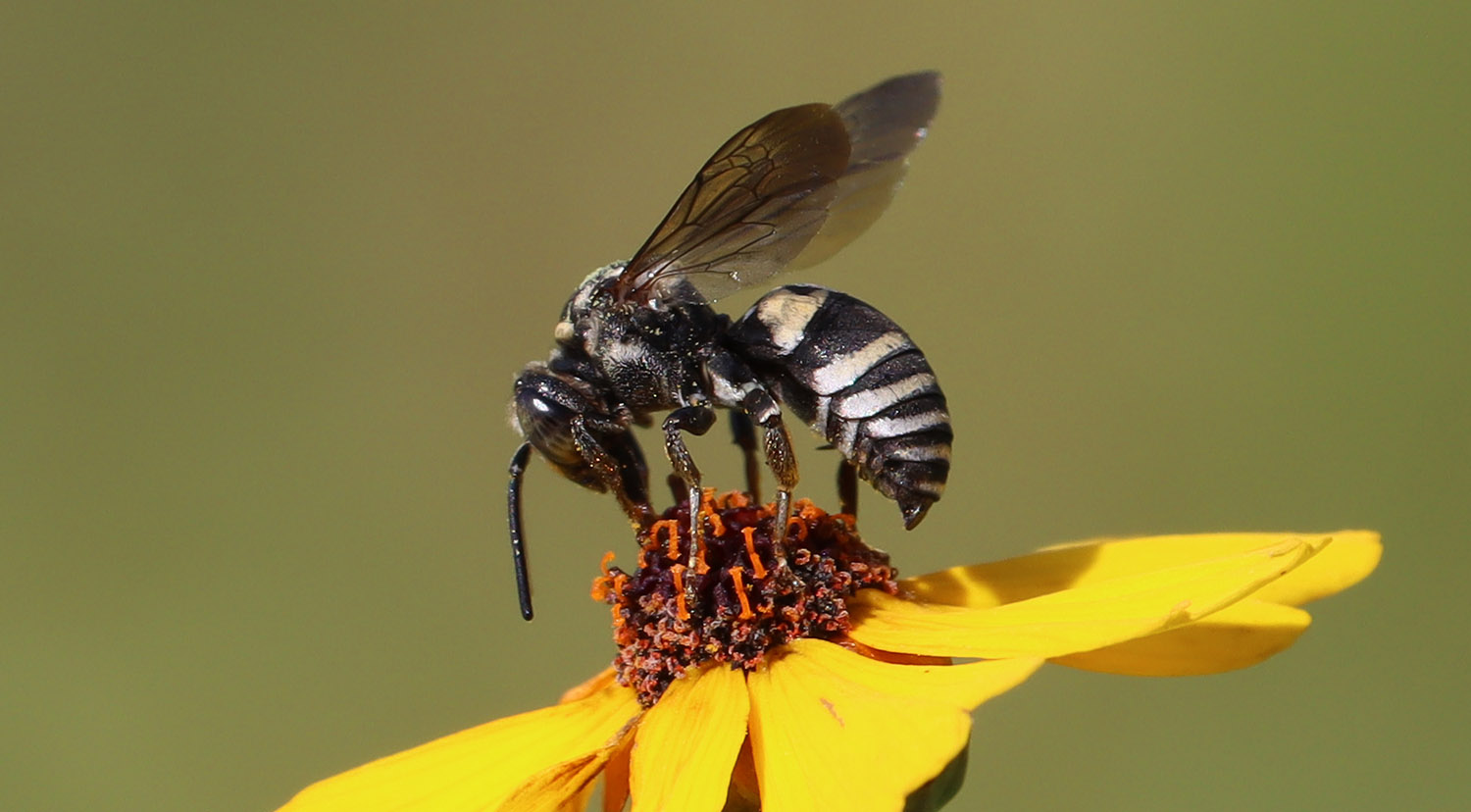
Here’s another bee new to our yard- that’s #2 on the year. This is a type of cuckoo bee, a kleptoparasite. Cuckoo bees lay their eggs with the eggs of other bees, and their larvae either devour the host’s larvae or grow alongside them. This species hosts with bees in the Melissodes genus, which includes the two-spotted longhorn bee that appeared in the yard this week.
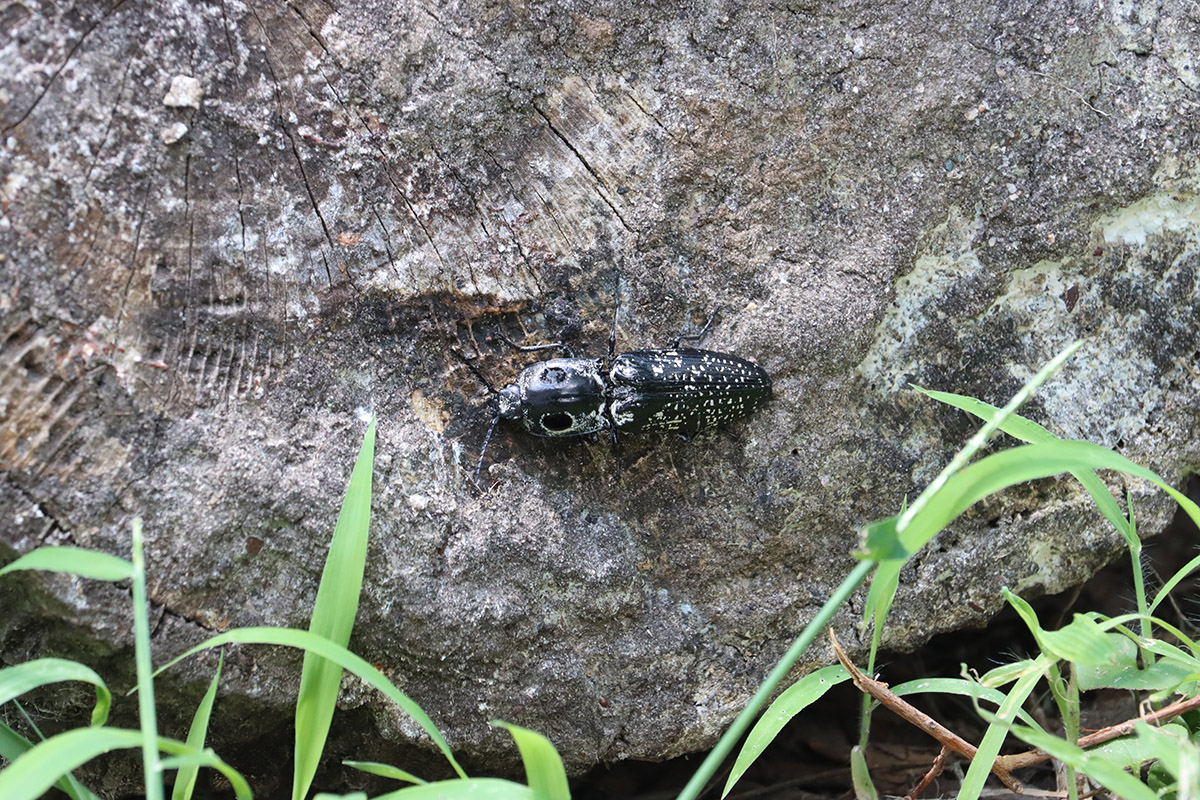
I learned something by clicking to read about this species on iNaturalist. While the larvae of other click beetles are known for eating plant matter, eastern eyed click beetle larvae are hunters, eating beetles that feed on dead wood. This one sat on this section of the oak tree we lost last year; perhaps it was laying eggs?
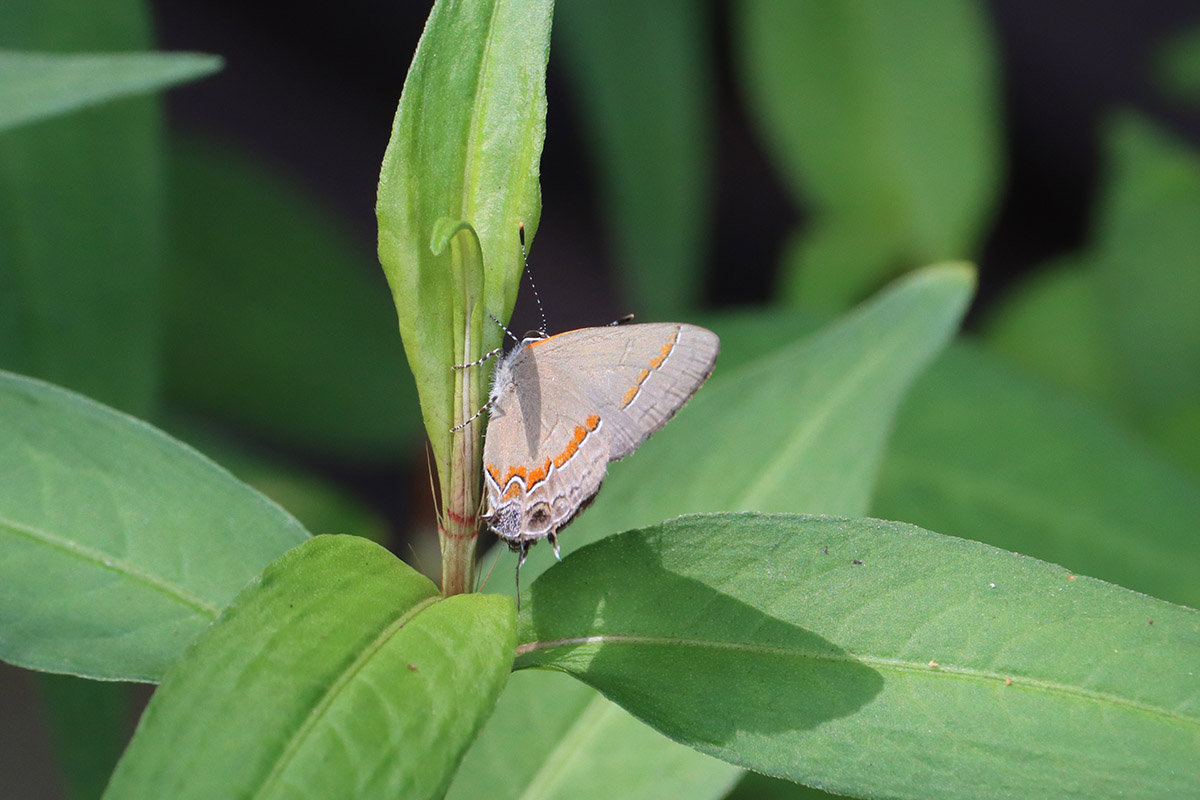
This hairstreak species’ caterpillars host on dead leaves. Do I need to say it again? Leave some leaves on the ground this winter.
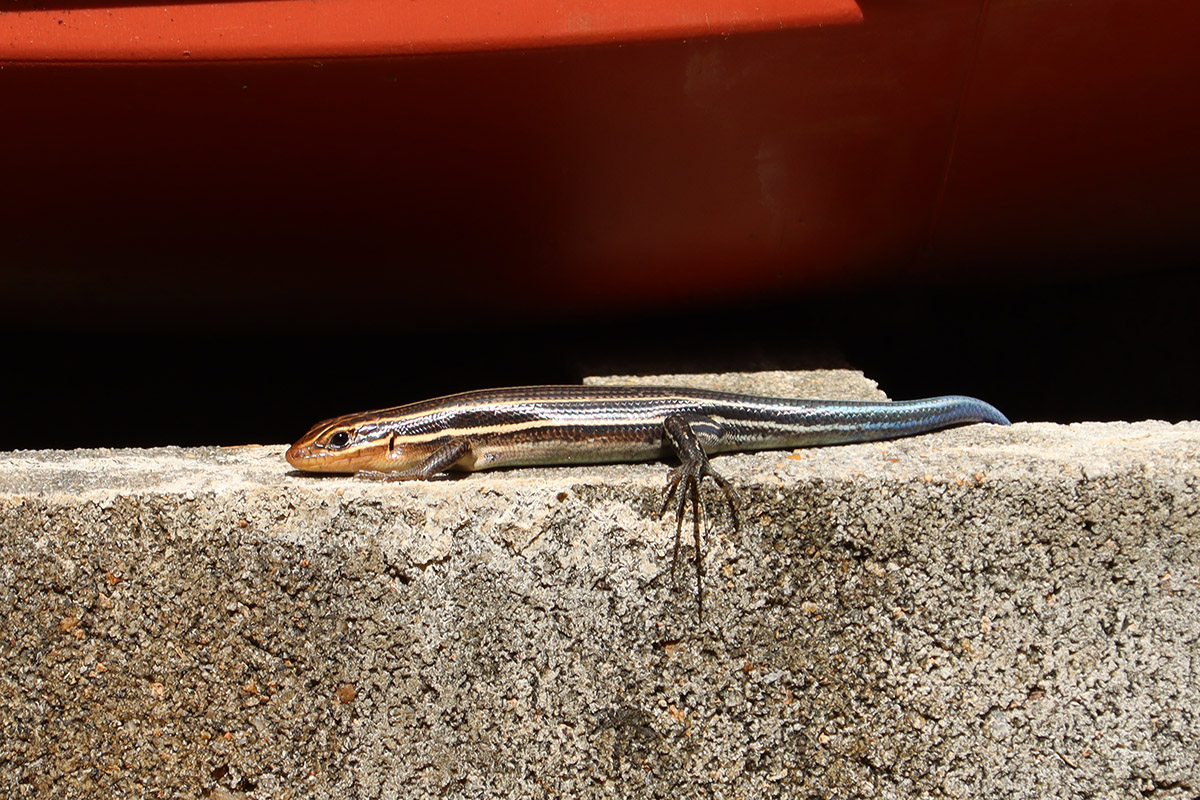
Once I saw this skink here a few days back, I figured I’d see it here again. I’m fairly certain there’s a nest in those cinder blocks.
June 8, 2022
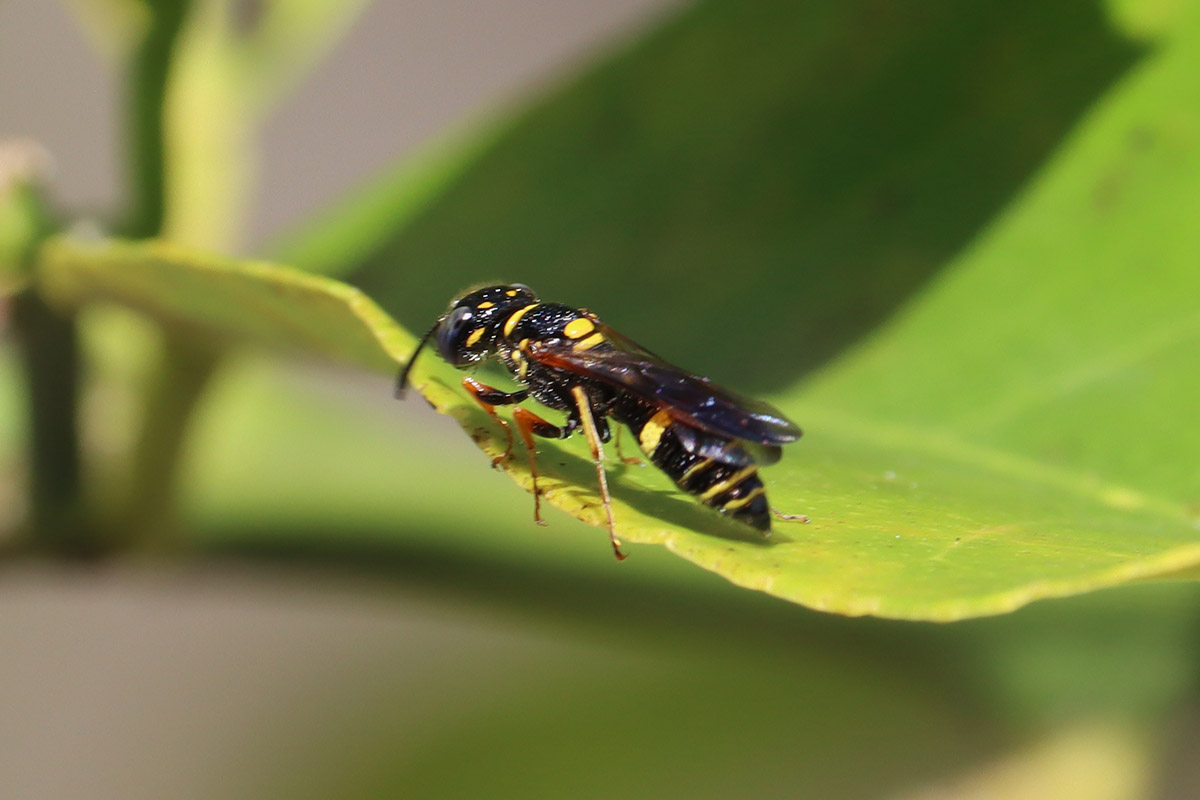
Here’s an insect I see about once a year, and always here on our Meyer lemon tree. It’s a tree that’s well past flowering, though it may flower later in the summer, but anyhow- bees aren’t visiting it. This is a humped beewolf, a wasp that hunts bees. Our yard has plenty of bees by now, but why is the beewolf here? Again?
And now for our (almost) daily caterpillar check.
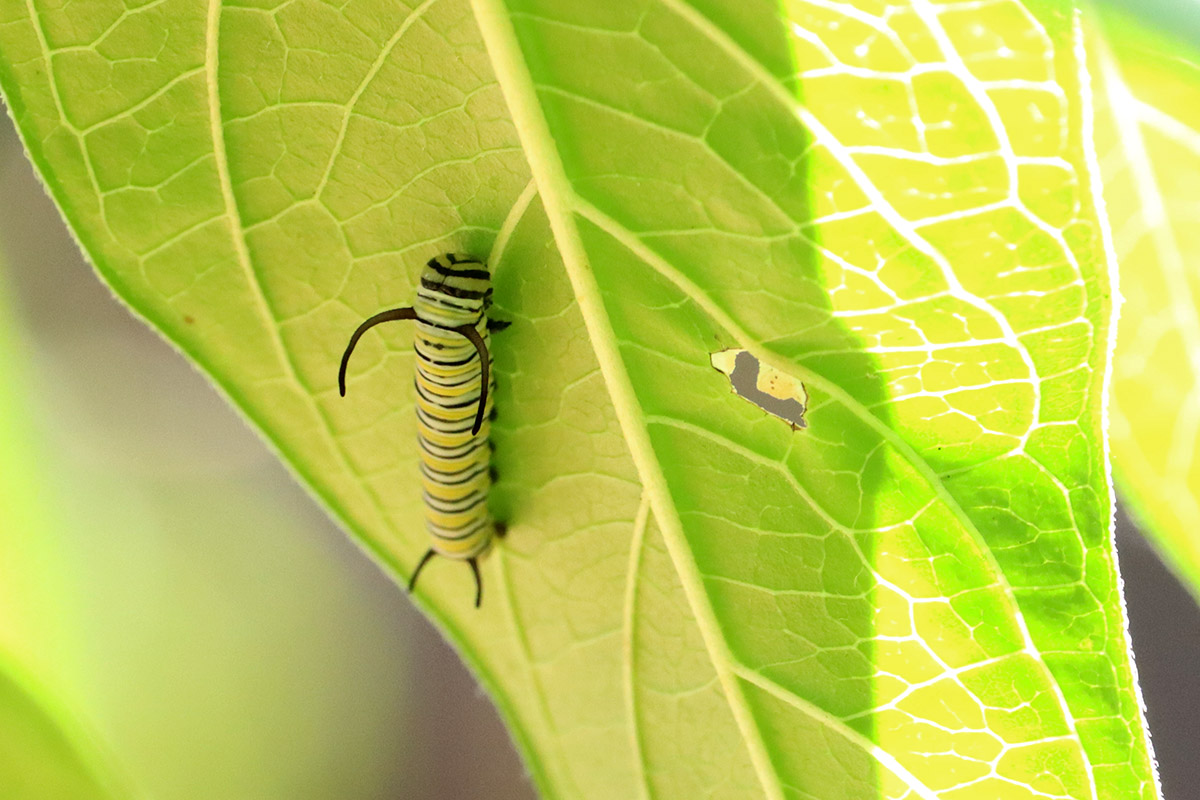
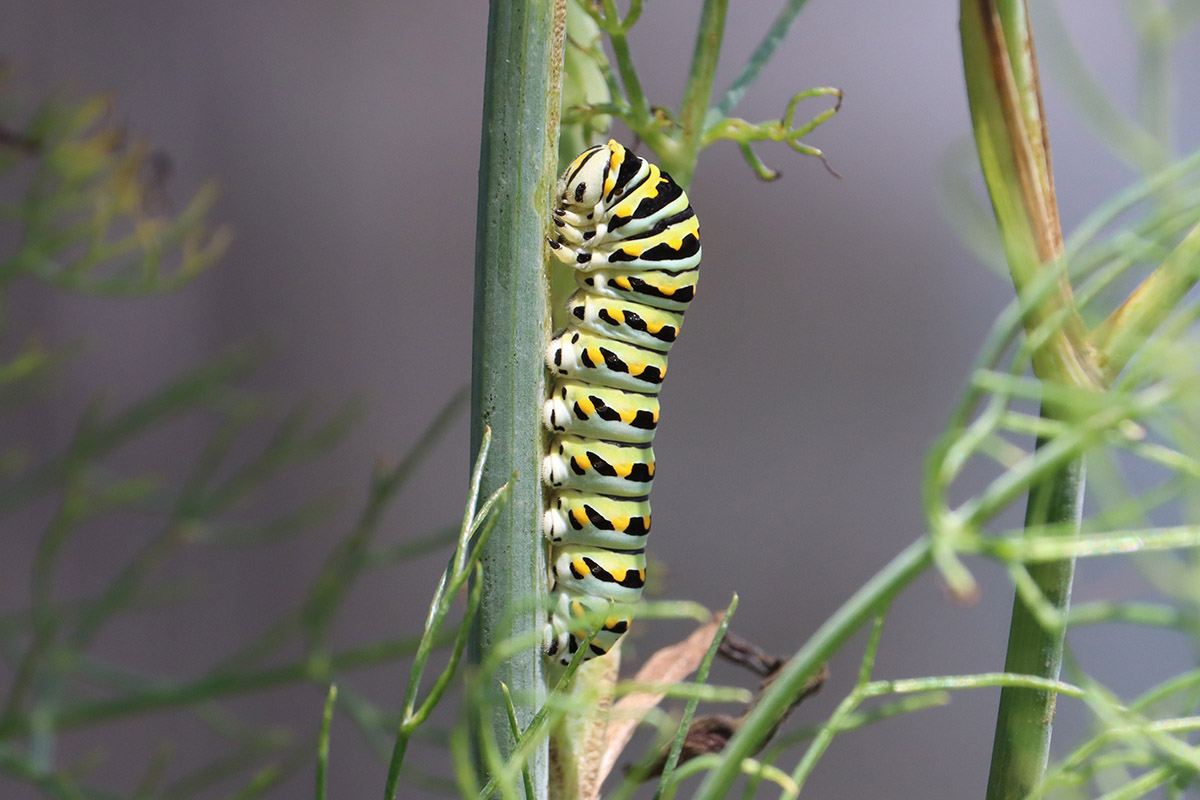
Now that it has reached its final caterpillar stage, I want to ensure it becomes a butterfly. For the first time in years, I put a caterpillar in the enclosure.
June 9, 2022
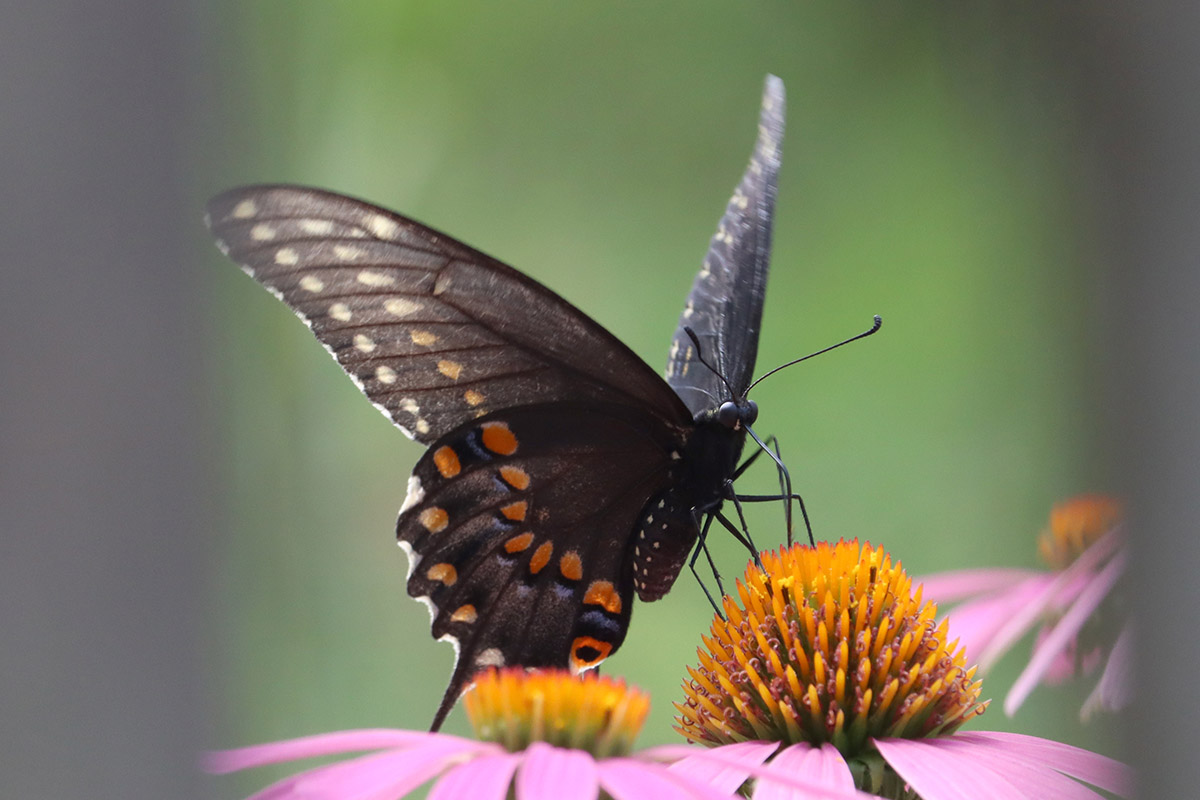
I rarely see black swallowtail adults in the yard, so I kept a close eye on this one. I have one caterpillar in the enclosure, and perhaps more are on the way.
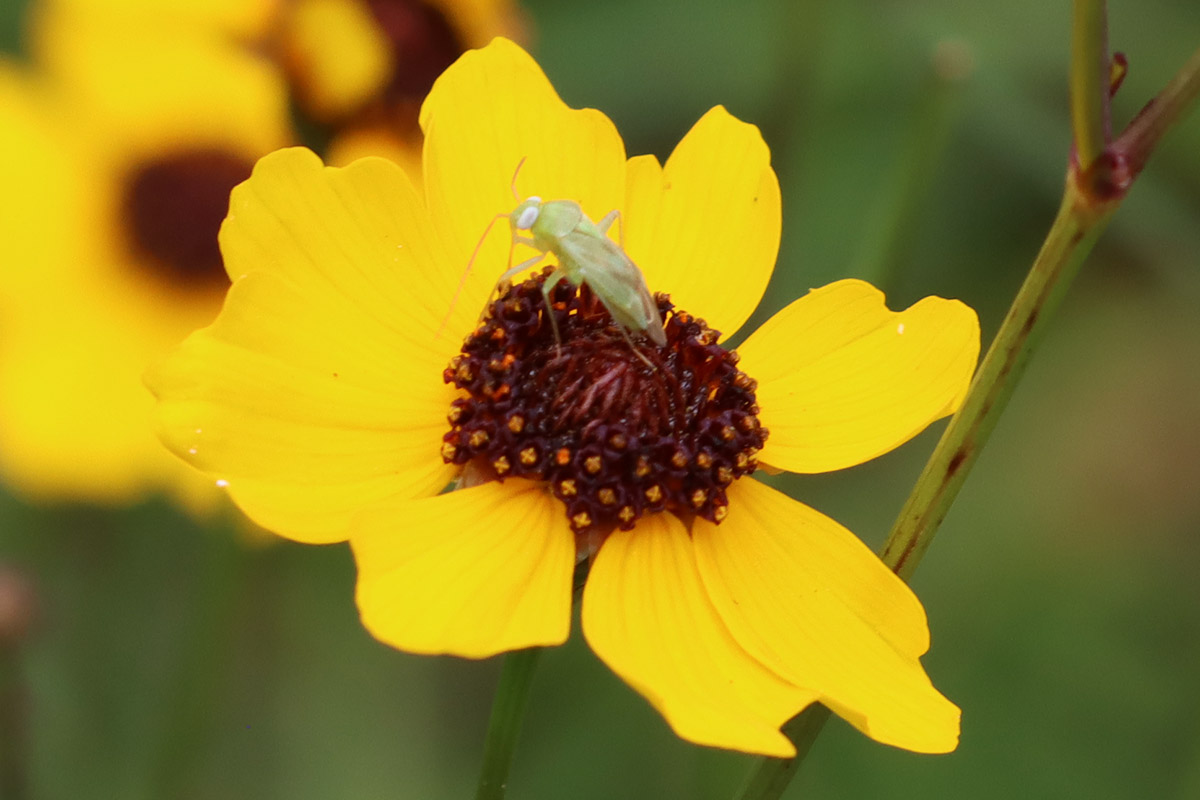
My best first iNaturalist guess is broken-backed bug, an insect that feeds on flowers.
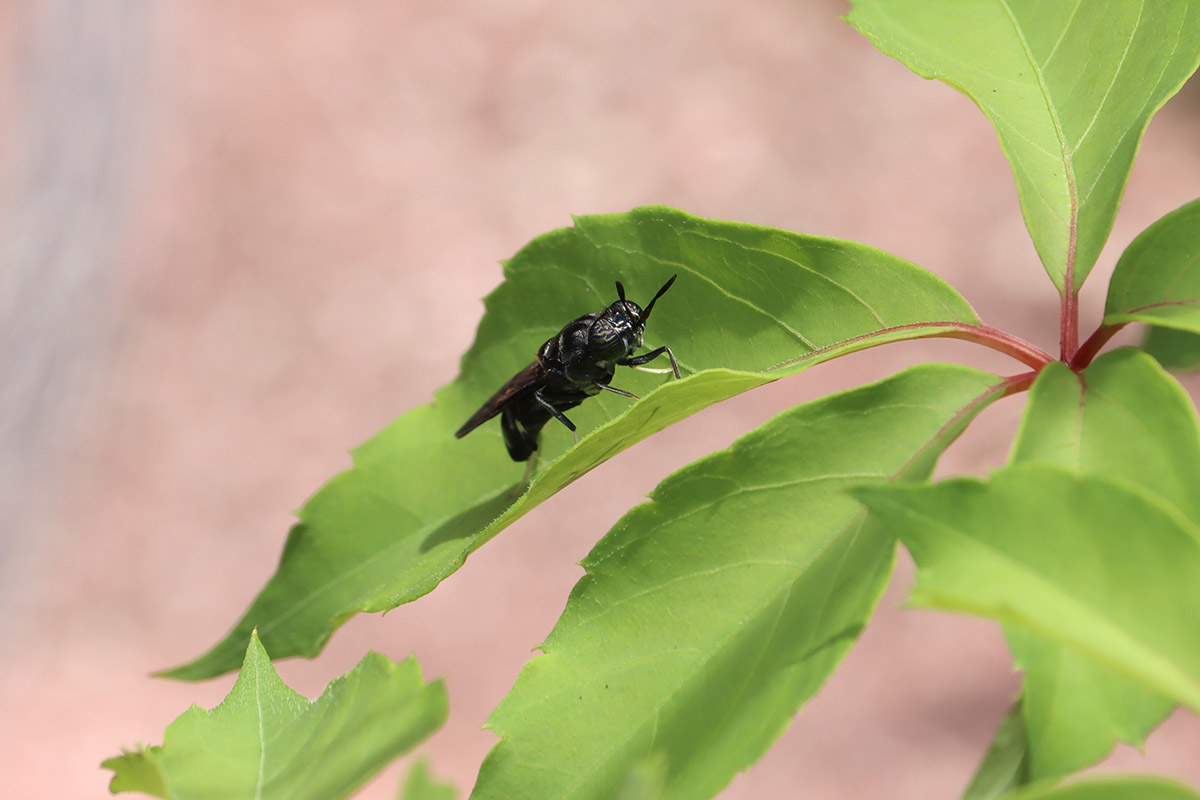
A common sight in the warmer months. This insect lays eggs in my compost, and its larvae eat our fruit and veggie waste, breaking it down and pooping out soil. A magnificent insect.
June 9, 2022
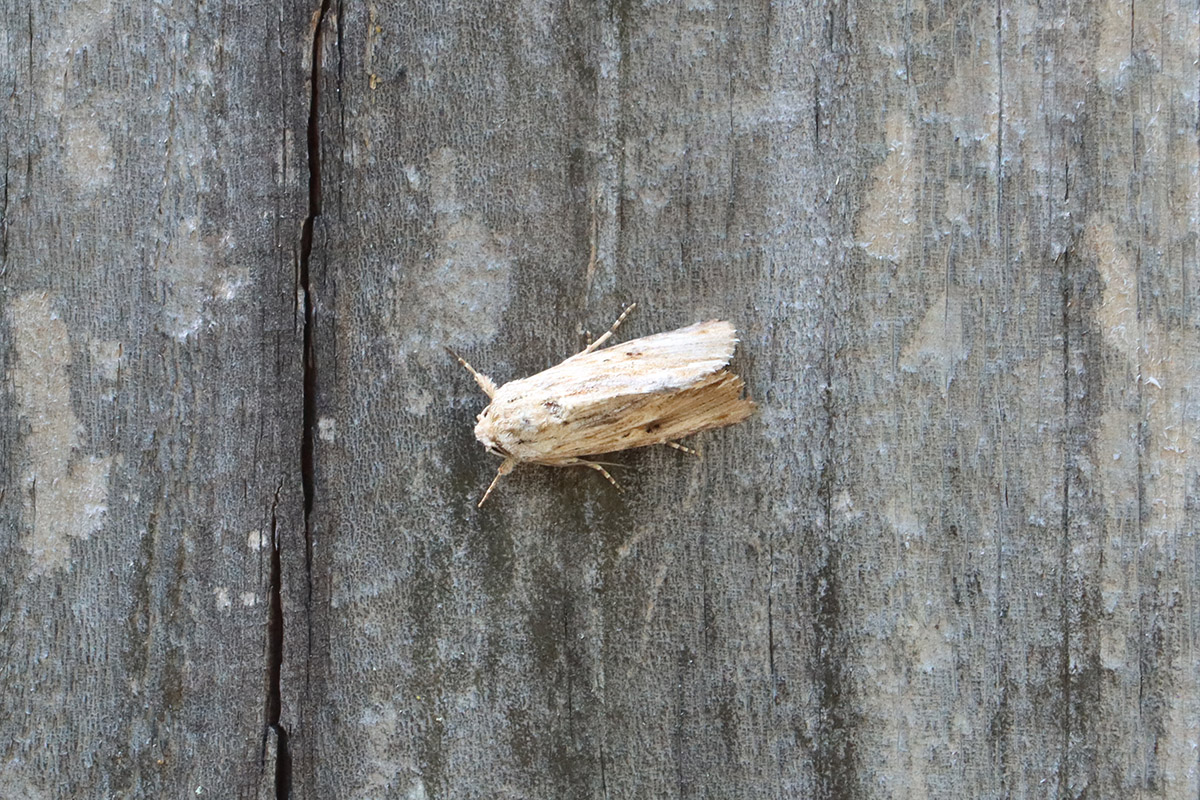
It’s a moth.
June 12, 2022
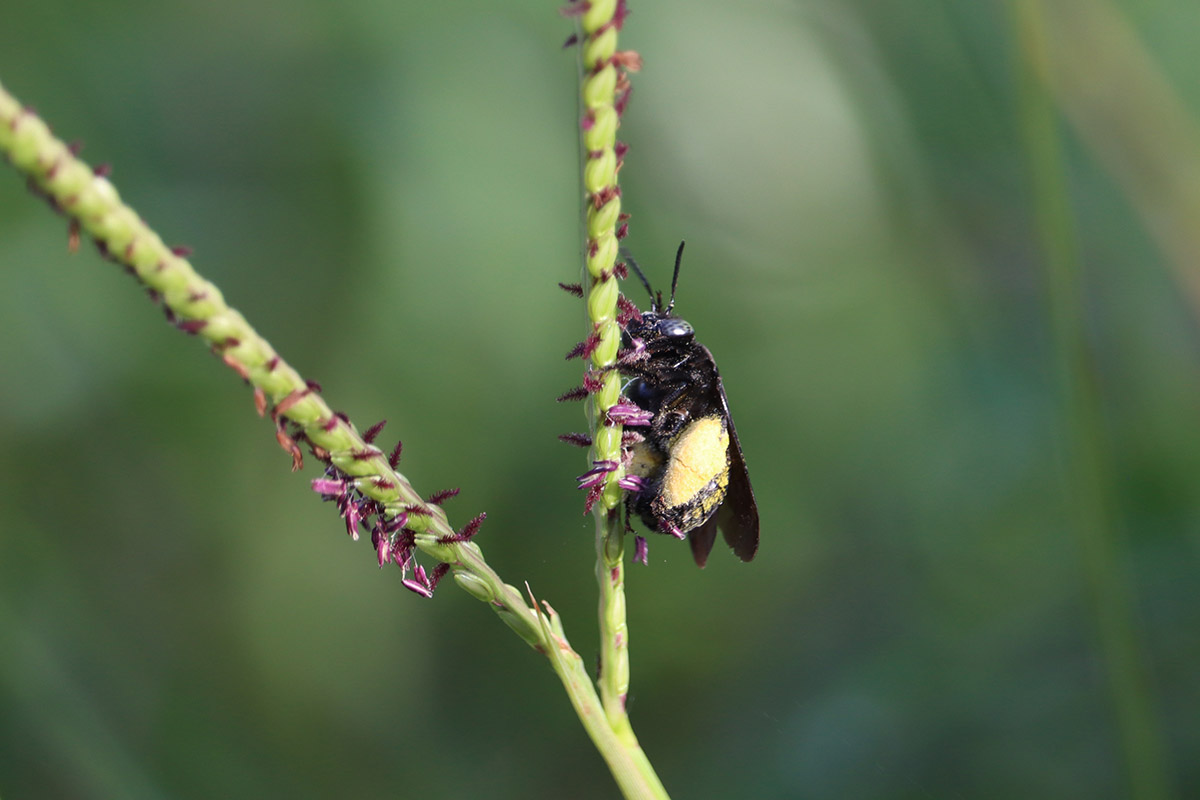
Here’s an odd (to me) sight. The turfgrass around my front yard flower bed is flowering, and this bee is pollinating it. Did I not plant enough other flowers? I end up seeing this a few times with the longhorn bees, which visit several different types of flowers in their short time flying.
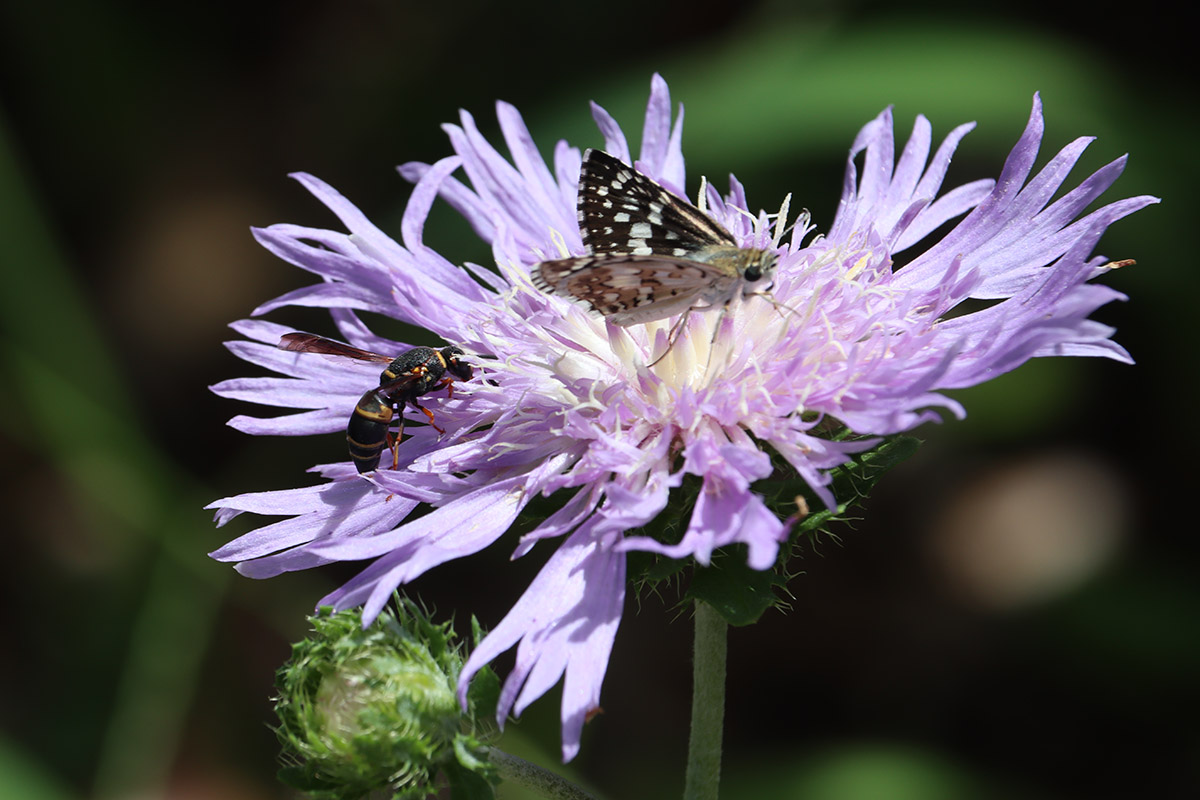
Stoke’s aster has a nice large flower pollinators can share. I’m struggling on the wasp ID; as I mentioned earlier, we have several Euodynerus species in Leon County, and it’s hard for me to tell from this photo.
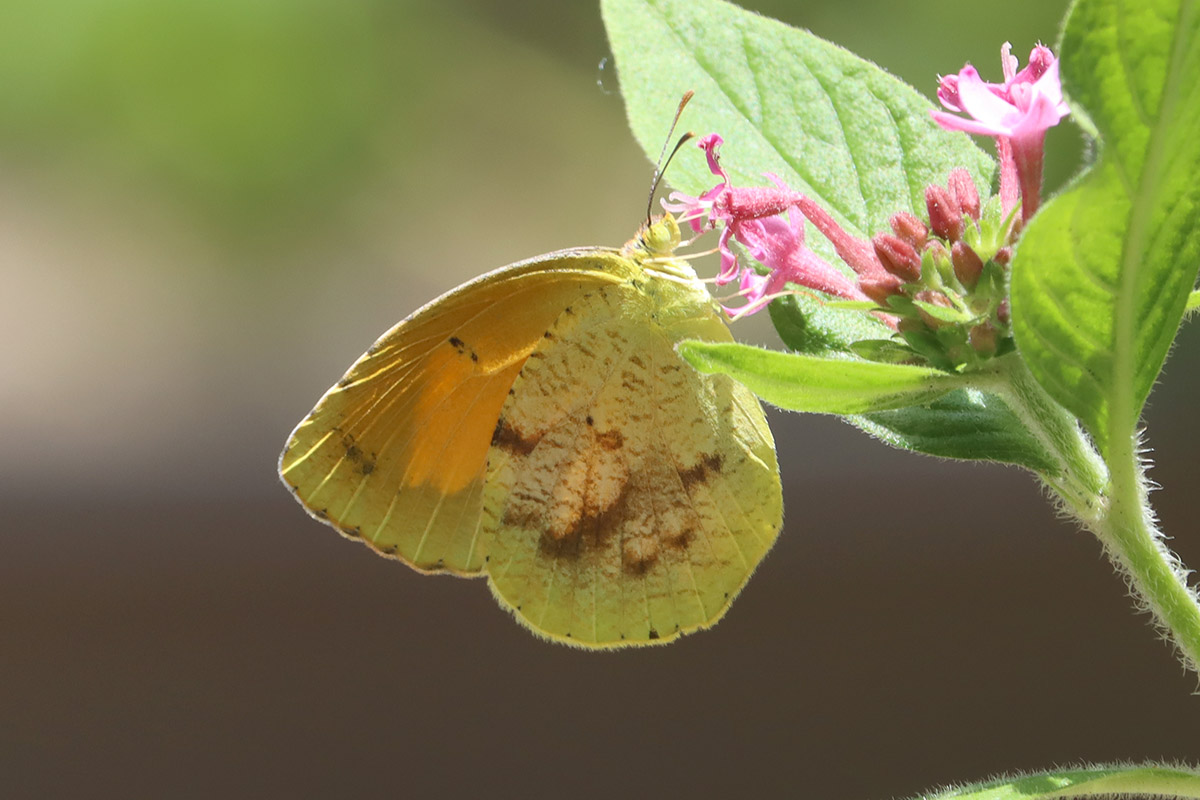
I wonder if this butterfly will visit the partridge pea out front, its larval food.
June 13, 2022- another black swallowtail caterpillar
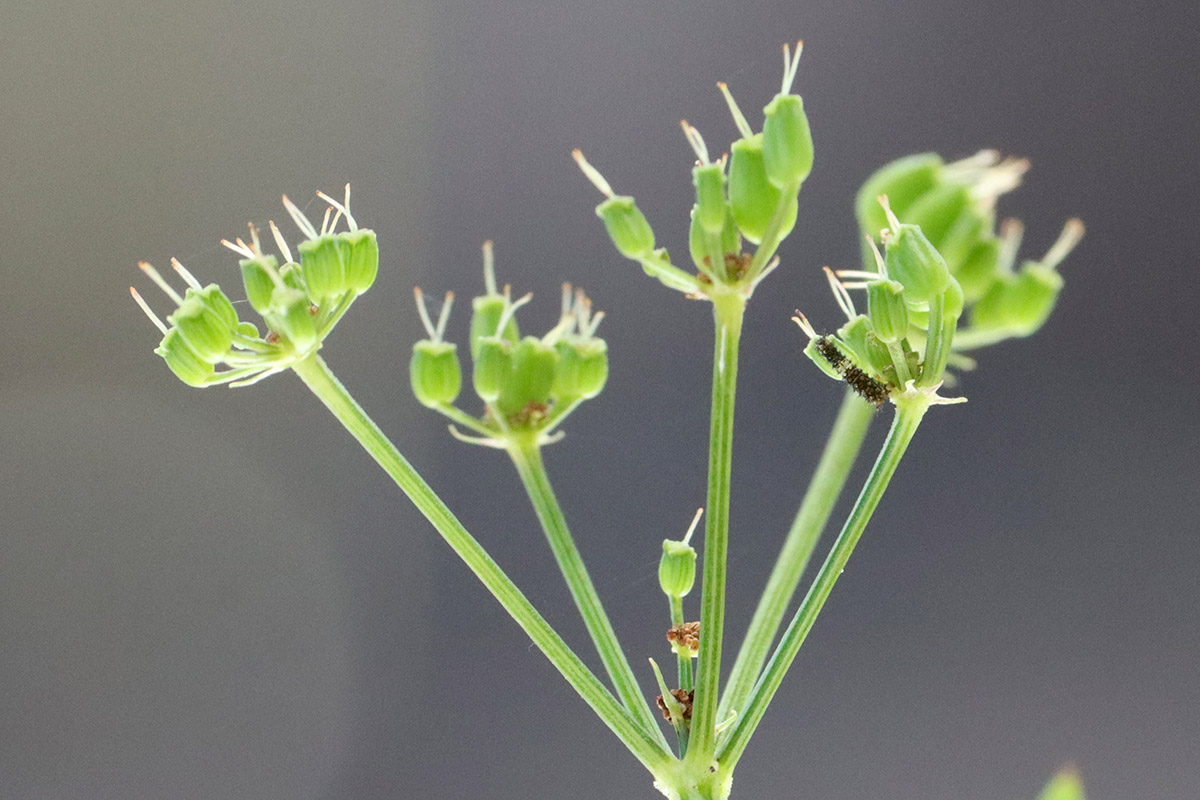
After three year drought, we now have our second black swallowtail caterpillar of 2022. And it’s on a native Apiaceae, a first for our yard.
June 14, 2022
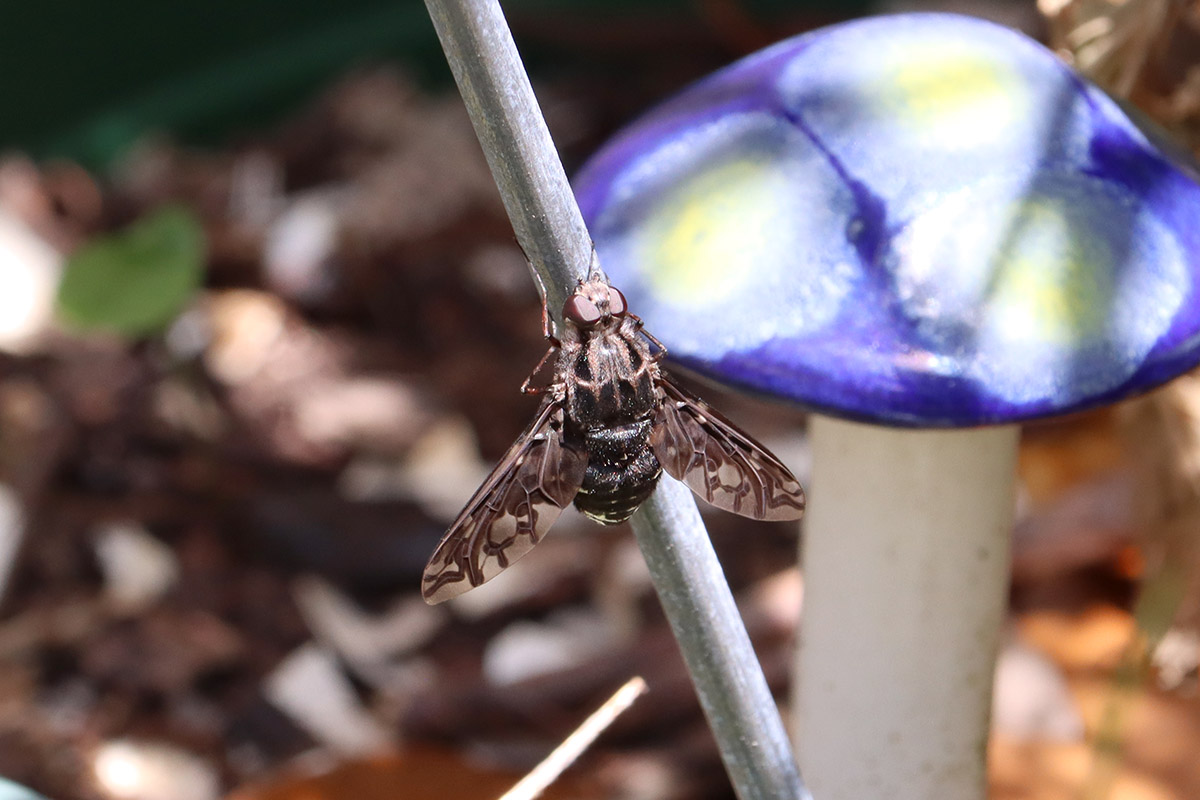
I mentioned earlier that I haven’t been taking the time to stalk carpenter bee nests for photos. The job of stalking those nests falls to this insect. This is a tiger bee fly, another kleptoparasite. Until I started reading about insects, I had no idea how many animals did this, or practiced some other form of parasitism. The tiger bee fly will lay its eggs in a carpenter bee nest, and larvae will devour the bee larvae.
We do have multiple carpenter nests, and I only occasionally see tiger bee flies. By necessity, they can’t number as many as the bees they victimize. It seems an ugly business, but the parasitic species needs its host species to persist.
June 15, 2022
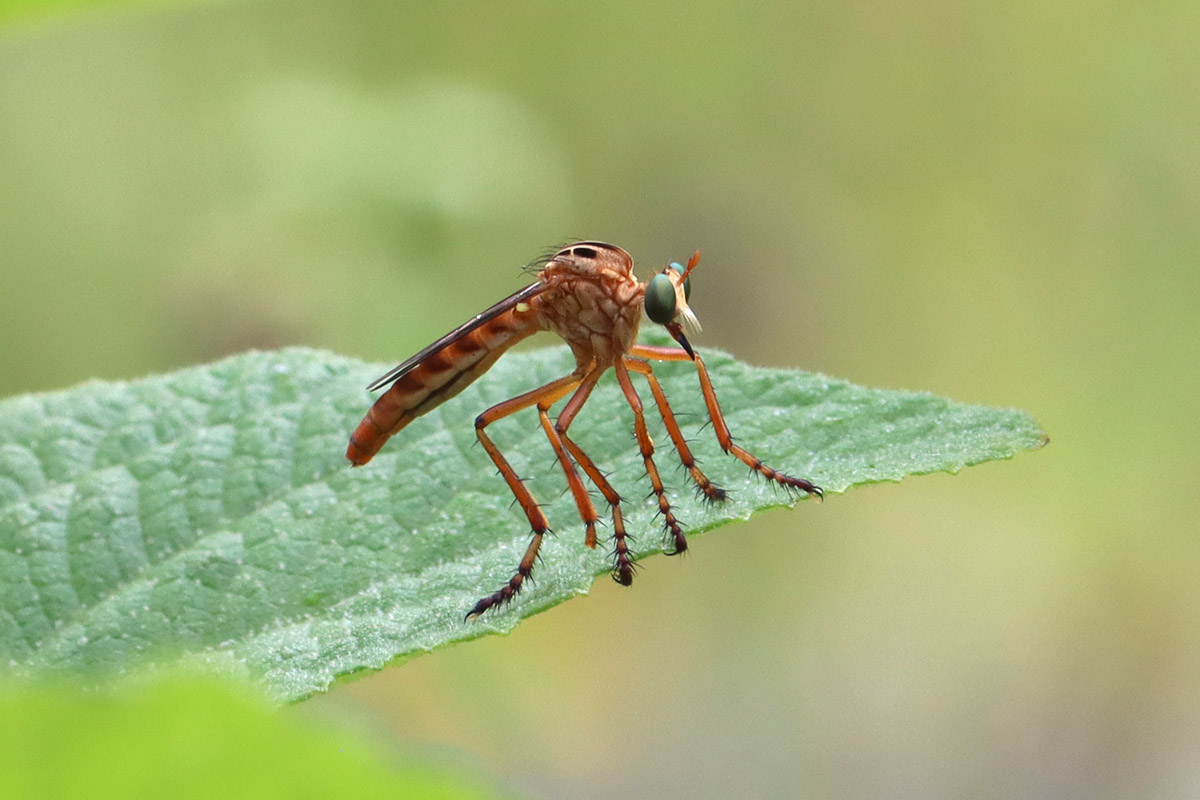
Here’s another predator we see when a lot of insects are flying, and I have seen it grab bees. With as many insects as we have killing bees and their larvae, we still see quite a few. It’s a sign of a healthy food web.
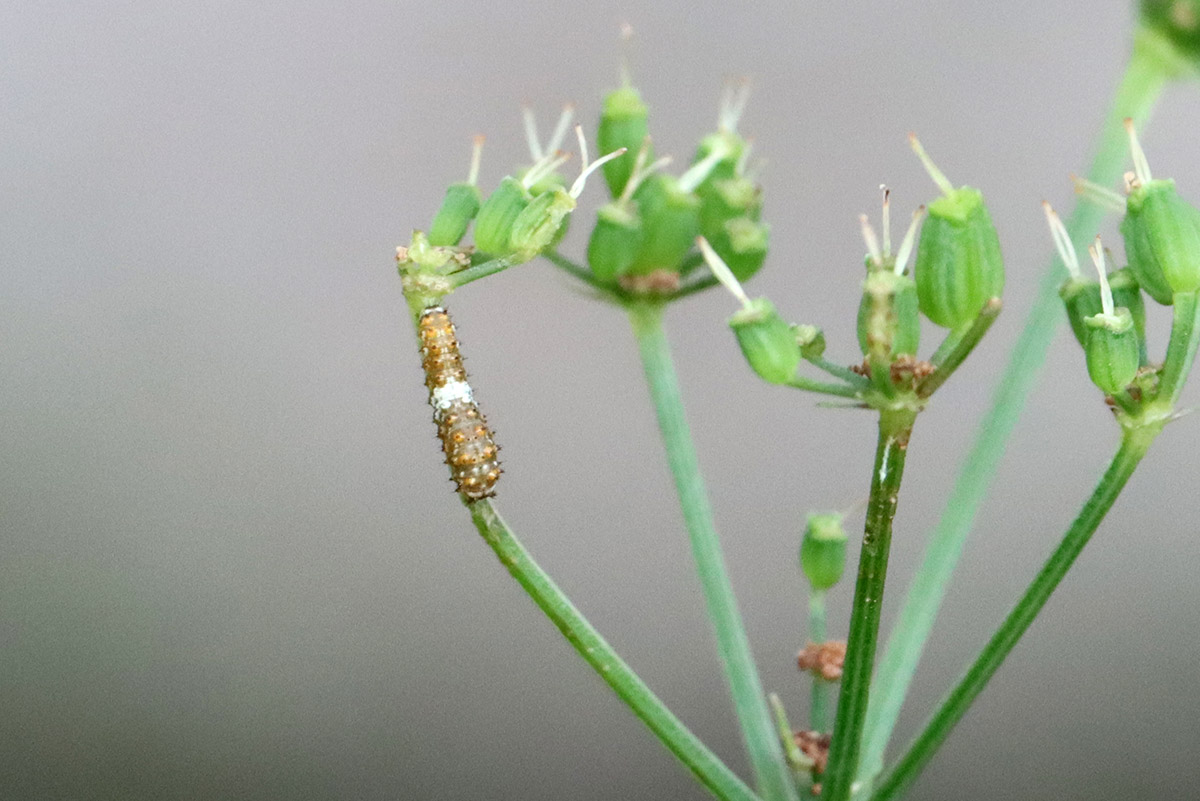
This is the last time I see this caterpillar alive, and it would end up being our last black swallowtail caterpillar of the year. That’s a fifty percent success rate. Despite our having several plants to host them, we only had two overall, and one at a time, when in the past they’d hatch and grow in groups.
June 16, 2022
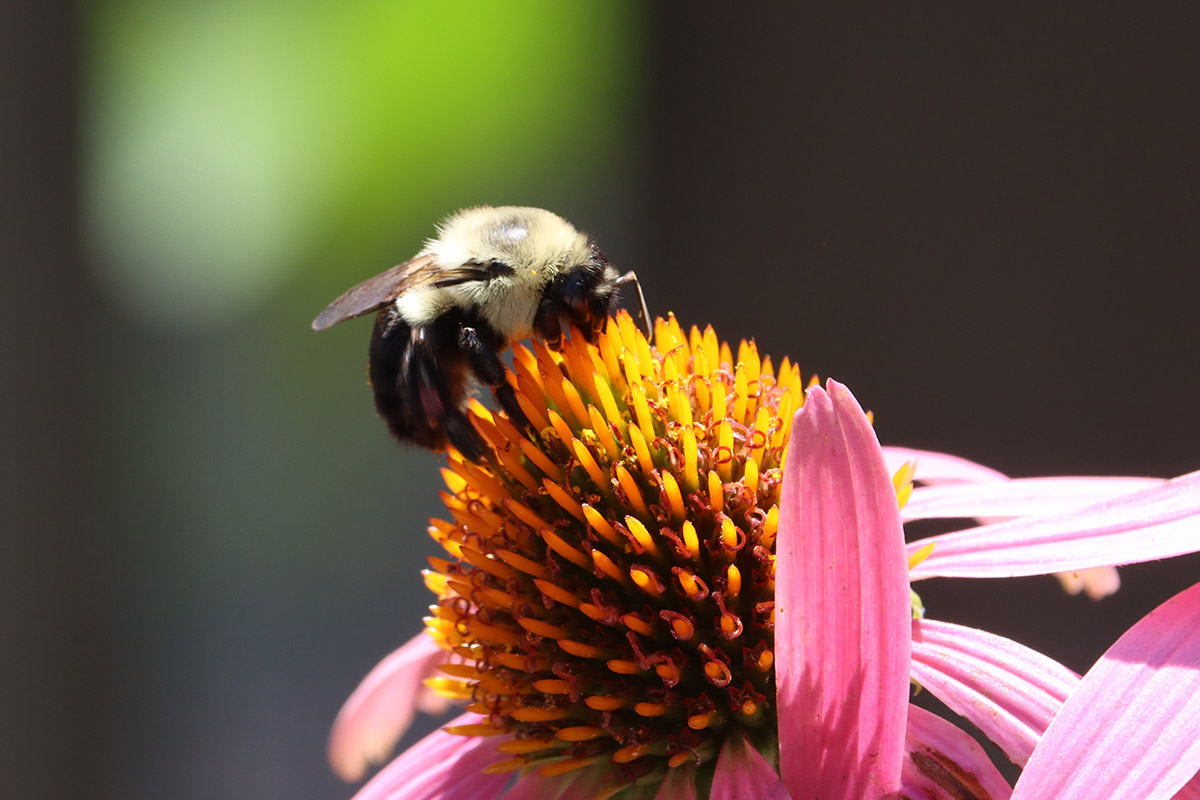
It’s strange, but in mid-June, this is my first bumblebee photo of the year. They fly for much of the year, and they’re usually in the yard by the start of spring. By now I should have two or three visiting flowers. I wonder why this year is different?
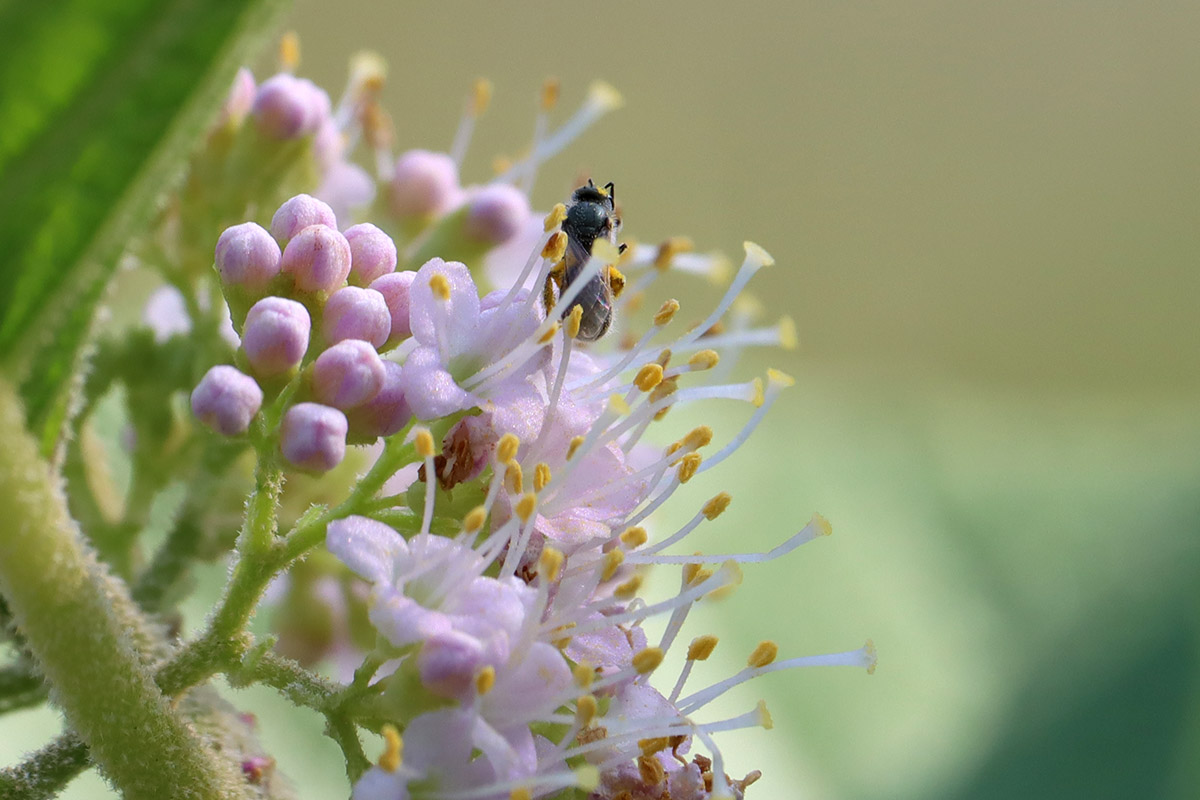
A very small bee visiting the beautyberry; here you can see the individual flowers in a cluster.
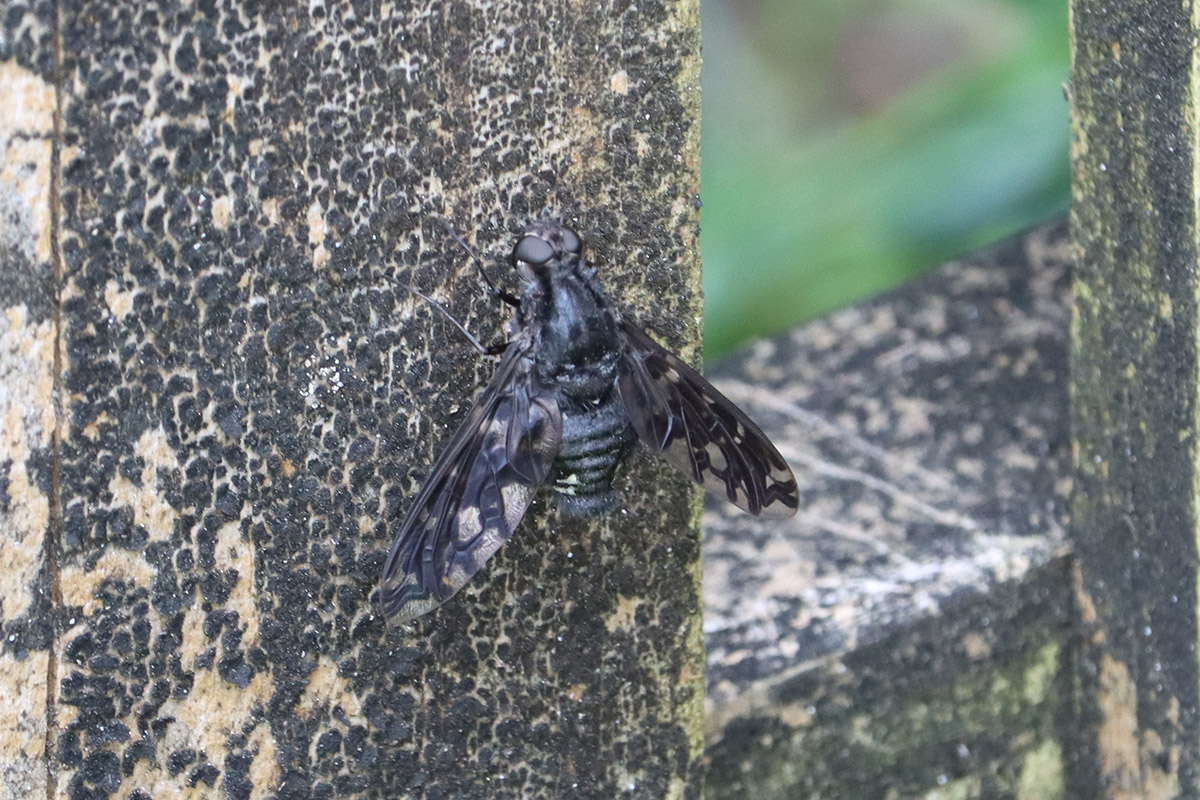
Our fenceposts are the number one place where carpenter bees nest in the yard. The tiger bee fly moves closer to its quarry.
June 17, 2022
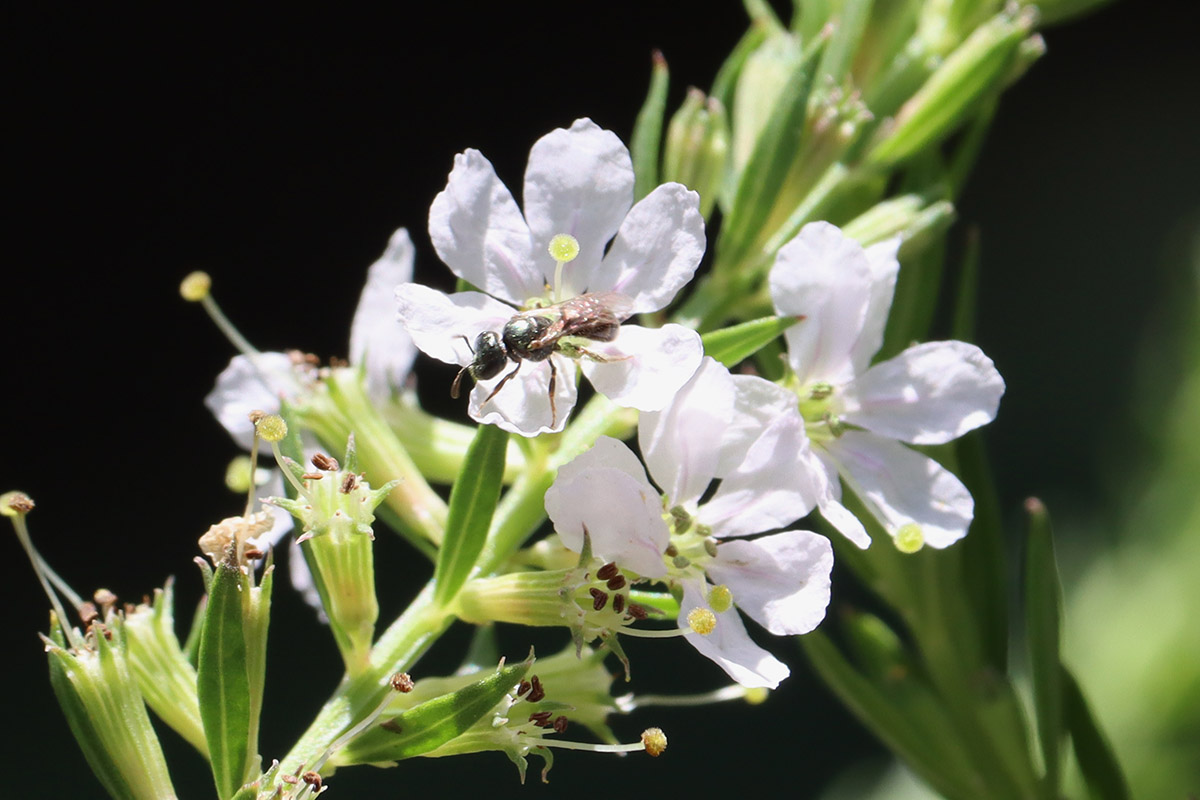
June 19, 2022
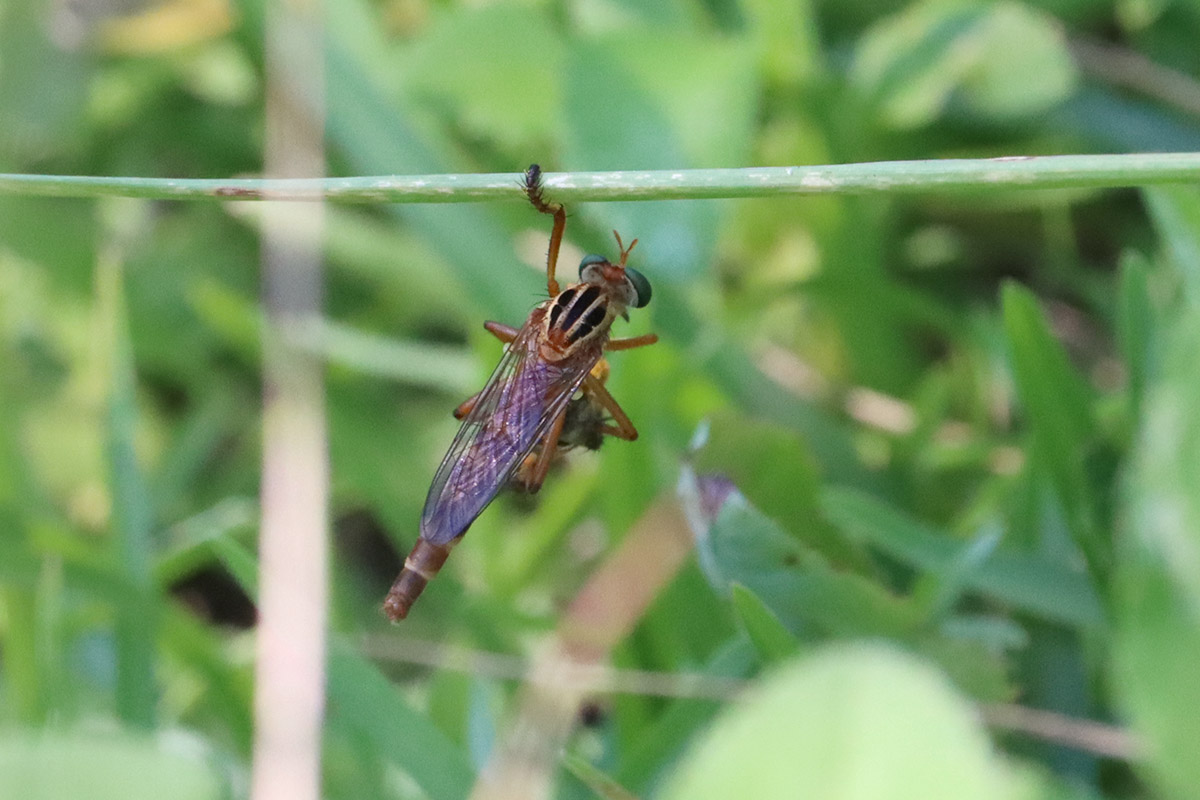
This is how the hanging thief hunts. It’s hanging from a blade of grass, waiting for an insect to fly by. I’m only now noticing that it may have already caught its prey.
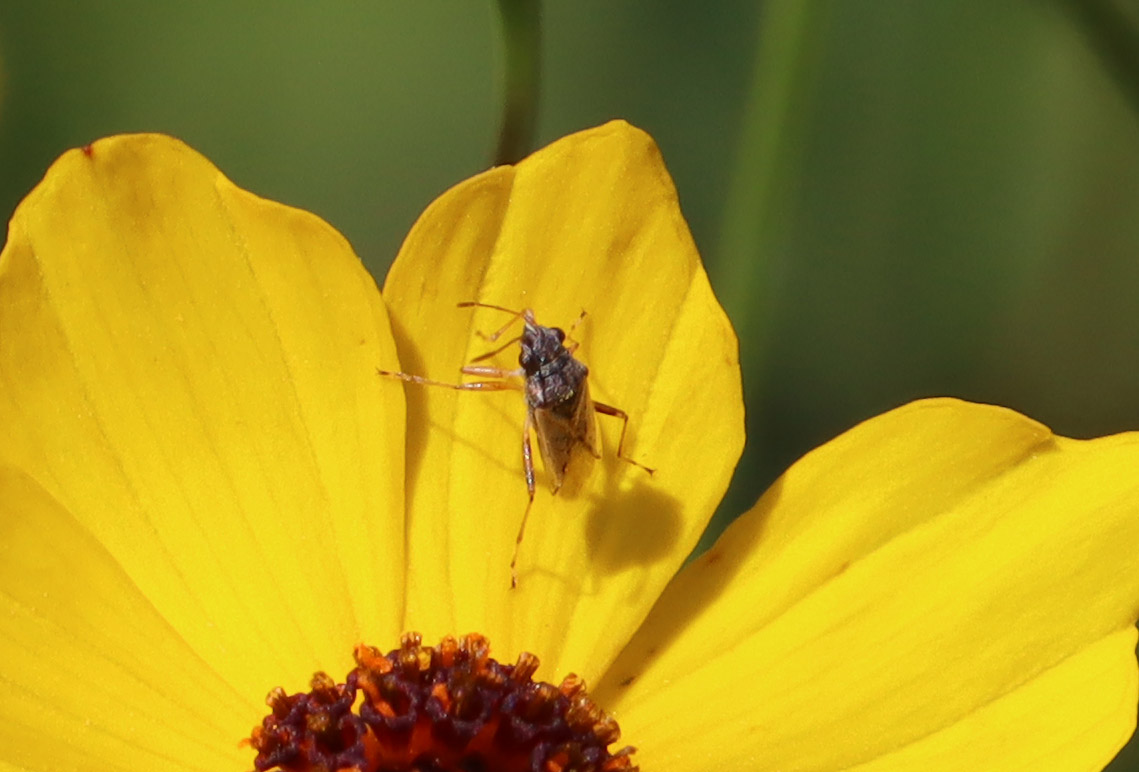
This is a type of seed bug, not all of which feed on seeds. I never received a species-level ID on this insect, so I don’t have more specific information.
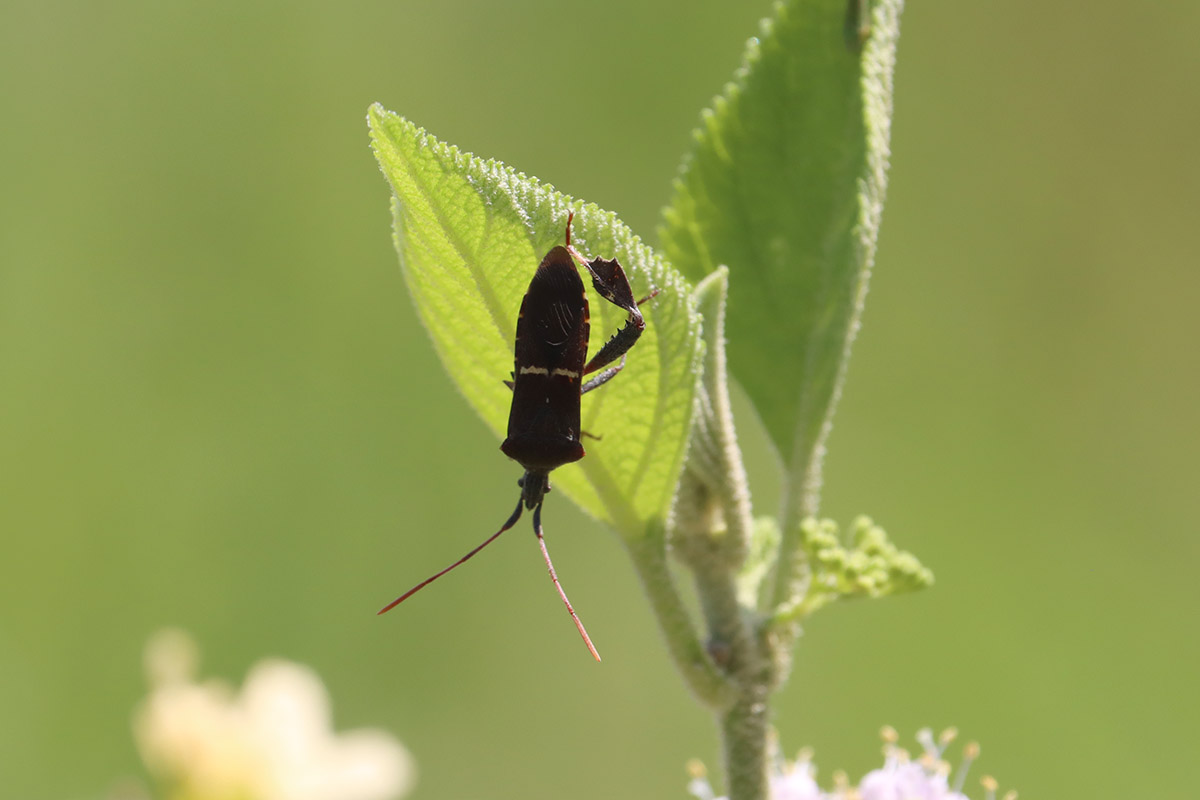
Leaf footed bugs are often considered garden pests. I do think that in a well balanced ecosystem, plant consumers are kept in check by competitors and predators. Even your vegetable garden, when surrounded by a diversity of native plants, can benefit from the checks and balances within a robust insect community.
July 12, 2022- another new (to our yard) bee
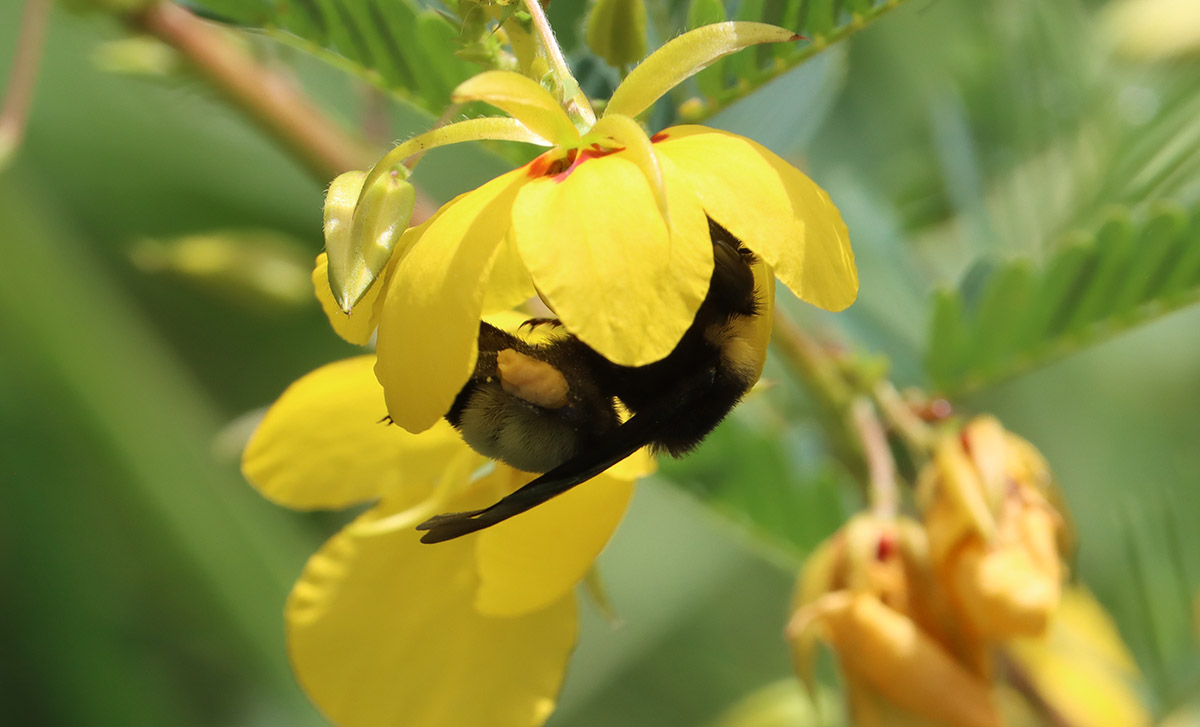
Here’s a third bee I’ve not seen in the yard before 2022. It’s a bee I’ve encountered before, one that’s Federally listed as Vulnerable.
This is the American bumblebee, visiting a plant I introduced into the yard in order to attract bees. At Elinor Klapp-Phipps Park I saw it on another pea, the spurred butterfly pea.
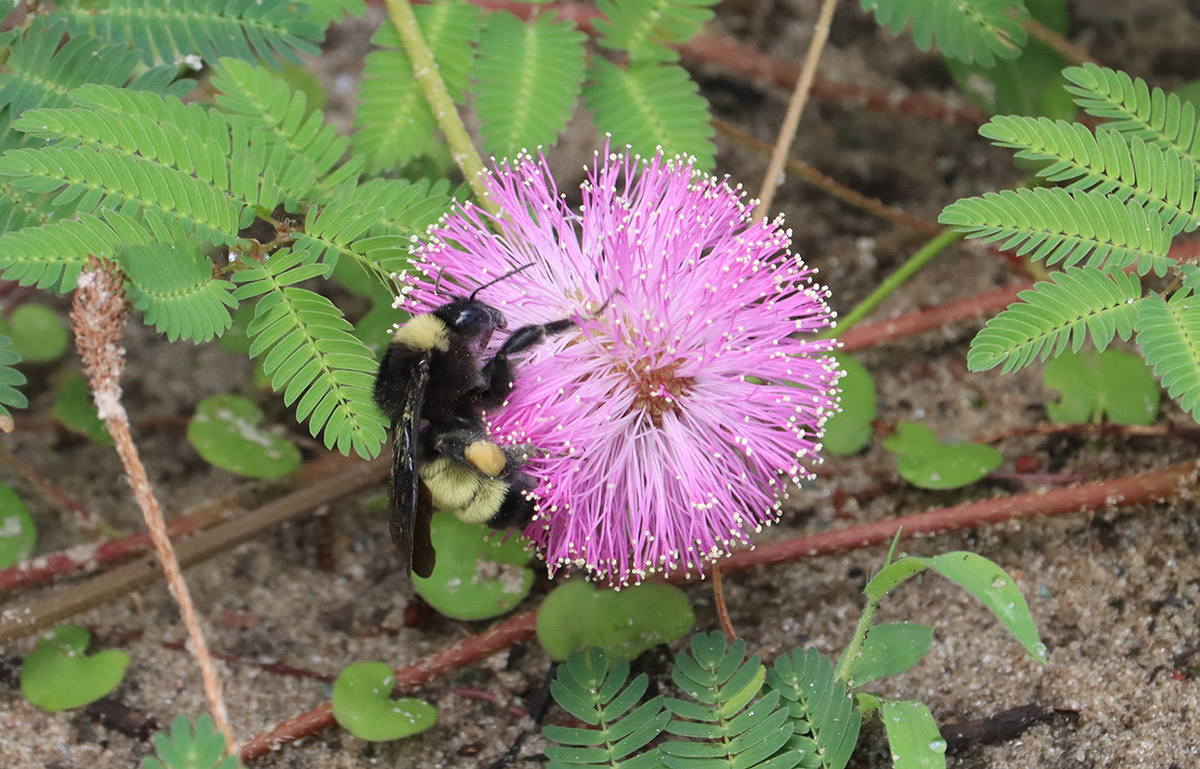
I followed it over to a third member of the legume family (Fabaceae), sunshine mimosa. Is it a coincidence, or does this bee have a preference for legumes? The online sources I found list “sunflowers and clover” as their favored nectar and pollen sources. Clovers are legumes as well, so there may be something to that.
July 15, 2022
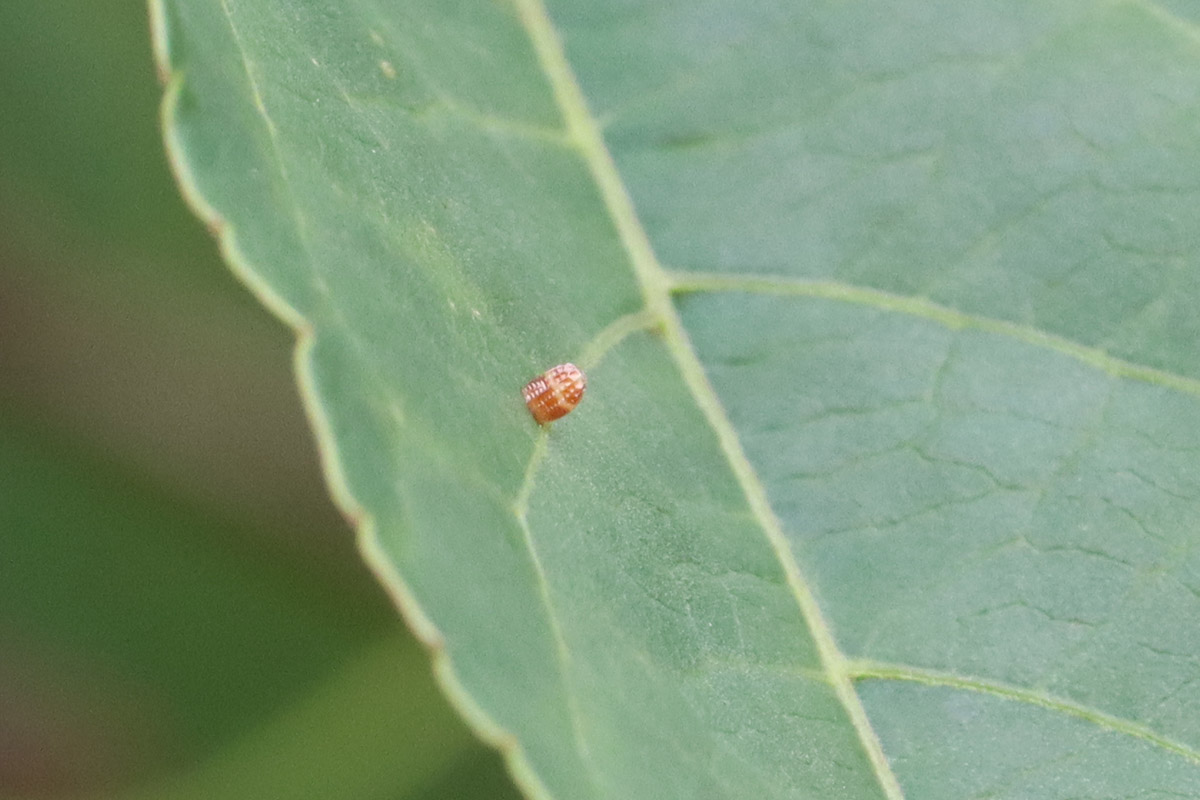
In my wanderings through local parks, I’d noticed how passionvine, the larval food for gulf fritillary and zebra longwing butterflies, would grow on beautyberry bushes. So I planted one on either end of our largest bush, and watched as they grew towards each other.
Lately, I’ve been noticing gulf fritillaries passing through, and decided to check for eggs. Here is one single egg, though the vines snake through a few bushes now, and not every leaf is easy to inspect. There may be more.
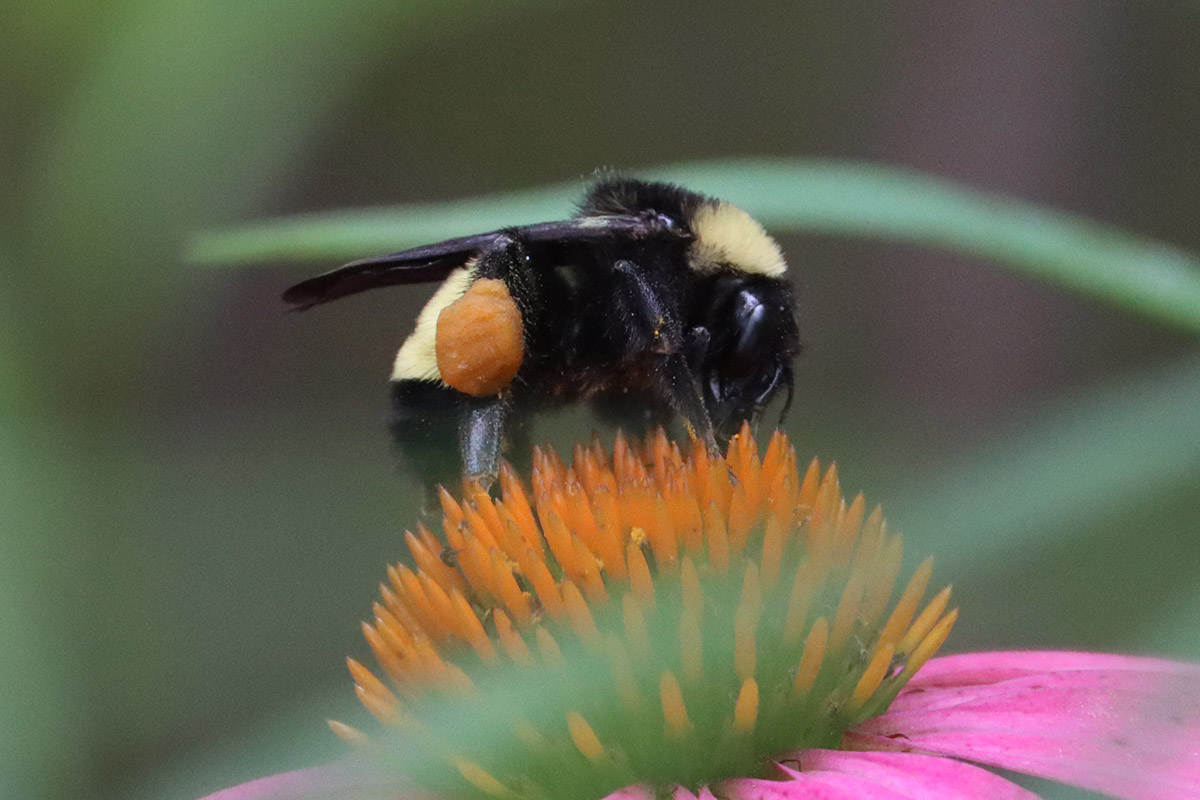
Purple coneflowers aren’t the most visited flower in our yard, but visitors to the flower tend to stay on them for a little while, and so I have plenty of photos of coneflower pollination.
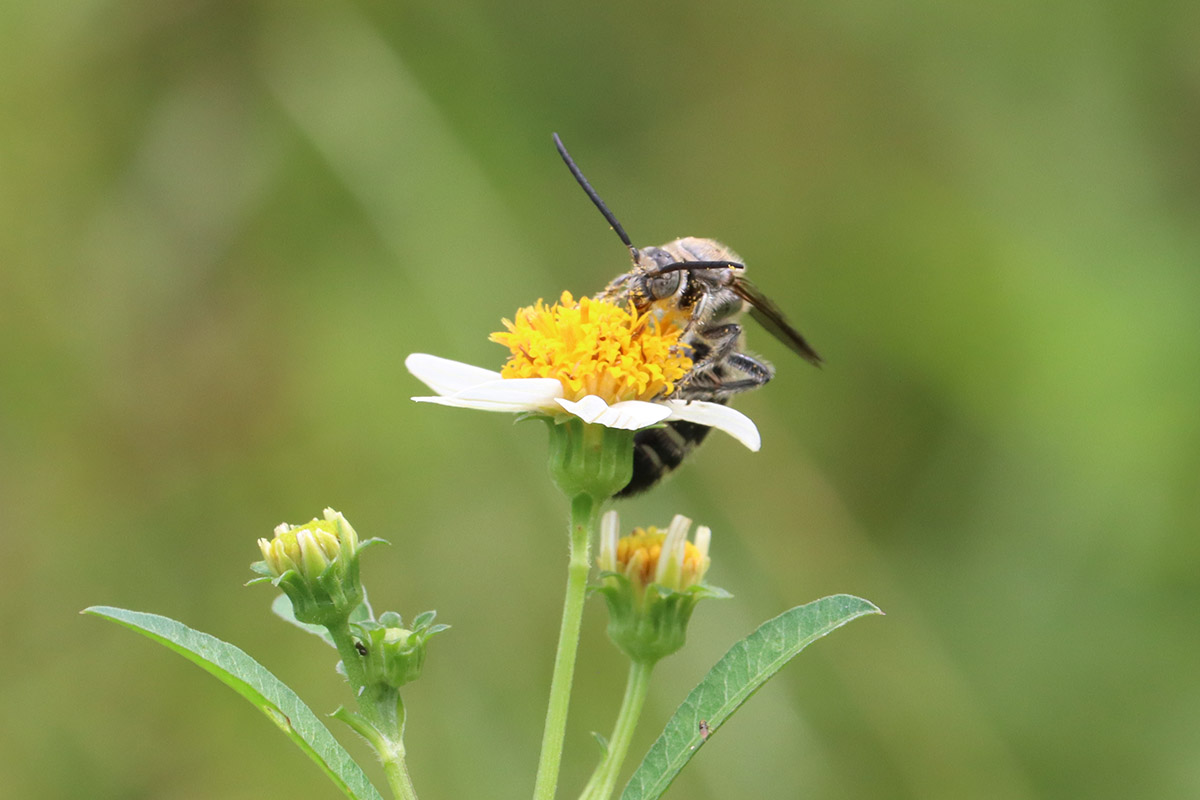
June was hot and dry, and now it’s raining just about every day. The wildflowers are loving it, as are the bees, wasps, and butterflies. We have many Bidens alba plants popping up, and I’ve tried to confine them to where they won’t interfere with other plants. Here’s a wasp we saw a lot of in 2020, but not so much since.
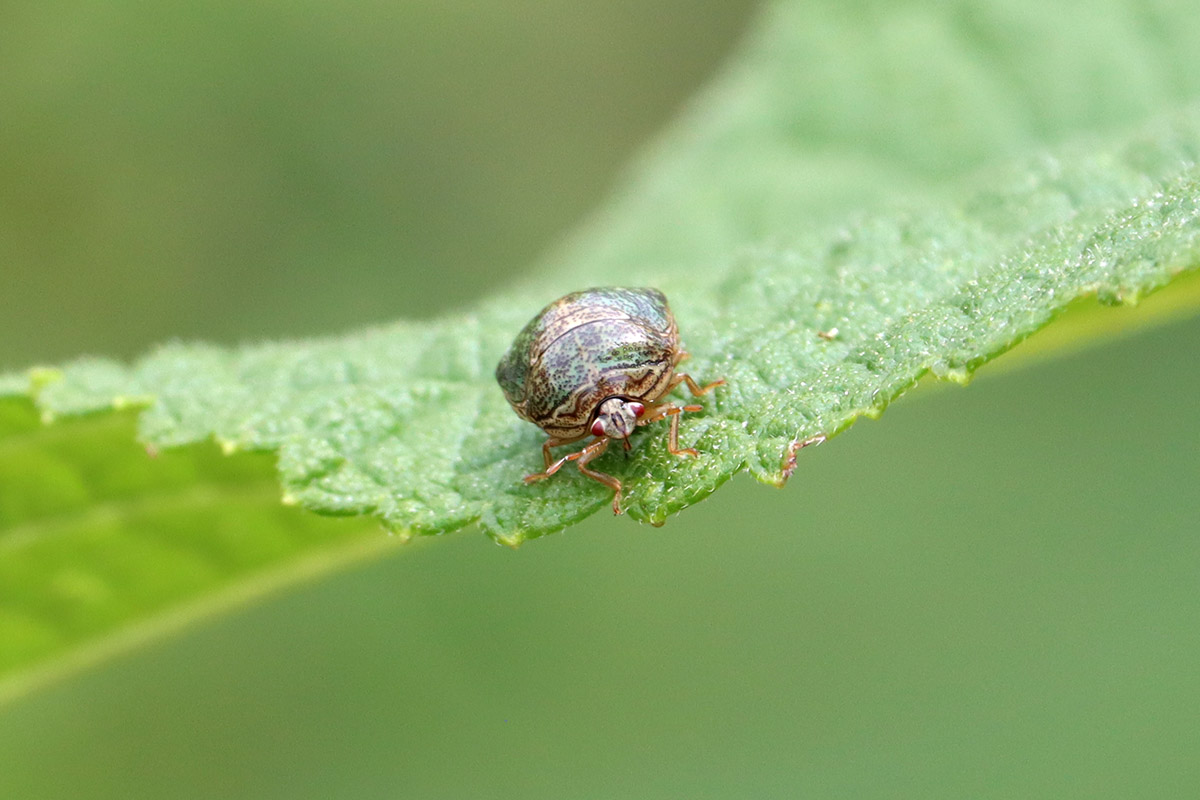
This is an invasive species from India and China. It eats legumes, which include beans and peas, and are an agricultural pest.
I try to identify as many new species in the yard as possible. This is partially to satiate my curiosity, but also with the more practical aim of identifying whether a species is native, nonnative, or invasive. By the time I ID’d this one, I’d not see it again.
July 18, 2022
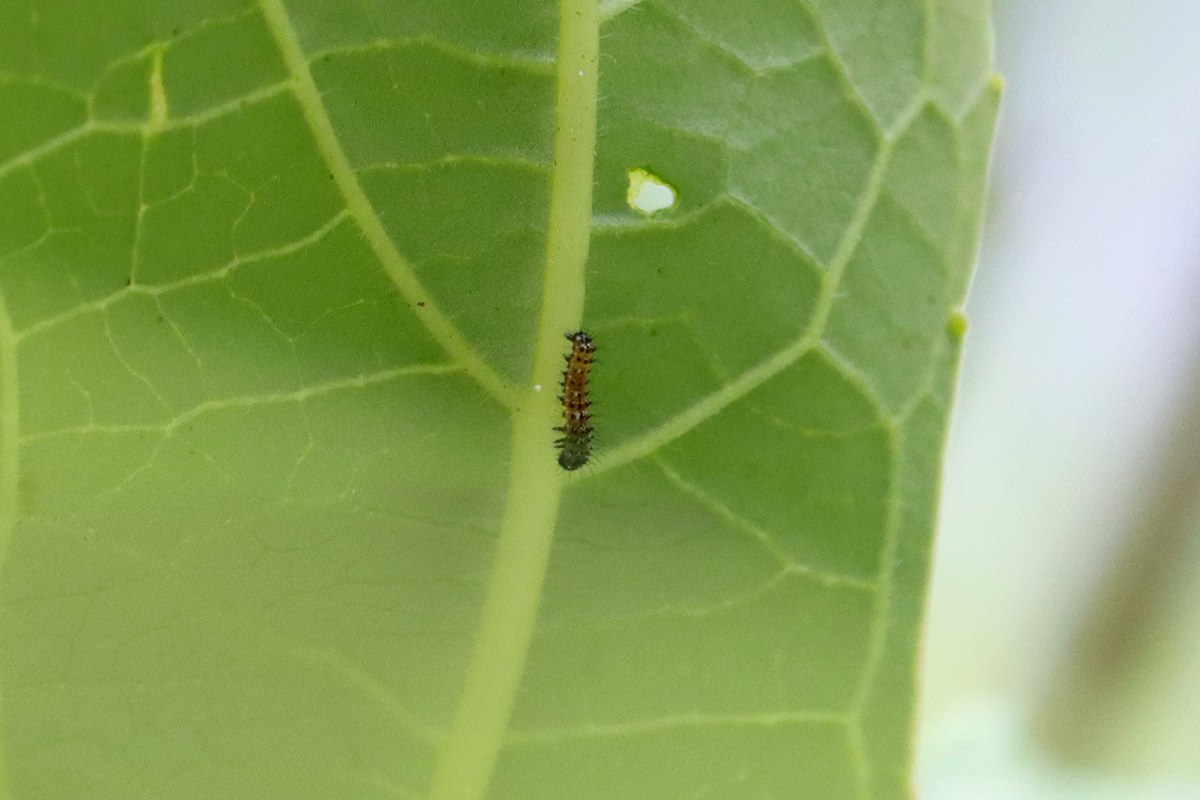
When caterpillars first hatch, they are small. Many will head to the growing tips of their host plants, or to flowers. They may also seek shelter under a leaf, and can be hard to find on a particularly leafy plant. They give themselves away by having to eat. You see one small hole on a leaf, carefully turn it over, and there it is.
Passionvine and gulf fritillary caterpillars are new to the yard, and so I documented their life stages in a separate post. I’ll try to avoid too much overlap, but I do want to incorporate their activity within the context of the rest of the backyard ecosystem.
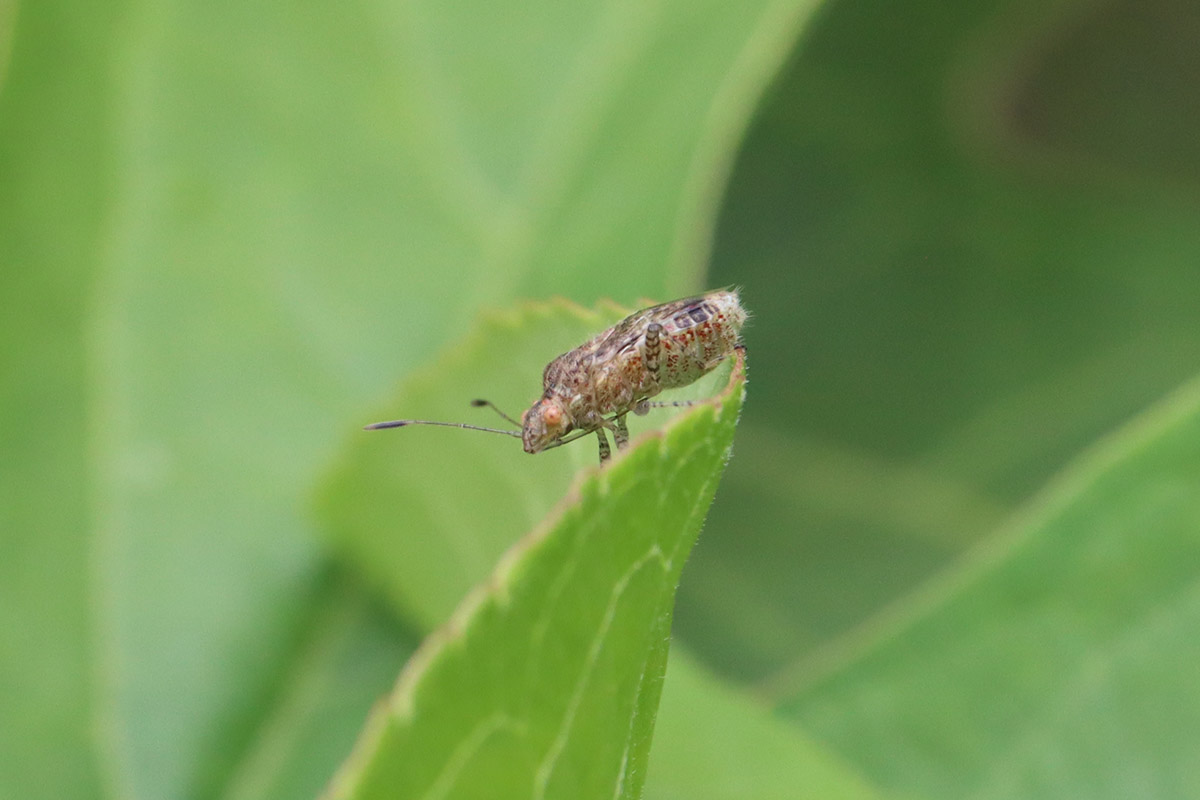
Here’s an insect I’ve been seeing for years. When I went to my old iNaturalist observations for it, I saw that someone finally gave it a common name- hibiscus scentless plant bug. They’re in the Rhopalidae family, related to other sap sucking true bugs such as leaf footed bugs and stink bugs. I first noticed them a couple years back when I saw cardinals pecking at fanpetals. When they were done I looked the plant over and found dozens of these.
July 19, 2022
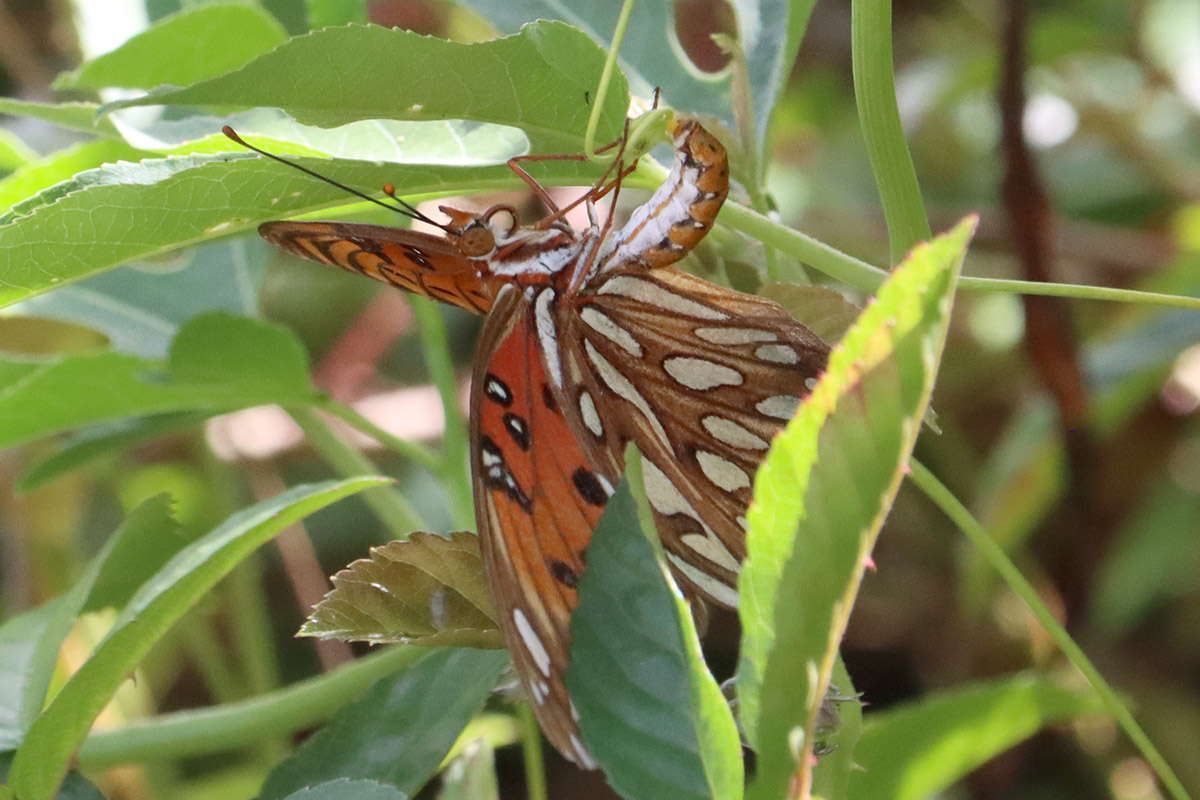
A day after spotting our first caterpillar, this gulf fritillary adult is laying more eggs. She lays them both on the passionvine and on the shrubs on which the passionvine lays.
July 20, 2022
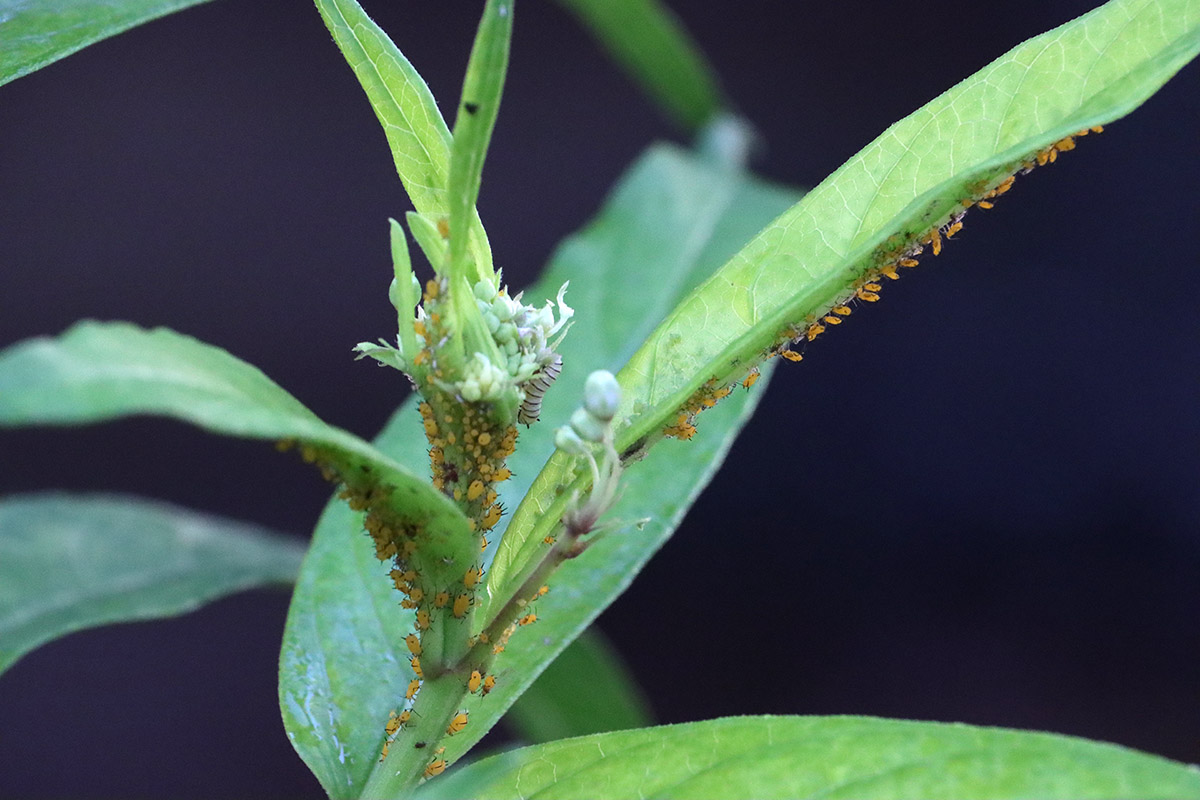
Last year I wrote a post about two studies regarding monarchs and milkweed. One of them focused on monarch survivorship on plants with other non-predatory insects. Perhaps these aphids give predators more options, and so increase a caterpillar’s chances of surviving.
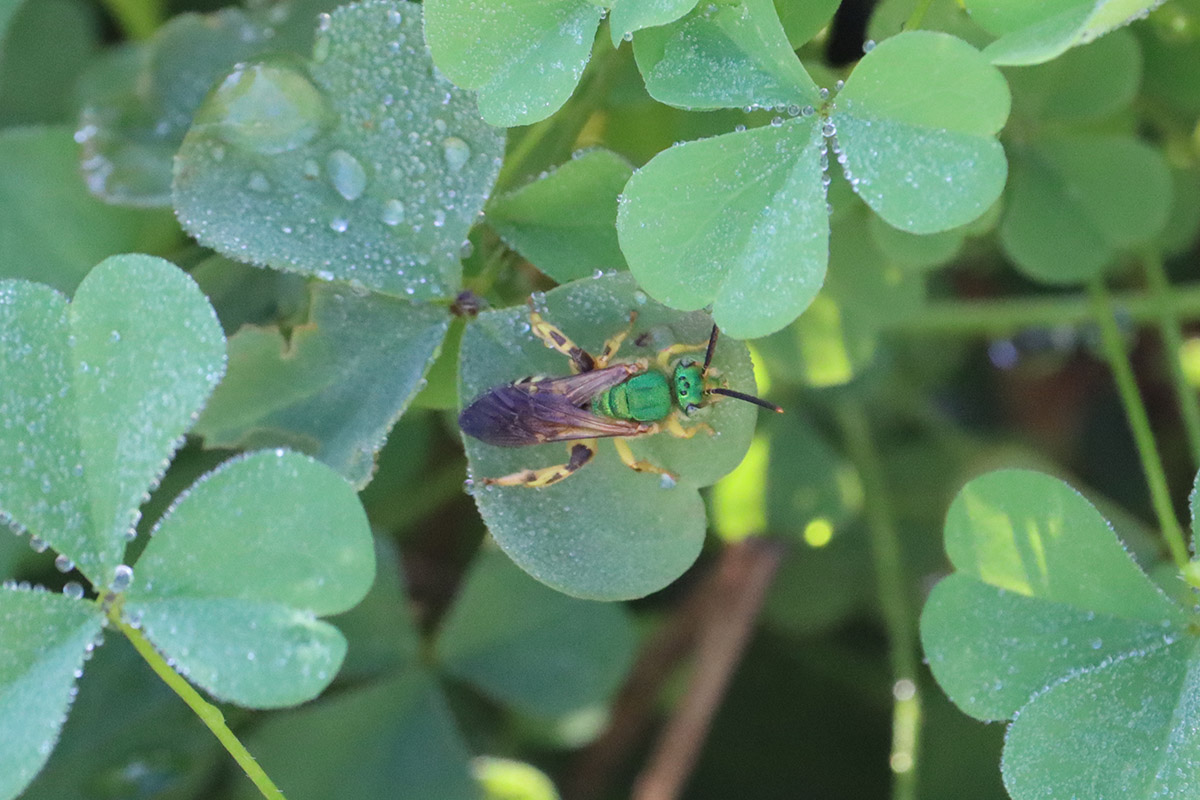
Usually, in August, we see dozens of male and female brown-winged striped sweat bees. It seems to coincide with the blooming of dotted horsemint in the yard. I don’t usually even see the males until August, at least not in our yard. About a month after I first see the males, the striped sweat bees disappear from my yard. For a couple of years, they showed up right around the first and disappeared right as September began. Last year they flew mid-August to mid-September. Does this mean they’re early this year?
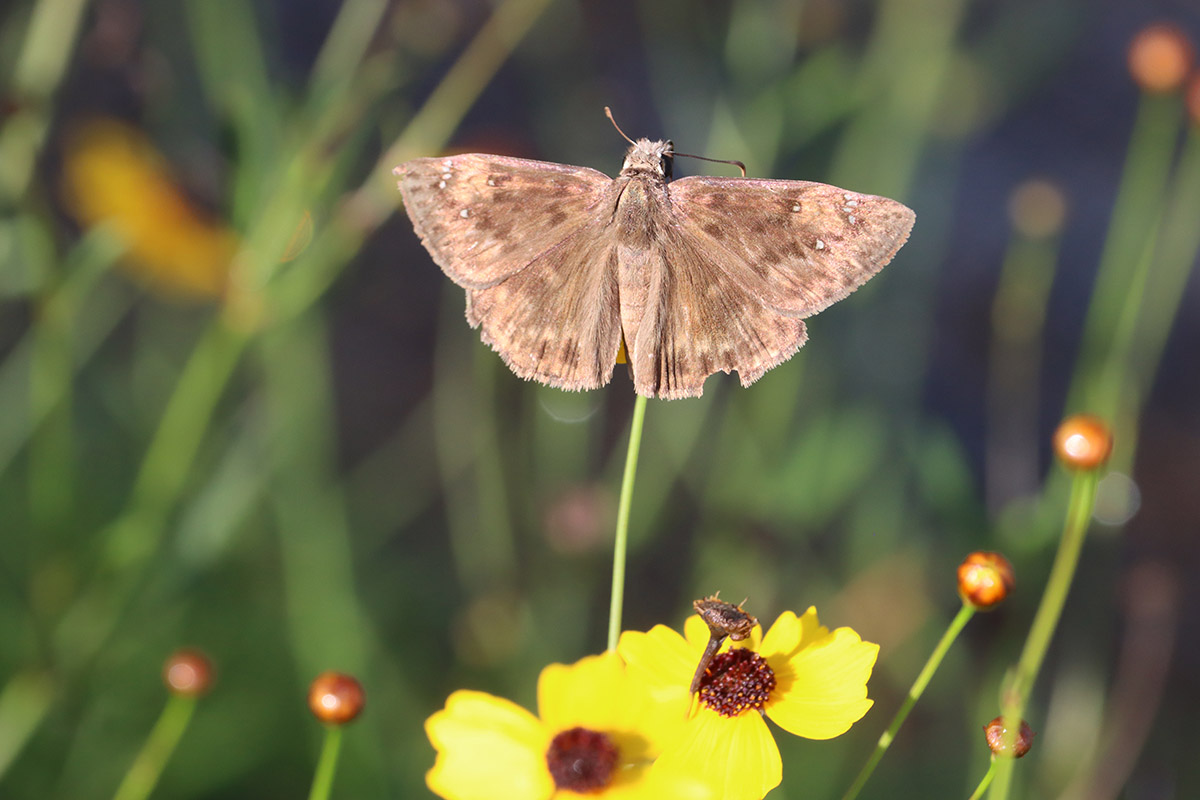
I haven’t seen this butterfly as much as in other years. Horace’s duskywings host on oak trees, and we lost ours. Oaks are, of course, very much common. I can see several from my yard. And even though our oak has been replaced with numerous native wildflowers, shrubs, vines, etc., I wondered how losing a large larval host for so many species would affect our insect population.
It’s hard to tell. The yard is much changed this year, and in any year, some species are more, or less, present. Overall, it’s been an active year, and one full of new visitors.
July 21, 2022
Where to start today? I saw more than one butterfly species laying eggs, another new bee species for the yard, and yet another first sighting on the year for a returning bee. Let’s start with mating:
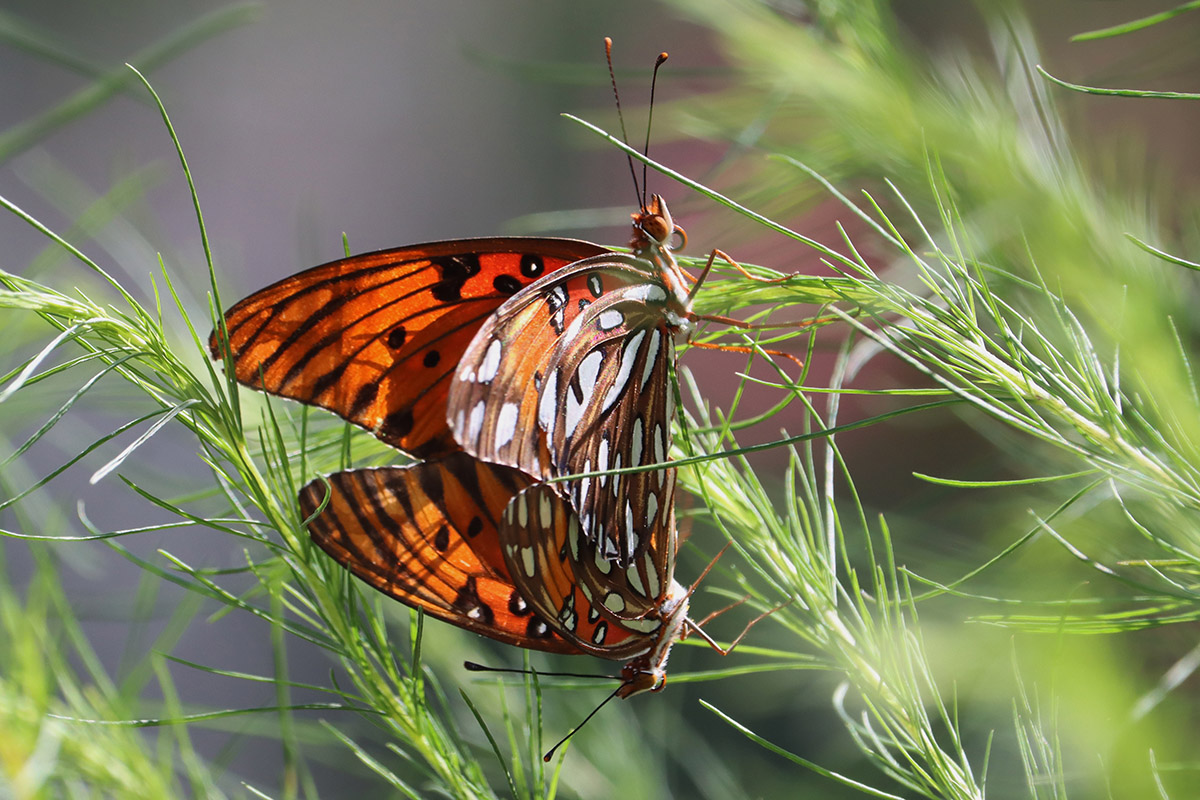
One of the natives that sprouted up when we lost our oak were a few dog fennels, which have grown tall. These are in the semicircle surrounding the stump garden, next to fanpetals and Bidens shrubs to which the passionvine has spread.
A little ovipositing in the garden.
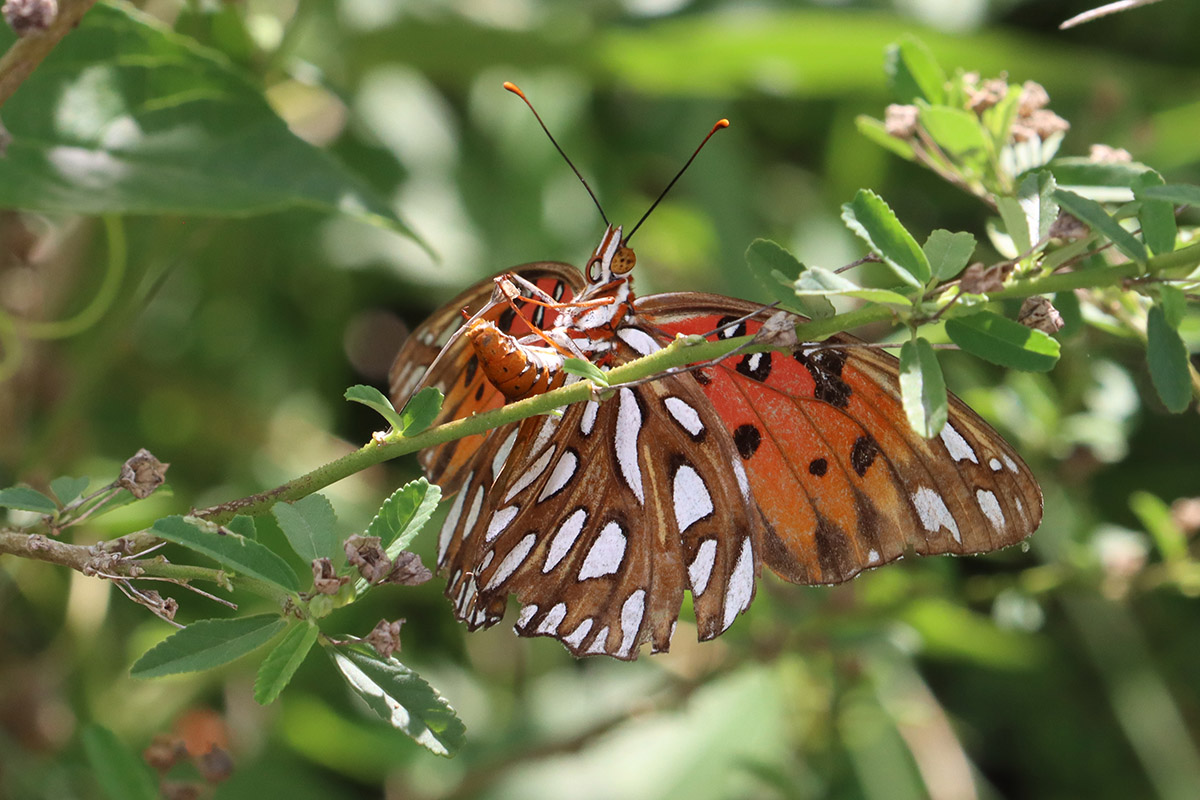
Gulf fritillaries often lay eggs on plants near passionvine. Seeing how cluttered with eggs passionvine can become, I can see how this strategy might keep an egg less conspicuous from predators.
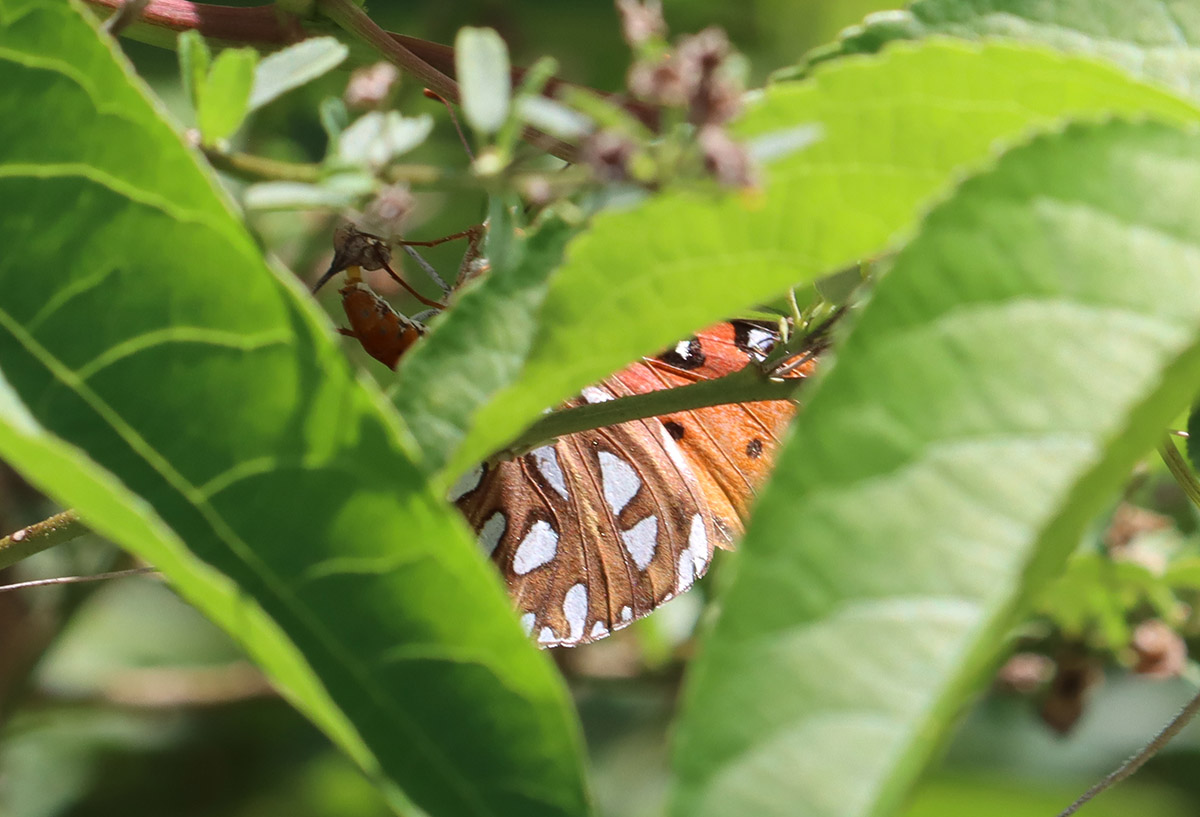
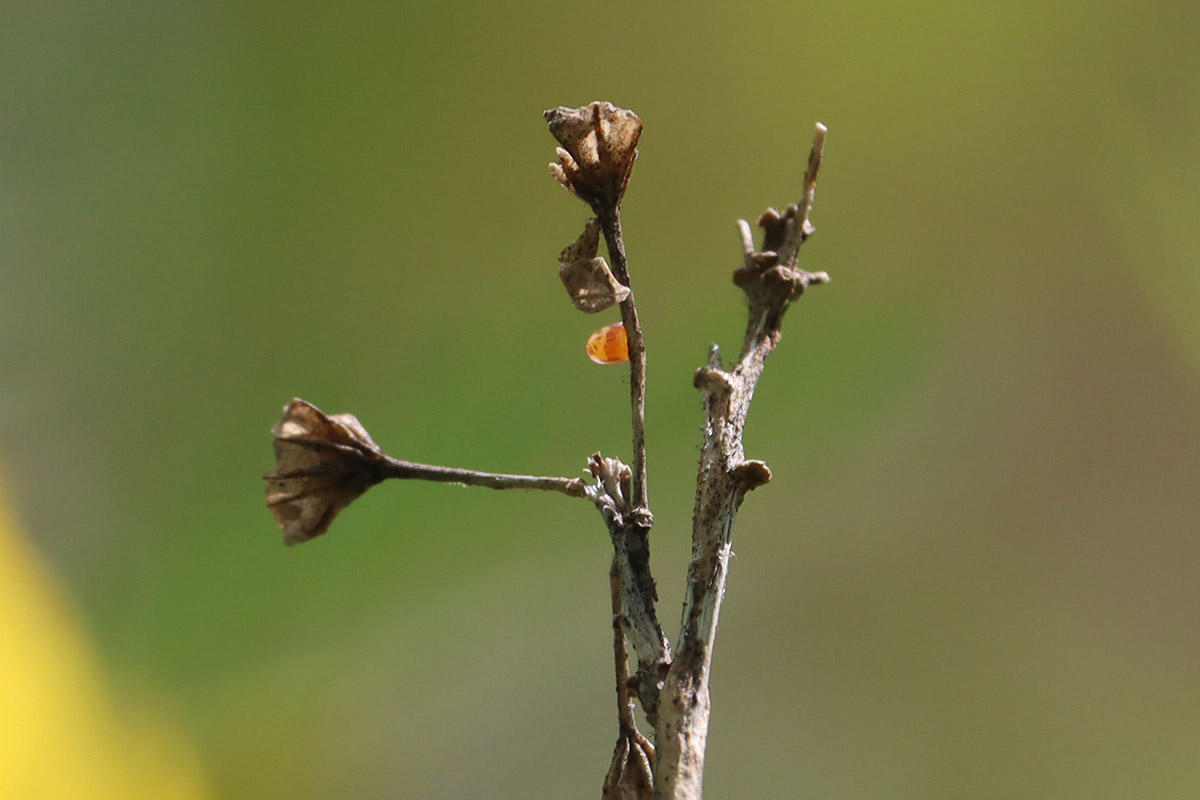
I saw a second butterfly species laying eggs on the fanpetals:
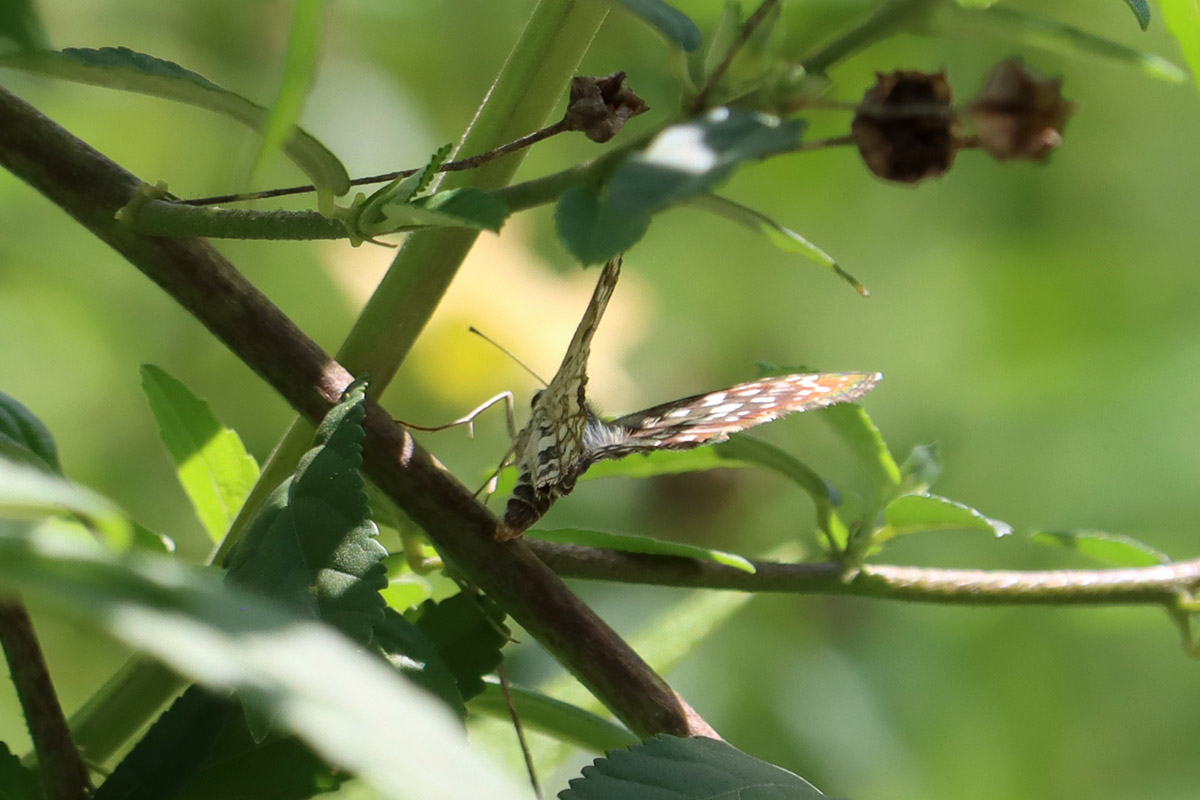
Fanpetals are the larval food plant for checkered skipper butterflies. And for as much as I’ve seen checkered skippers lay eggs on them, I have yet to see a caterpillar.
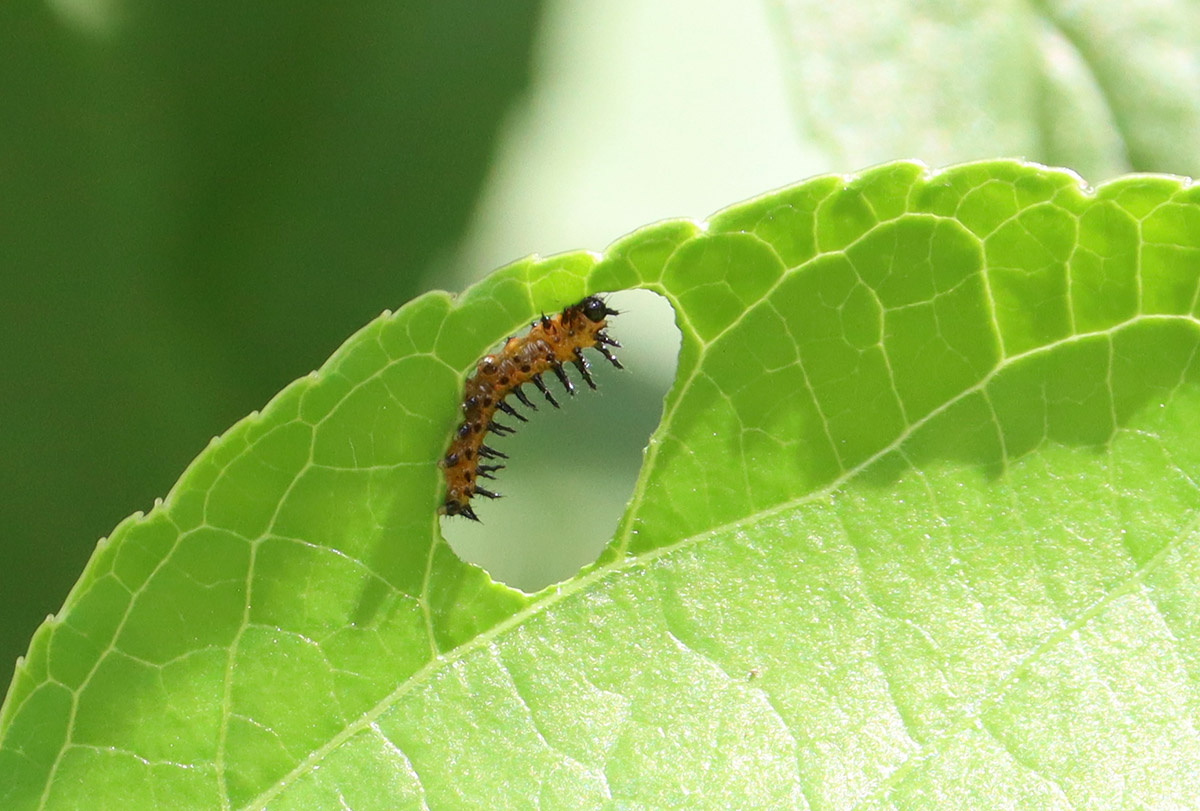
I am seeing a handful of gulf fritillary caterpillars. Based on the butterfly activity around the passionvine, I expect to see more.
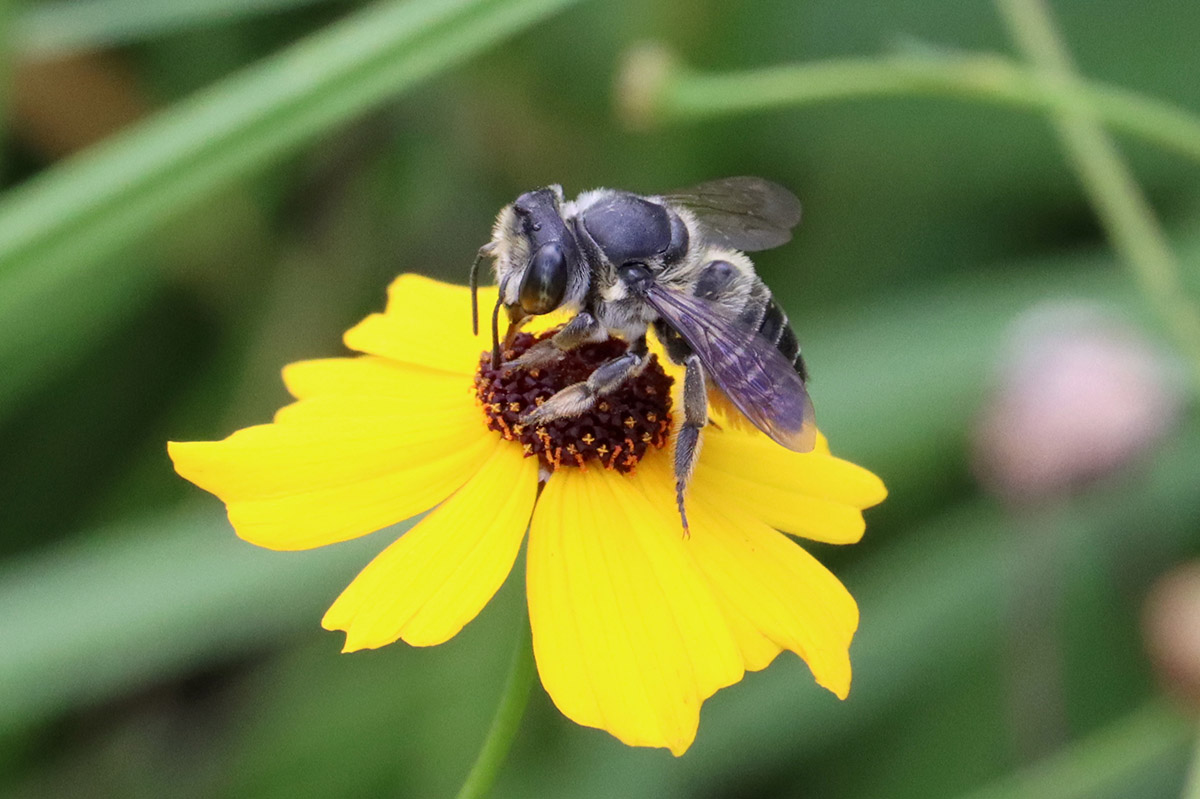
And here is yet another new species for the yard- the fourth in 2022 if you’re keeping count.
I have to give a shout out to the Leavenworth’s Coreopsis. I bought one plant in 2020. Its seeds spread and I had four last year. I have about twenty now, and many of these have gotten large and are blooming prolifically. You can see how many photos there are of these flowers compared to others in the yard. I highly recommend it.
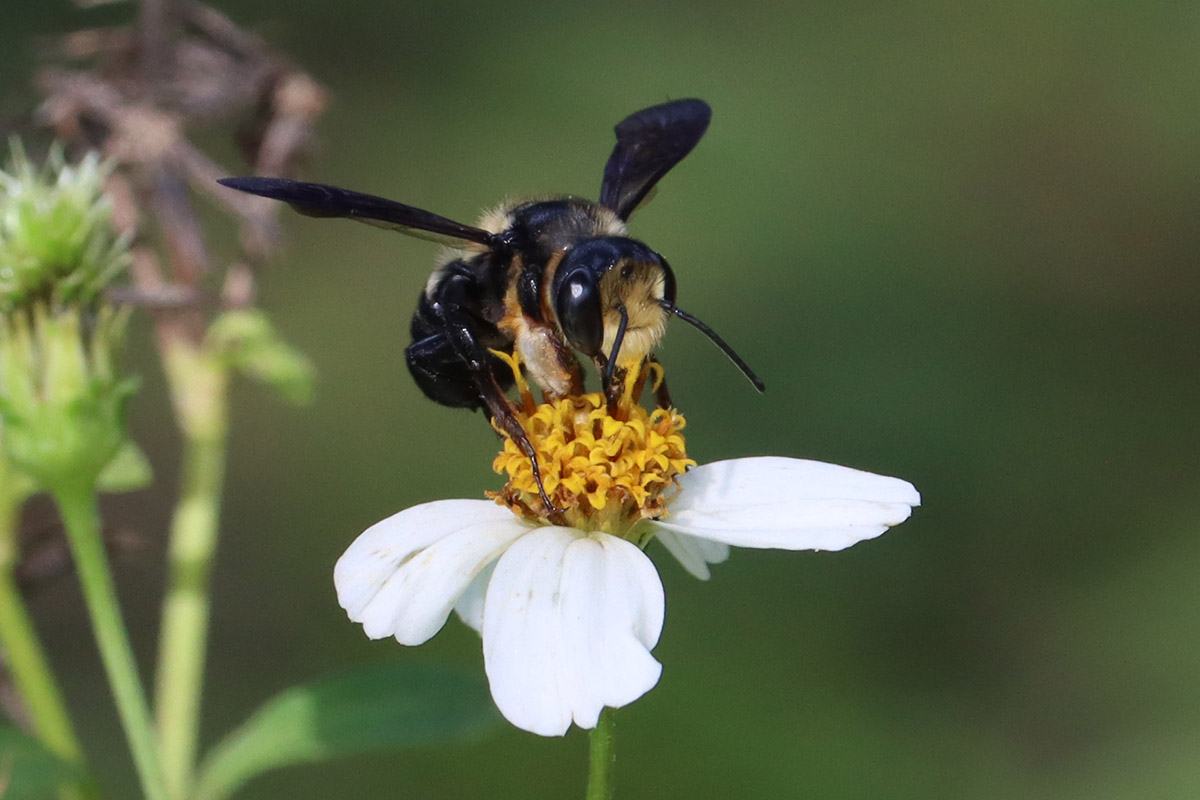
And here’s another leafcutter bee. We had a male carpenter-mimic leafcutter visit for a couple of days in 2020. This isn’t a common bee in our yard, so I’m happy to see it.
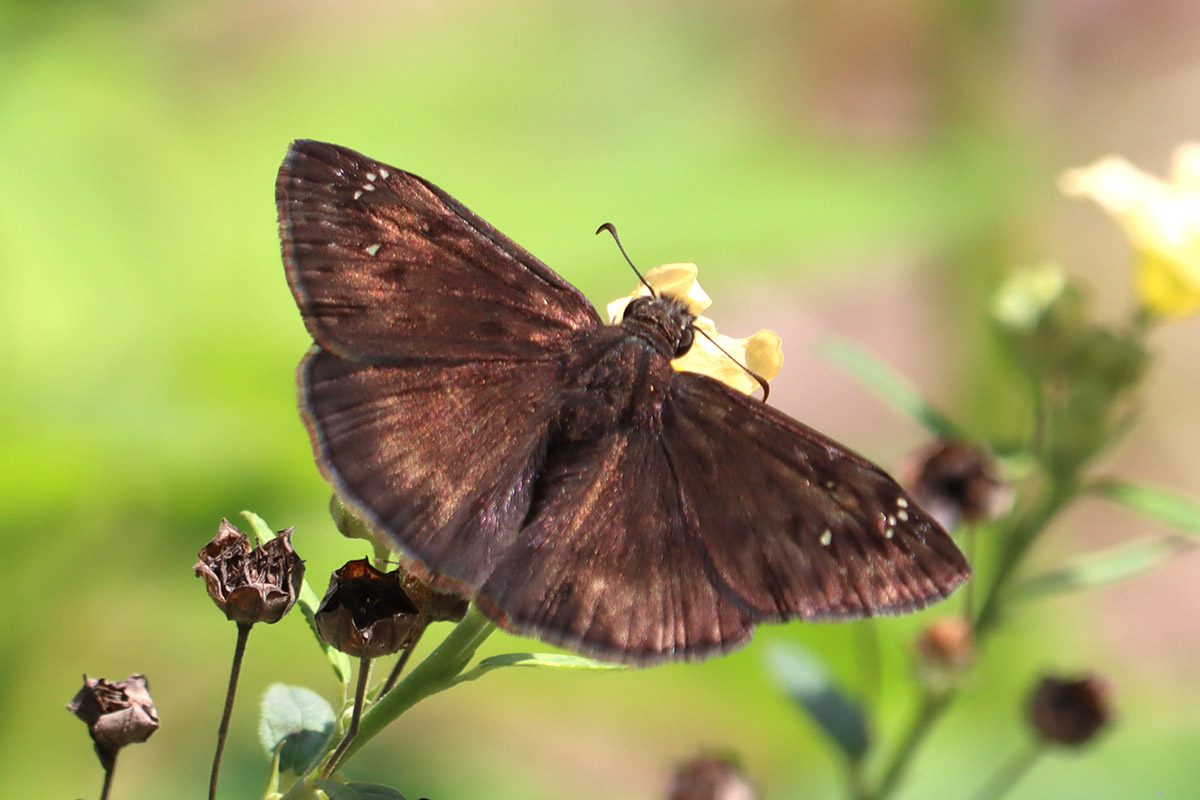
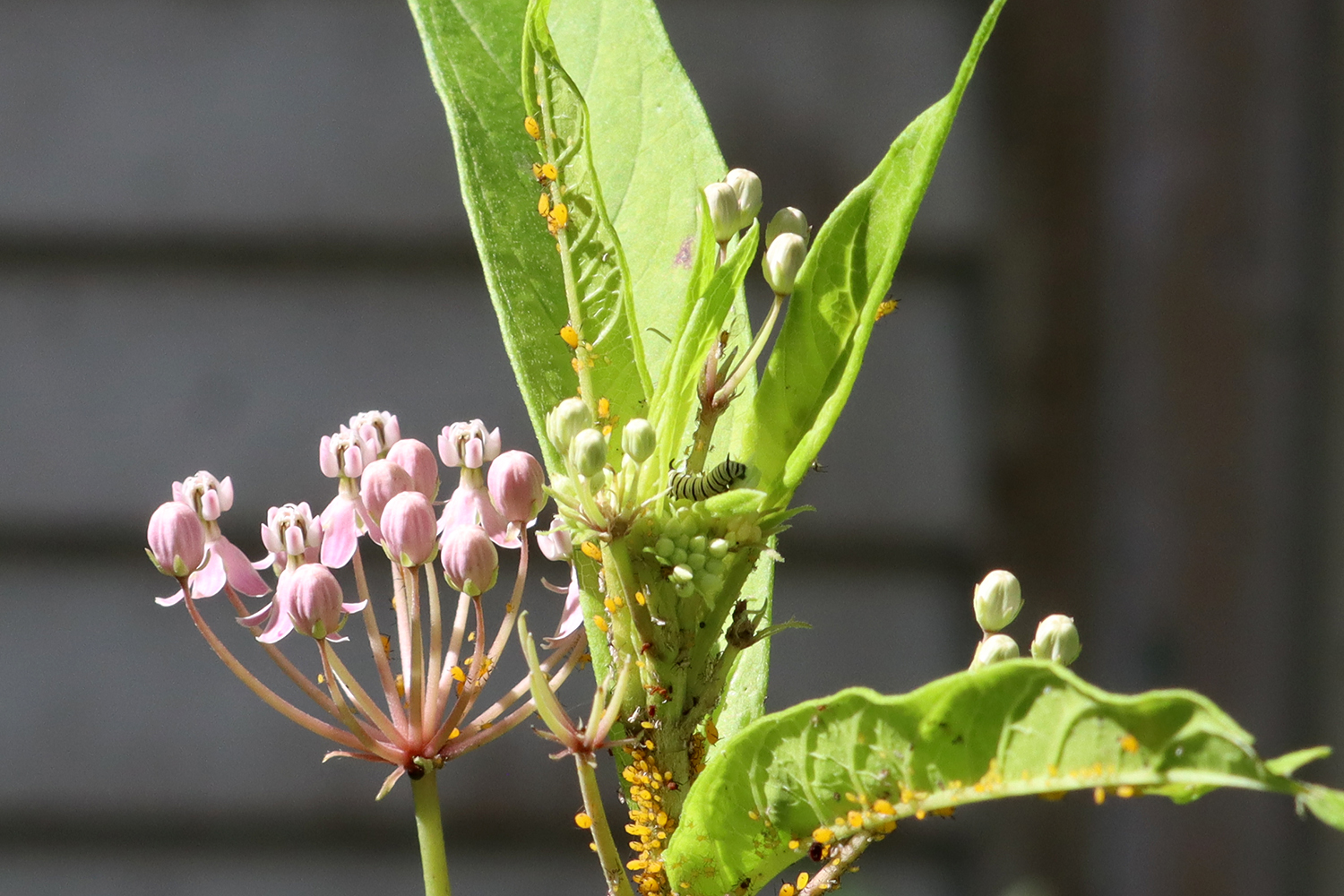
And here’s another look at the scene from yesterday. The pink swamp milkweed (Asclepias incarnata) has bloomed. And there’s something else I noticed:
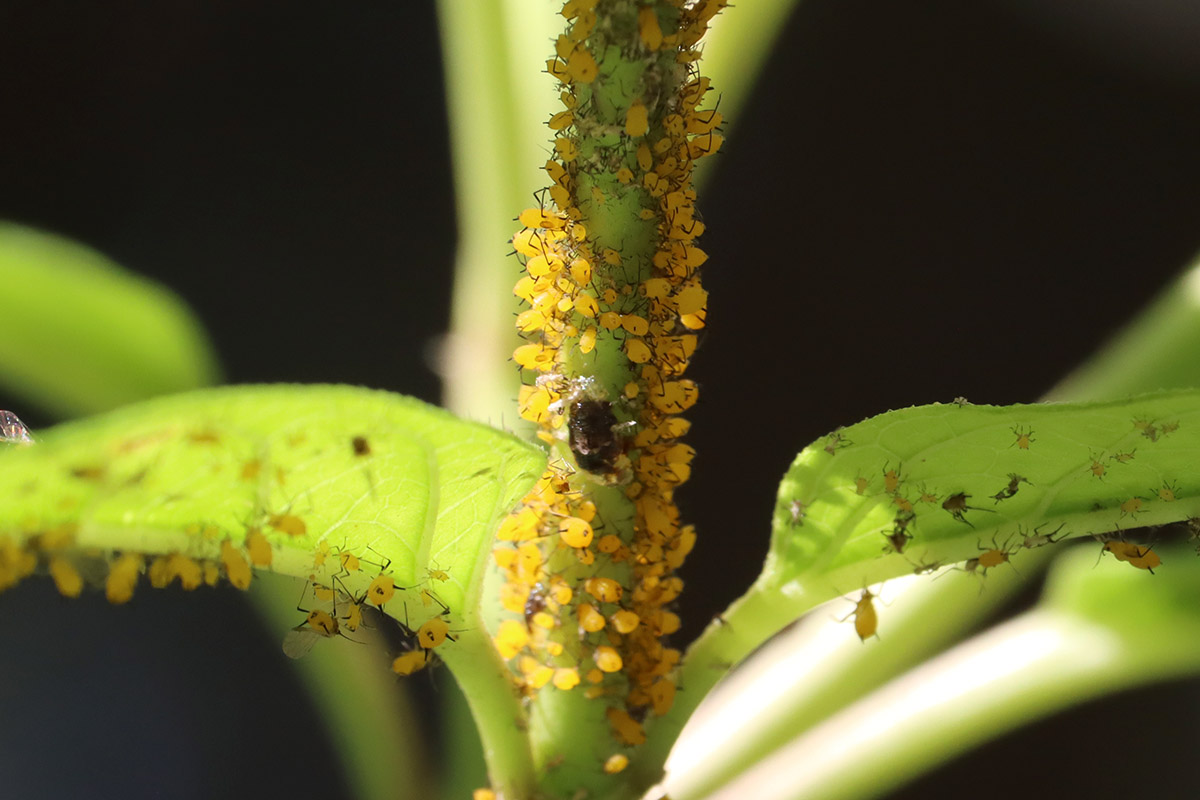
That dark spot is a hoverlfy larva, which eats aphids. Natural pest control.
July 23, 2022
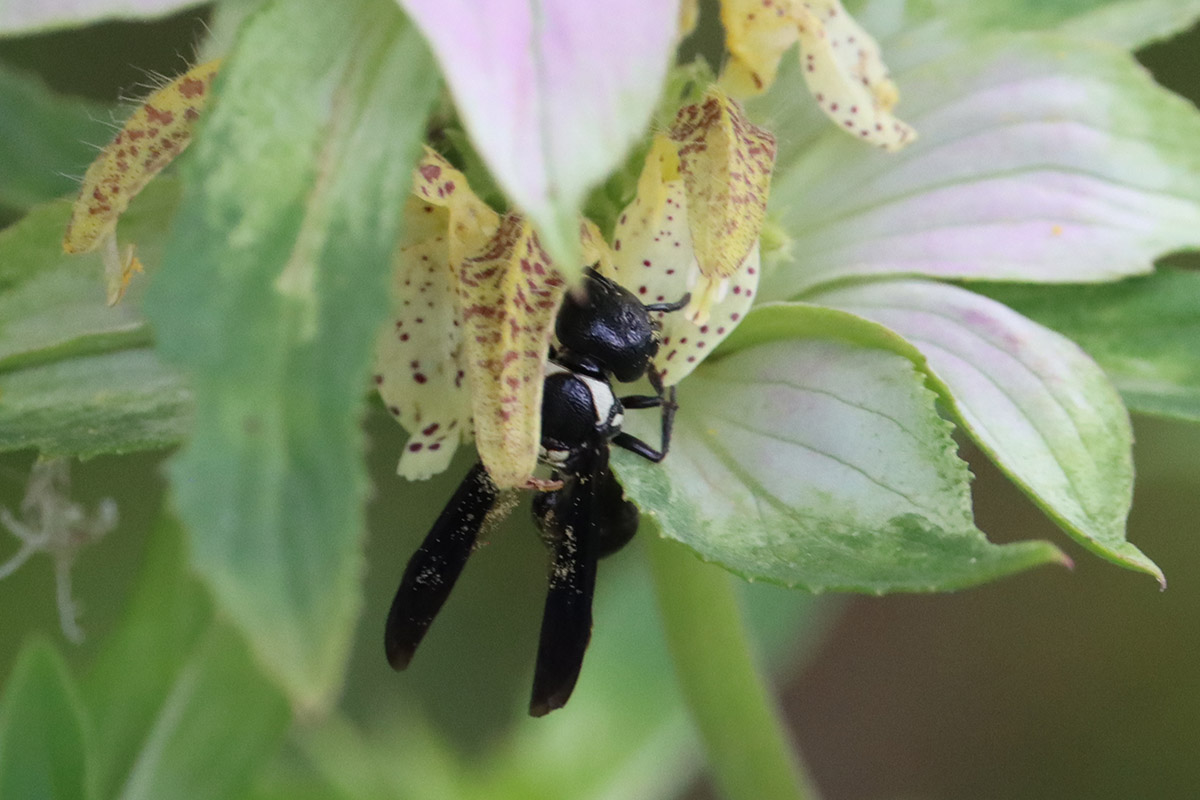
The dotted horsemint (aka spotted beebalm) is barely blooming, and it already has a visitor. The blooming of the beebalm, along with the Brickellia, which starts just after, is the massive month-long festival our pollinators celebrate to close out the summer.
Here’s a wasp that makes use of abandoned carpenter bee nests in our fence posts, but that rarely visits flowers in the yard. They share that characteristic with each other, but both are regular visitors to this flower.
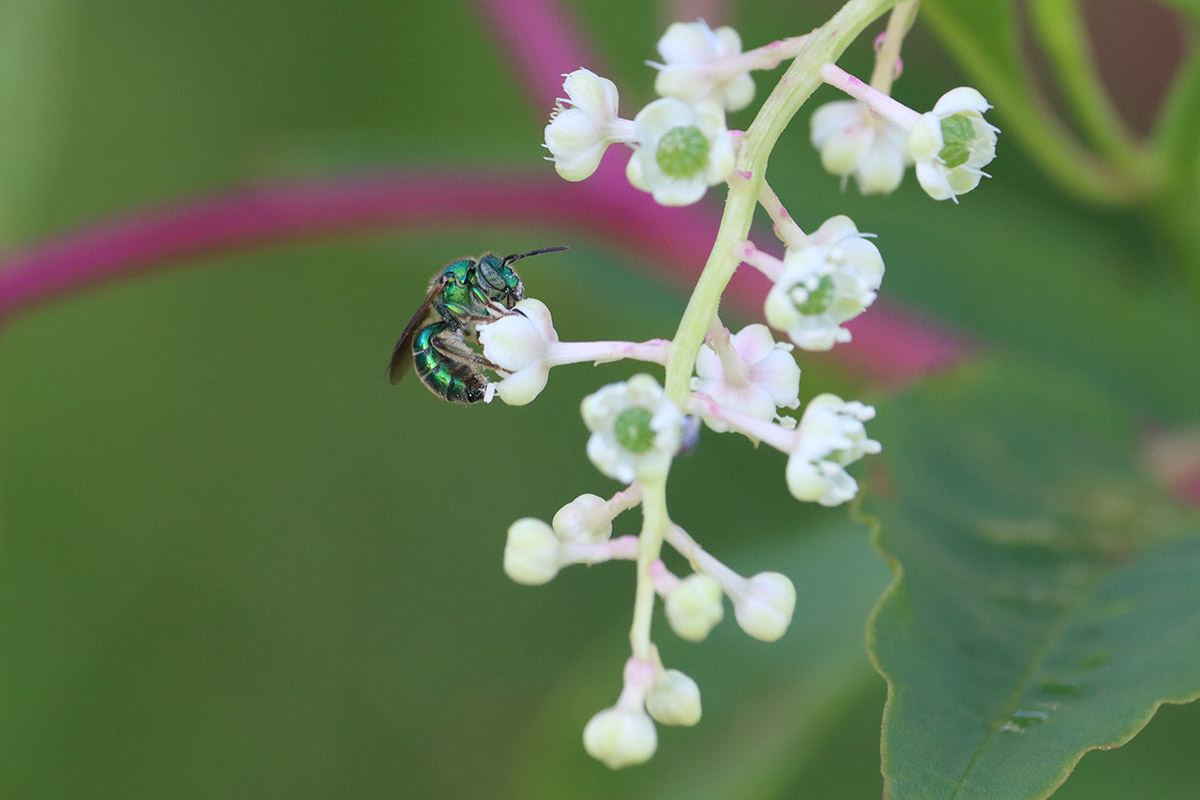
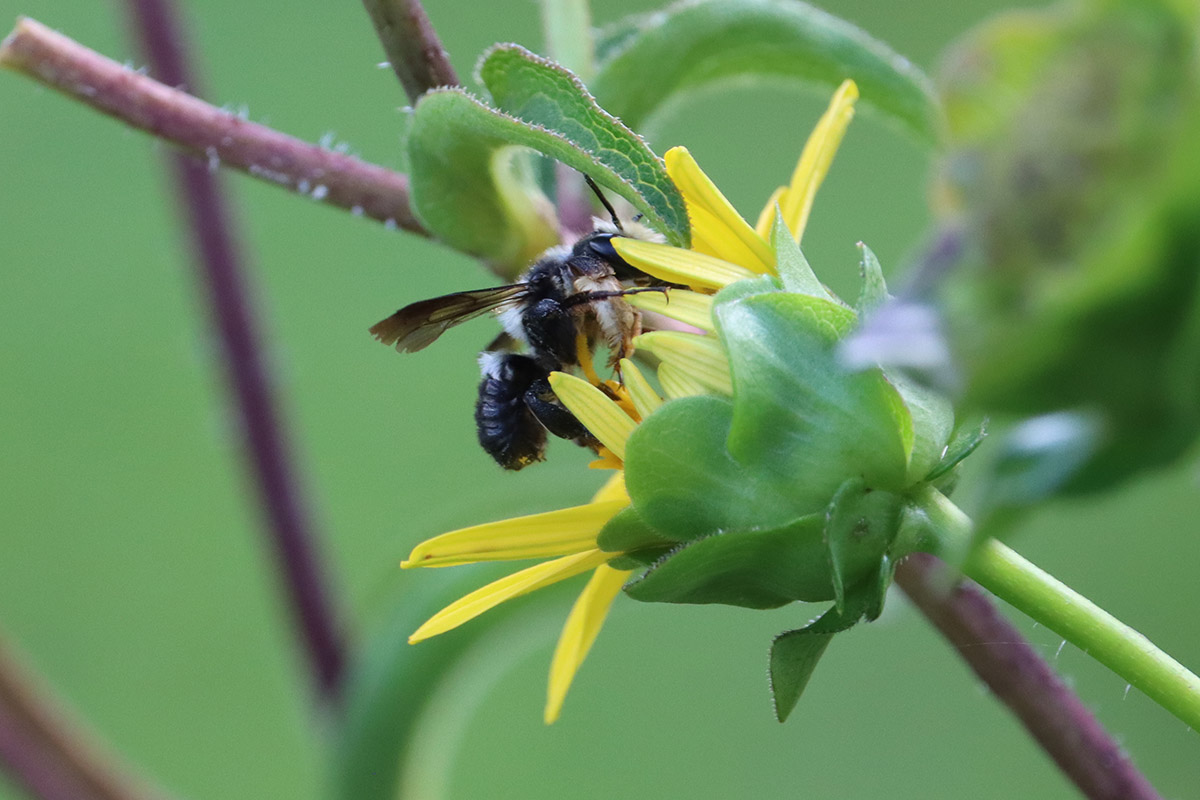
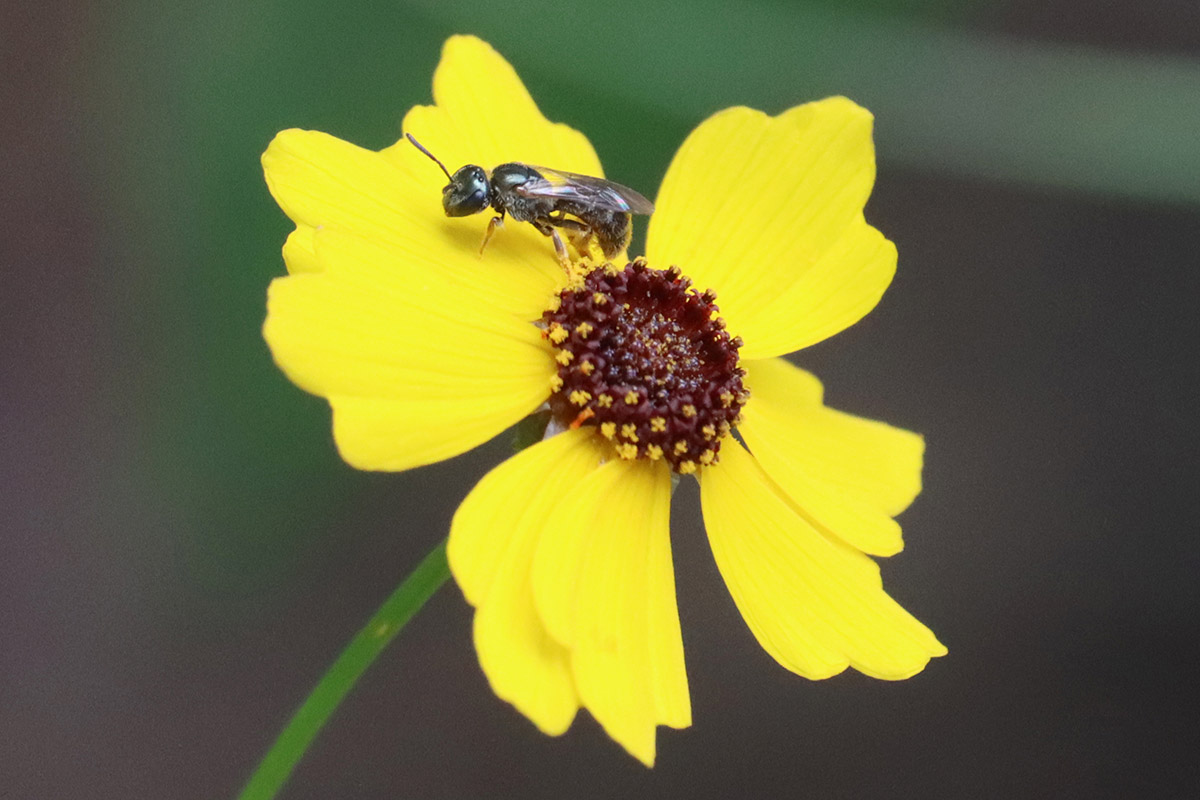
July has been active for bees in the yard this year. We’re seeing a higher diversity of bees than normal, and a higher abundance overall. I can’t wait to see how that continues during the beebalm/ Brickellia blooms.
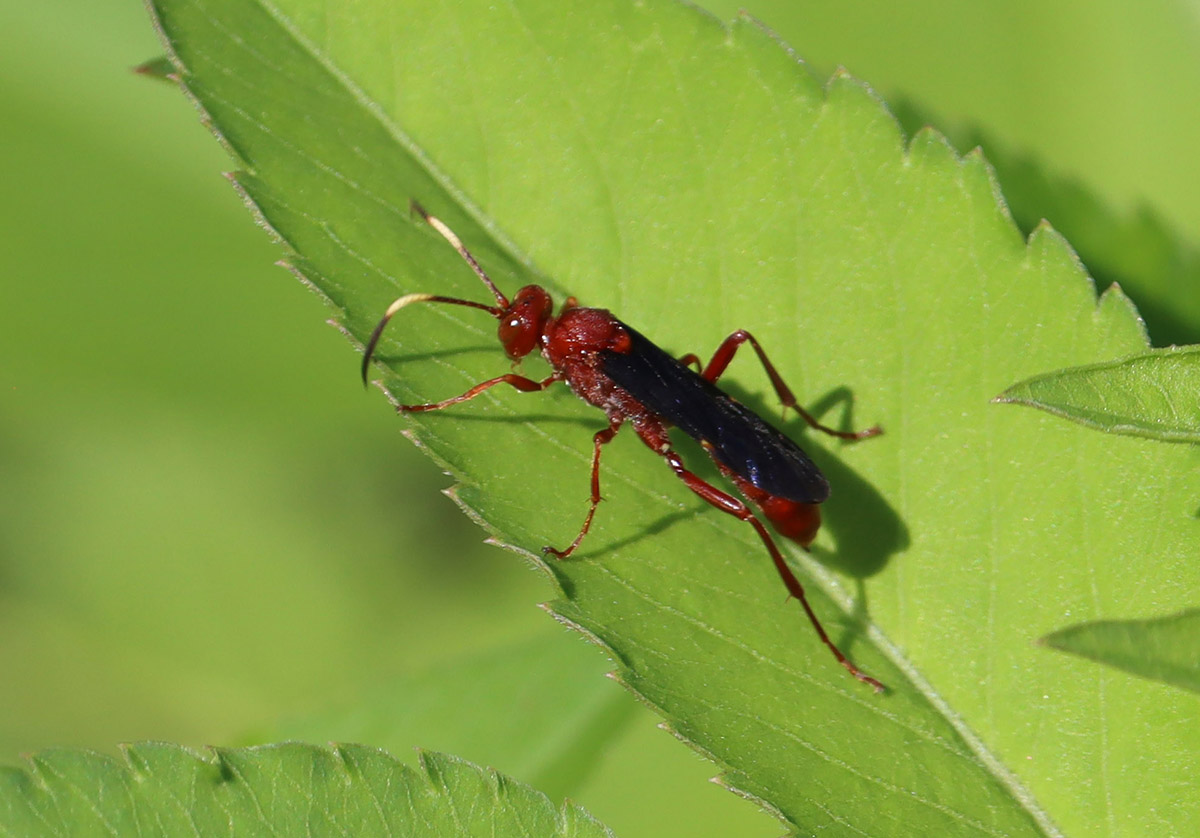
Here’s another parasitoid breeder. iNaturalist users couldn’t identify it more specifically than Ichneumonid wasp, which is a group with over 20,000 members.
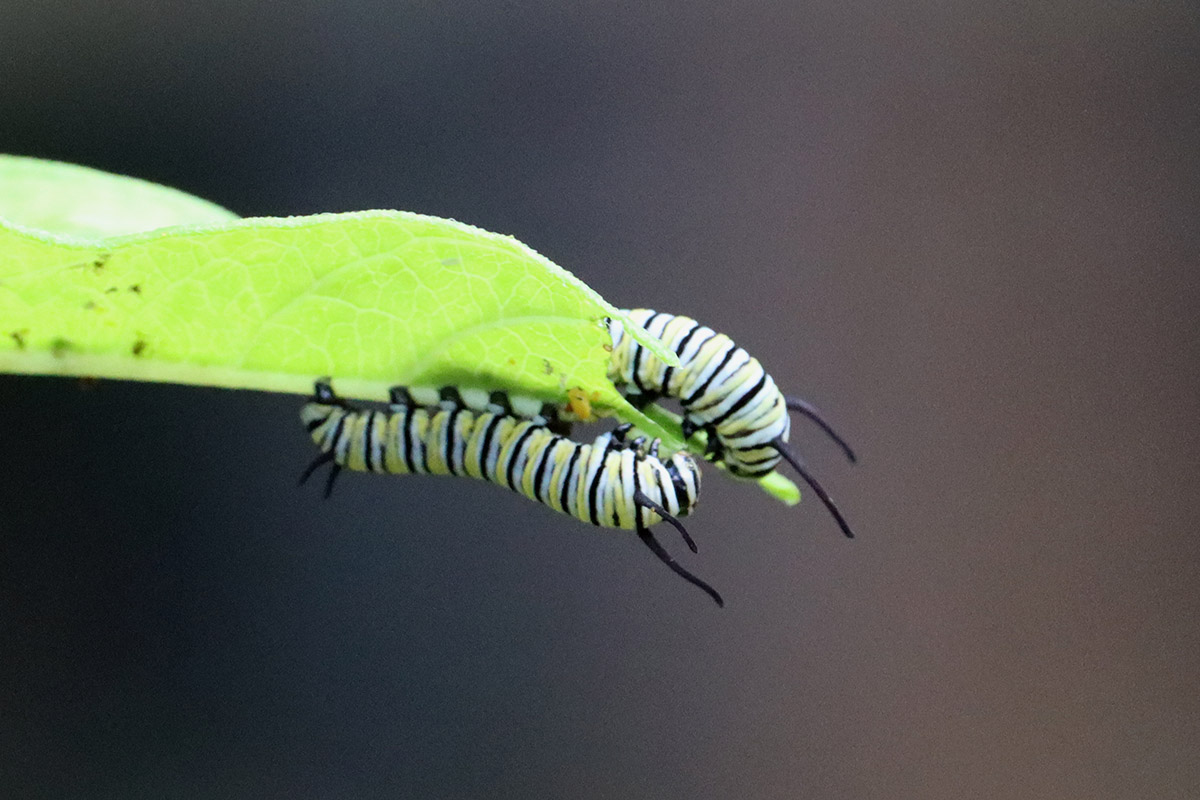
My guess is fourth instar for these caterpillars. This is typical of monarchs in recent years, where I only see one or two smaller caterpillars, and then one day start to notice many larger ones. Being good at hiding when you’re small is a good survival trait.
July 25, 2022
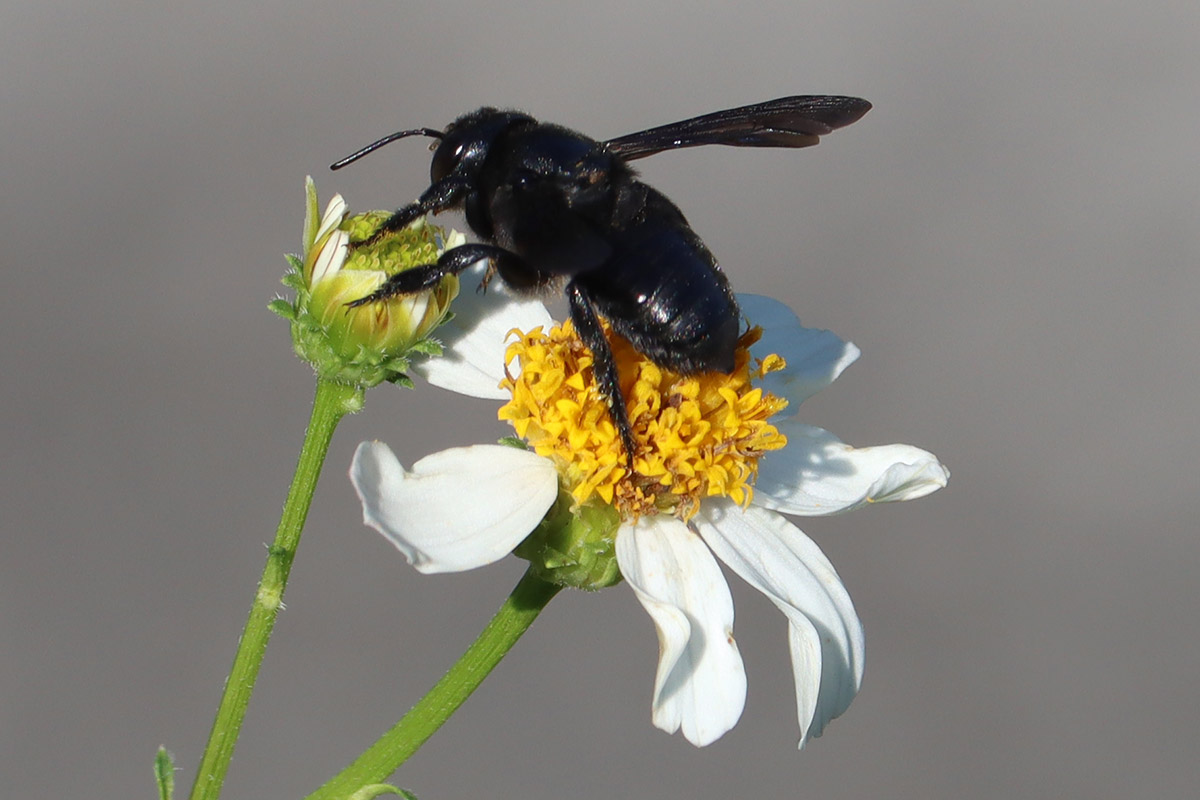
This is the first time I’ve seen a female of this species in the yard. The male we recently saw was also on Bidens, a plant which I haven’t had in a large abundance until recently. I think we have a breeding pair, and I wonder if having both means we’ll see them regularly.
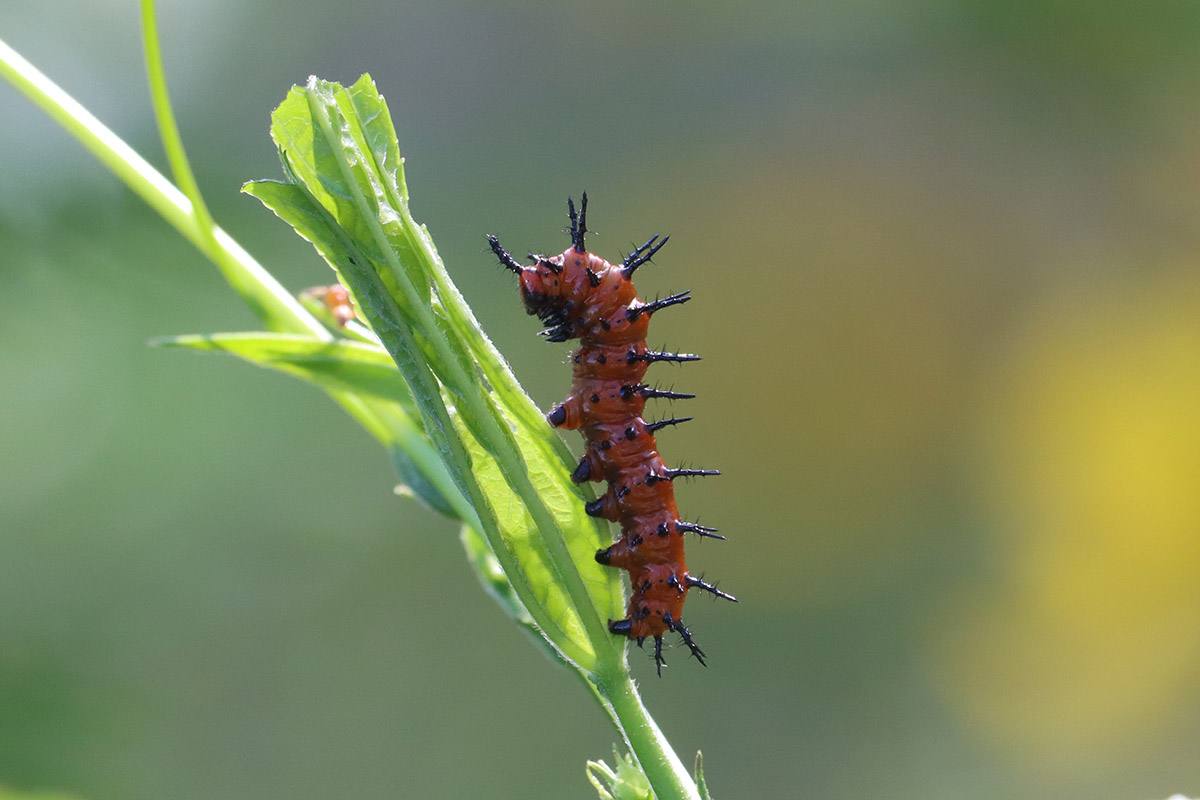
I’ve been filming these caterpillars grow, and they’re starting to get ready to pupate. Soon, I’ll move them into an enclosure to see if I can film one making a chrysalis.
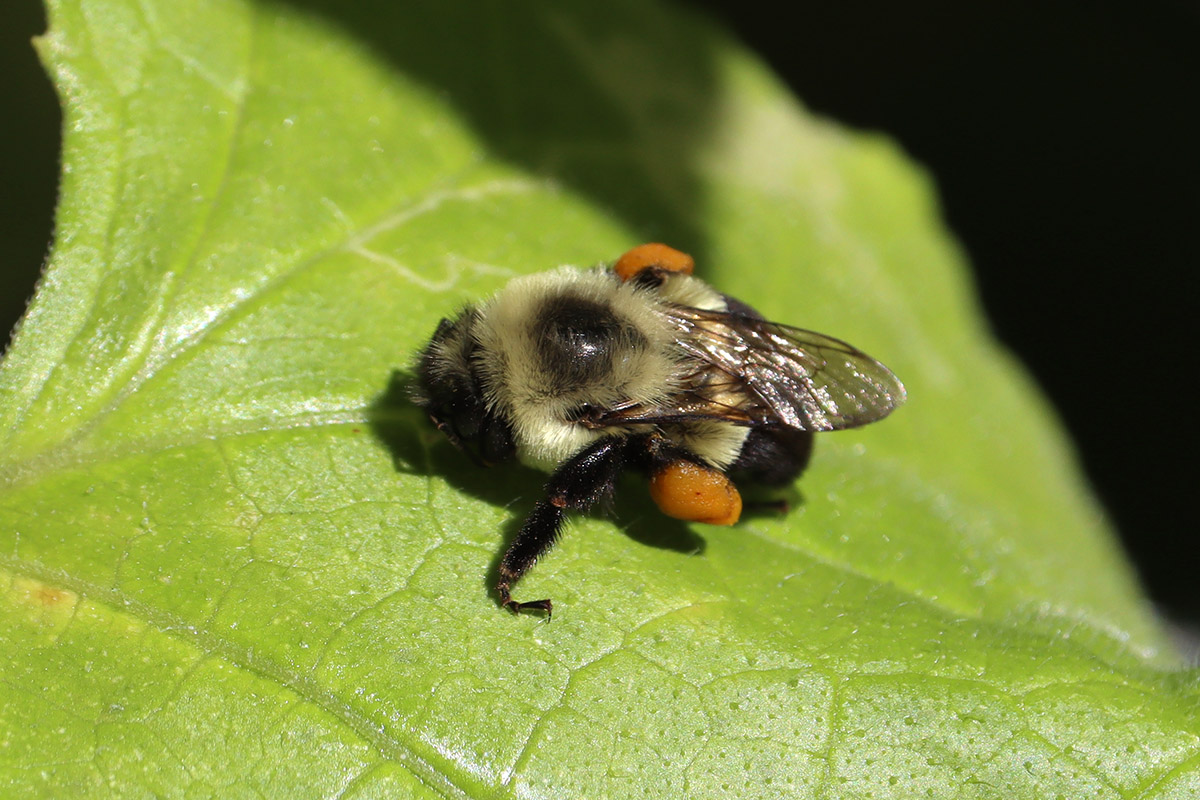
Every once in a while I catch a bumble bee resting. They look almost cuddly.
July 27, 2022
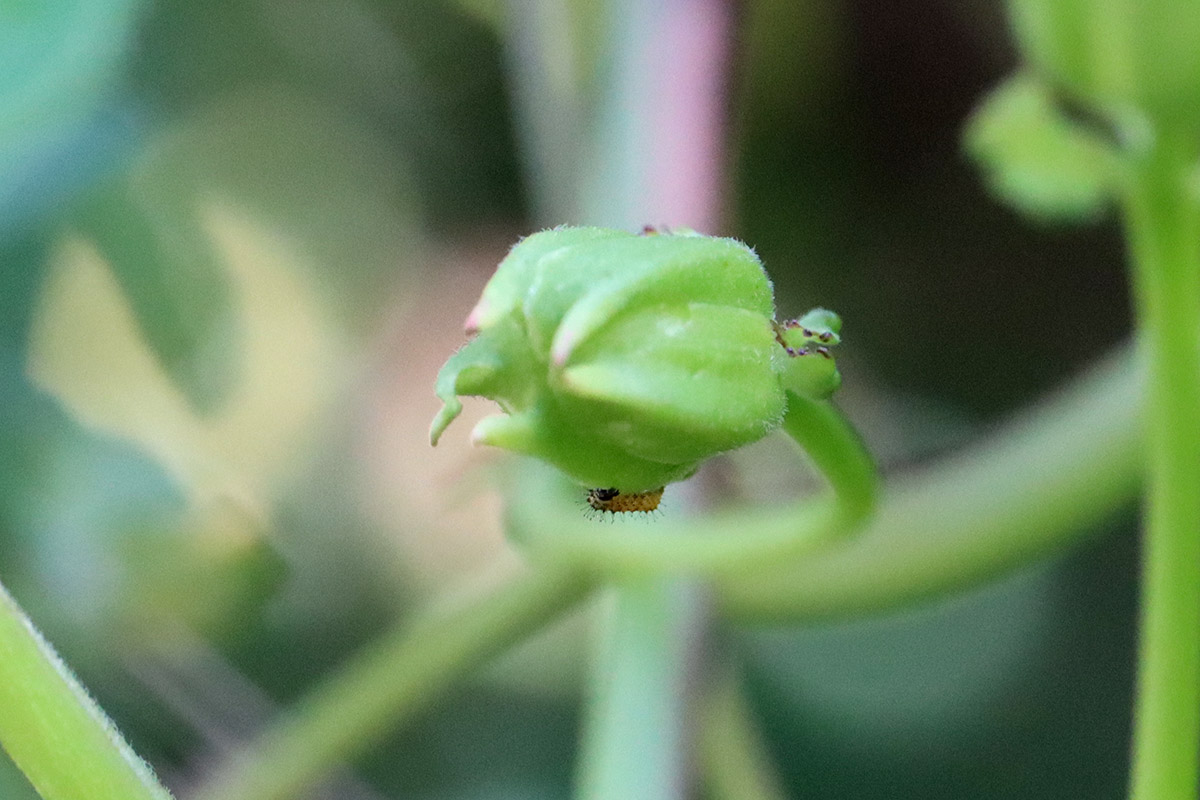
Our passionvine hasn’t flowered yet this year, but is now getting ready to do so. And what do I see on this developing flower but a second species of butterfly caterpillar that hosts on passionvine- the zebra longwing.
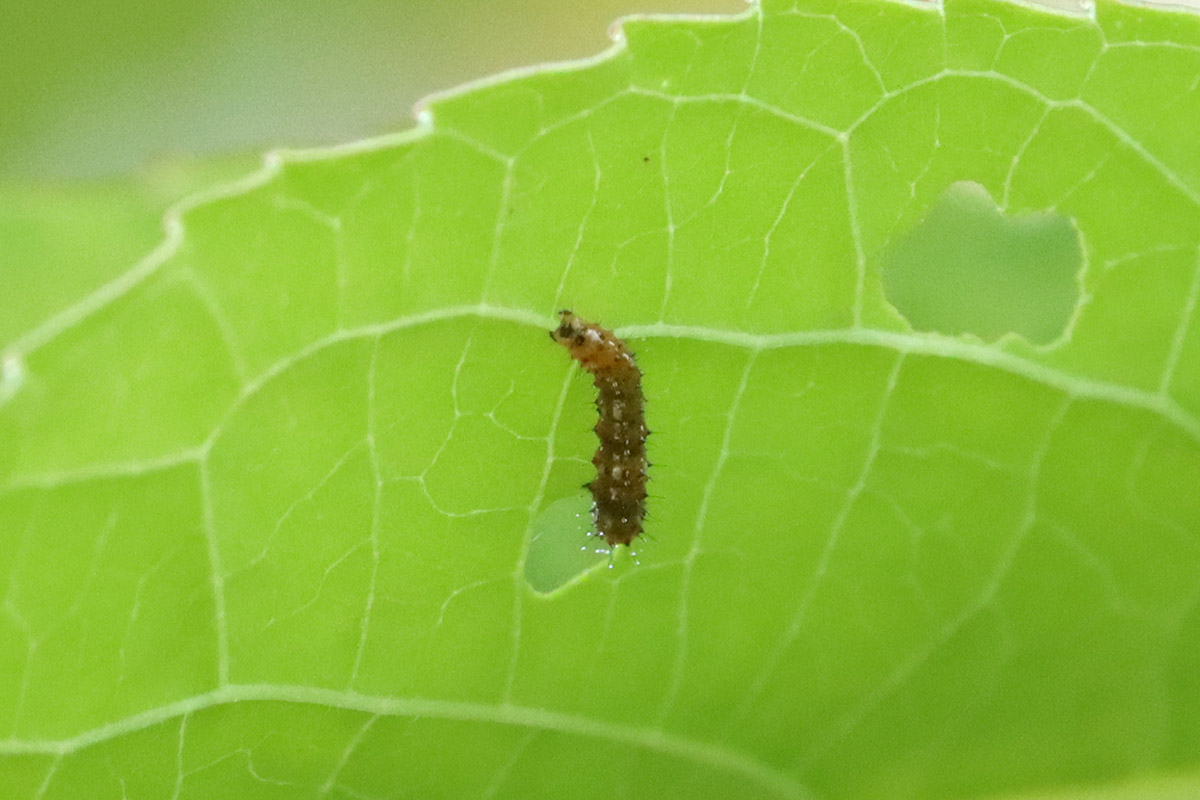
Here we see one of the caterpillars hatched from our recent egg-laying activity. For a good week now, gulf fritillary adults have been laying eggs daily on the passionvine.
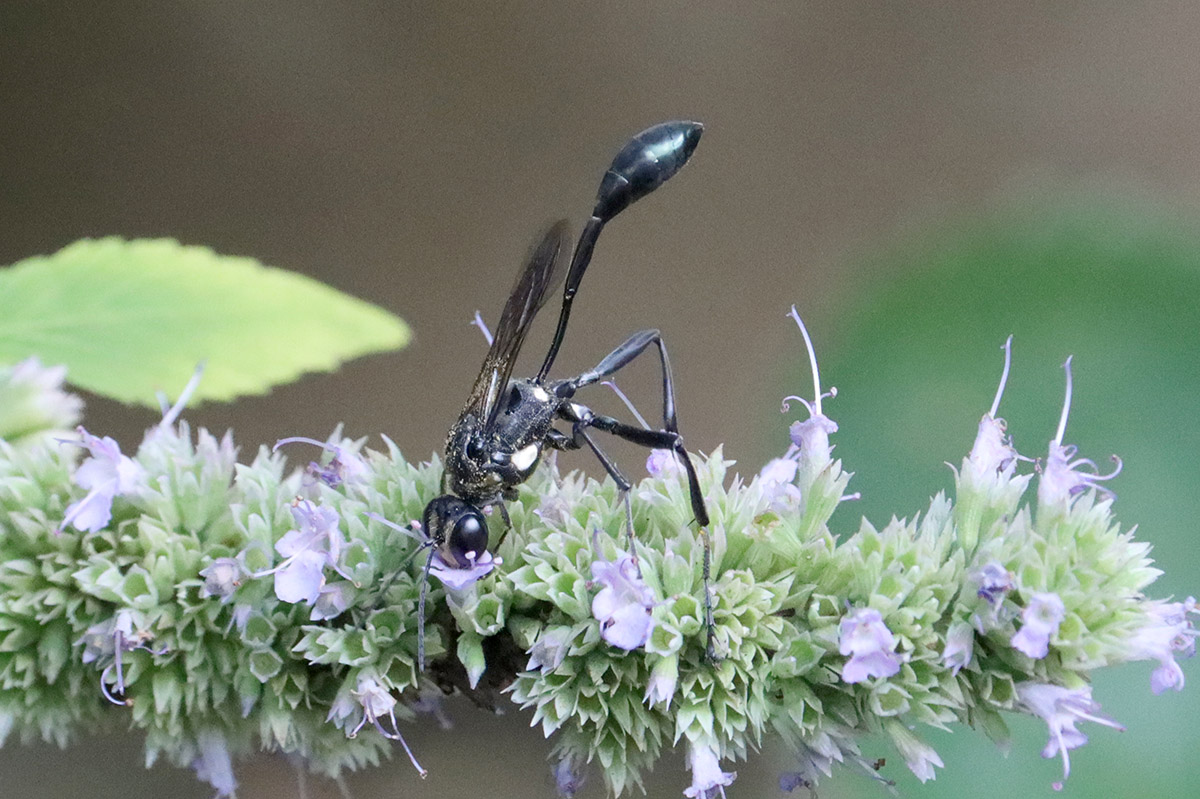
Here’s a nonnative plant I keep in the yard for pollinators. Anise hyssop is considered a medicinal herb, and various insects love its flowers.
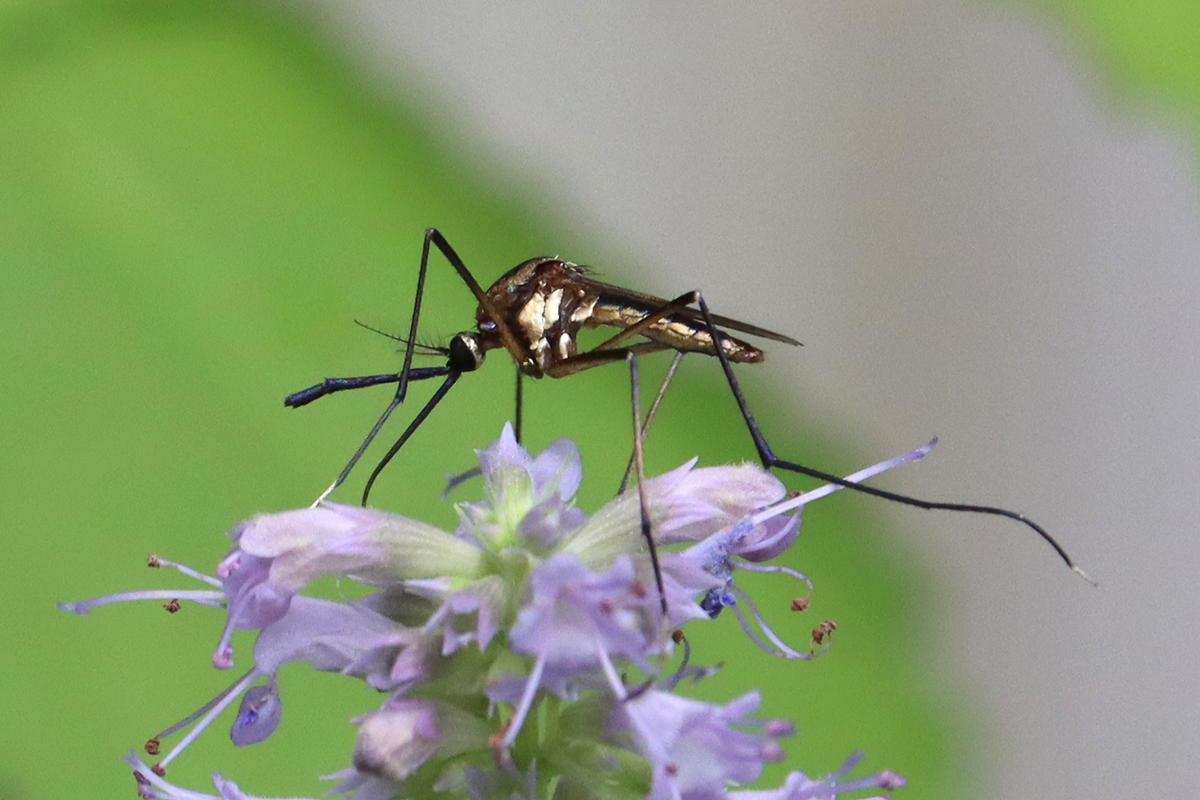
This is a native, predatory mosquito. I guess it also enjoys a little pollen, unless the microcrustaceans it hunts are somewhere in those flowers.
July 29, 2022
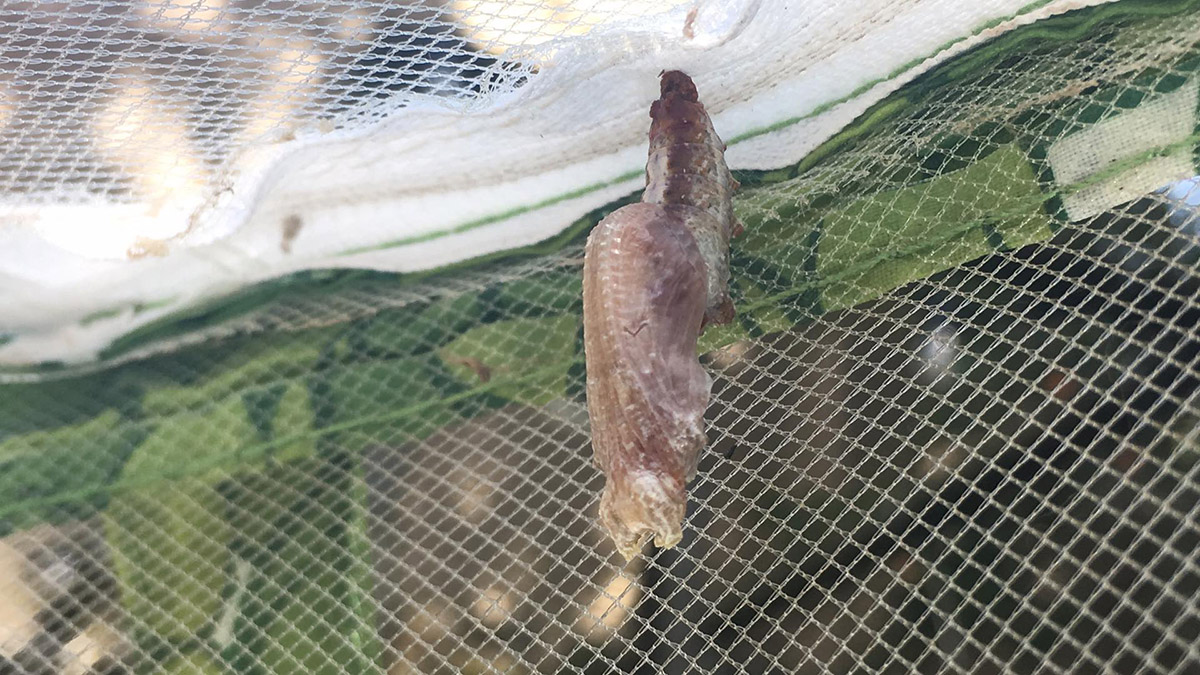
I got my video.
August 2, 2022
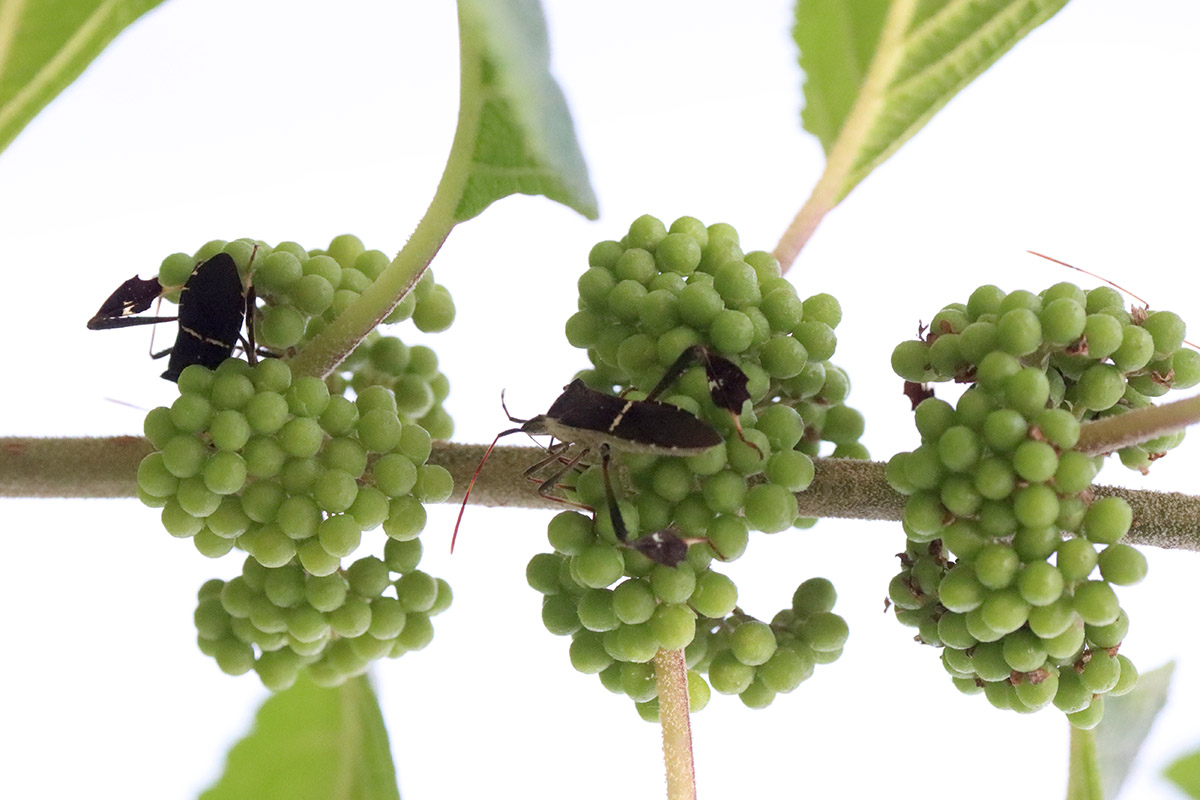
I saw one eastern leaf-footed bug on this plant on June 19. Today, I see several. I wonder if that first one was laying eggs on the plant, and if these are its offspring. If so, I missed out on the larval stages.
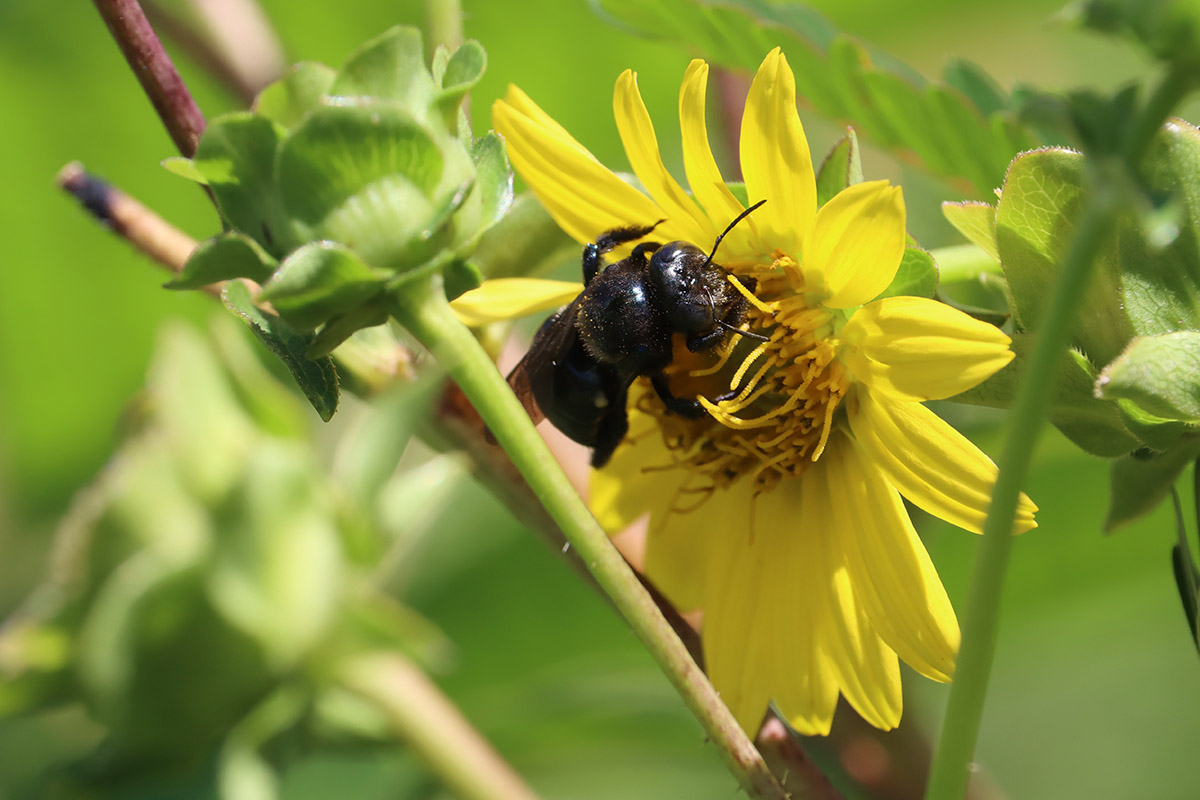
I’m happy to see the males and females of this species sticking around.
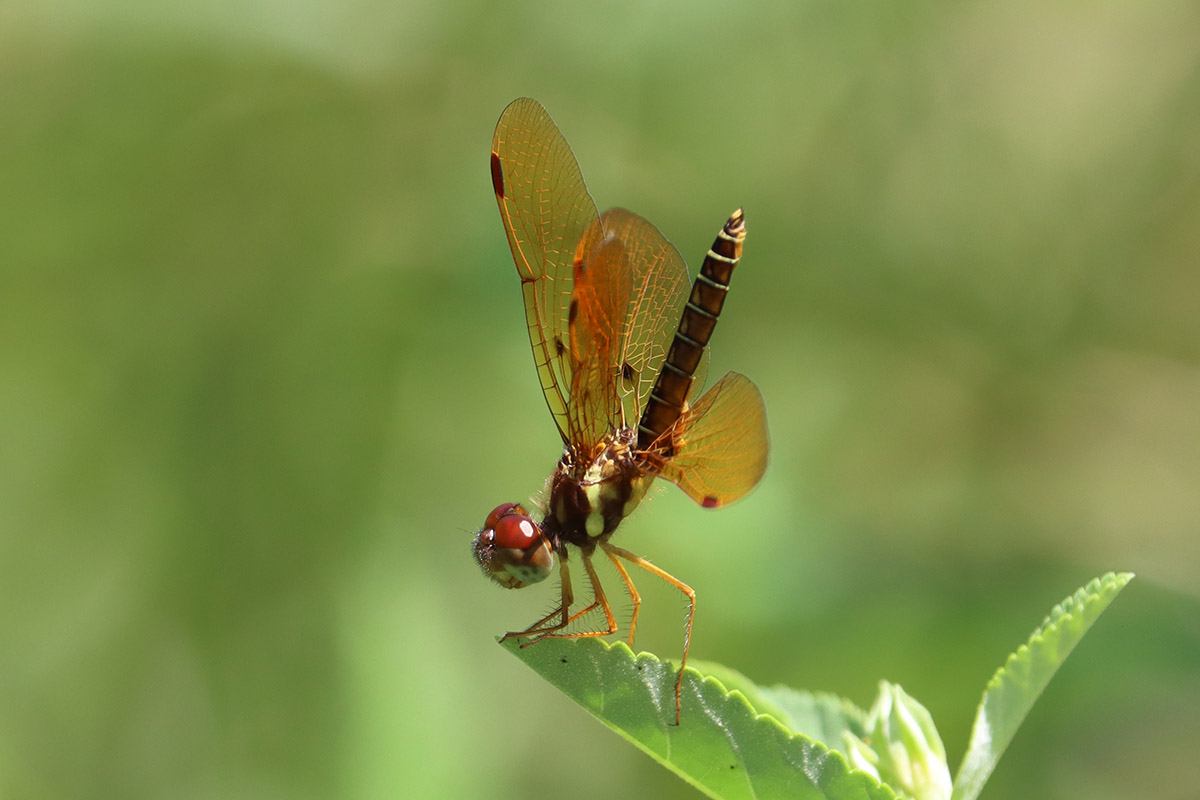
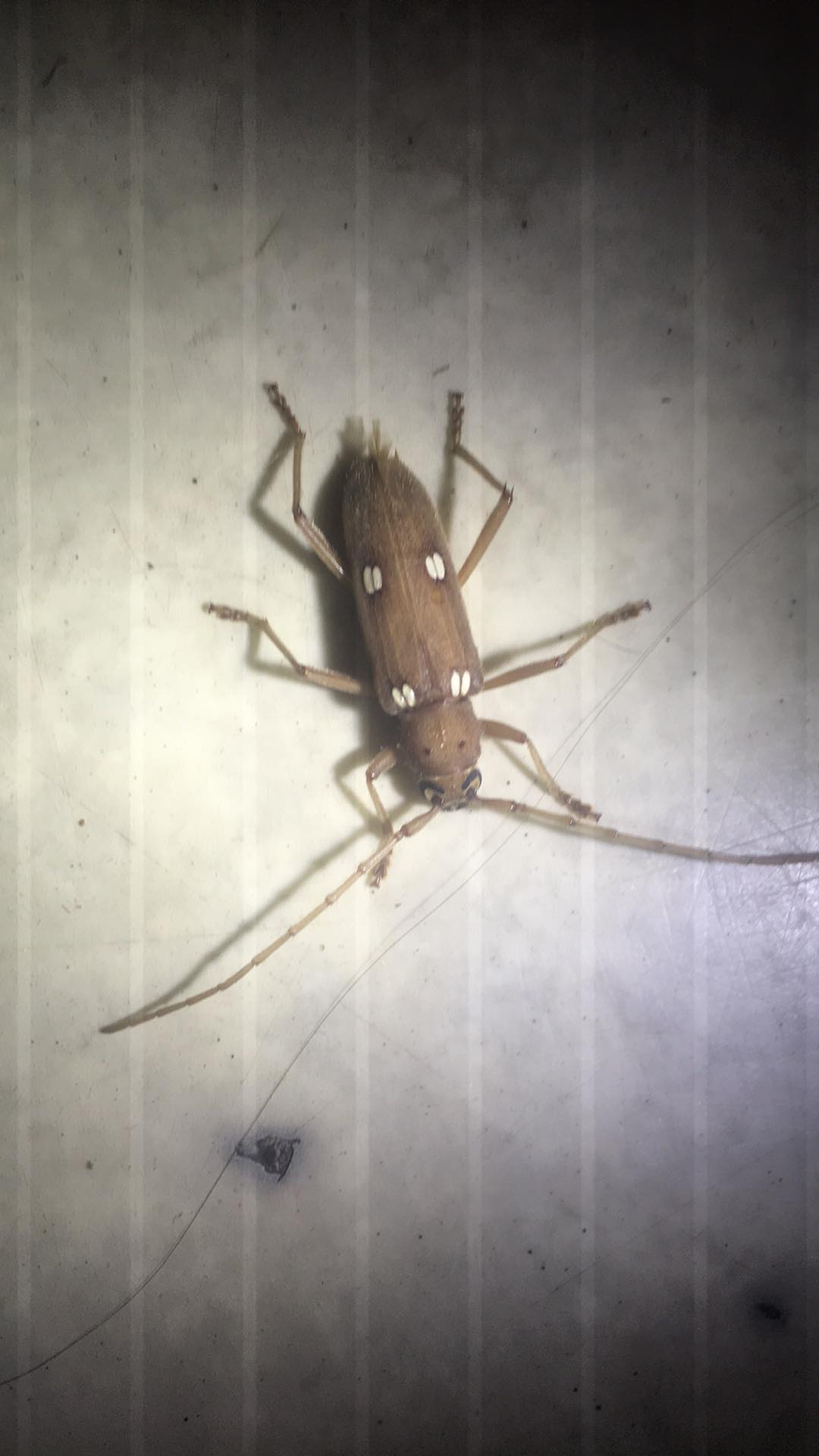
And here’s an insect that wandered into the house. This is a leaf beetle, which are often considered pests.
August 3, 2022
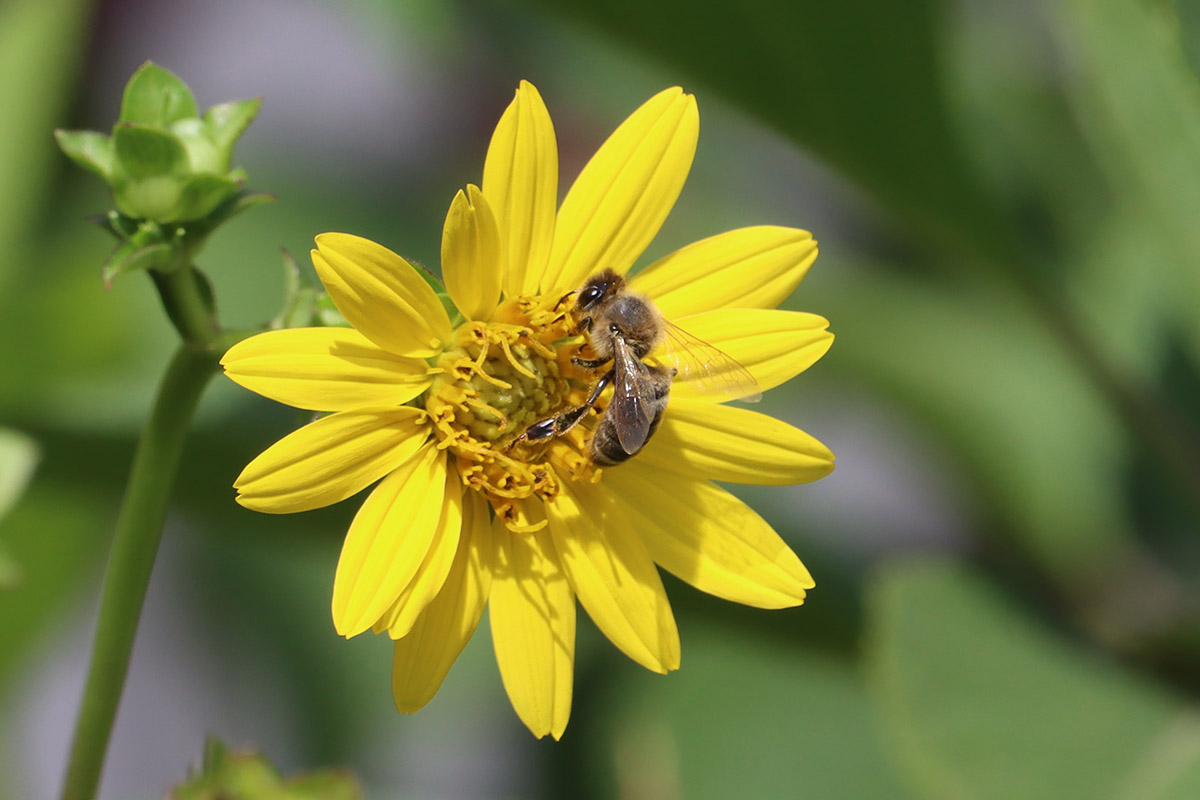
I mostly see honeybees at the beginning and end of the year. Usually, as more native bees start visiting flowers, honeybees all but disappear. There seem to be plenty of flowers for everyone this year, and I’m seeing more of them this summer.
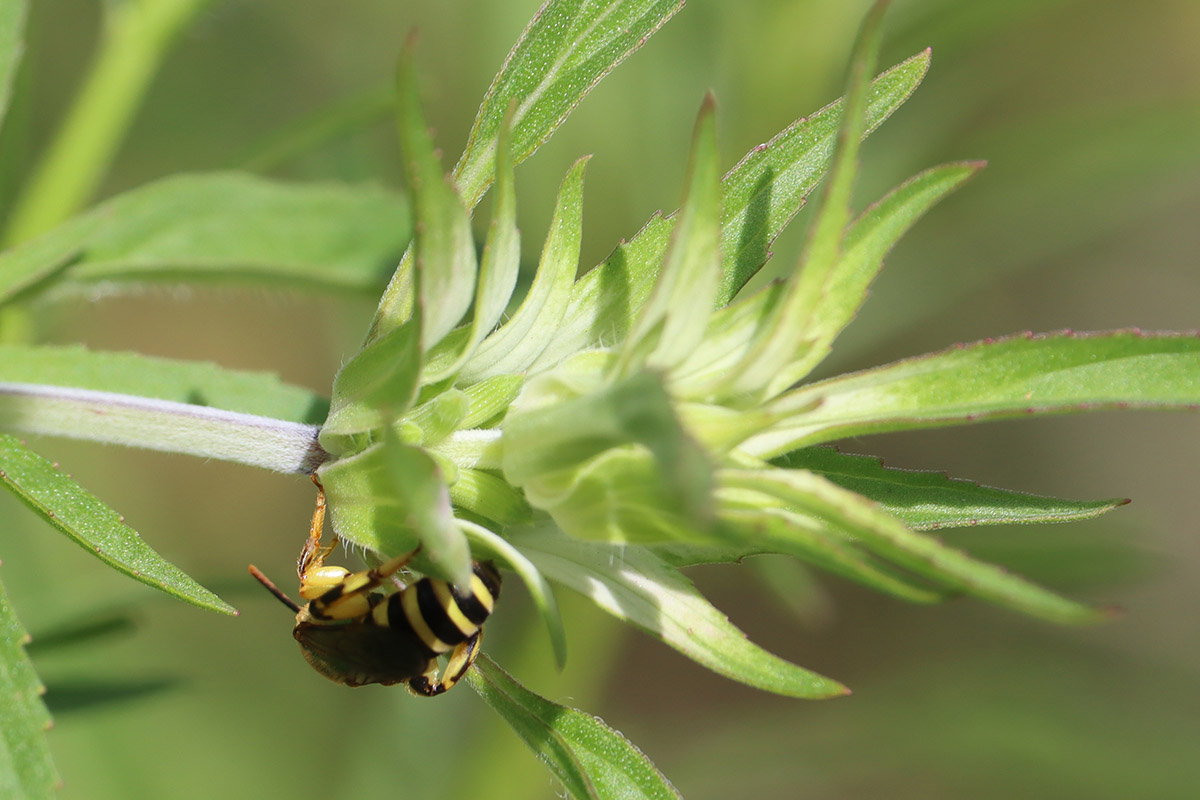
This flower is in the early stages of blooming, but has attracted the attention of this bee. Typically, the more horsemint is in bloom, the more brown-winged striped sweat bees we see.
August 4, 2022
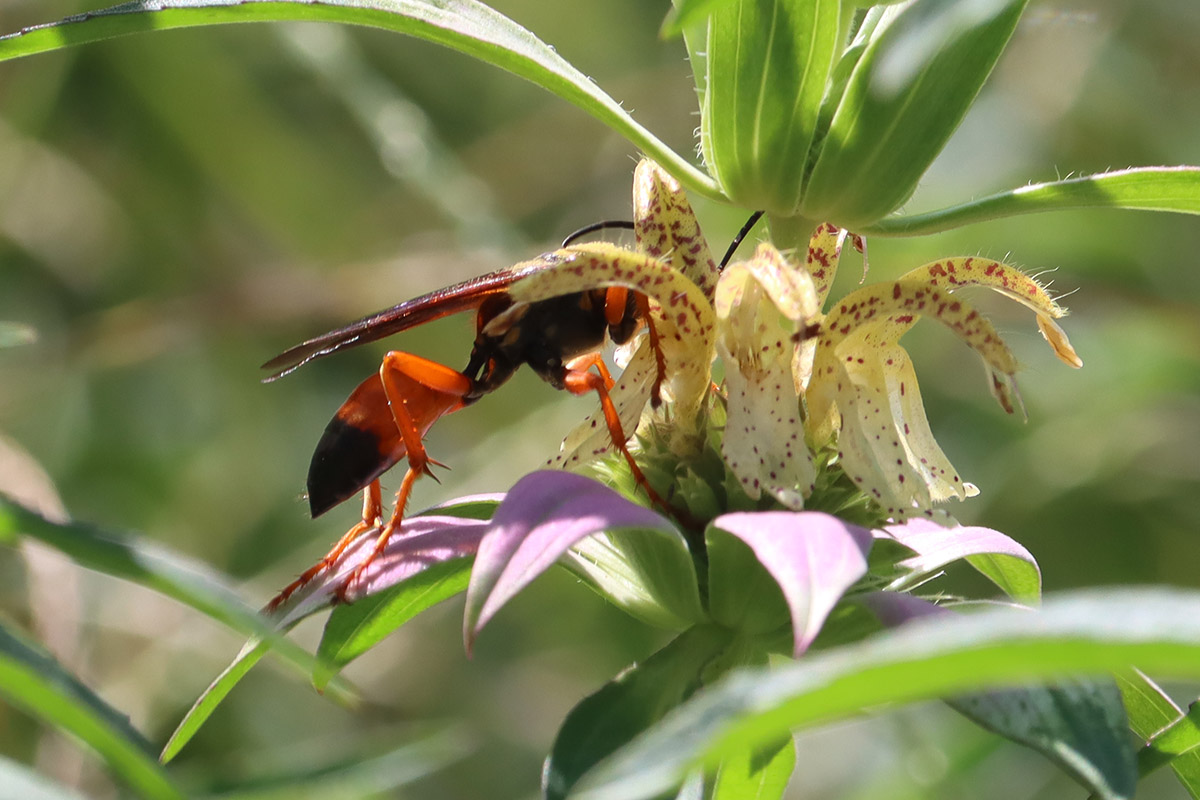
The late-summer horsemint bloom is also when we start seeing more solitary nesting wasps. This includes two species of digger wasps, one of which we see here.
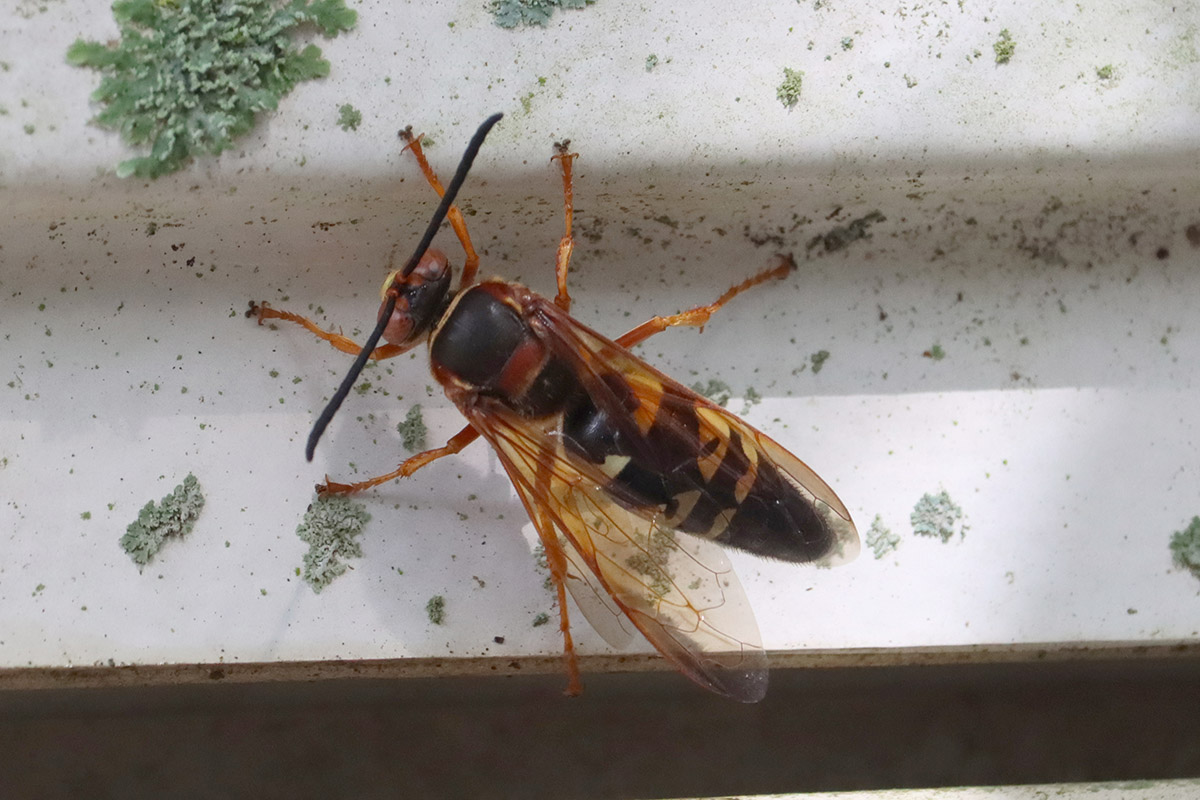
Hanging out on our shed, it’s hard to show the size of this wasp. Think of every cicada you’ve seen, and what large insects they are. This wasp hunts adult cicadas to feed its larvae. I’d seen this on the beebalm, but never with a camera in hand.
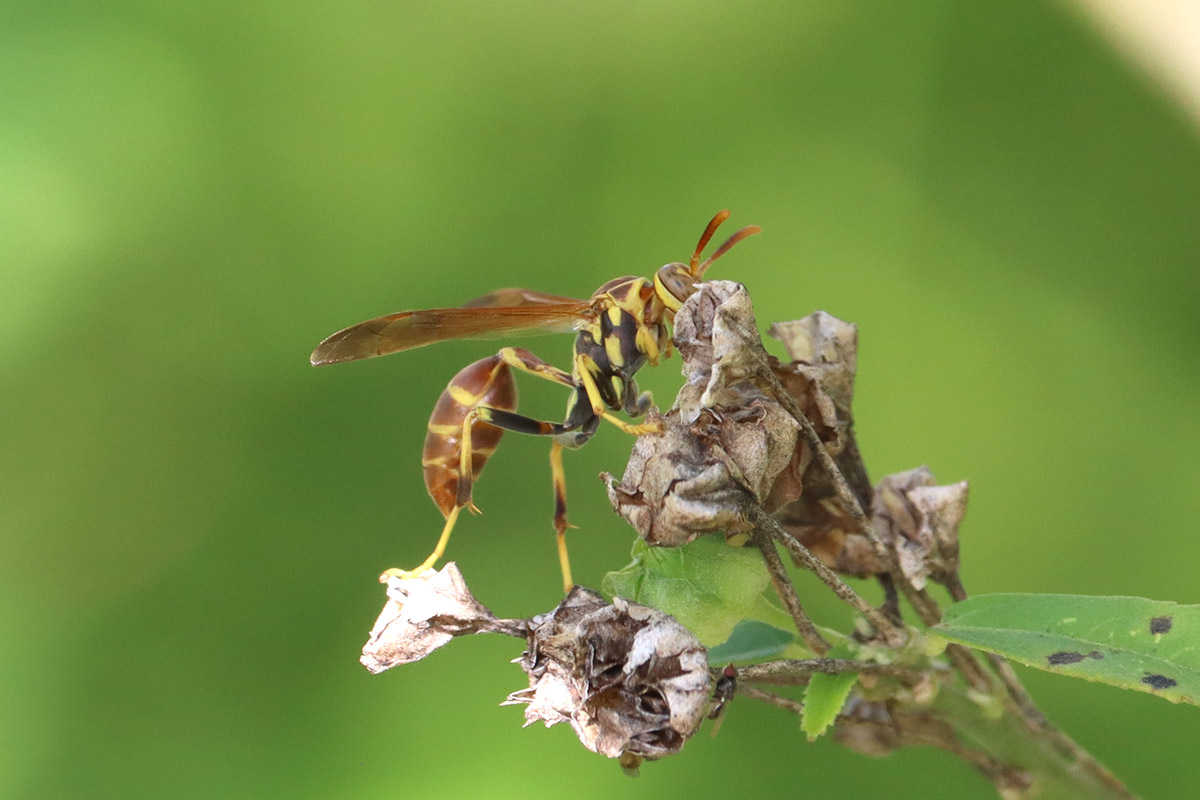
Paper wasps are the family of wasp I see most often killing and hunting butterfly caterpillars. I often see them on fanpetals, further proof that even though I never see them, checkered skippers do host on them.
August 5, 2022
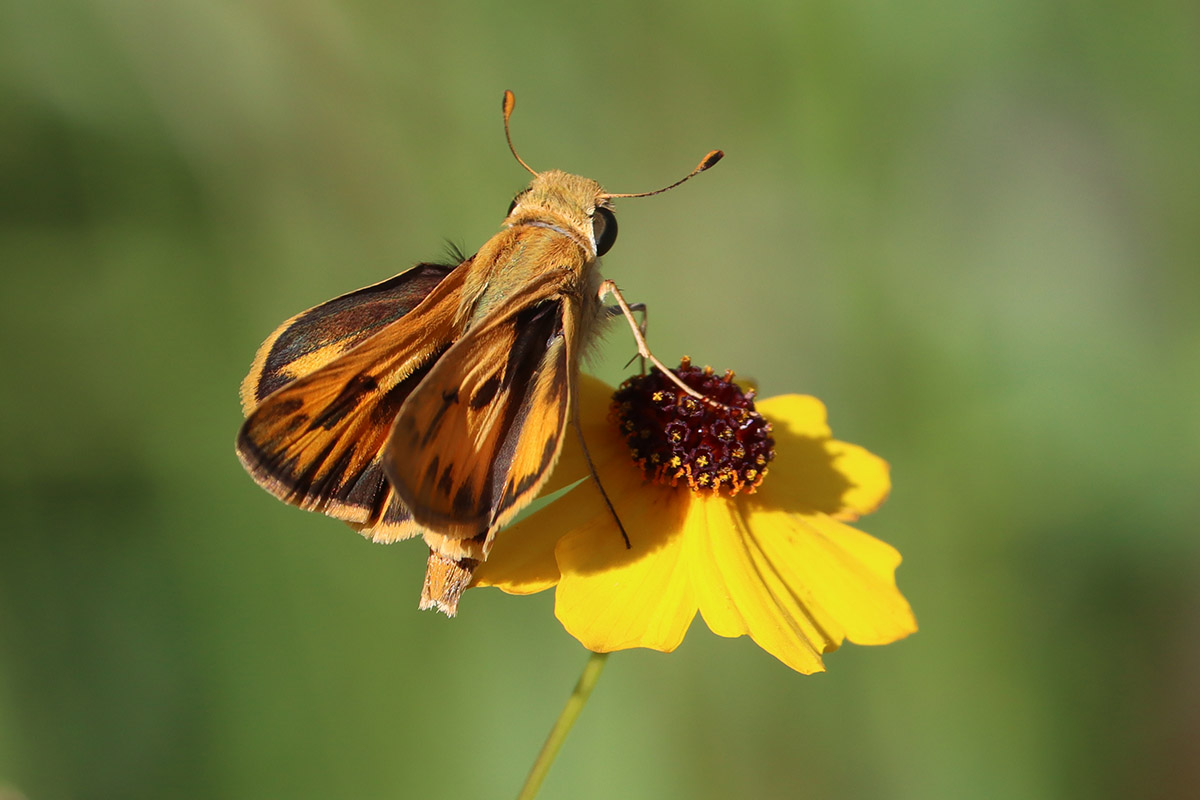
Here’s a butterfly that is usually more common in our yard, but this is the first time I’m seeing it in 2022. It’s been a good year for bees, but a lighter year for butterflies.
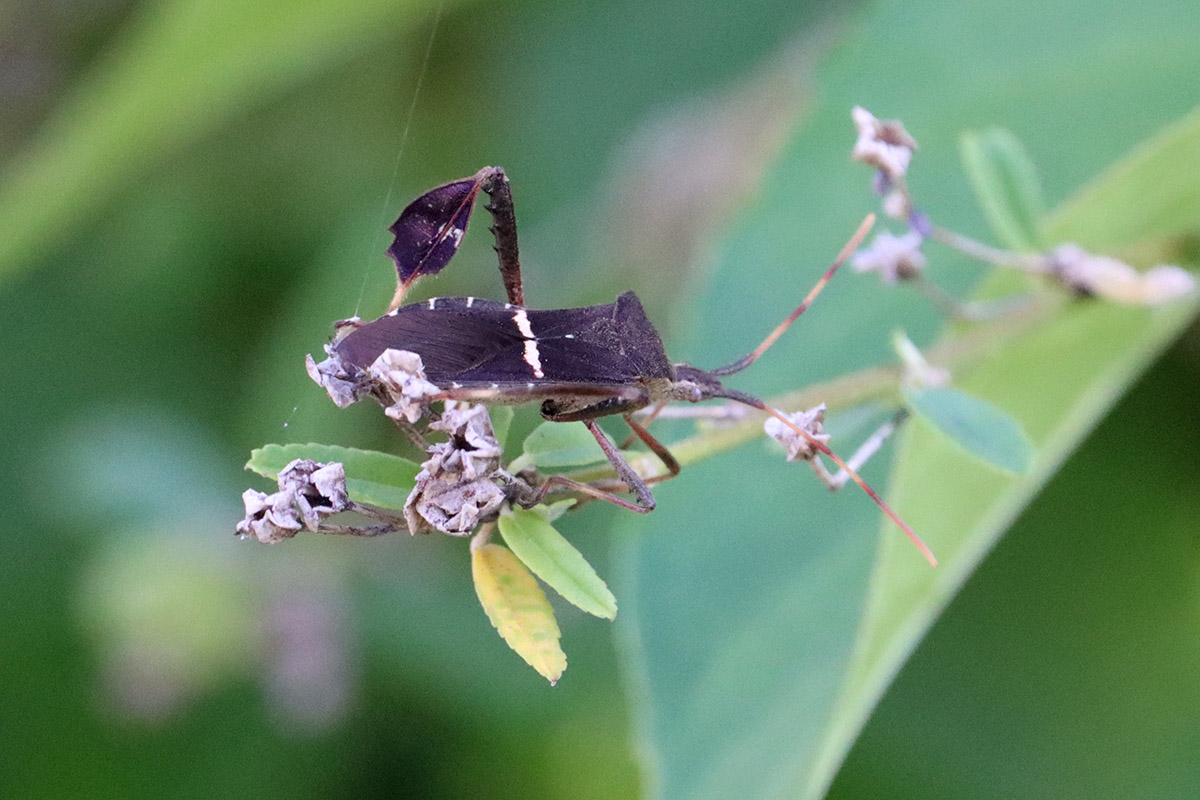
August 8, 2022
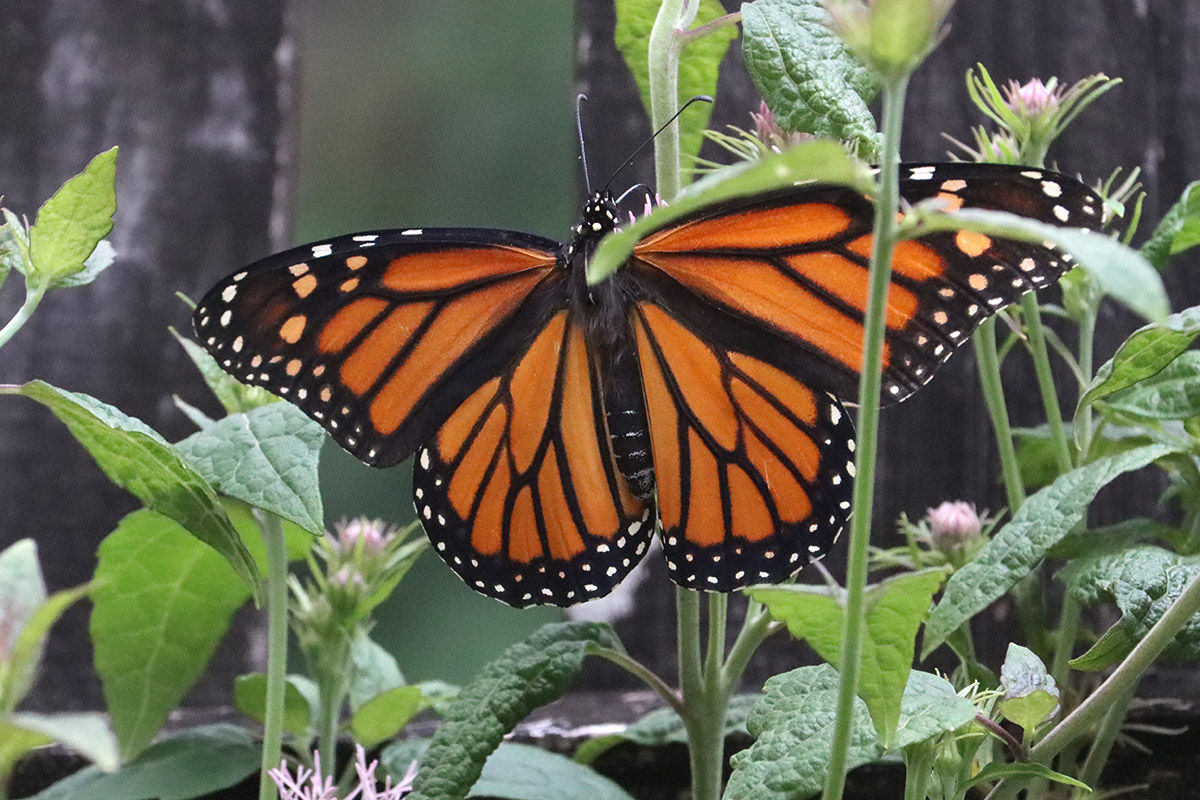
The Brickellia is barely blooming, and here’s a monarch already visiting it. The Brickellia was quite a monarch hotspot last year, with a lot of mating starting on its flowers.
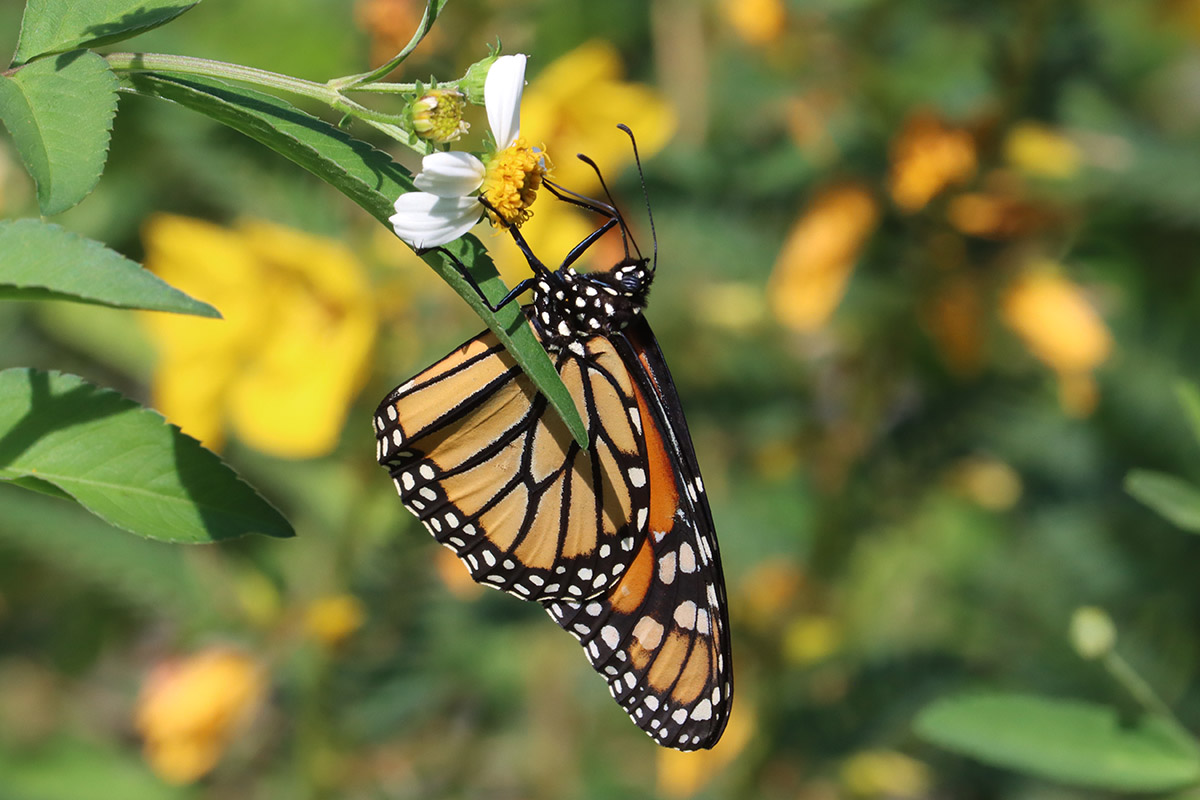
This may be the same butterfly. It has crisp, new looking wings. When I see this, I tend to think that this was one of our monarch caterpillars, recently eclosed from a chrysalis. I rarely find their chrysalises anymore, but I think they’re successfully growing to butterflies, thanks in part to their ability to hide from predators.
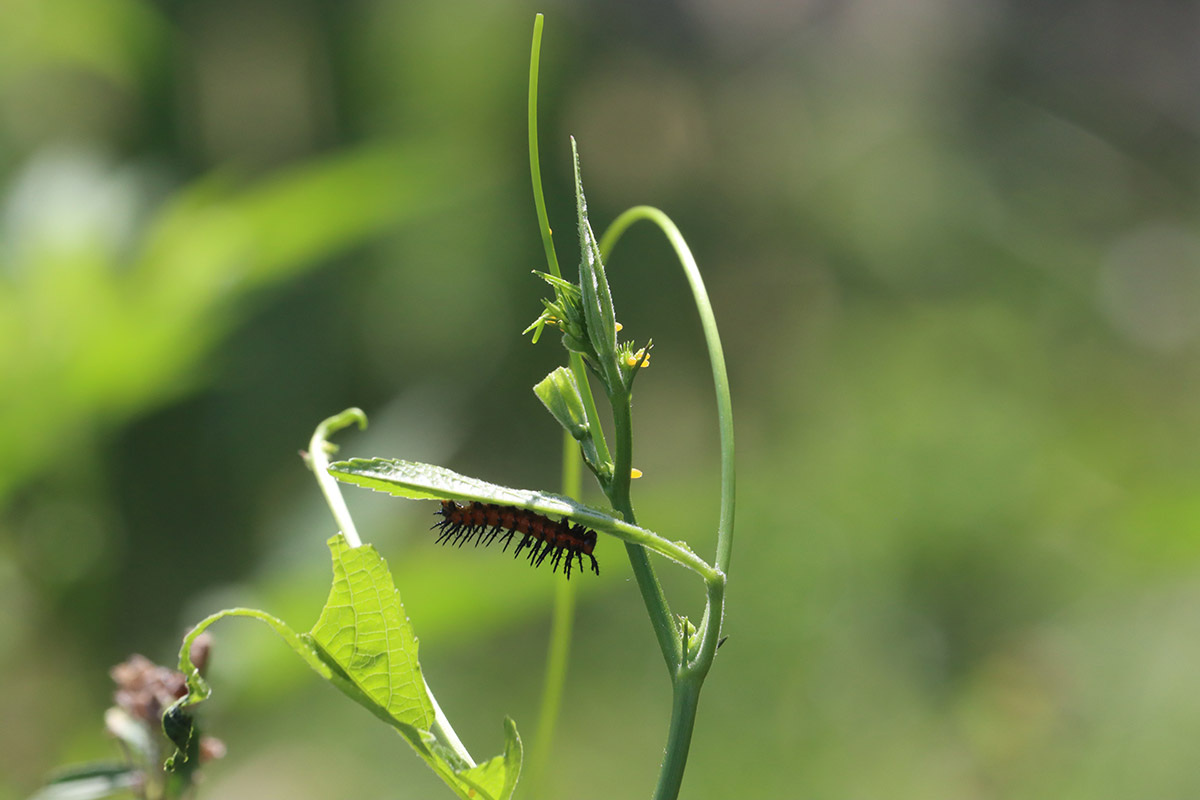
Gulf fritillary butterflies have been busy, as we see here.
August 9, 2022
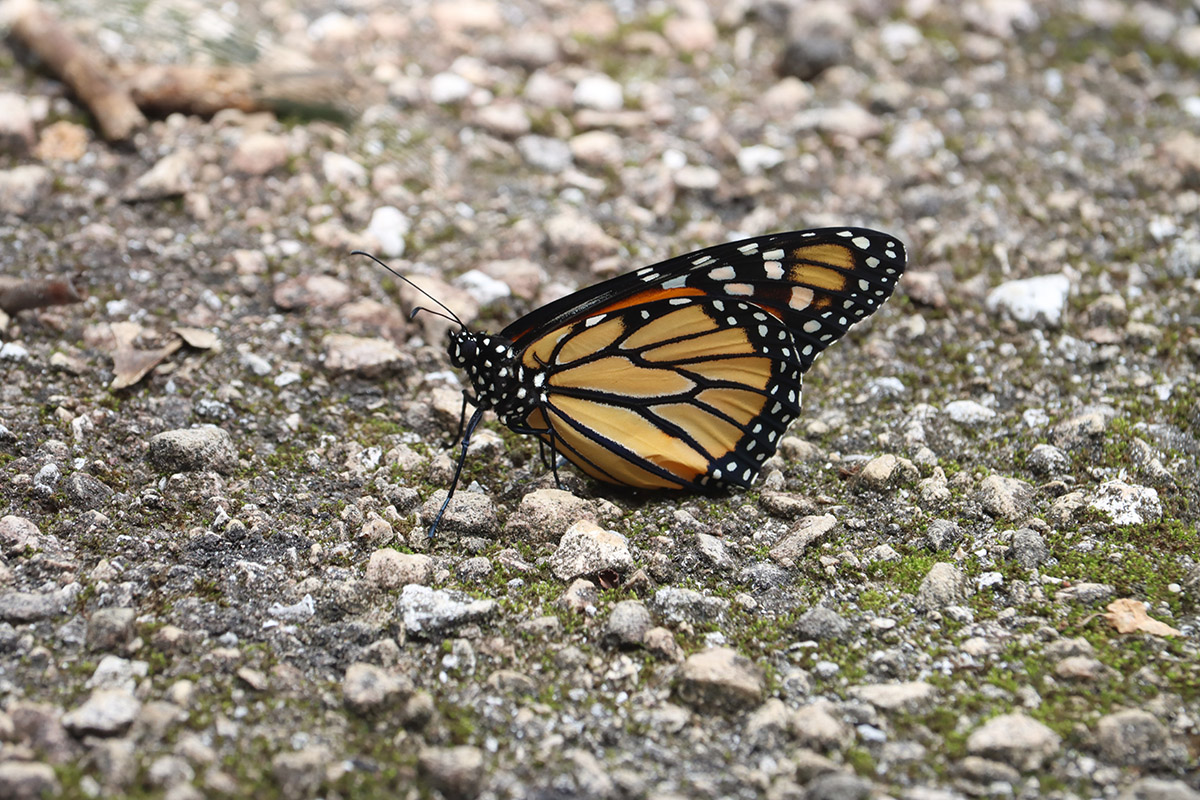
Here’s another new looking butterfly, but this one has a crinkle in its wing and is walking around. I’ve seen butterflies with damaged wings that spend a couple of days walking the yard. This one did not end up walking the yard for days- it either flew off or was eaten.
August 10, 2022
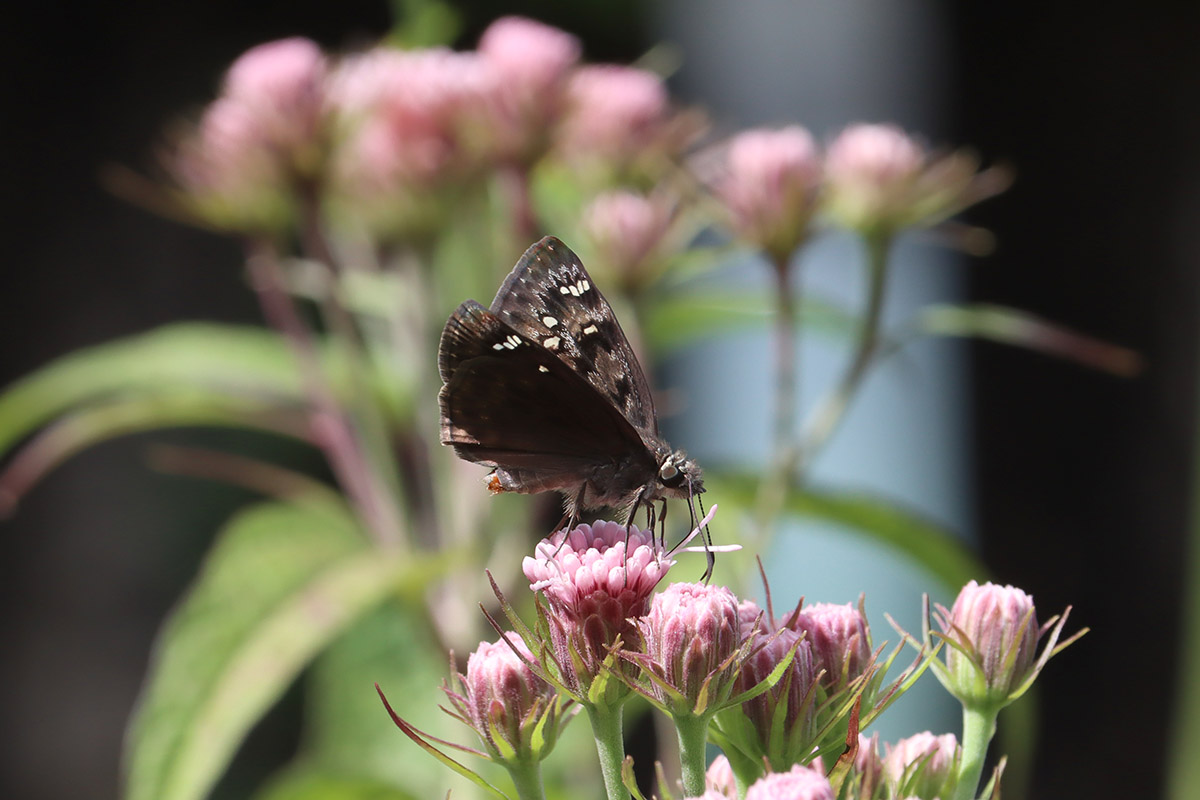
Another butterfly can’t seem to wait for the Brickellia to pop open.
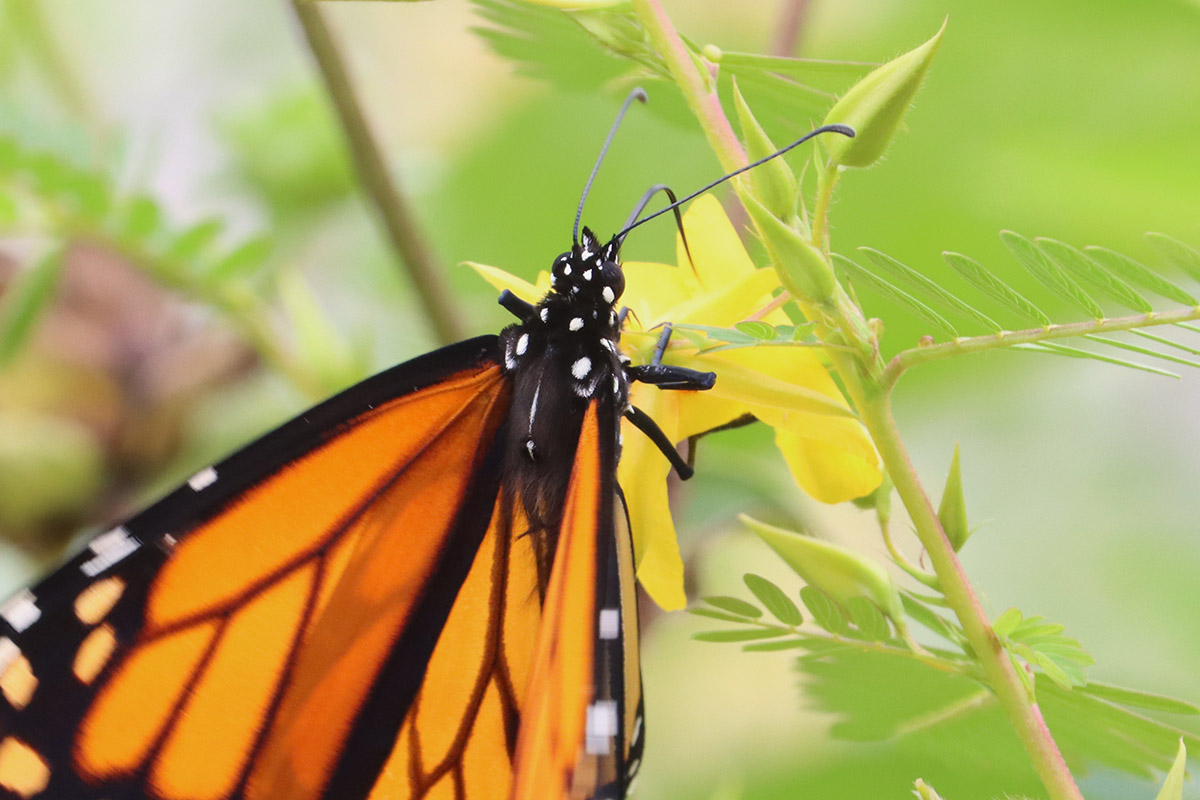
Another new-looking monarch. I’m kicking myself, because I don’t seem to have taken a photo of the milkweed plants left leafless by caterpillars. This would have been a couple of weeks back. Now I’m seeing monarchs daily on our flowers.
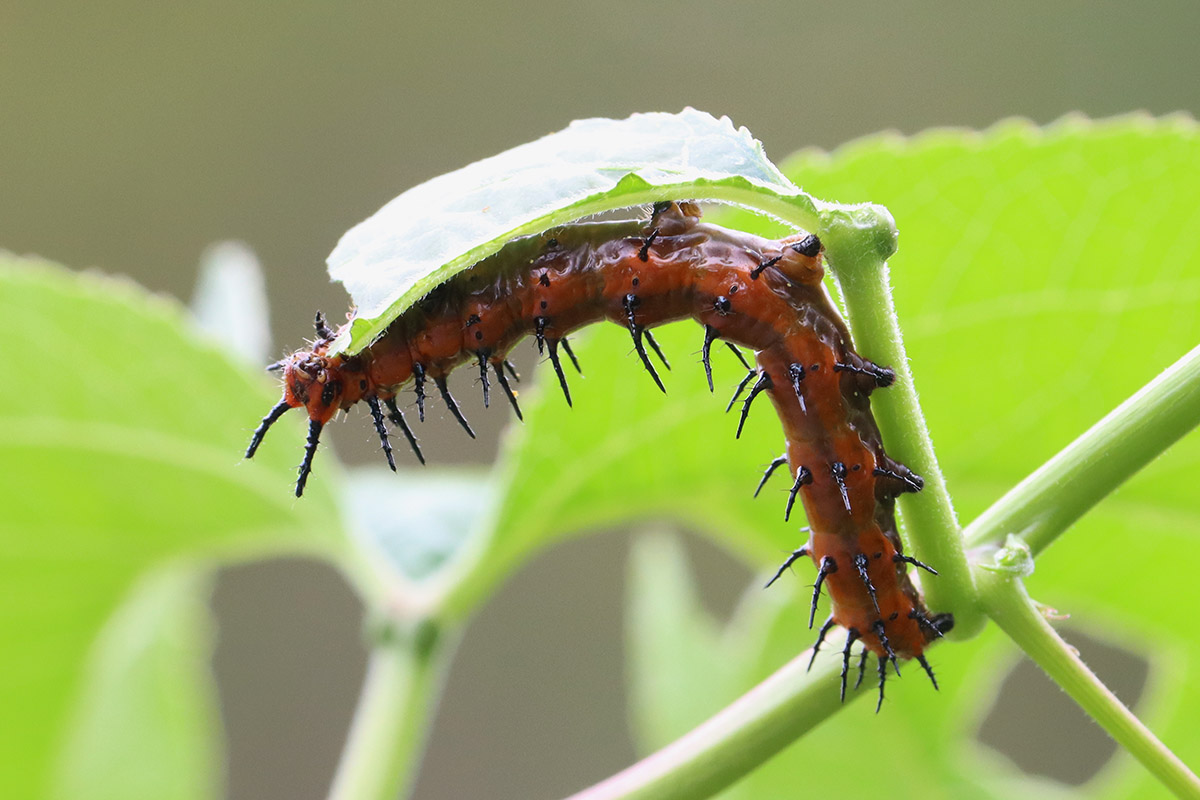
The second wave of gulf fritillaries has reached maturity and is ready to transform.
August 11, 2022
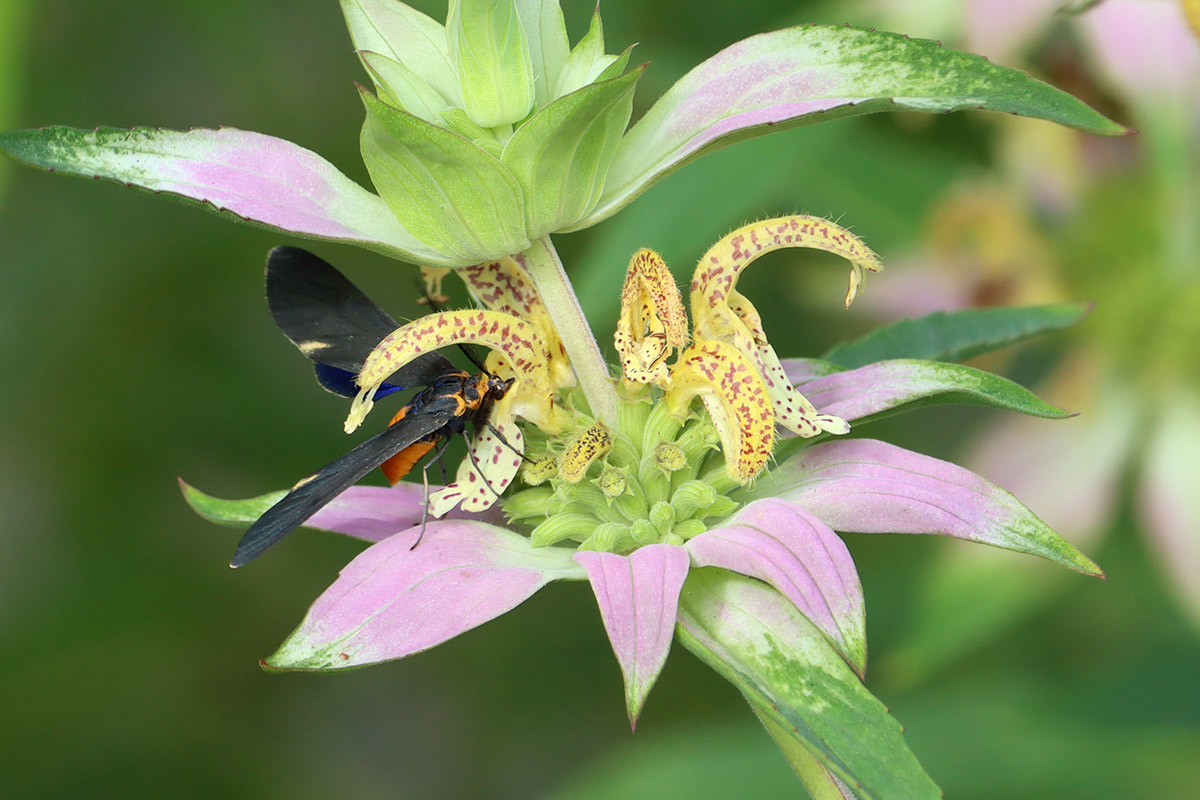
In addition to bees and wasps, there are a couple of moths that visit the beebalm from year to year. This one hosts on Spanish moss.
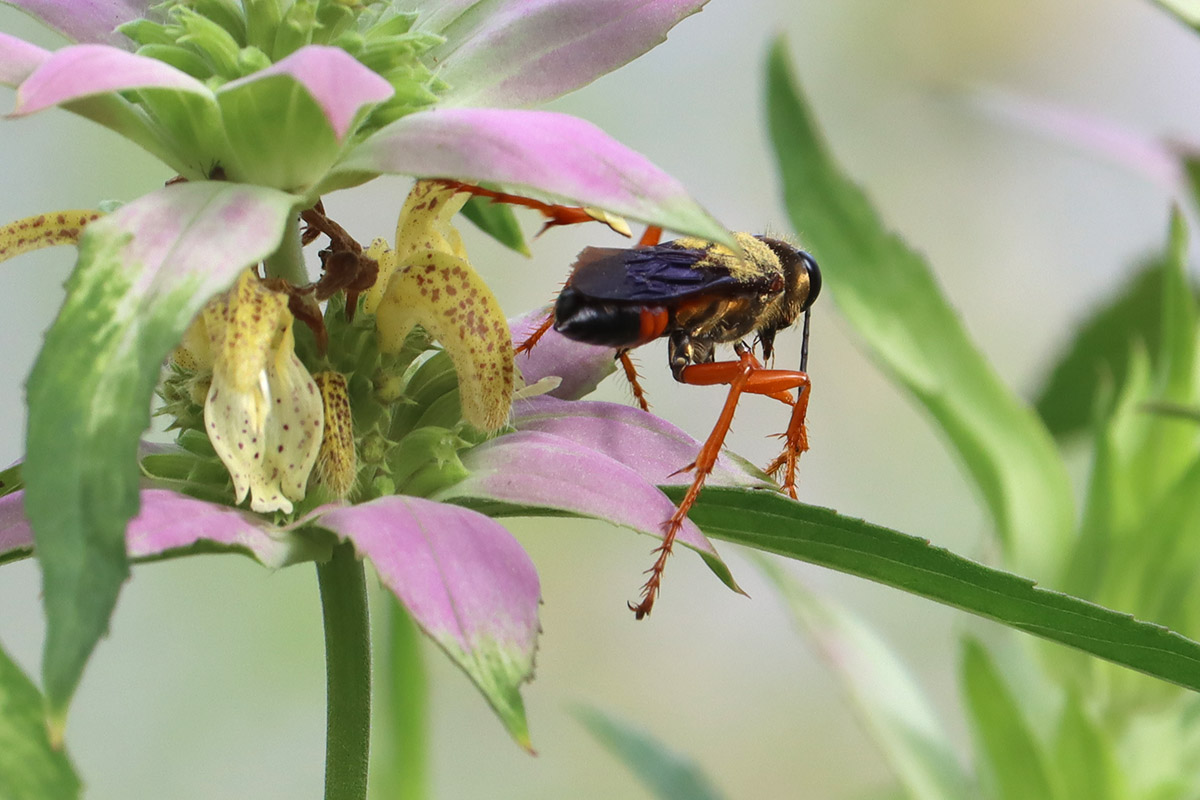
I don’t know if this is the same golden digger I previously photographed, but you can see how much more pollen covered it is. There are some wasps species I almost don’t recognize because they become so covered in pollen on this plant.
August 14, 2022
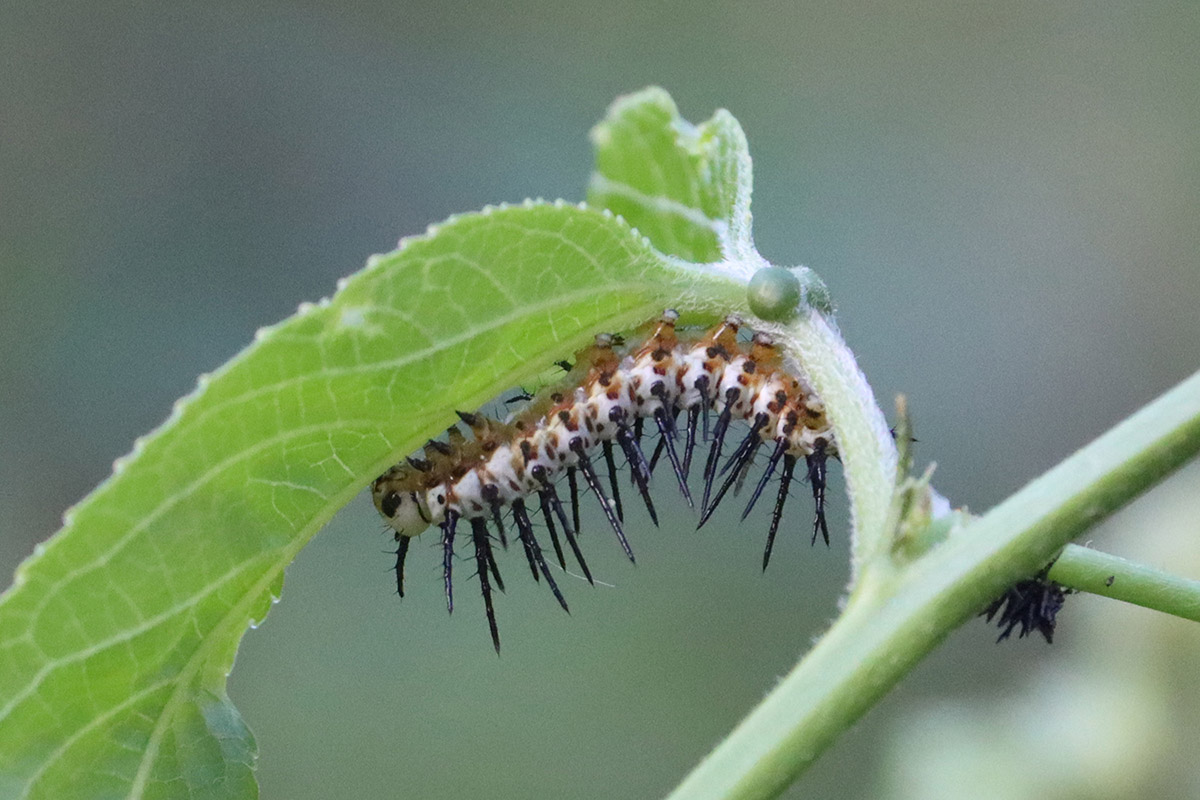
Somehow I missed this guy growing up. The black spikes on the opposite stem are likely the caterpillar’s last molt. Soon, it’ll crawl off to make a chrysalis.
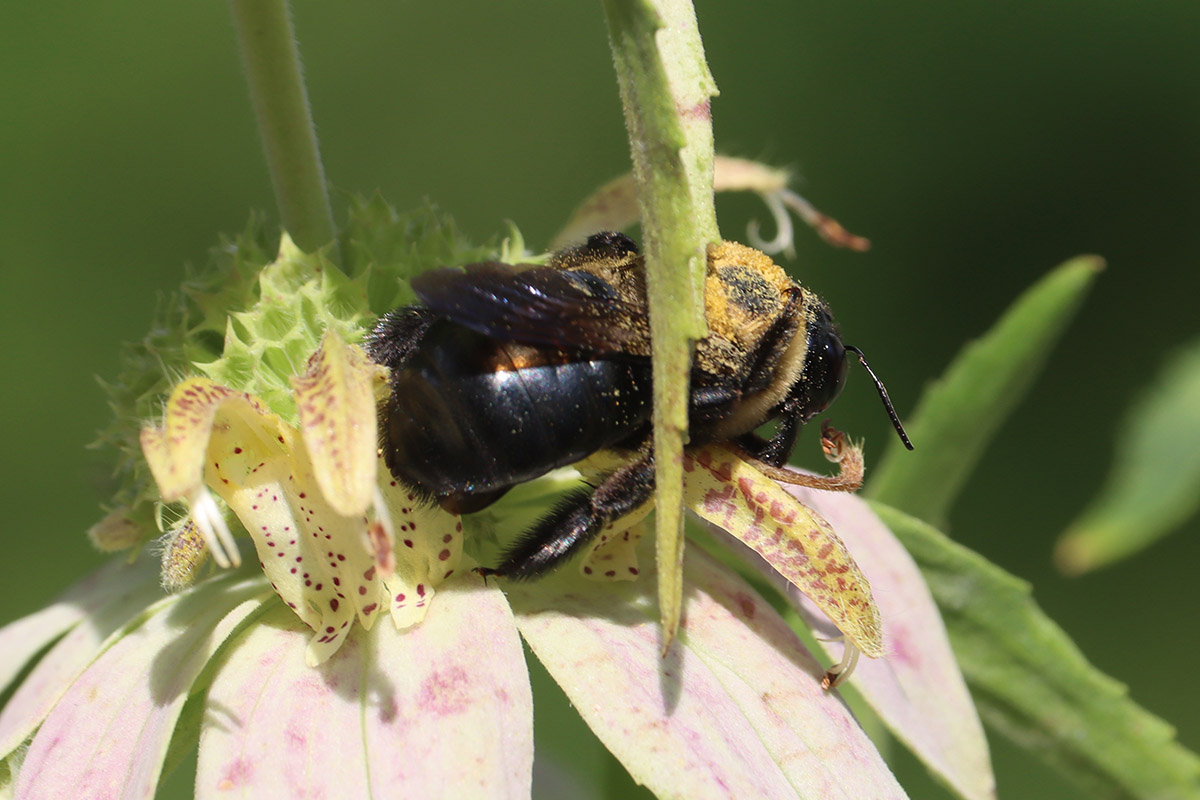
Despite having several nests in the yard, this is one of the few flowers I see carpenter bees pollinate here.
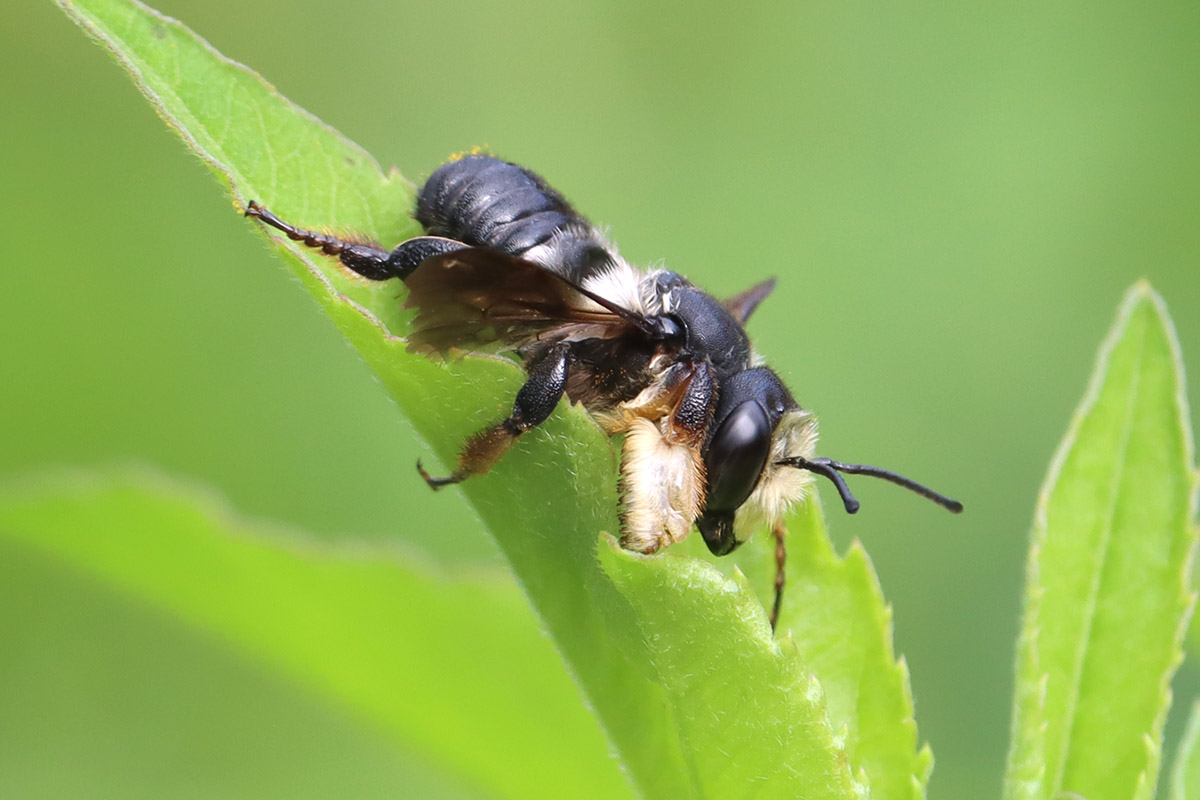
And here’s the bee that mimics the carpenter bee. Taking a close look at the two, they’re obviously different bees. They do have similar colored hair, and smooth black abdomens. The female carpenter-mimic is all black with no hair, aside from the pollen sac under her abdomen. This mimics the female southern carpenter bee.
August 15, 2022
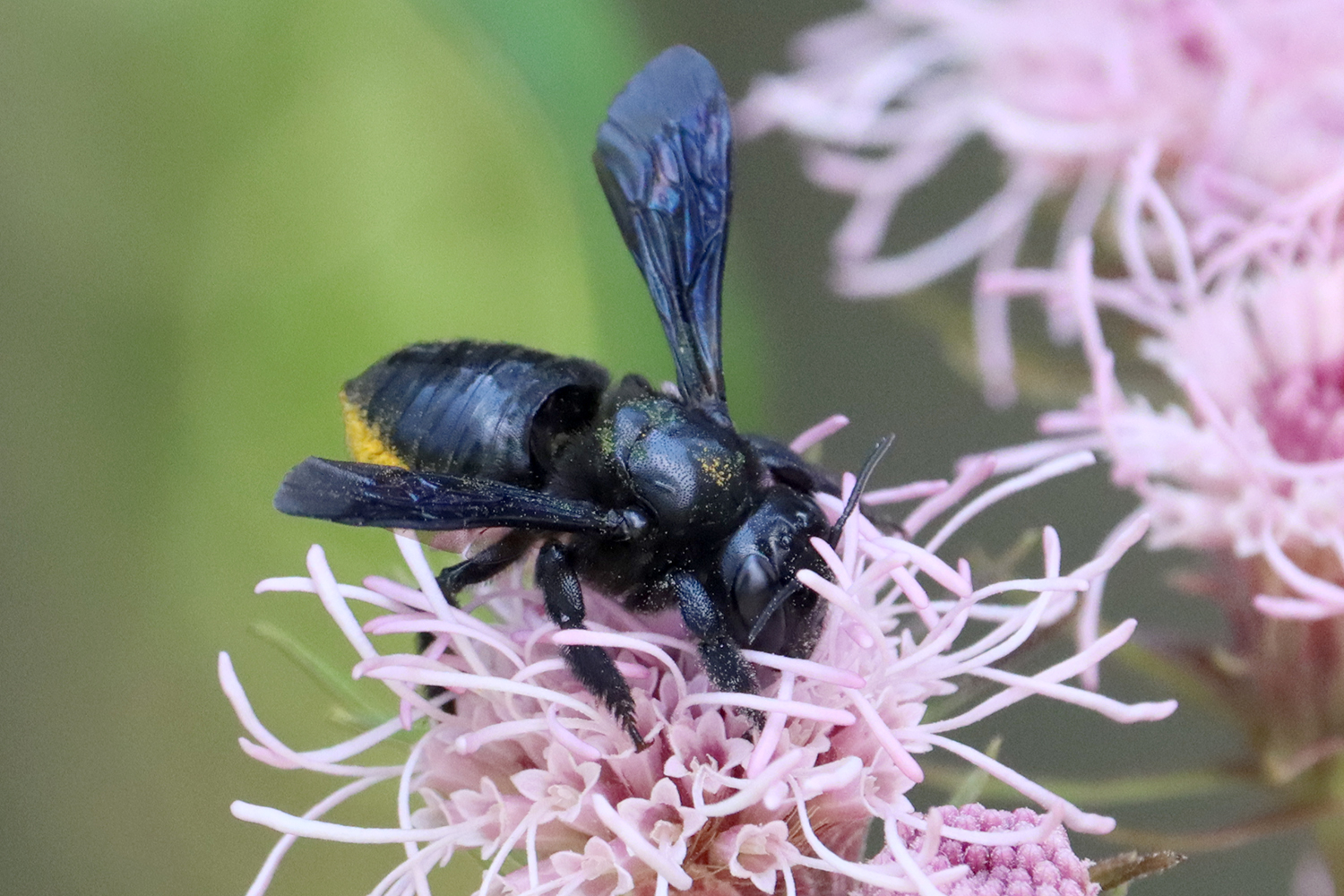
And here’s the female on Flyr’s Nemesis (Brickellia cordifolia). Brickellia is a composite flower, and in this photo you can see the individual flowers in the cluster.
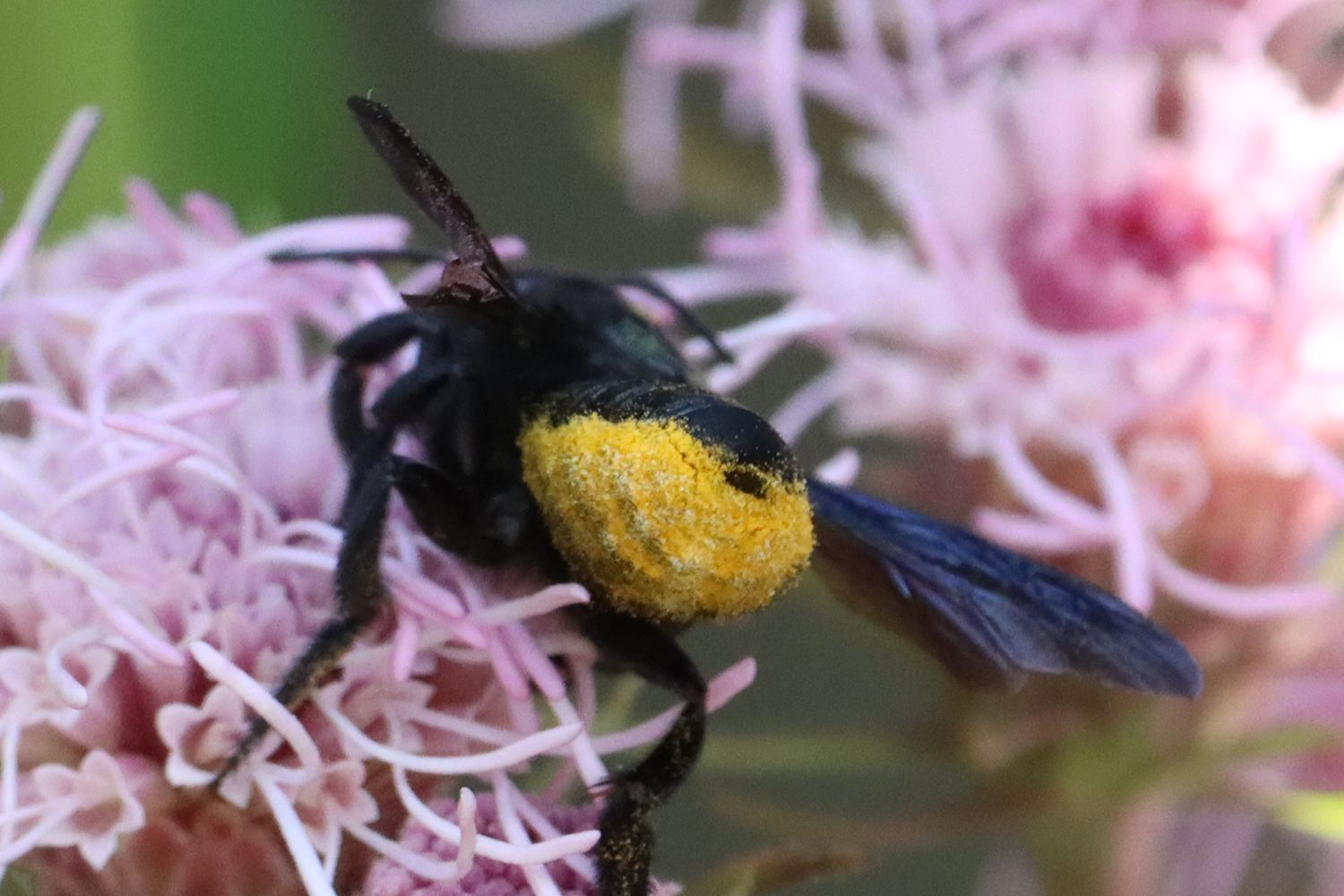
And here’s a close-up look at how this bee collects pollen.
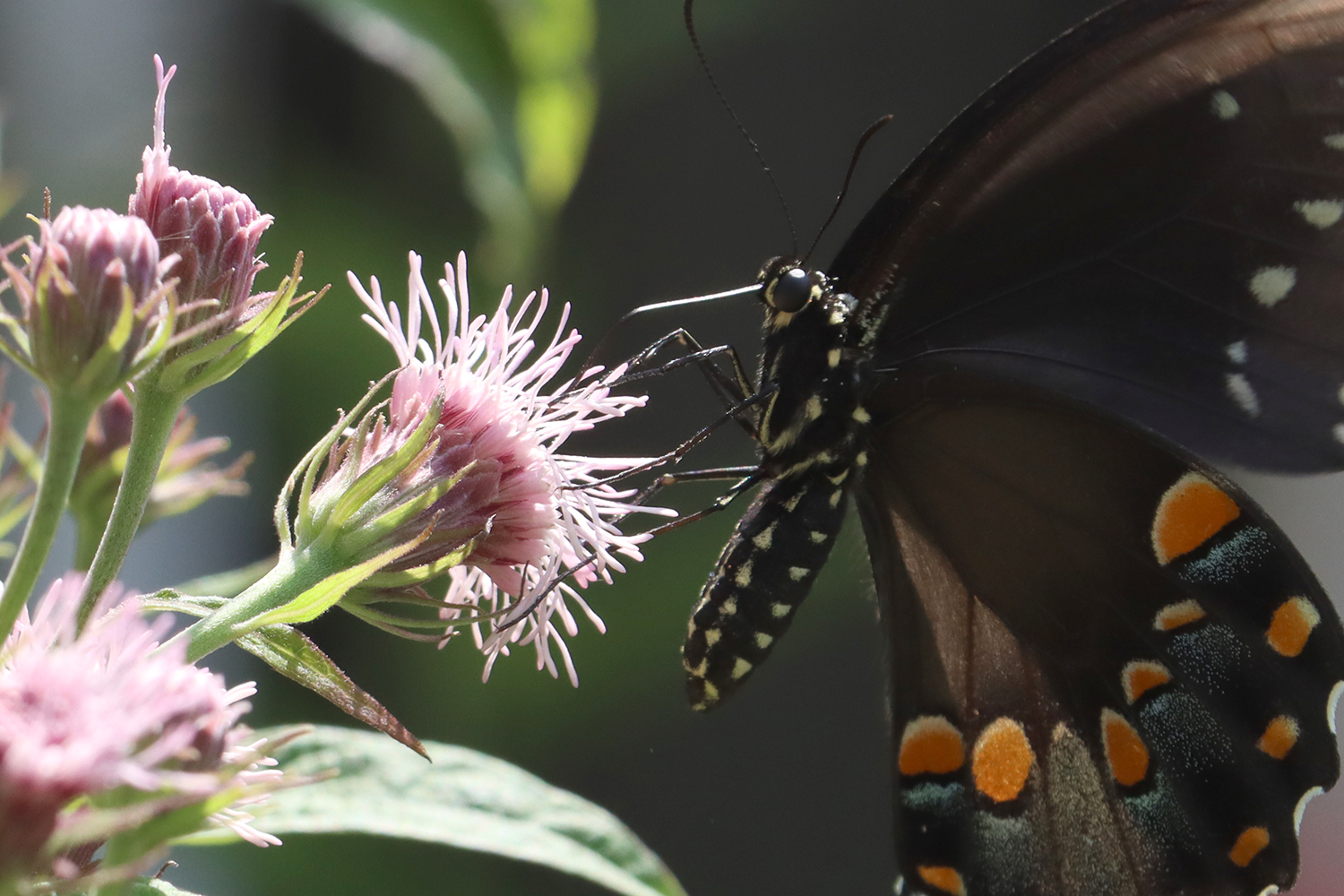
We’ve had plenty of spicebush swallowtails over the years, but never on the Brickellia. It was chased off by a monarch.
And so begins our annual monarch-Brickellia bacchanal.
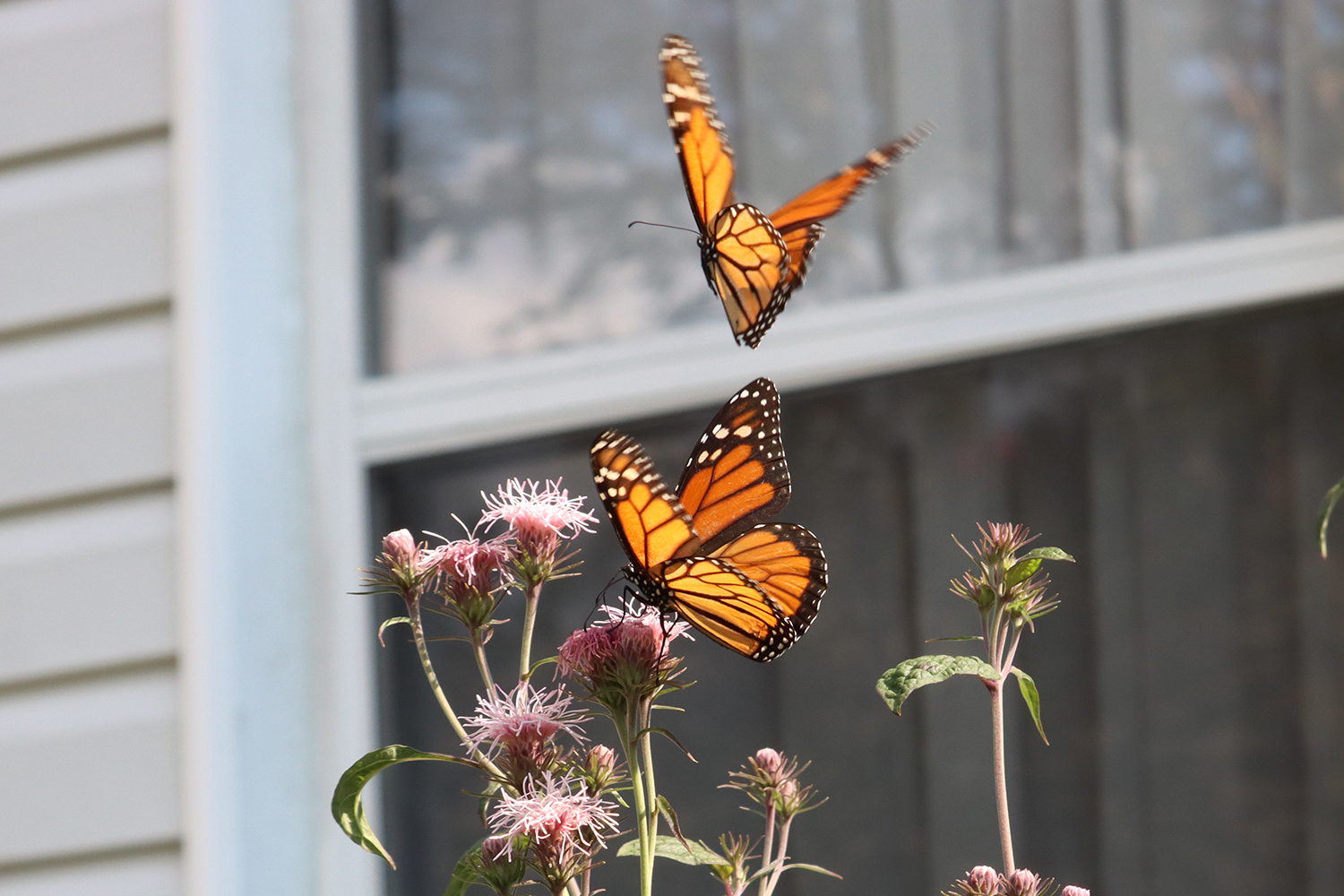
They pester each other, and sometimes try to mount a butterfly as it feeds.
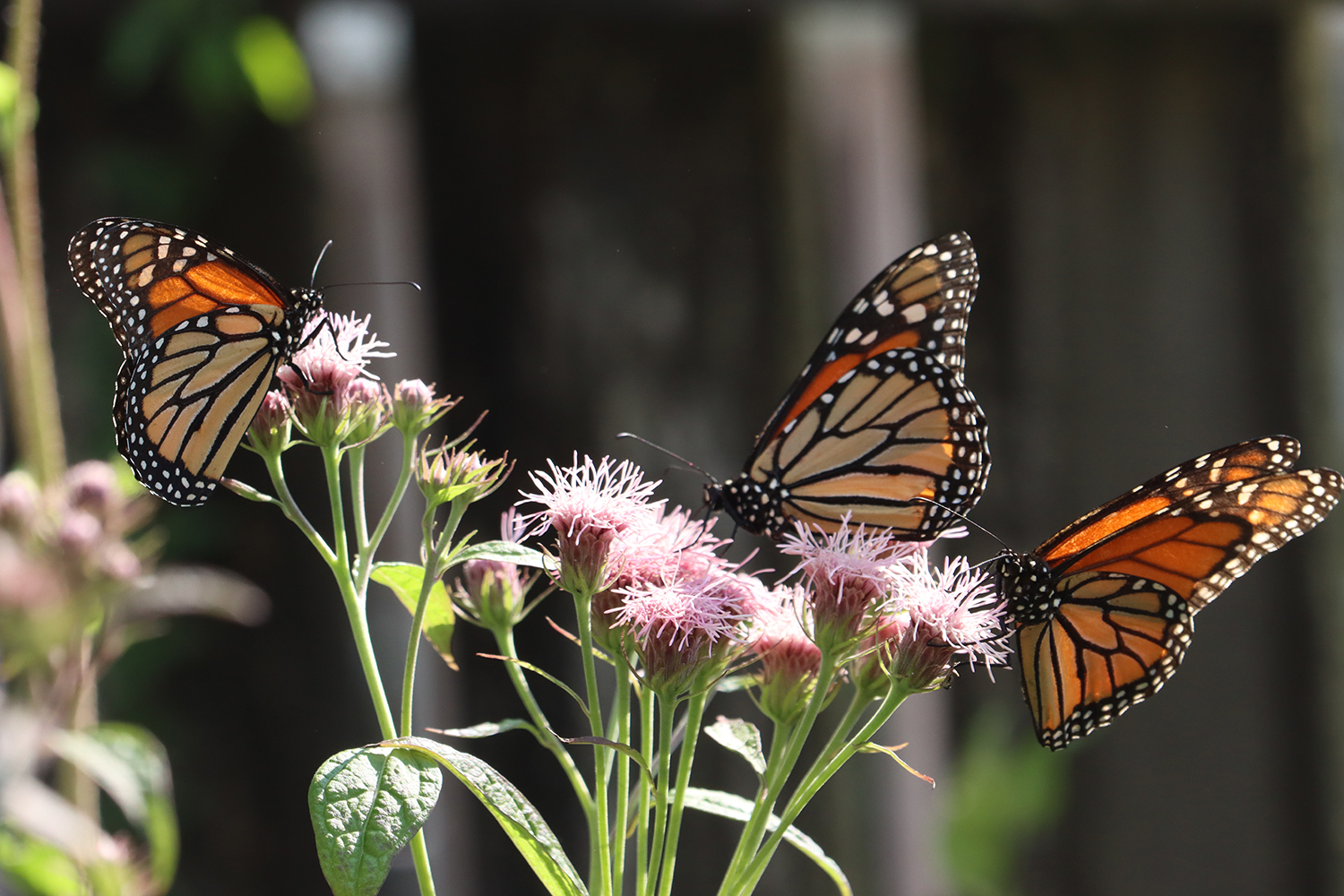
They start to gather in groups. The groups will grow a little larger in the coming days. Looking at their wings, it’s a mix of newer and older looking butterflies.
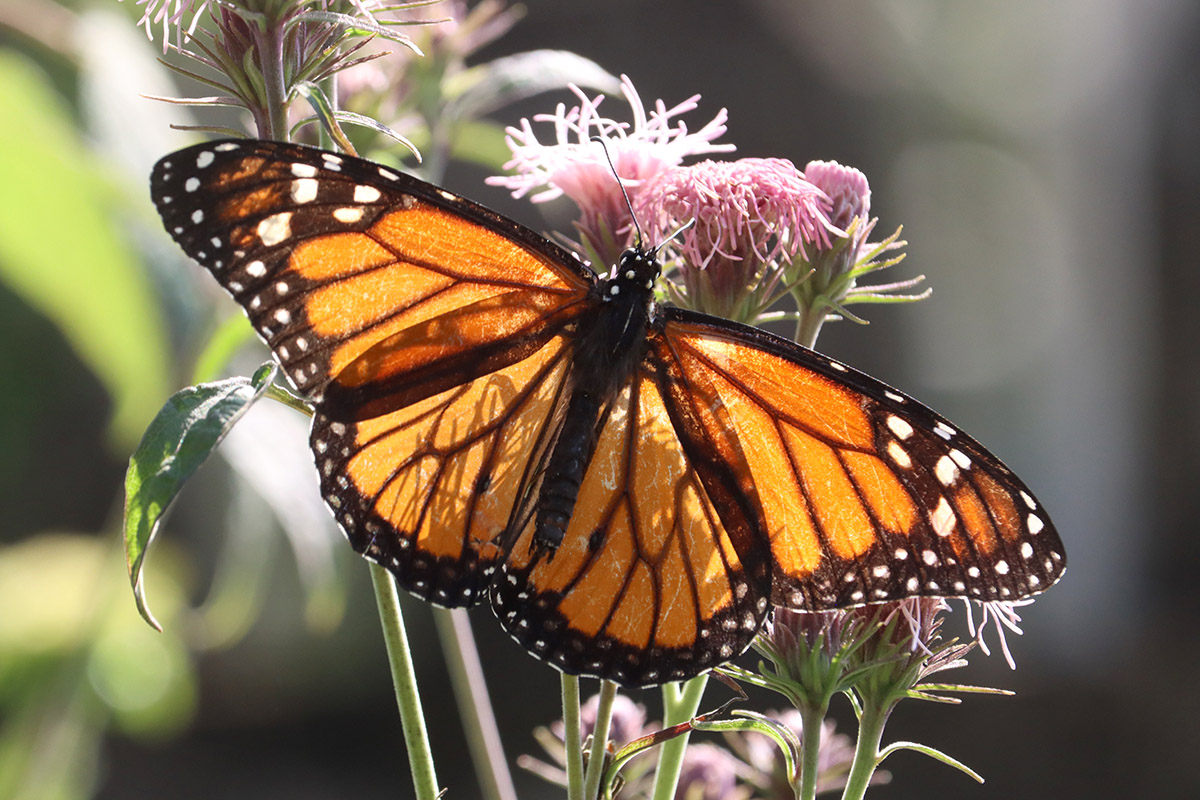
There is a bit of mating here, and there always seem to be newly eclosed butterflies along with those who look like they’ve done some migrating. The way they congregate on this plant for days on end makes me wonder whether it intoxicates them into staying somehow. Our milkweed hasn’t grown back all that much after the last wave of caterpillars, so this isn’t necessarily the best mating site.
Perhaps this plant just happens to bloom at a certain point in the northward migration where a lot of butterflies pass through and are ready to mate. I wonder.
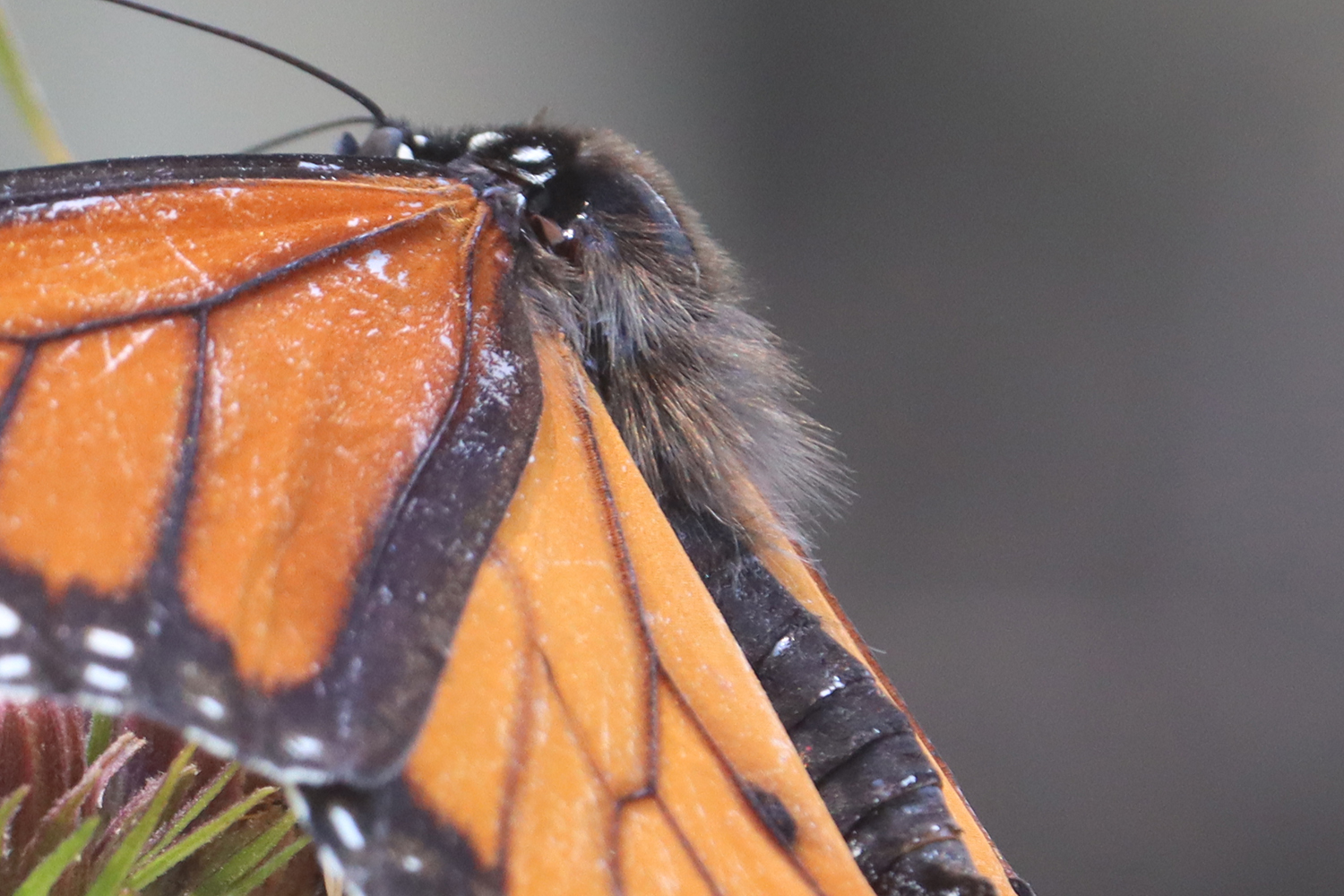
And now, back to our other flowers…
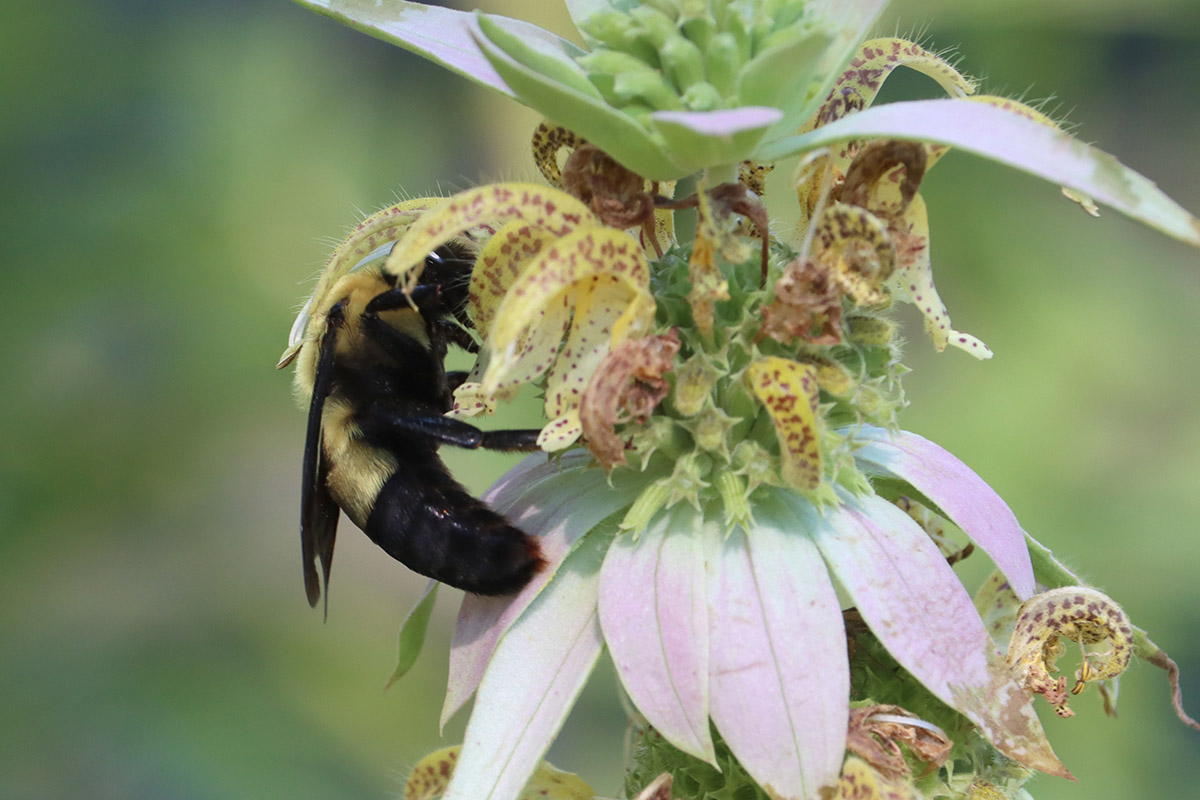
I still see a single American bumblebee now and then. It has unsurprisingly been drawn to the beebalm.
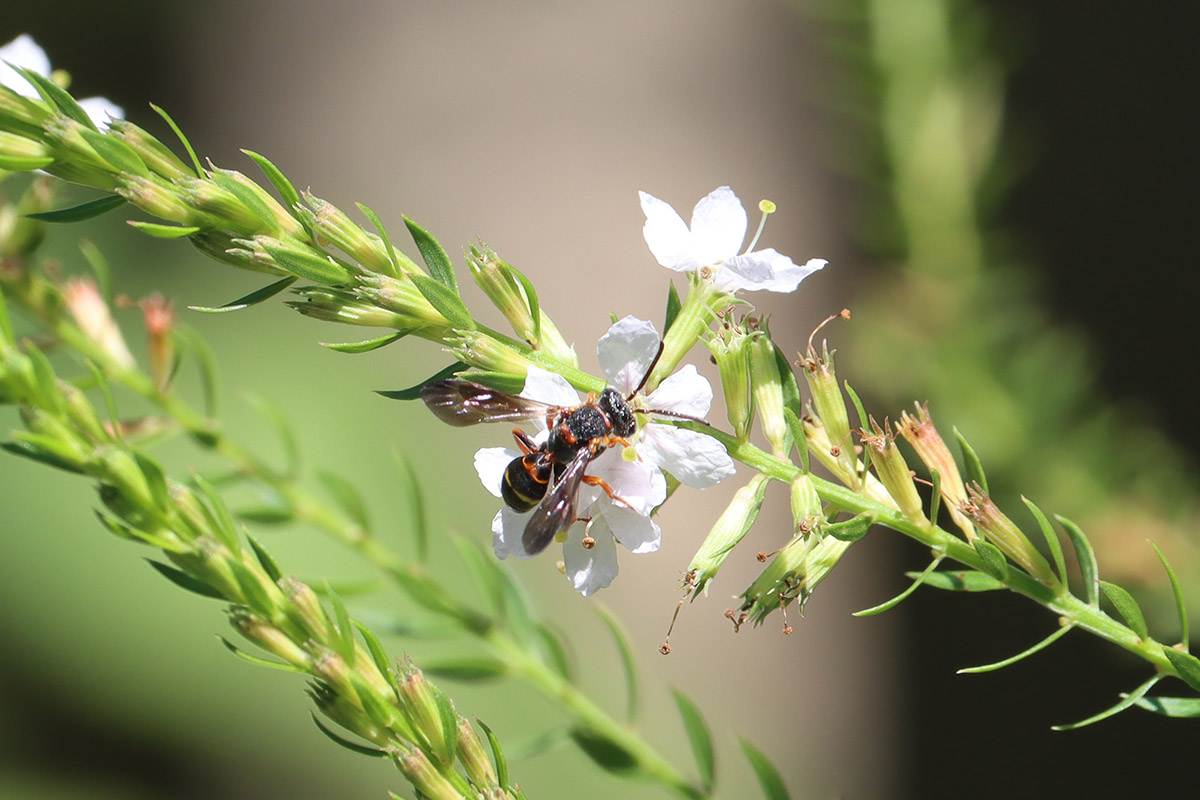
Here’s a bee that shows up in our yard at this time of year, when the beebalm is in bloom. And I always see it on the loosestryfe. It’s a type of cuckoo bee, one that hosts on the Agapostemon genus of sweat bee. In our yard that’s the brown-winged striped sweat bee, which is exploding right now.
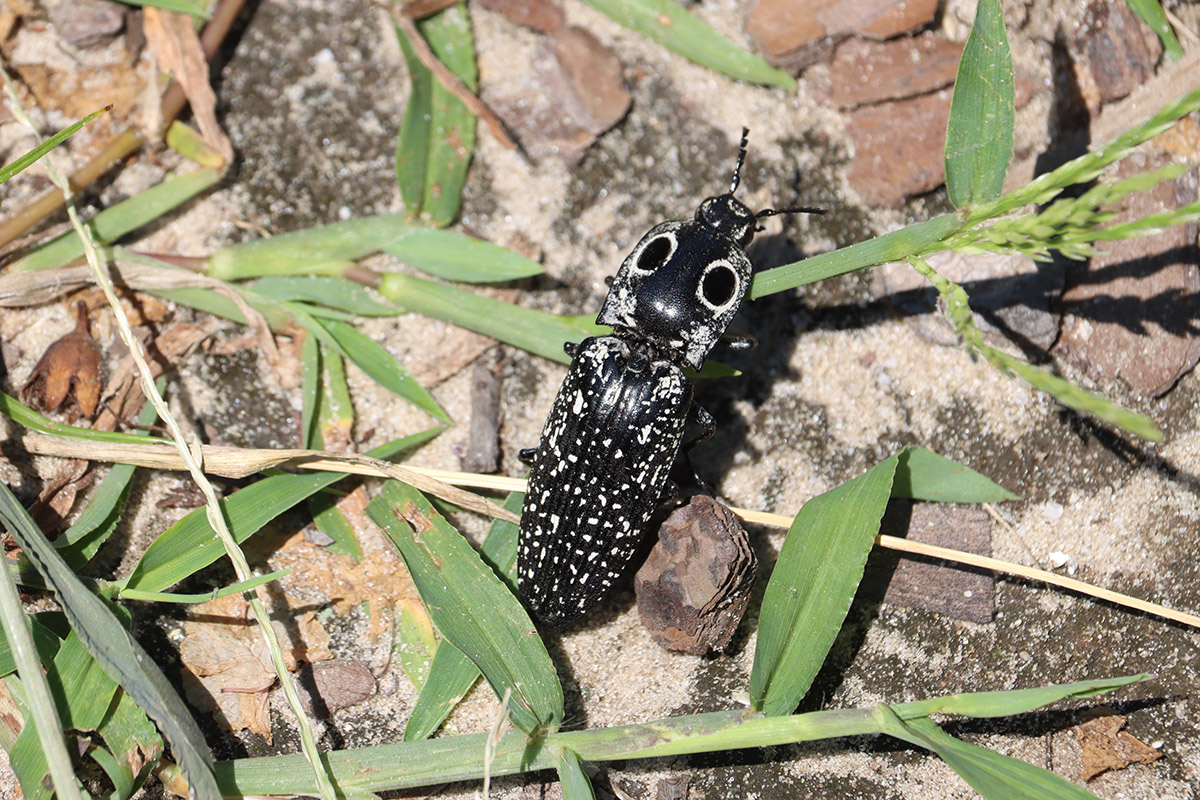
I wonder if this is the offspring of the click beetle that visited us a couple of months back.
August 16, 2022
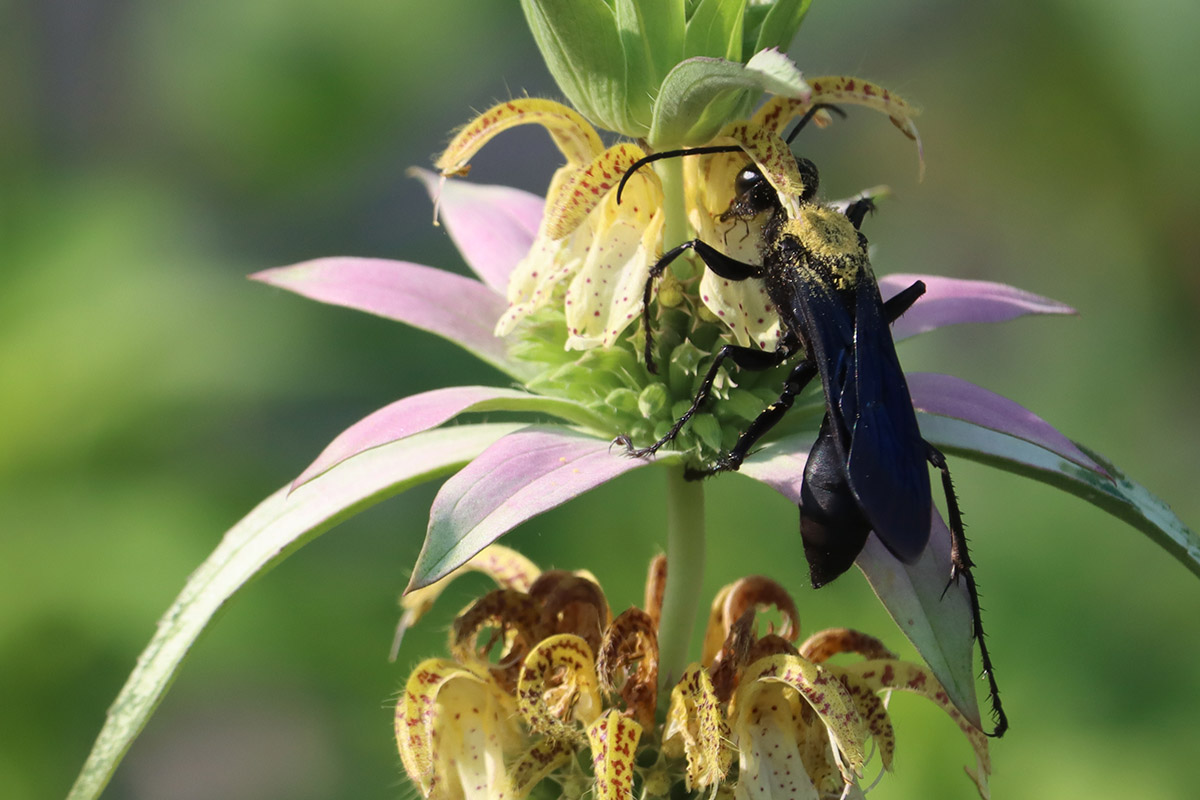
Here’s the other digger wasp we see on the beebalm.
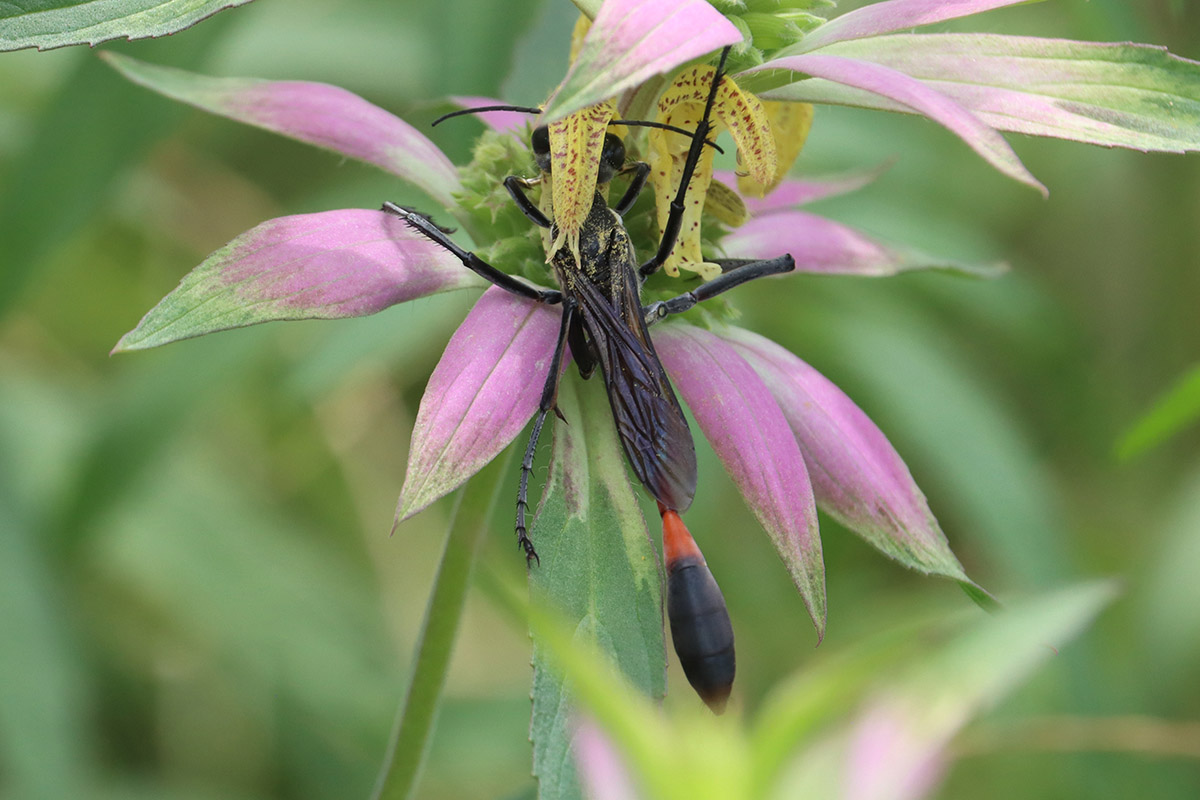
At first I thought this was a golden digger, but instead it is a cousin from the Sphecidae wasp family. This is also a large ground nesting wasp.
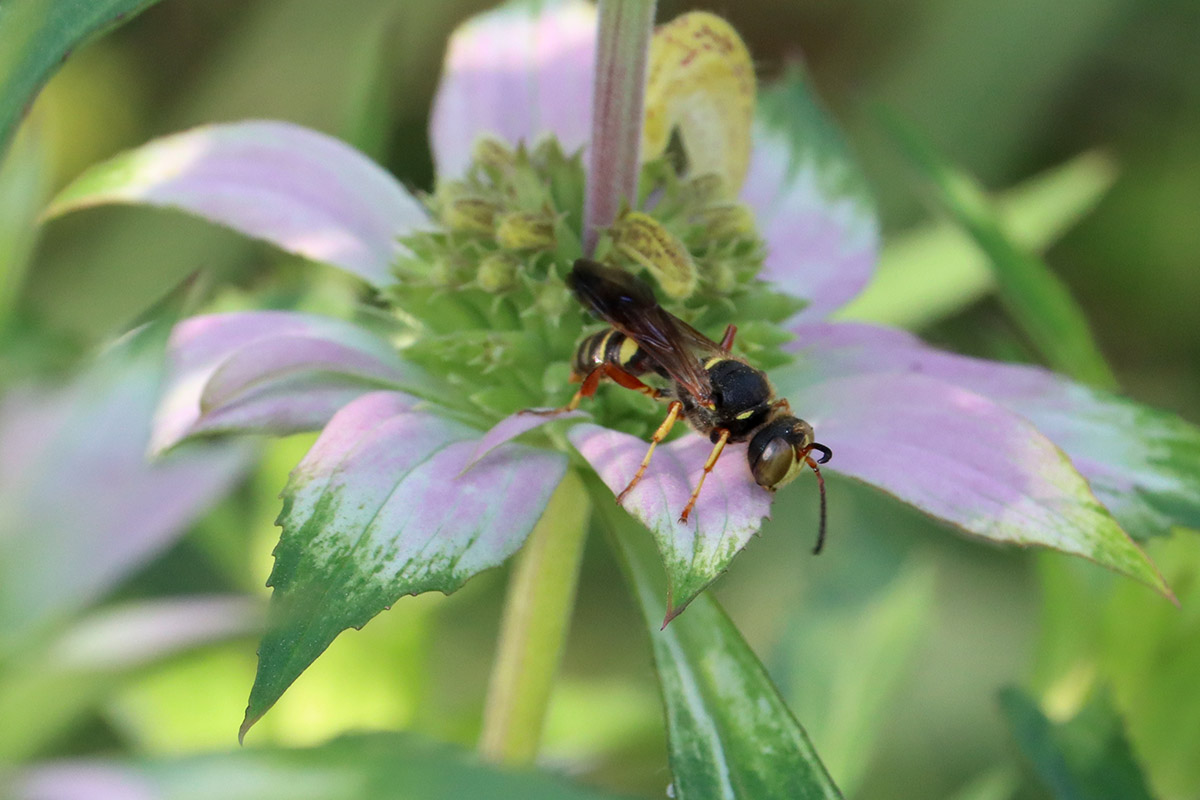
Another genus-level iNaturalist ID. Another ground nester that hunts beetles and bees to feed its larvae.
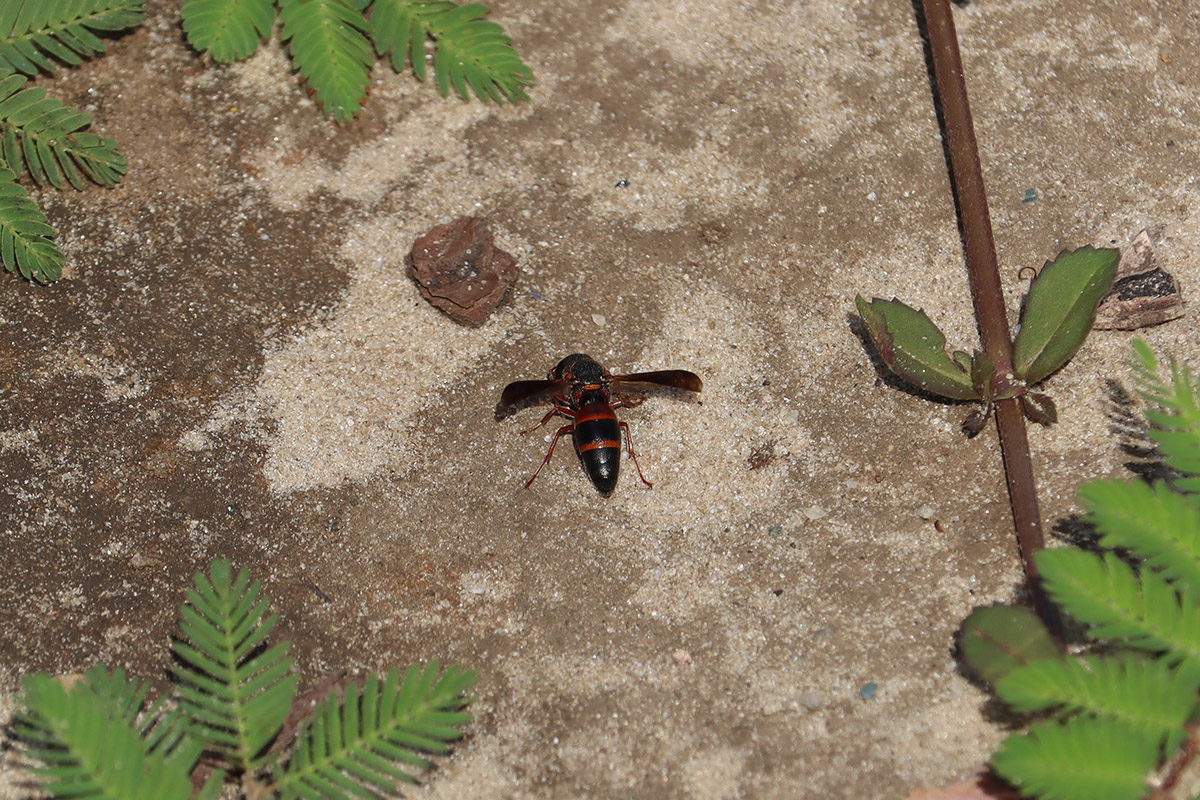
This is a wasp that used to be common in the yard, but that I’ve barely seen over the last year or so. This is a mason wasp, and I’ve observed this behavior from it before. It’s collecting sand to seal up its nest. While we don’t have many mason bees in Florida, this wasp will use a bee nesting house and seal their nests with soil. They may also nest in metal fixtures, like a fence handle with an opening.
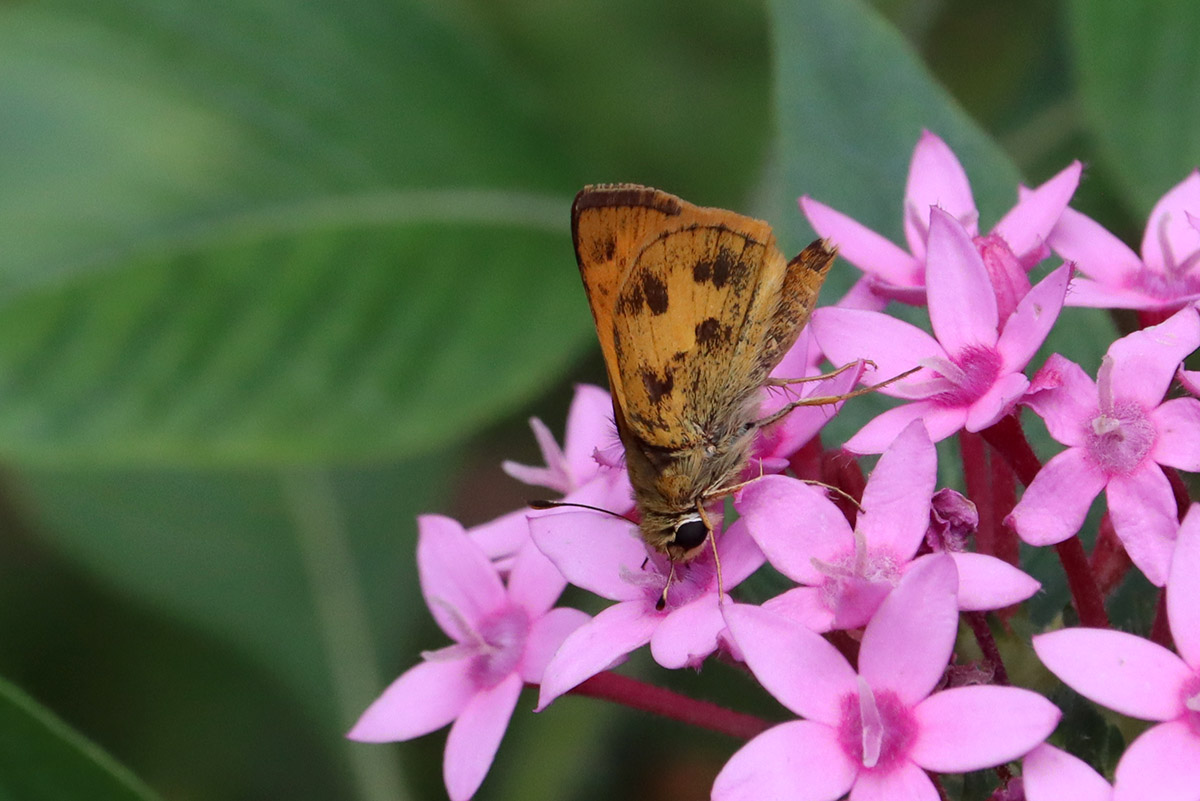
The grass skippers are all similar looking, but the zabulon skipper has these large splotches on its underwing where a fiery skipper has smaller dots, and Delaware skippers lack any pattern. This is the last of three Pentas plants from before I went more fully native in the yard. I’ll likely always keep one Pentas and one Anise hyssop in the yard.
August 17, 2022
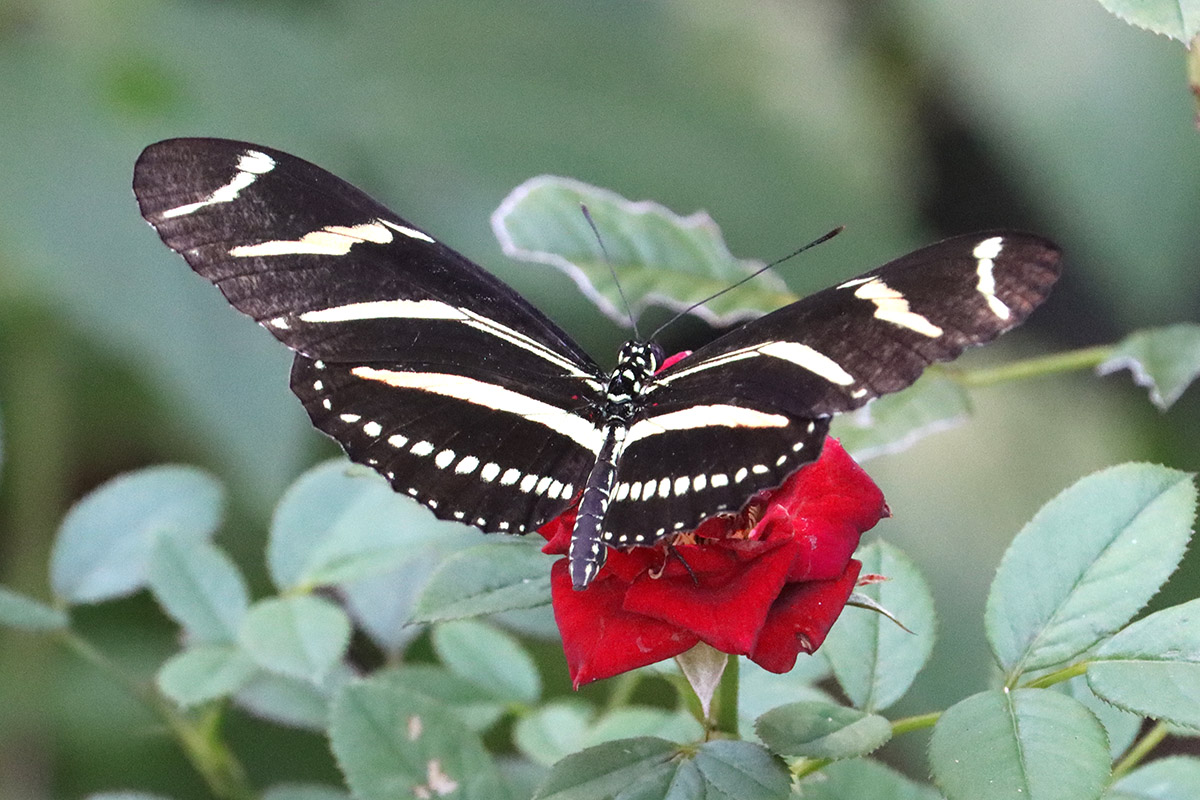
I don’t often see pollinators on my wife’s rose bush. I’m starting to see more zebra longwings flying around the yard, which makes sense because:
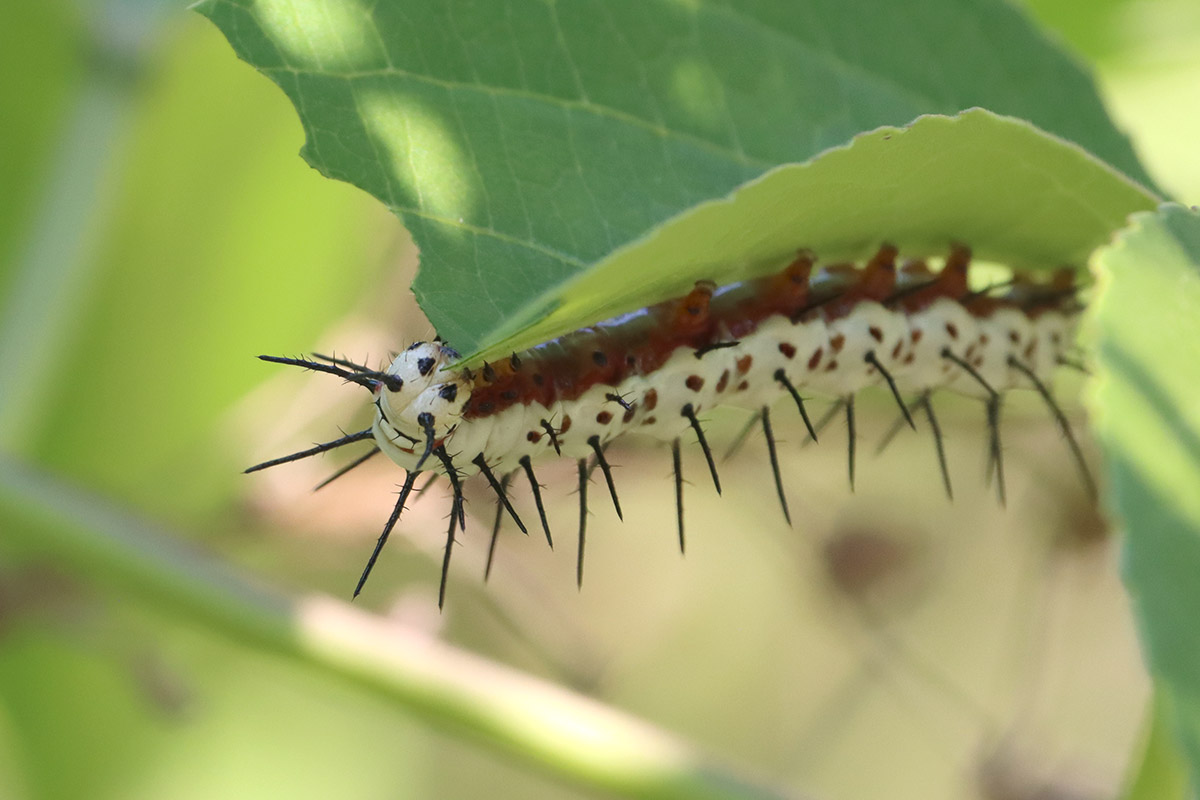
I haven’t seen gulf fritillary caterpillars for over a week, despite the large number of eggs laid on and around the passionvine. The caterpillars have declined just as the beebalm has attracted various wasps to this part of the yard, and I wonder they ended up feeding wasp larvae.
August 22, 2022
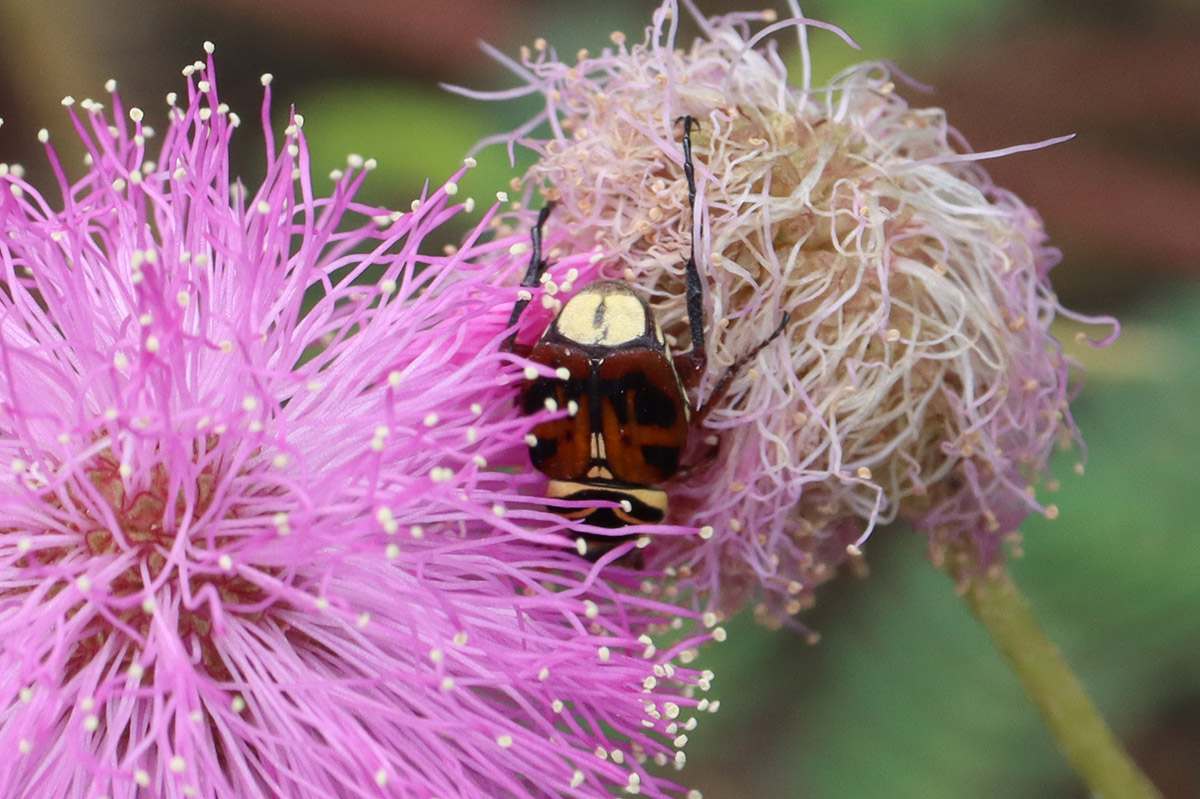
This is a common pollinating beetle in our area, but this is the first time I remember seeing one in our yard.
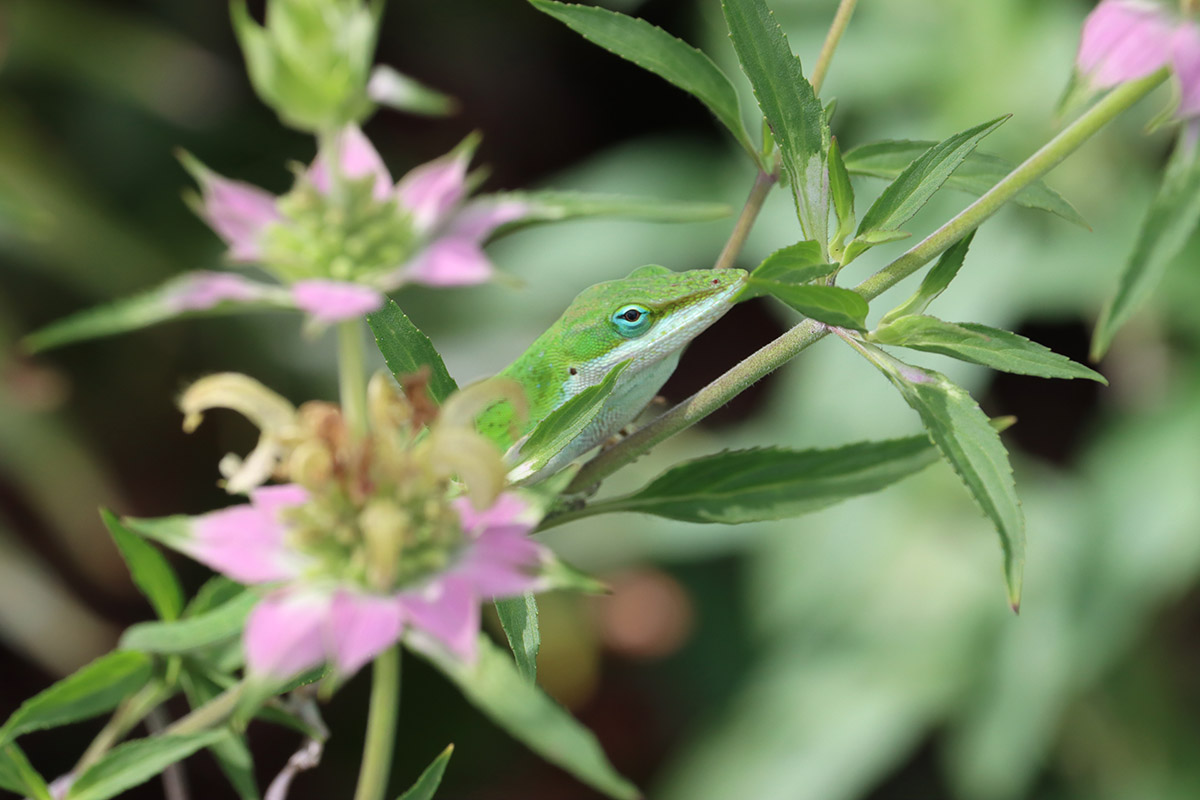
With the heavy traffic on these flowers, this is a favorable spot for a well camouflaged predator.
August 24, 2022
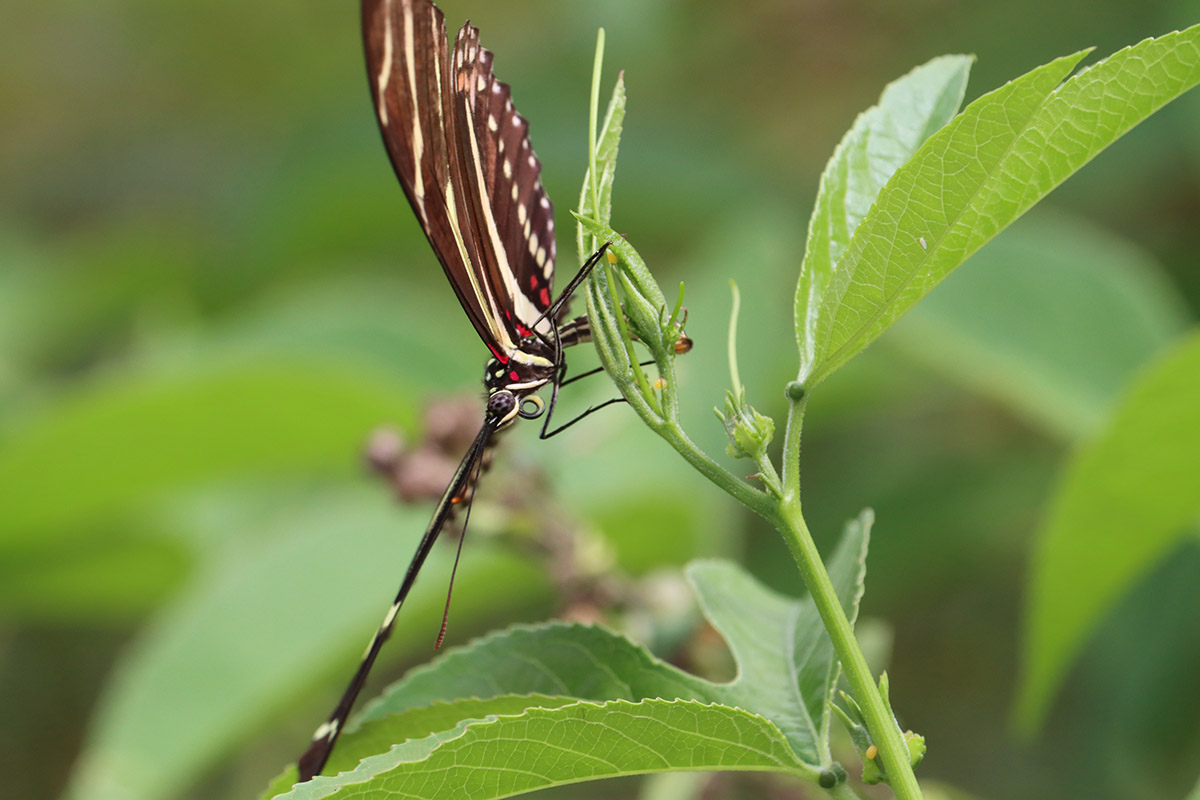
Zebra longwings are hanging out more, and apparently mating. Let’s see if the eggs in this photo have better luck than the gulf fritillary eggs from a few weeks back.
August 25, 2022
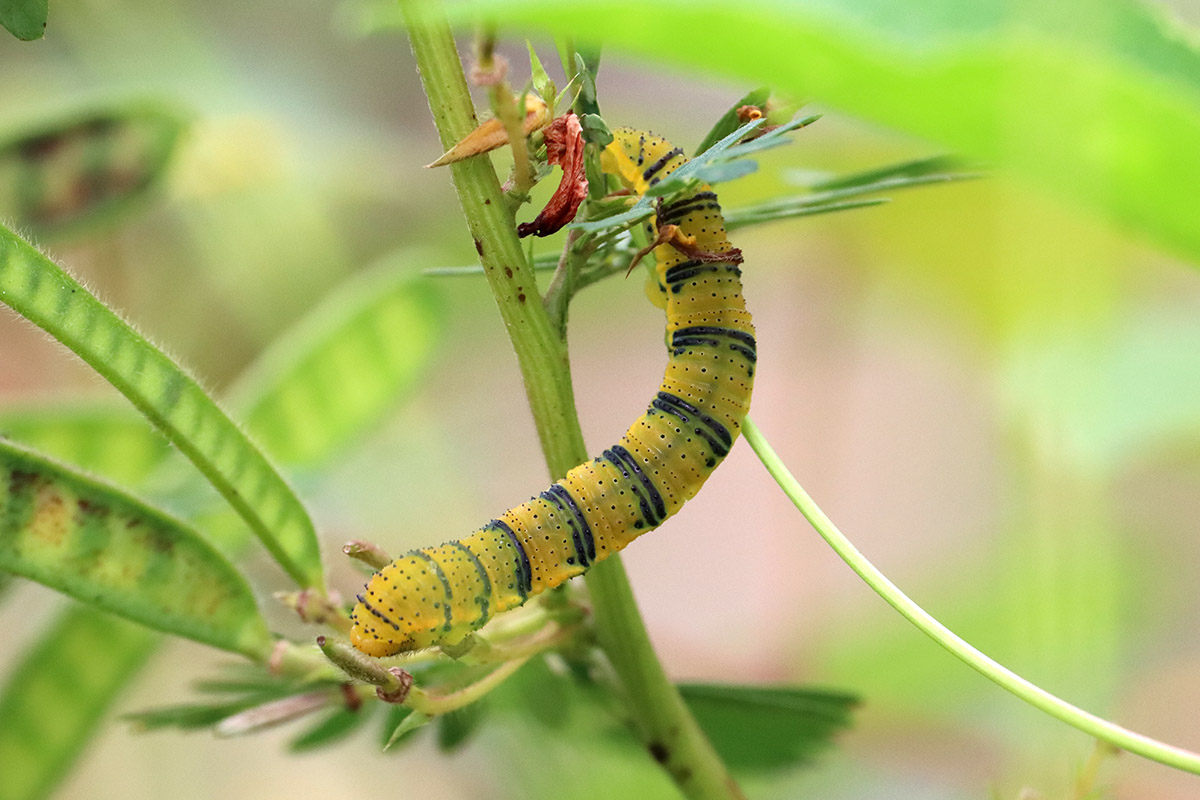
The partridge pea grew from seed in an area that became crowded with beebalm on one end, and several shrubs (and passionvine) on the other. This is likely why I missed the earlier stages of the sulfur caterpillar. I planted two new butterfly larval host plants and have now seen three new caterpillar species for the yard.
Note the seed pods in the photo- this plant grew from seed, and has attracted bees and butterflies as pollinators, and now caterpillars.
August 28, 2022
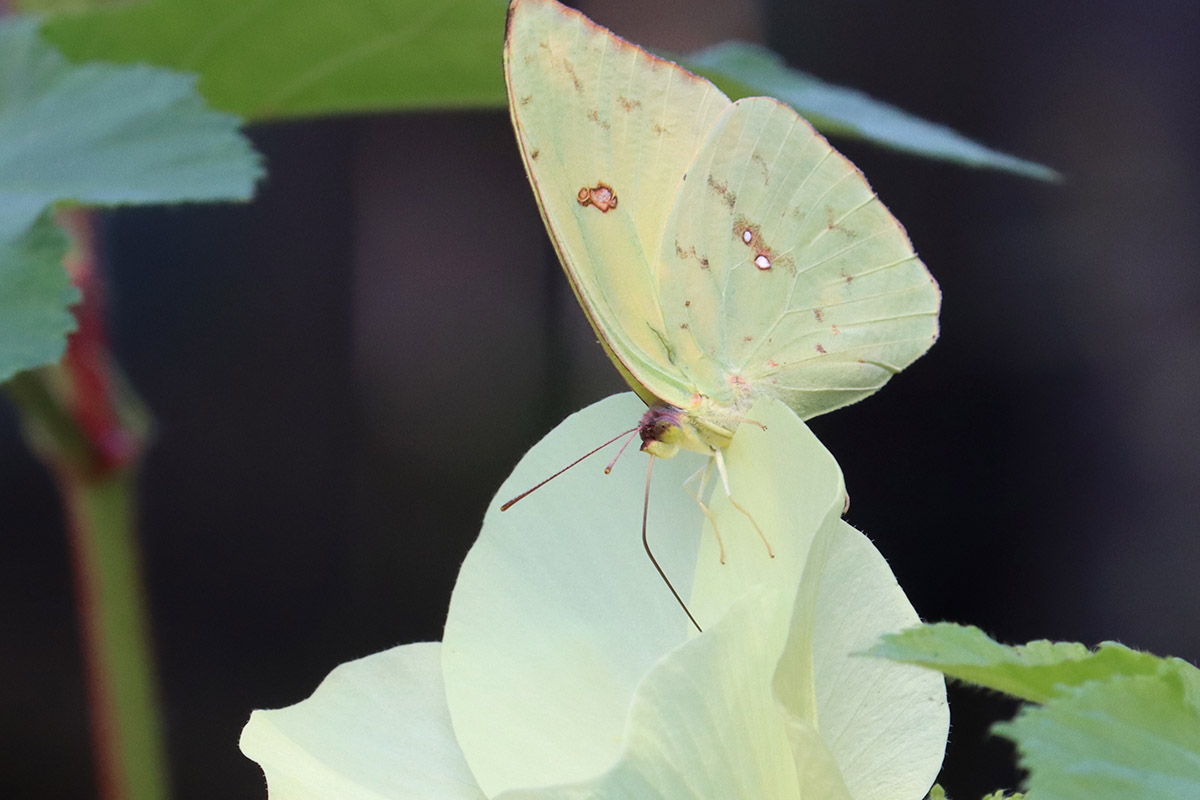
In addition to seeing their caterpillars, when you plant a larval food plant, you see more of the butterflies hanging around. I love that the sulfur matches the shade of the okra flower somewhat.
By the way, this okra variety has been phenomenal. A teacher at the kids’ school gave away various okra seeds during a volunteer day; this is Texas Hill Country Red Okra. It’s plumper than most varieties, and can get up to six inches long without becoming woody. I made a couple double batches of gumbo from it over the summer, as well as a couple of side dishes. I’ll be saving seeds for next year.
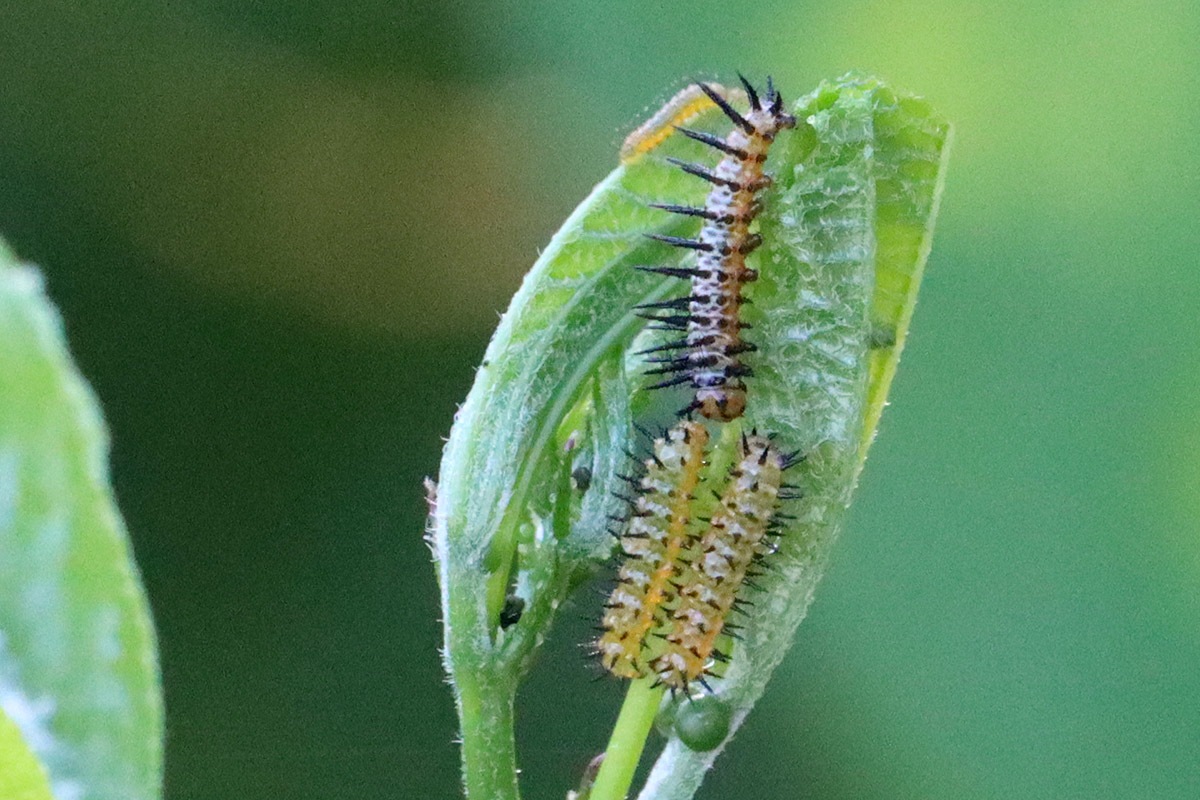
Zebra longwings have indeed been busy. I have a feeling this will be a fun caterpillar to follow.
August 29, 2022
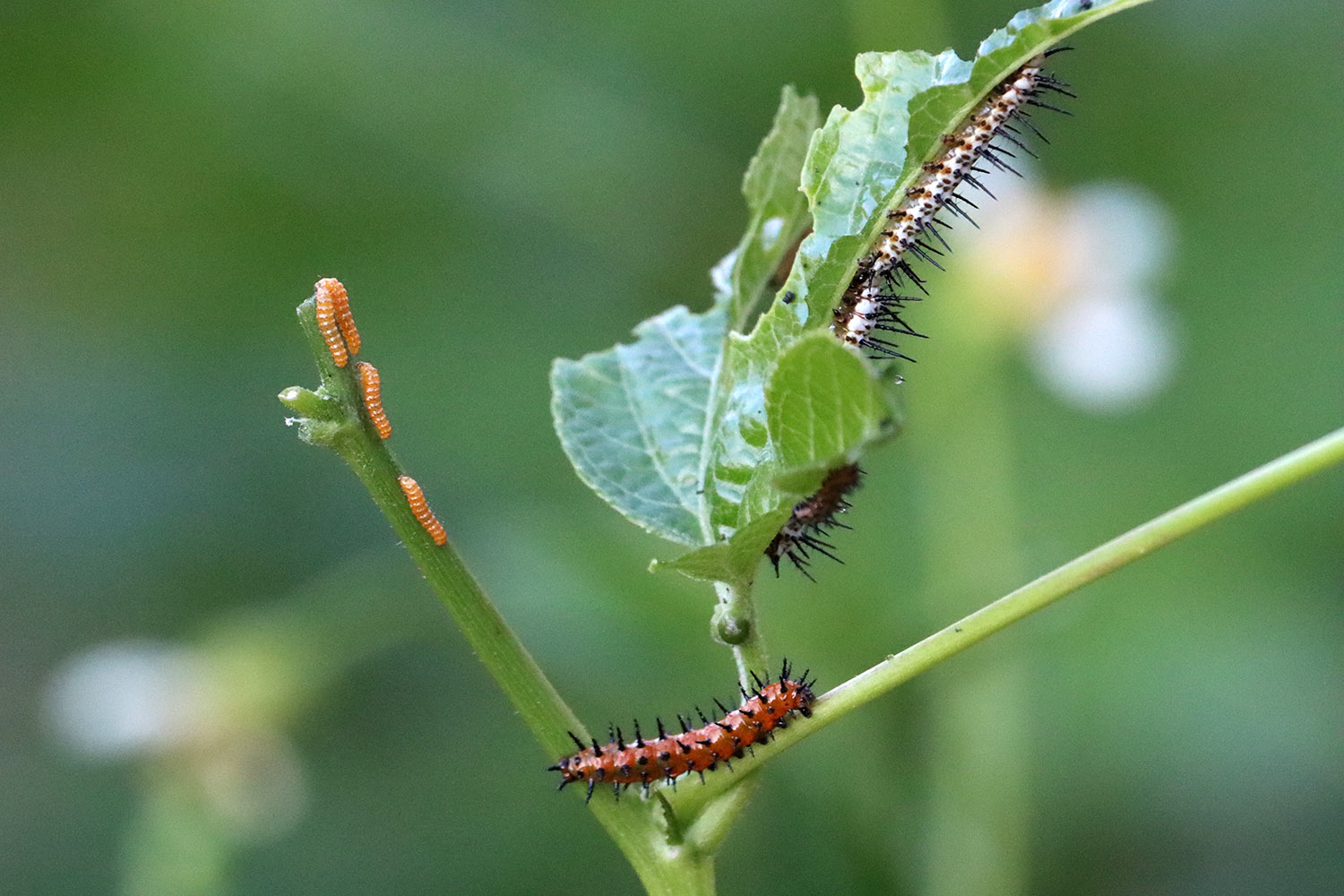
The passionvine is so intertwined with so many bushes, and has branched in so many different directions. I’m seeing more and more later instar caterpillars that had previously been out of sight.
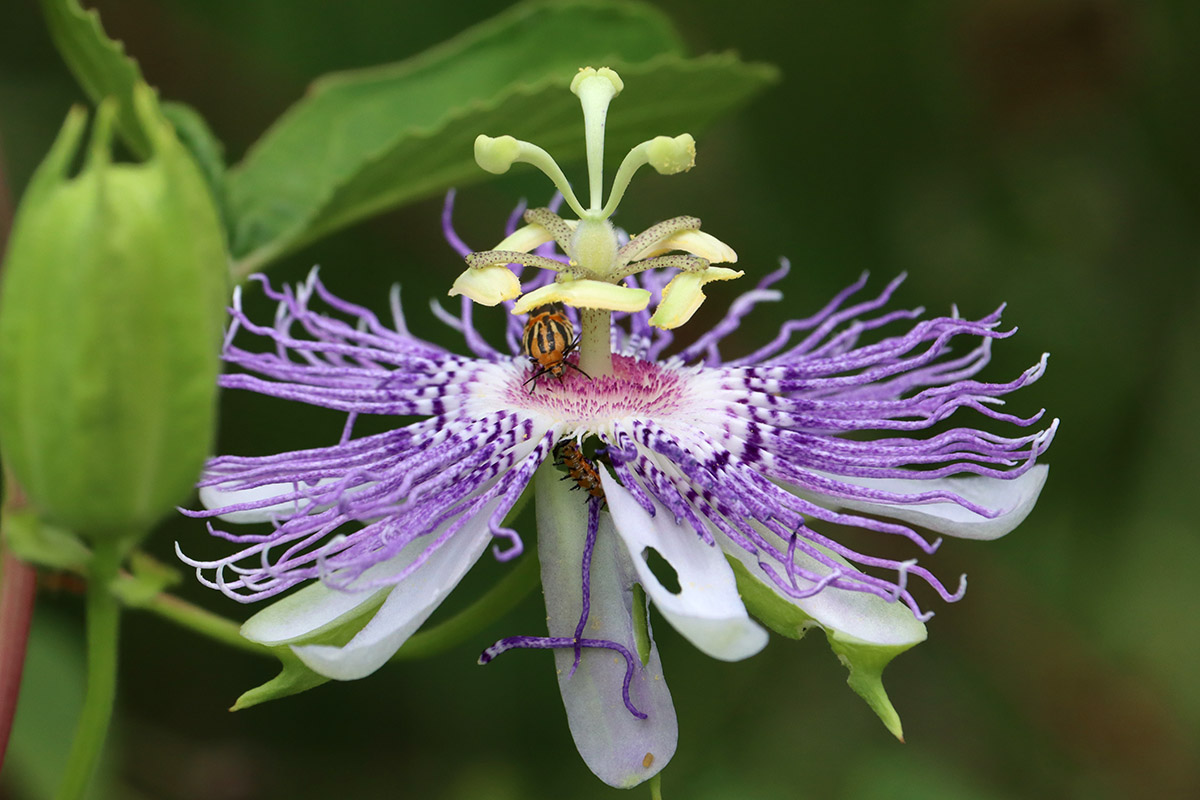
This is one of the most outlandish looking native flowers you can have in your yard. Our blooms only last for a day, but they are spectacular.
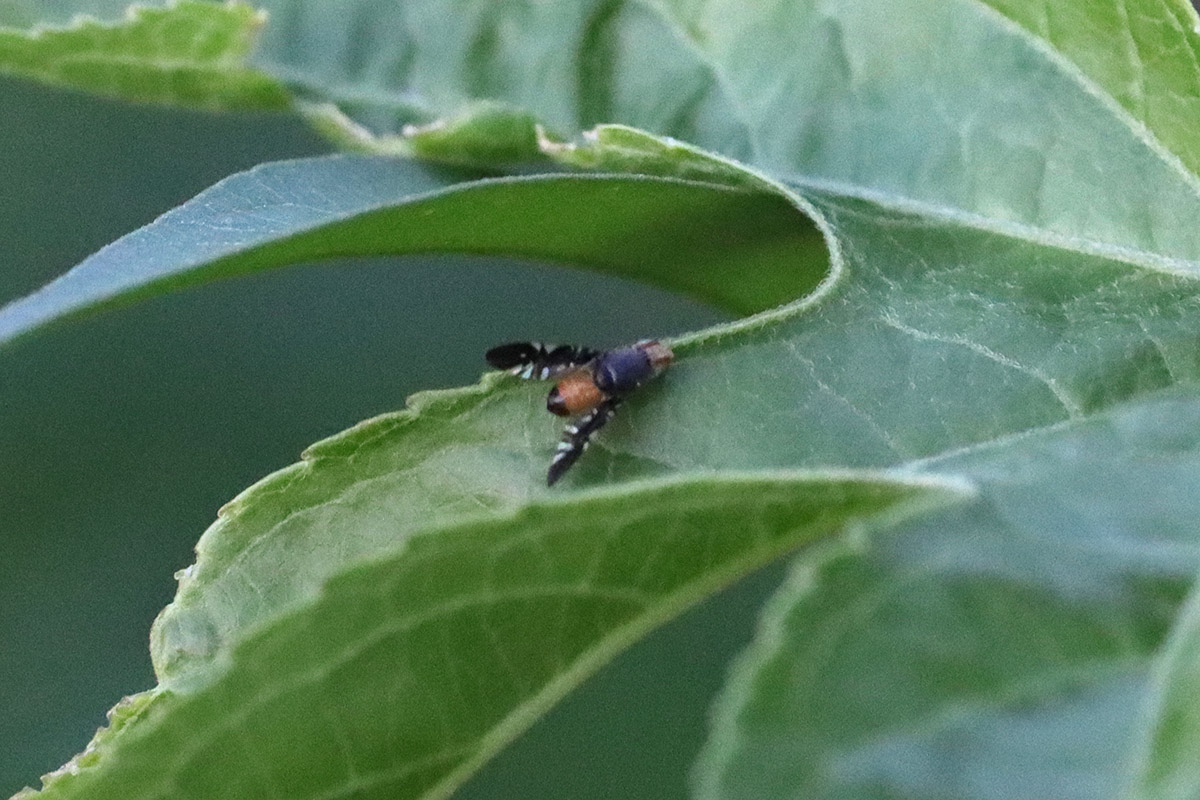
This is a tephritid fruit fly, a different family than the common fruit flies we see in the house (Drosophilidae). I’ve been noticing them on the passionvine, and wondered if they were a predatory fly species. Like other fruit flies, though, these are plant eaters.
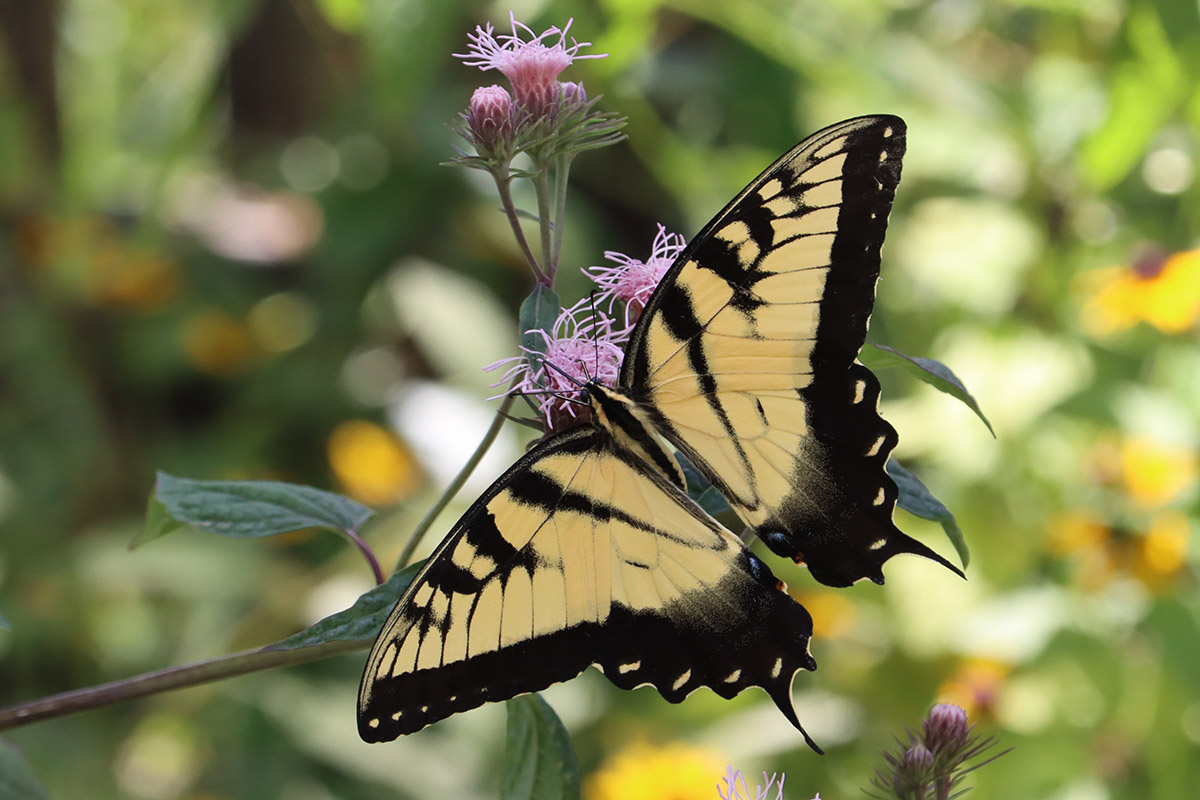
Here’s a new butterfly for the yard. The Brickellia is attracting more species of bees and butterflies every year we’ve had it.
August 30, 2022
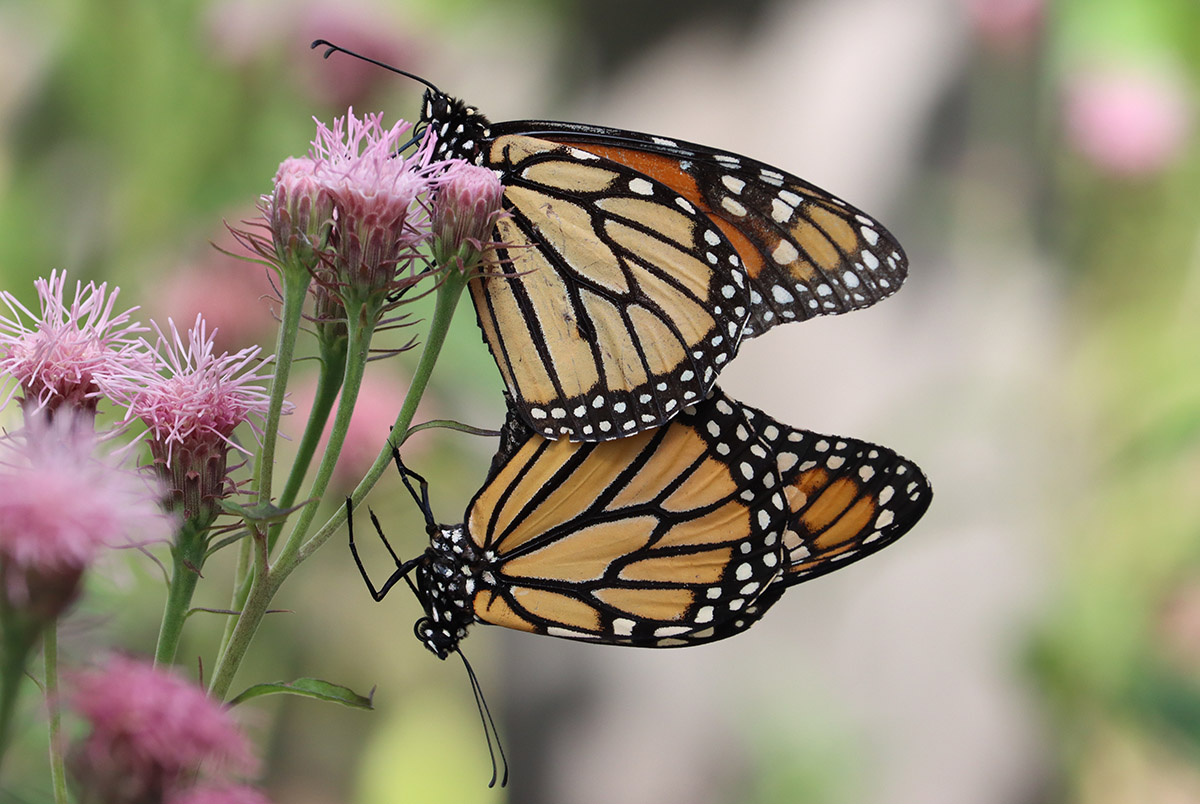
We’ve had up to six monarchs at a time in the vicinity of the Brickellia. Usually, the mating behavior starts on the plant, and a chase ensues. These two are content to stay put. If you look closely at the top butterfly, its proboscis is curled inward. I did wonder whether it might be eating (with its proboscis out in the flower) while mating, which seems in line with the indulgent lifestyles of monarchs of old.
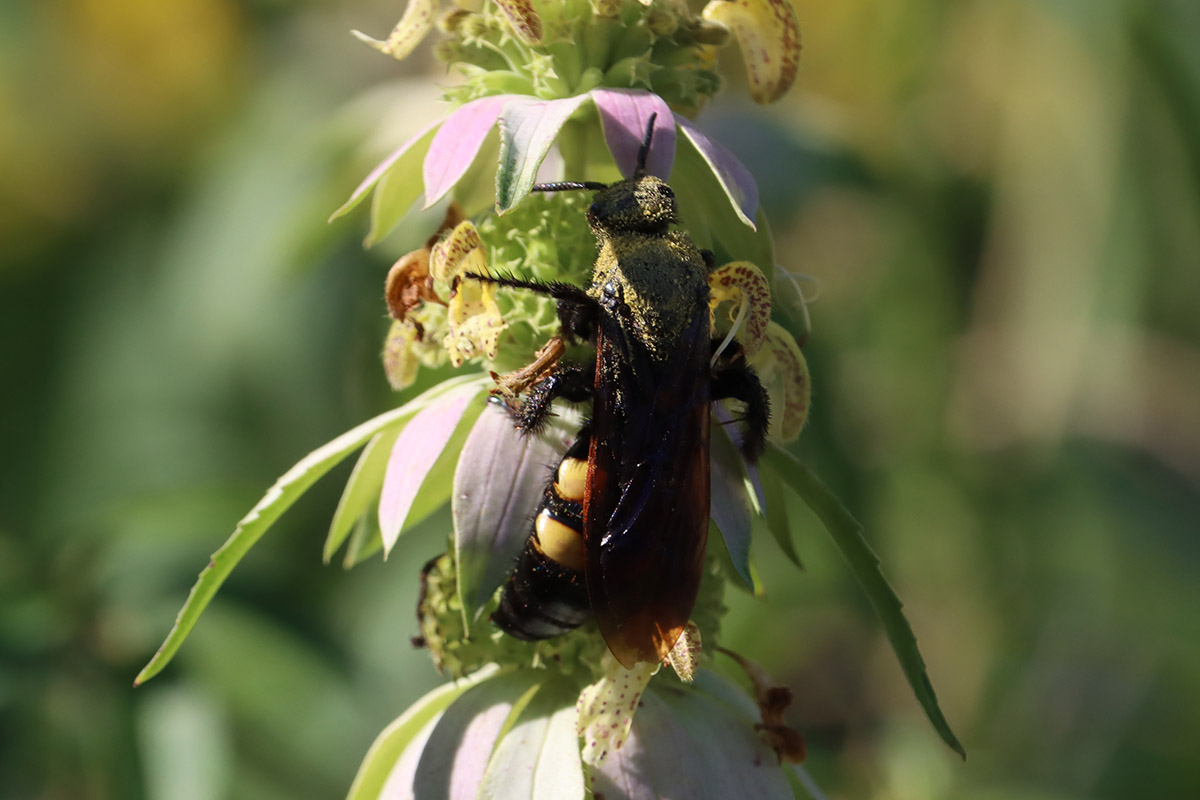
I have a feeling there’s a lot of stuff I’m missing in the yard because the beebalm, passionvine, and Brickellia have been so spectcular. Spotted beebalm is a favorite of large wasps and bees, and here’s one of the largest wasps in our area.
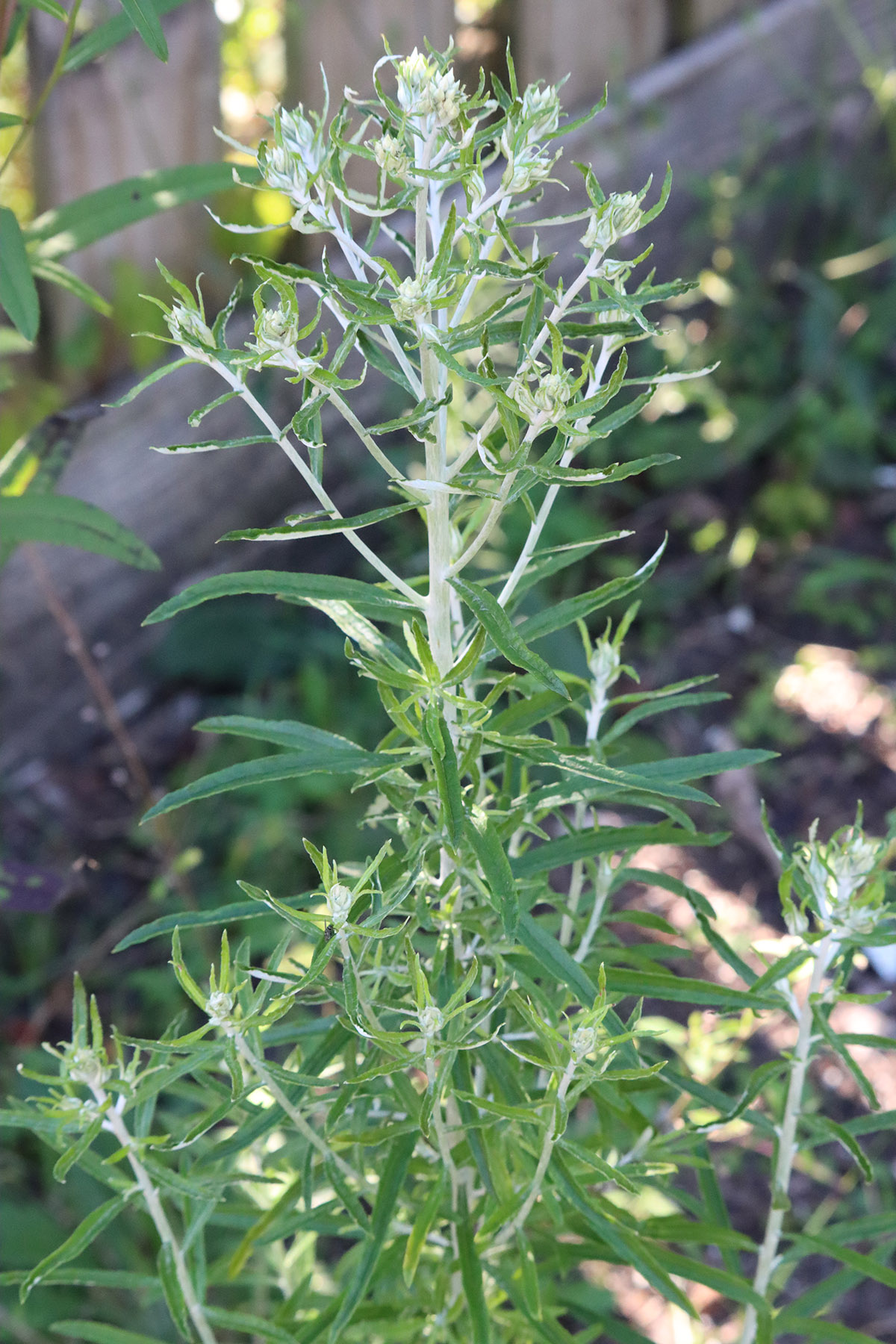
This tall wildflower has grown up next to an ironweed plant. Its leaves are superficially close enough to the ironweed that I didn’t pay it any mind until I saw it start to bloom. This is rabbit tobacco, a type of cudweed. This would host an American lady butterfly.
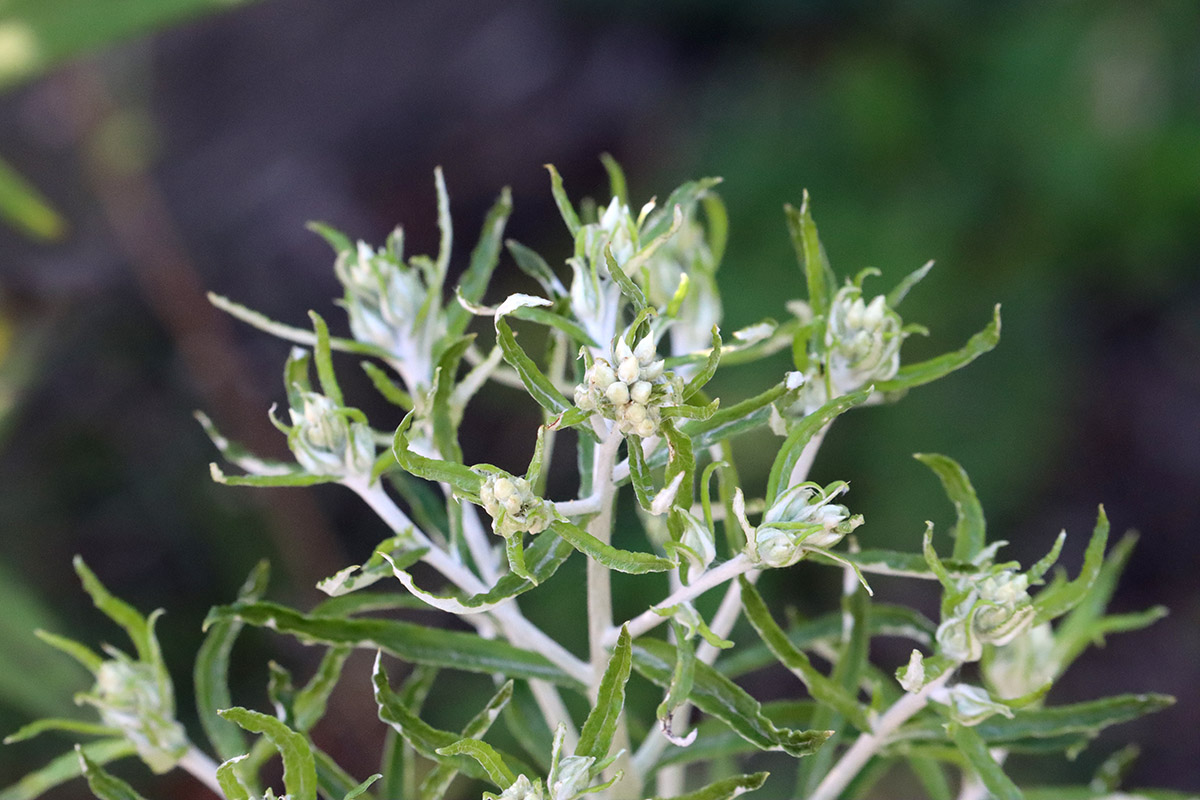
September 2, 2022
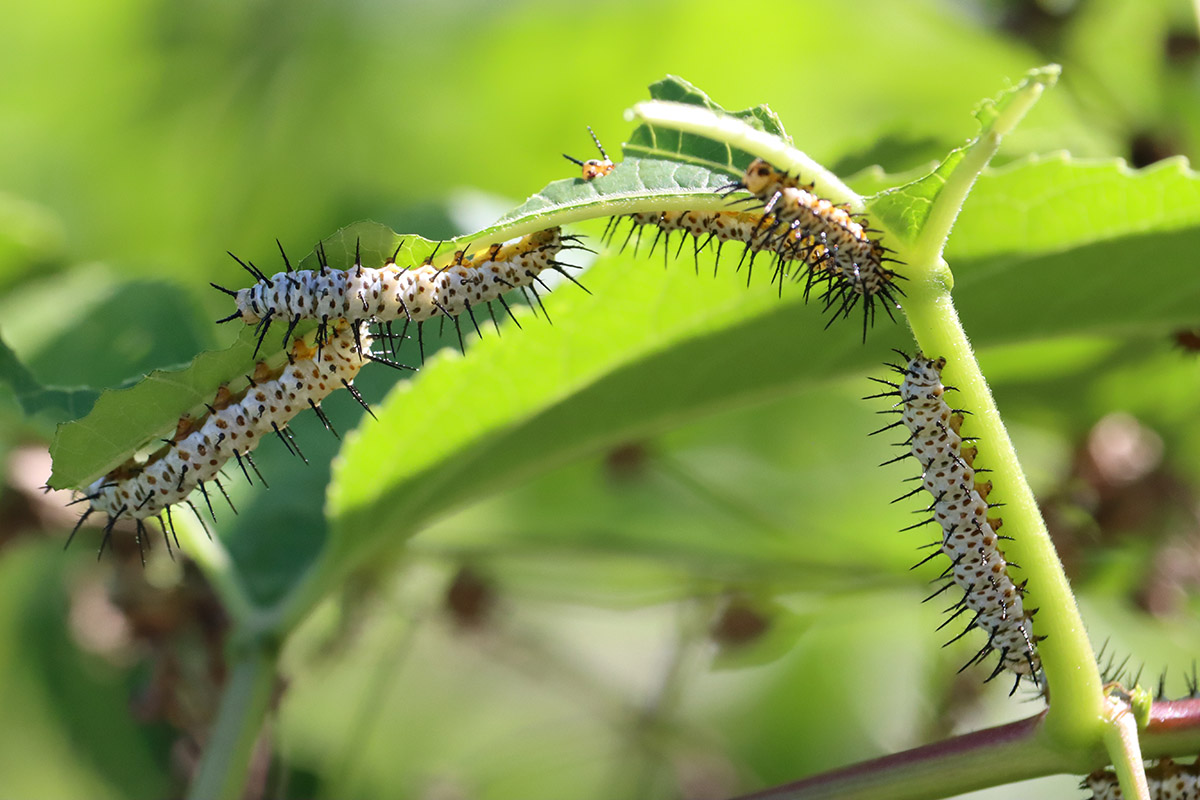
The caterpillar explosion continues.
September 6, 2022
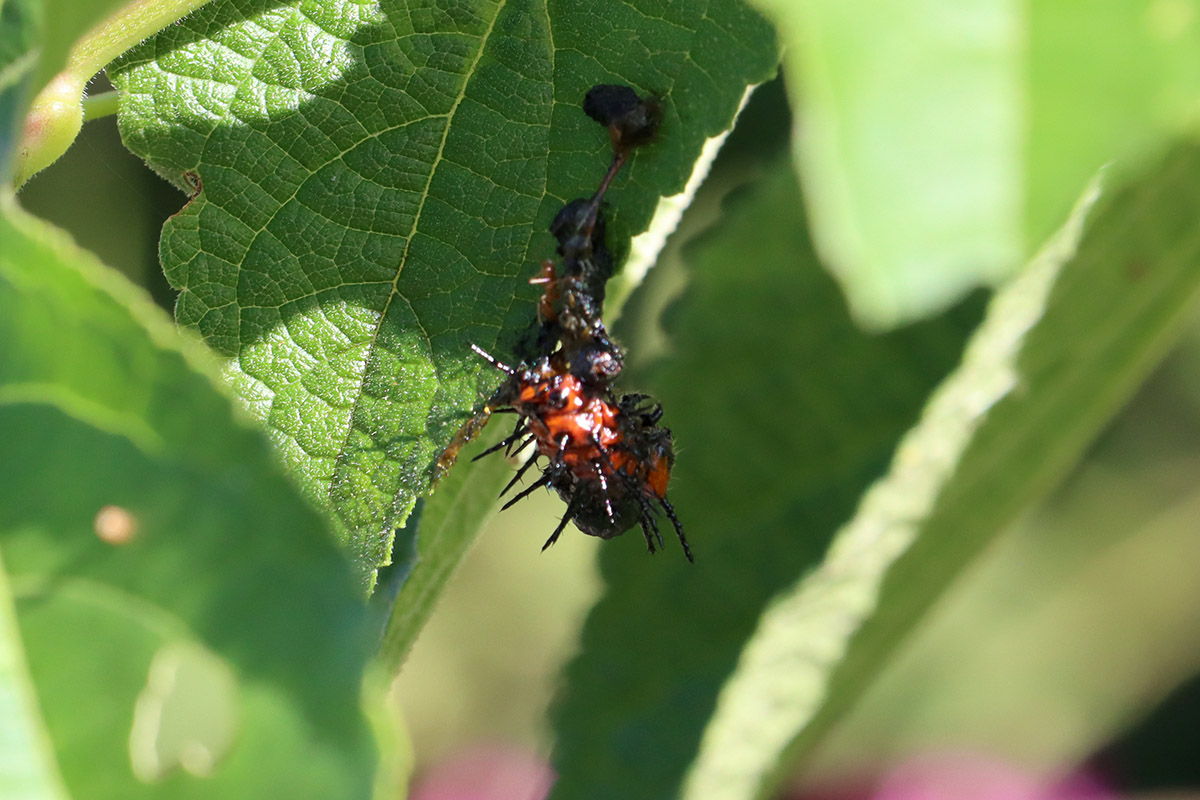
It was a deadly day in the garden. We’ve had a large number of caterpillars on the passionvine, and I know a percentage of them are eaten. But I hadn’t seen any predation, or evidence of it, until now.
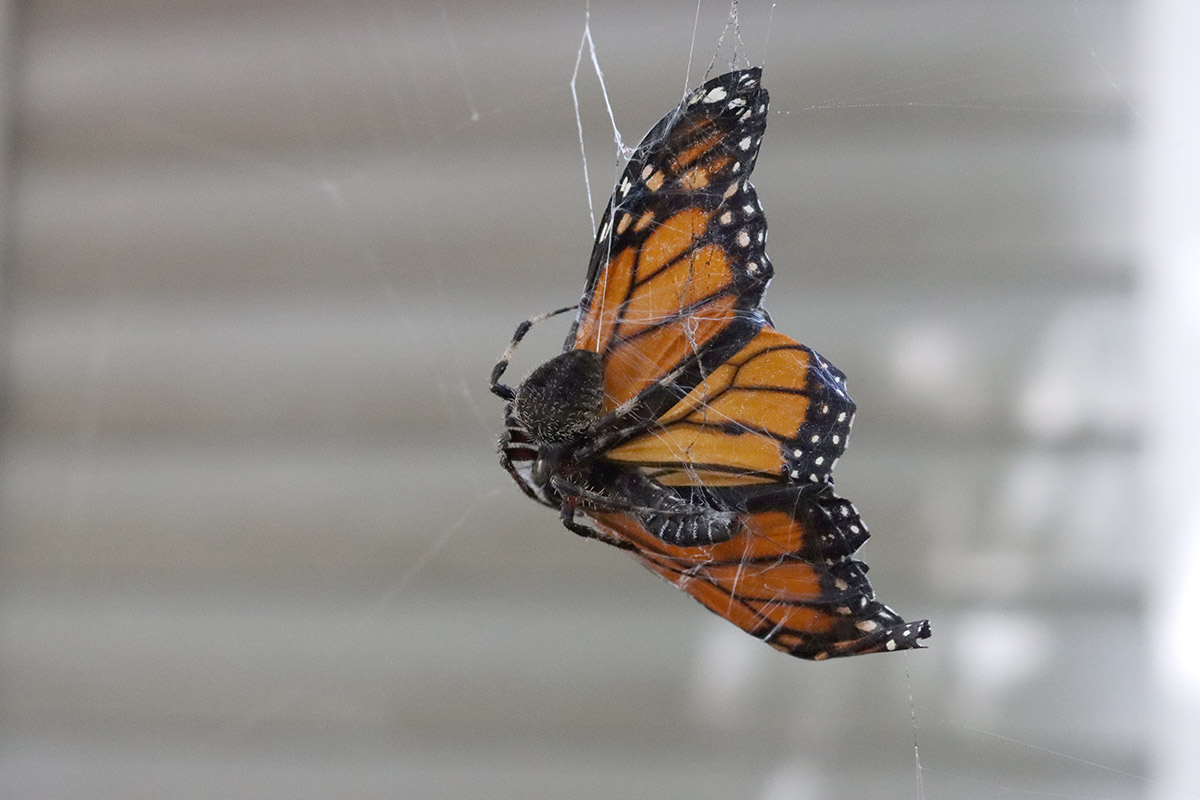
I’m not confident on the spider ID, but I have it as a brown sailor spider on iNaturalist. I will update if another user chimes in.
Even the insects we like are a part of the food web. It’s the hidden value of planting larval food for butterflies, that so many caterpillars and adult butterflies end up being eaten. If we like seeing birds in our yards, and any number of other wildlife, we need to provide as many food sources as possible.
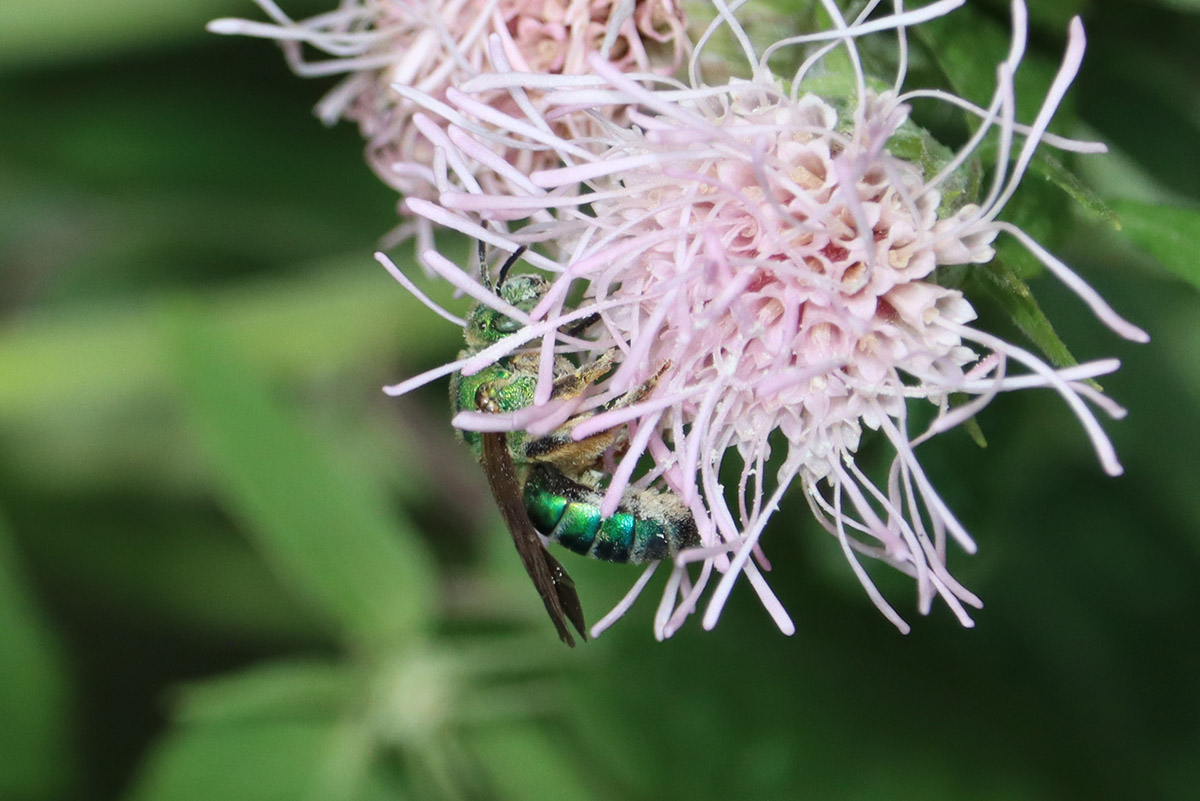
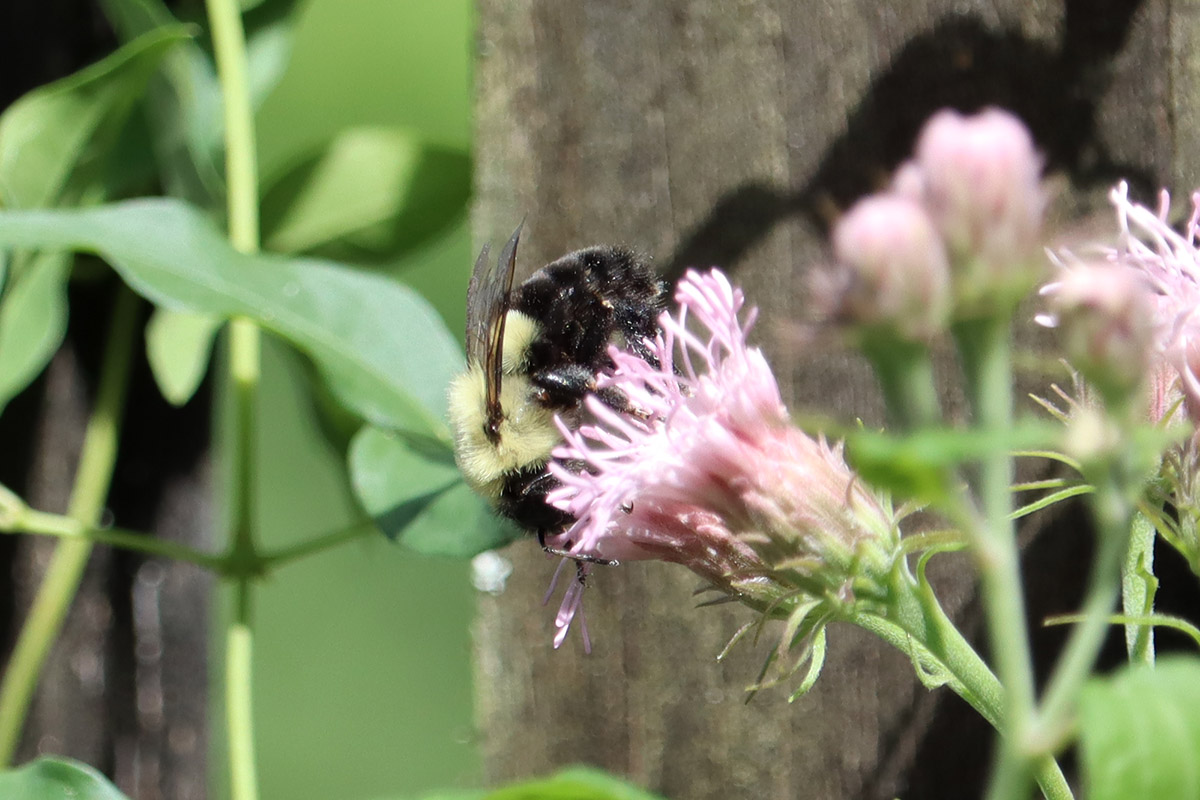
September 11, 2022
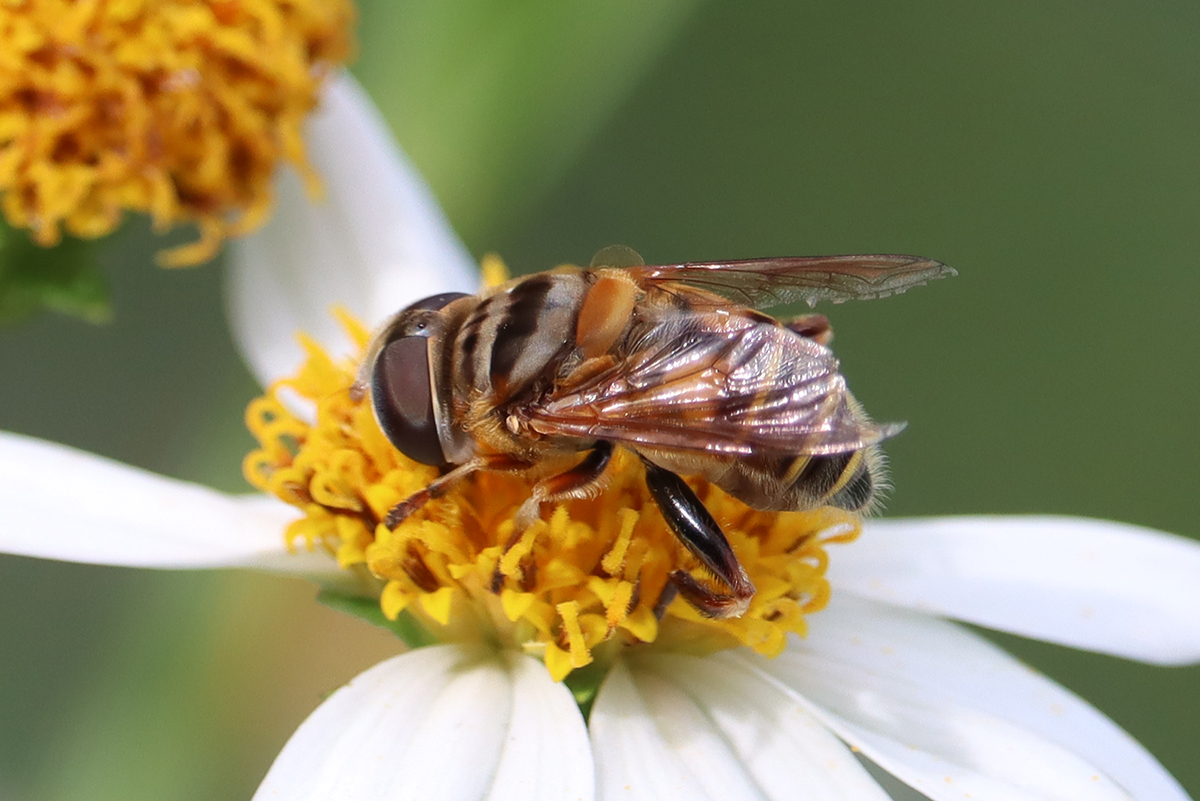
Here’s a species of hoverfly I’ve not seen before.
September 12, 2012
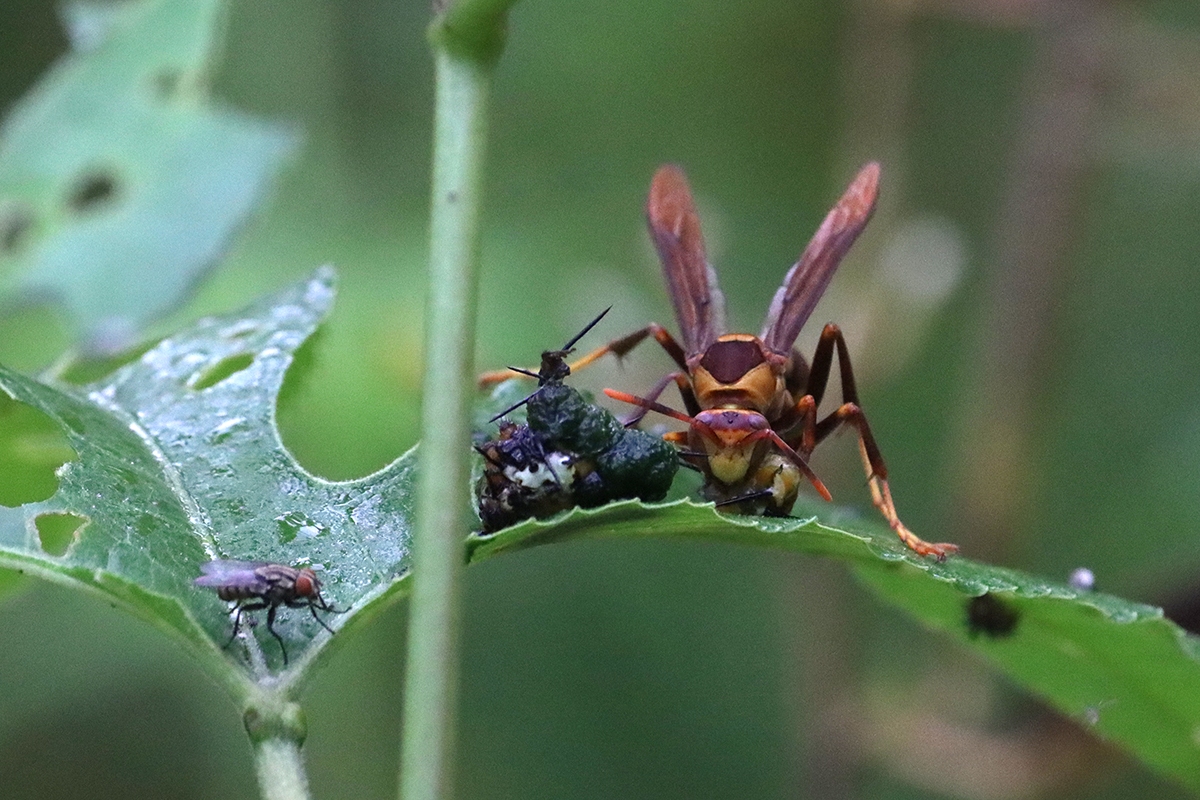
Here’s one of our culprits, with a flesh fly waiting for leftovers.
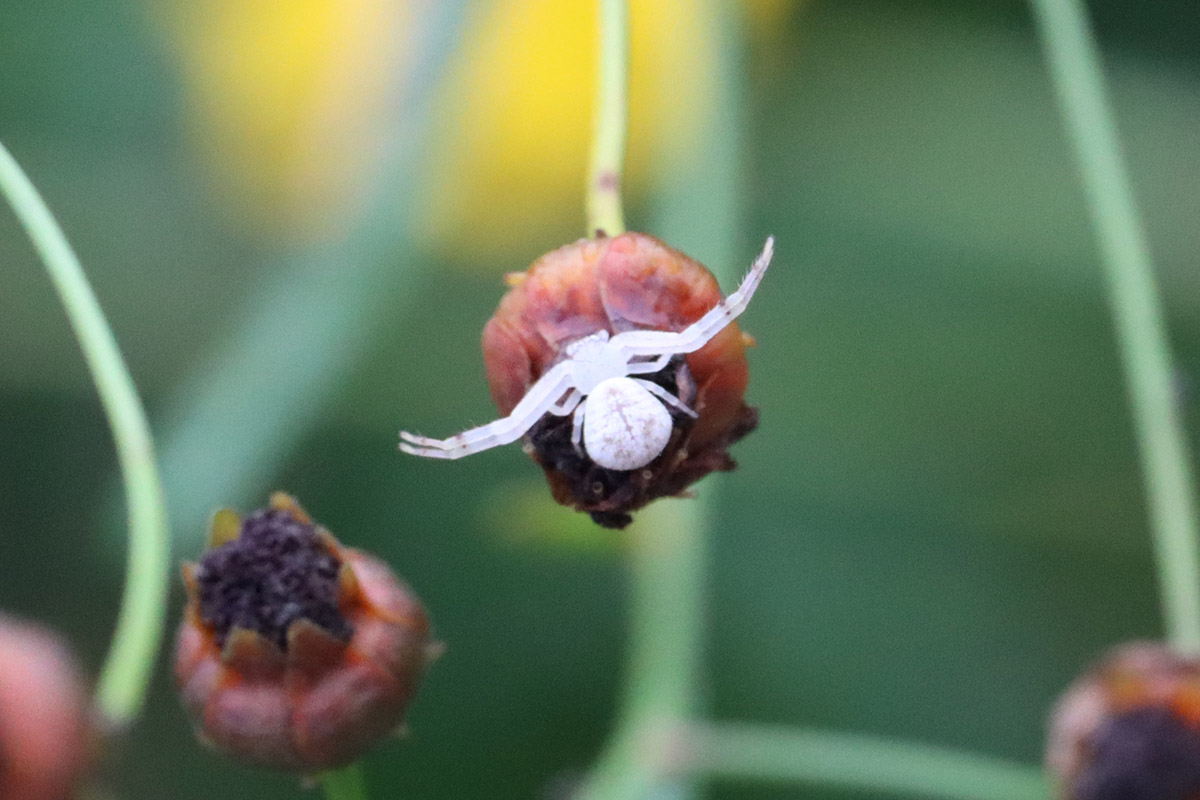
After a couple of months of rain, Tallahassee is starting to go dry. Flowers that have been going strong for months are starting to die back, and the Brickellia and beebalm are passing the peaks of their blooms. This is a time of transition in the yard.
Leavenworth’s Coreopsis has been our workhorse pollinator plant throughout the year. As its flowers turn to seed, fewer are replaced by new flowers. Here, a predator perhaps awaits a seed bug or other passing insect.
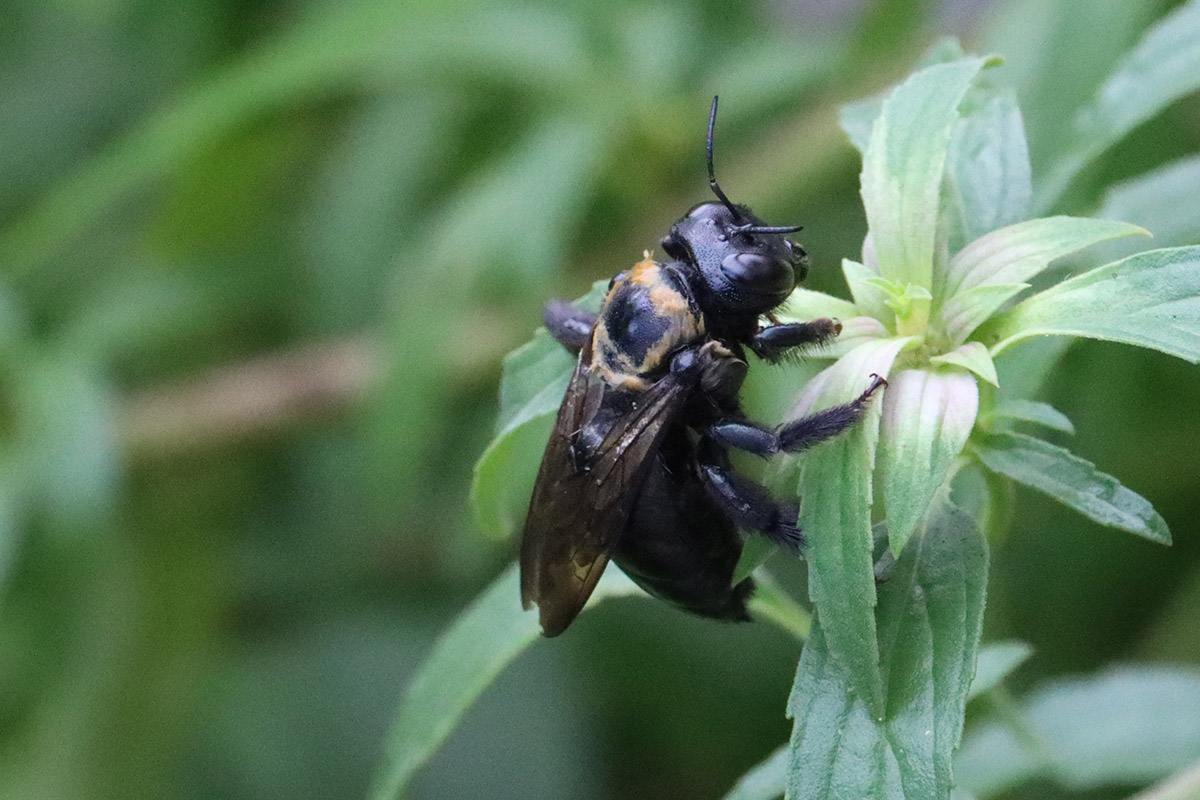
We have about twice as much beebalm and Brickellia in 2022 as in 2021. So, although much of these flowers are starting to fade, we still have new blooms coming in.
September 14, 2022
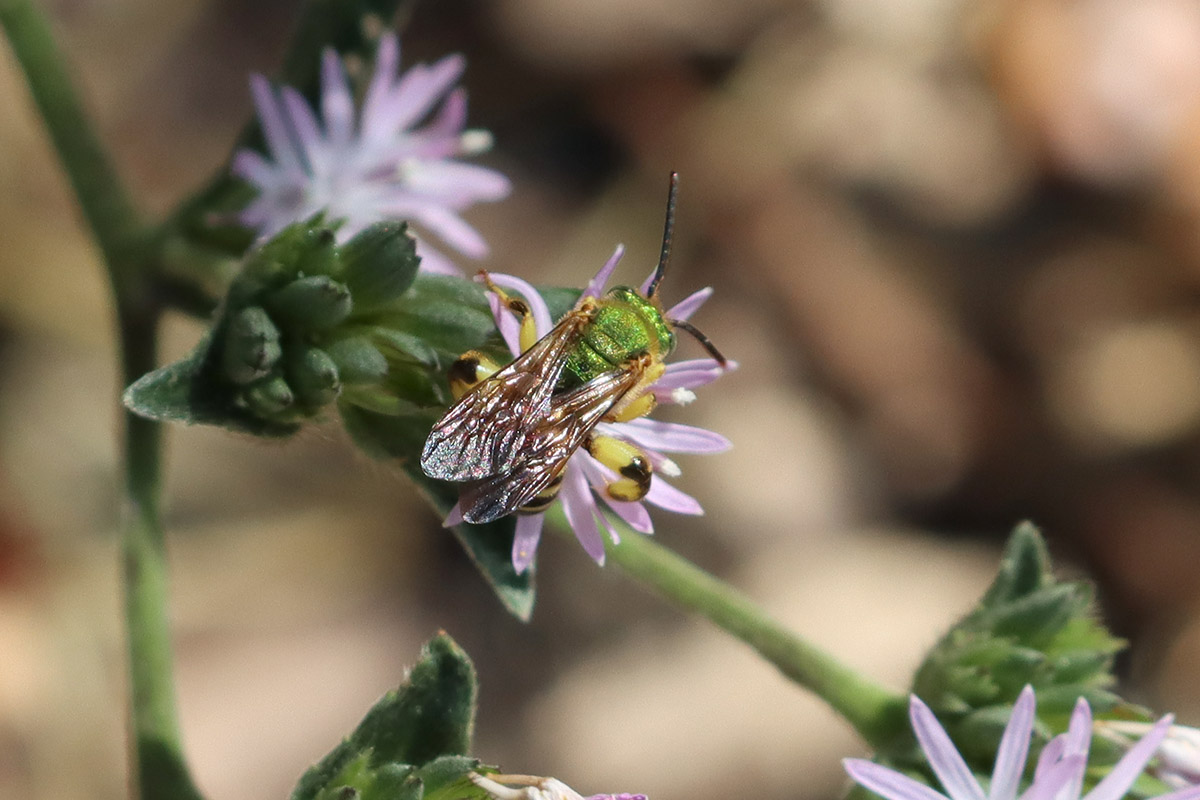
Elephantopus flowers are starting to bloom, feeding smaller bees and wasps. We have seven or eight of these that seeded from a single weed growing along our back fence. I transplanted a few to the front yard, which we see here. This is a late summer / early fall blooming flower.
Sometimes in our yard, we have a gap between the fade of the summer and longer blooming flowers, and the bloom of the fall flowers. This is when we stop seeing a lot of pollinator species, and that is in part because this is when they go dormant. But I see these species in other locations long after their peak flying seasons. Normally, we see male brown-winged striped sweat bees for about a month here; we’re seeing this one almost two months after our first sighting.
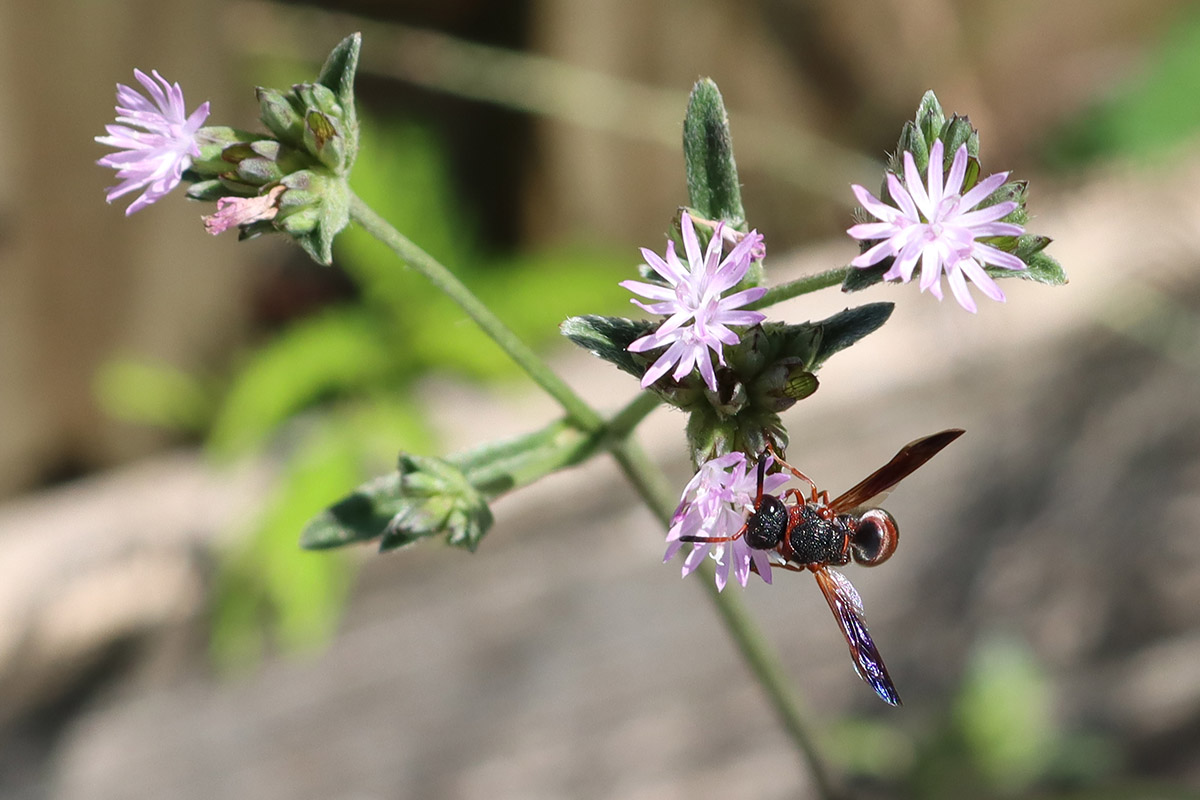
I’m seeing more of this wasp, which is a welcome sight.
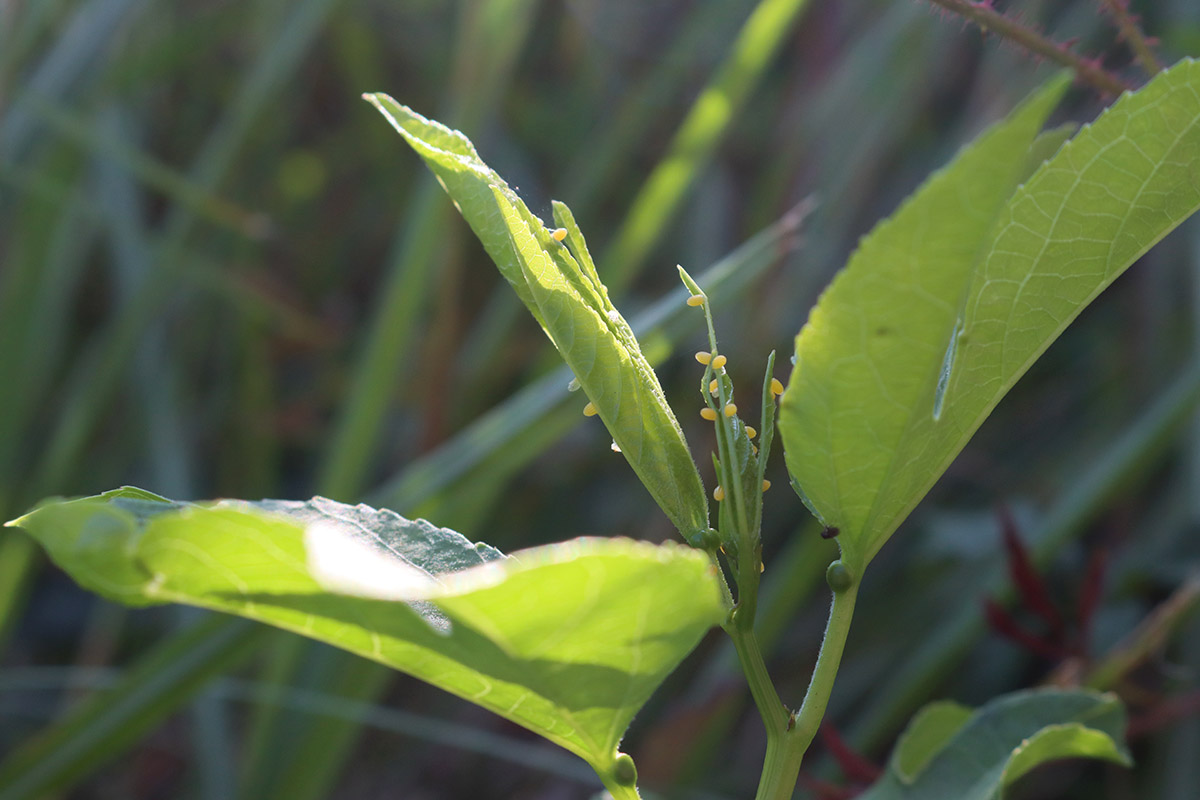
Passionvine is known for spreading underground, and here it has emerged a few feet from where I planted one.
September 16, 2022
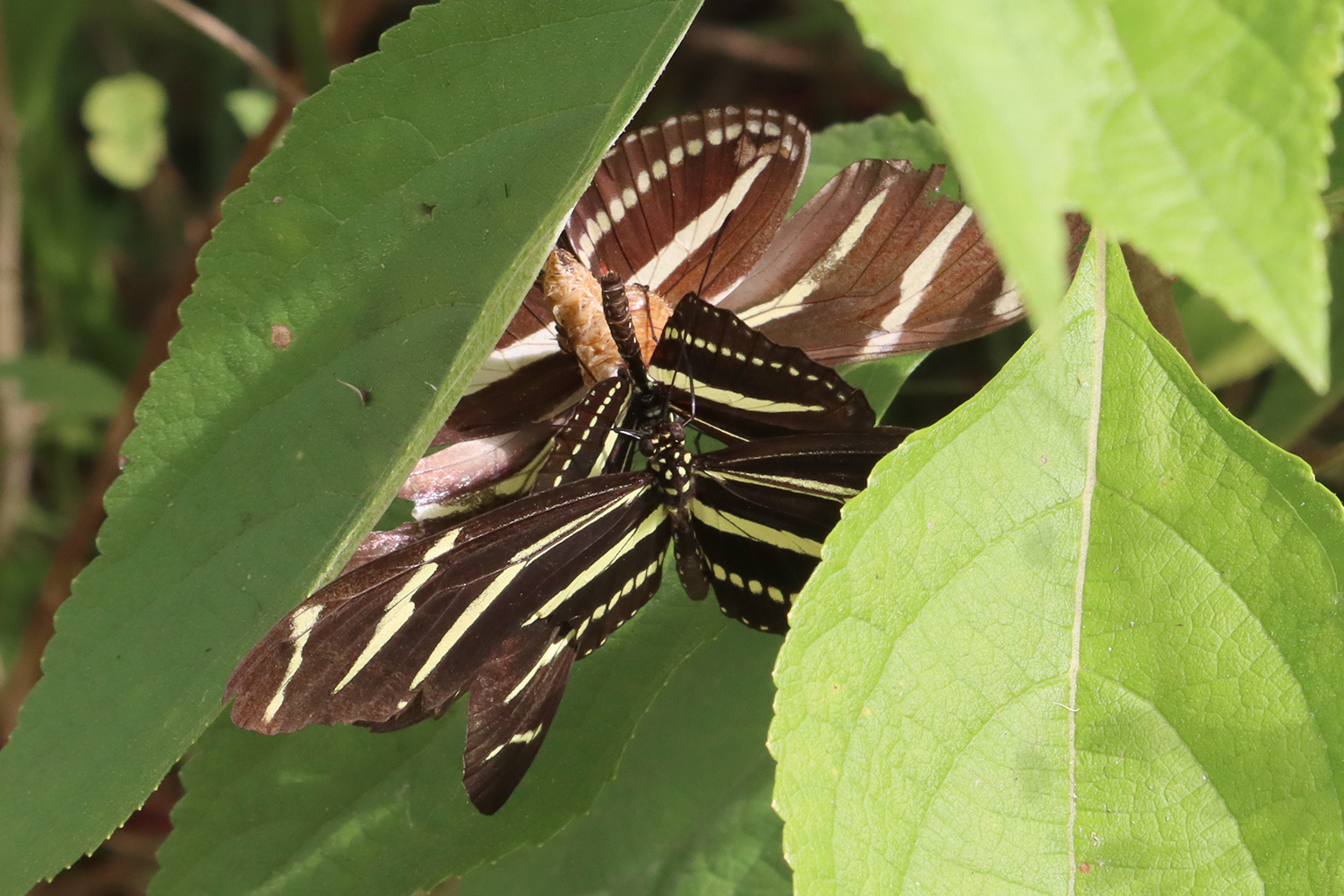
For the last week or two, we’ve had a dozen zebra longwing butterflies around the yard, mostly concentrated around the passionvine. I came out this morning and thought I’d found one emerging from a chrysalis. And then it was joined by another. And another. This kind of grouping was occurring in a few spots.
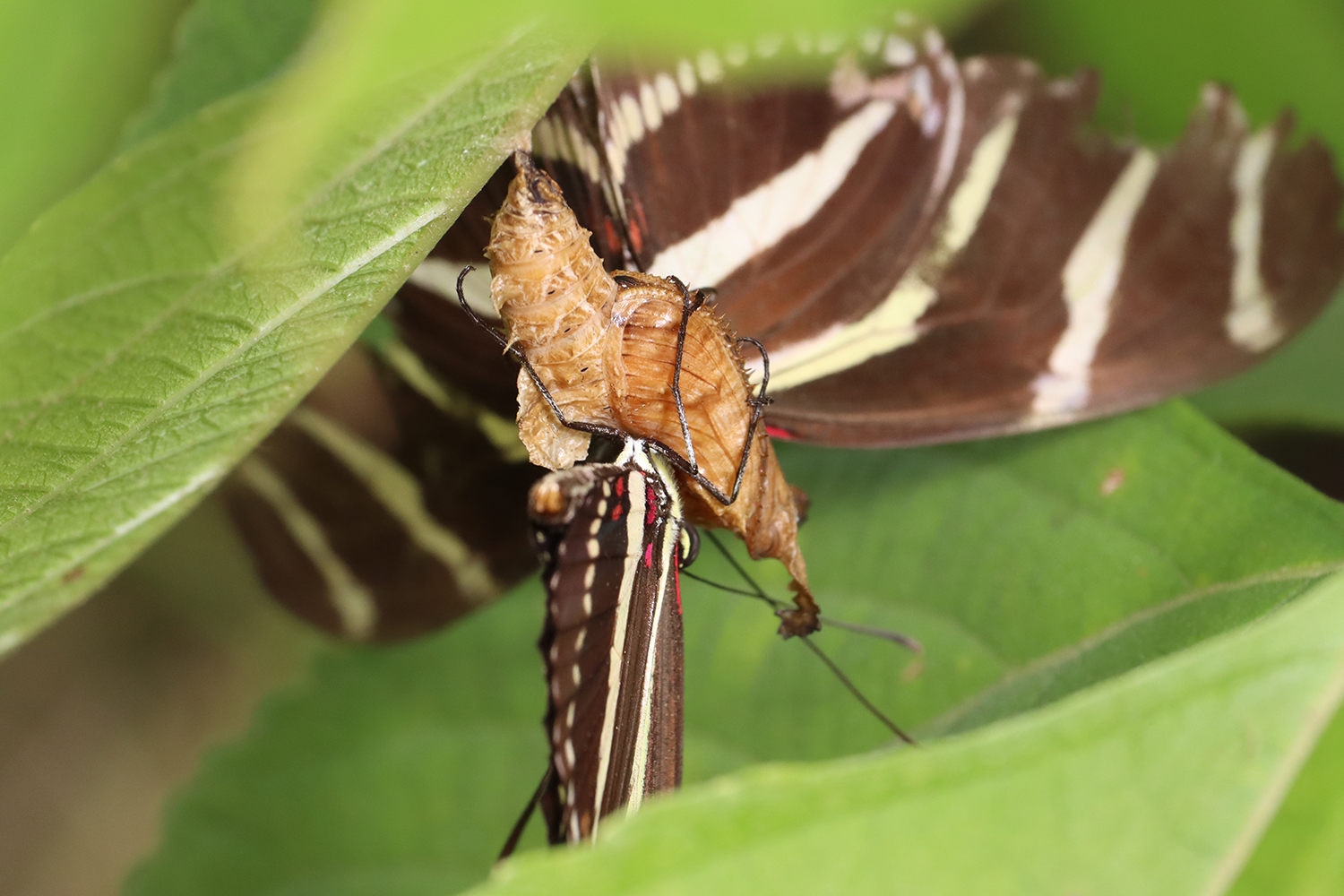
I Googled and found out that male zebra longwings will wait for females to emerge from their chrysalis. Upon eclosing, these males will fight for the right to immediately mate with her. This is an intense species.
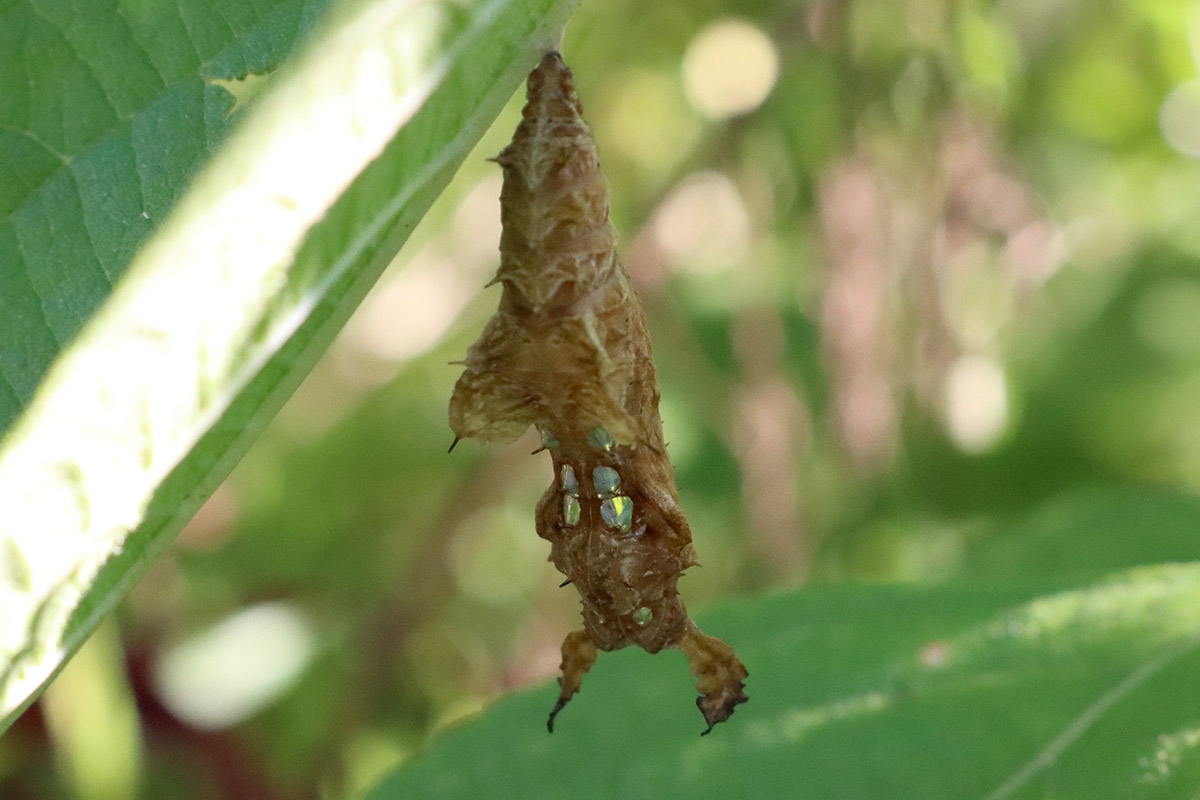
Here’s a good look at an unattended chrysalis. Maybe there’s a male in there.
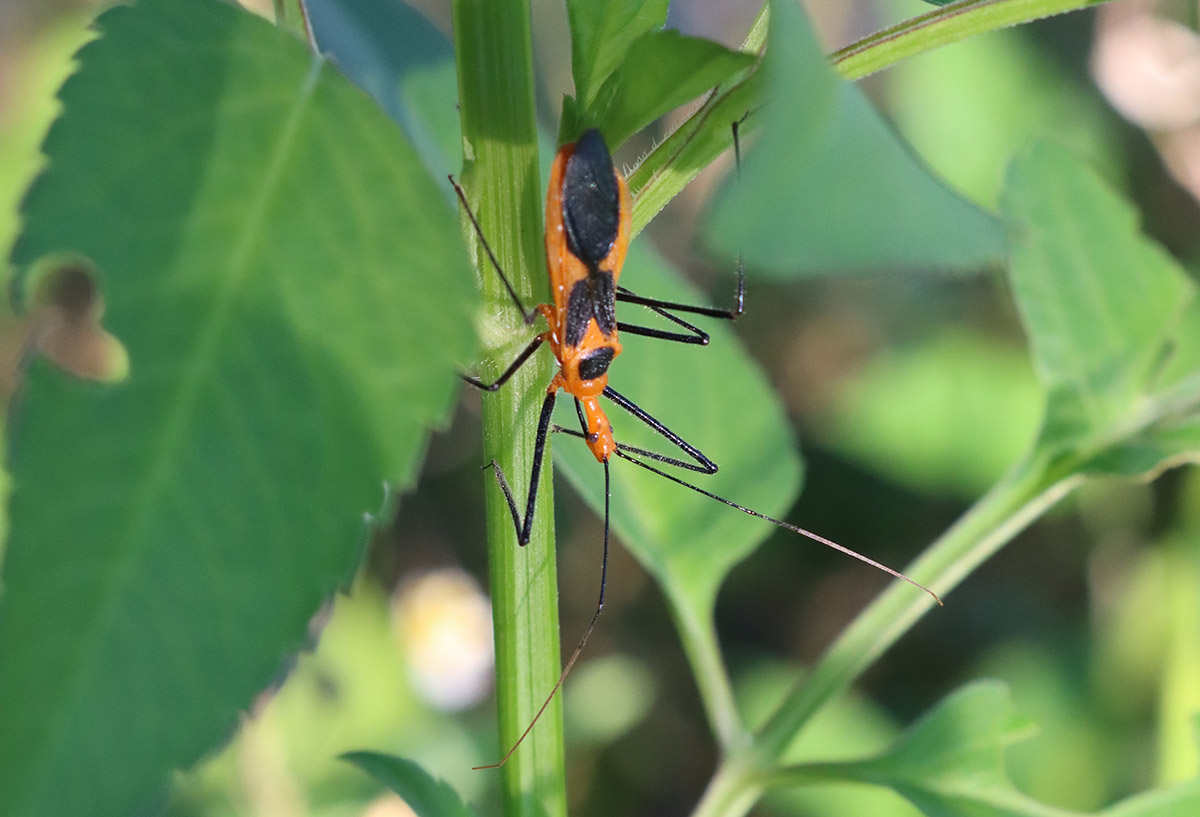
I had recently received a comment on a post about monarch predators, regarding assassin bugs attacking chrysalises. And here’s an assassin near all of these chrysalises, clustered close together. These zebra longwings did not travel far. Their caterpillars cluster together, and the adults have been as well. In fact, the adults, larvae, and pupae are all in close proximity to each other. I’ve seen these butterflies all my life, but am only now getting to know them.
I wonder if having males hang off of a chrysalis protects them from predators.
September 16, 2022
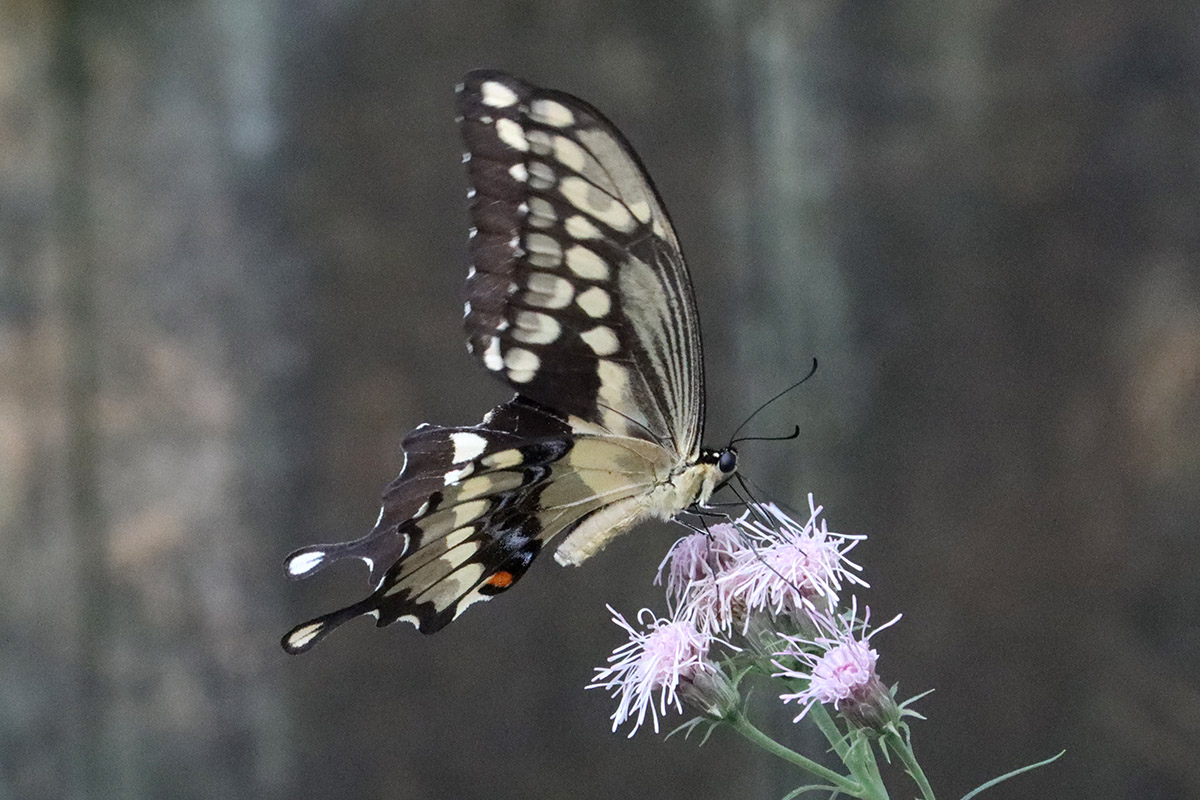
Before this year, I’d not seen swallowtails on the Brickellia. This year, we’ve had three species visit it. I was hoping it was here to lay eggs on our Meyer lemon tree; this is the first year I can remember us not having their bird poop caterpillars.
September 20, 2022
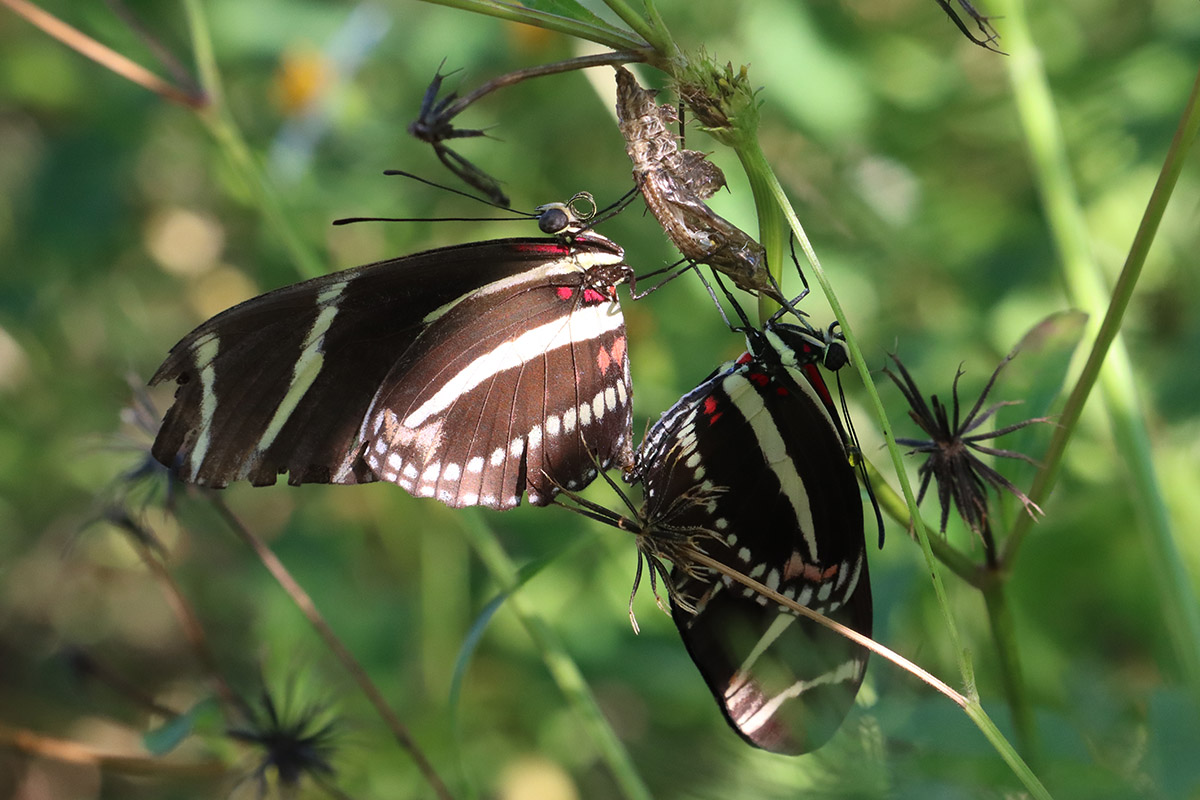
I’ve written about the events of this day and the 16th in a separate post, but I include these photos to place them within the context of our backyard ecosystem’s year. This is a brief recap.
I’d seen two zebra longwings hanging from the same chrysalis for over a day. I didn’t have the time to stake them out and wait for the moment of eclosure, to film the battle of the males and the celebratory coupling afterwards. I checked back now and then that second morning of their waiting, and finally saw the image above.
The male has been out in the world, his wings are torn where hers are fresh and new.
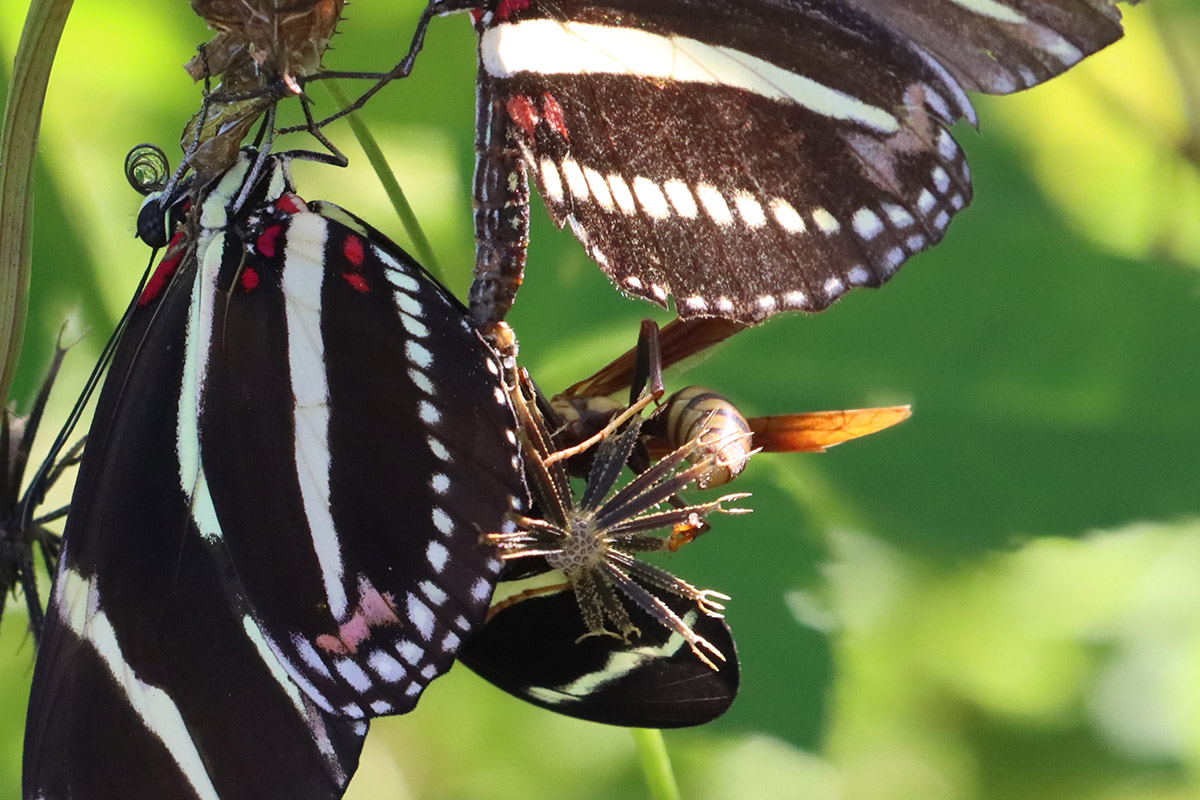
As they mate, a horse’s paper wasp starts to attack the female. It doesn’t interrupt their mating. On a side note, check out those Spanish needles- the seeds of Bidens alba. Small barbs along the side, like velcro to our clothes, and little forks on the end to also grab hair and feather. No wonder they end up everywhere.
I’ll go ahead and spoil the blog post- she doesn’t make it. There are more photos there, and a reflection on embracing death in the backyard ecosystem as a transfer of energy upwards through the food web. A few of our favored insects die so that the habitat may thrive.
September 21, 2022
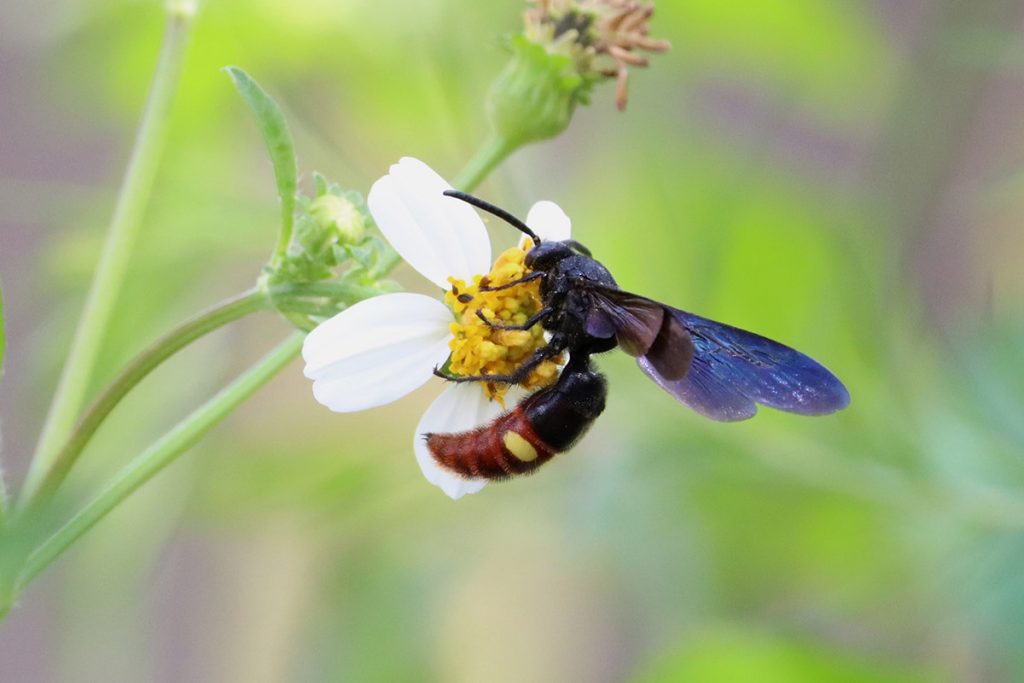
blue-winged scoliid wasp. On Bidens alba.
Here’s a scoliid wasp I’d never seen before. They’re ground nesters, much like many of the other wasps we’ve seen over the last month. They hunt beetle larvae in the ground.
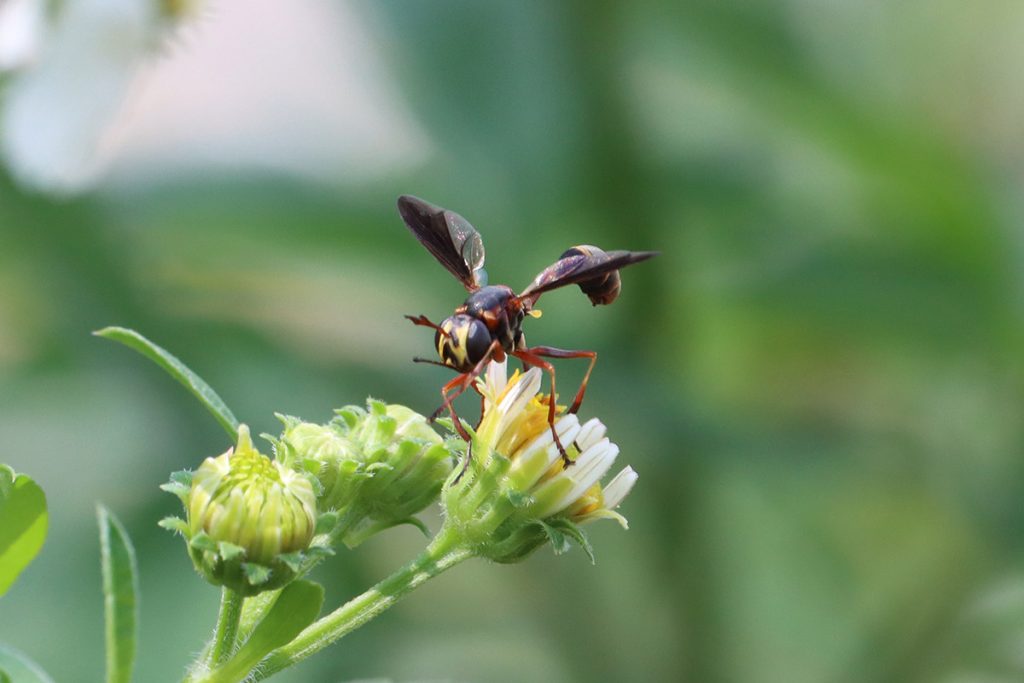
This is a type of thick headed fly, which are yet another parasitoid breeder. Flies of this genus will grab a bee or wasp on the way to a flower, and use their abdomens to tear open the abdomen of their host and insert an egg. Reading on bugguide.net, bumblebees are observed to have been hosts.
This is one of those cases where an iNaturalist user left a comment with additional information, which is always appreciated.
October 4, 2022
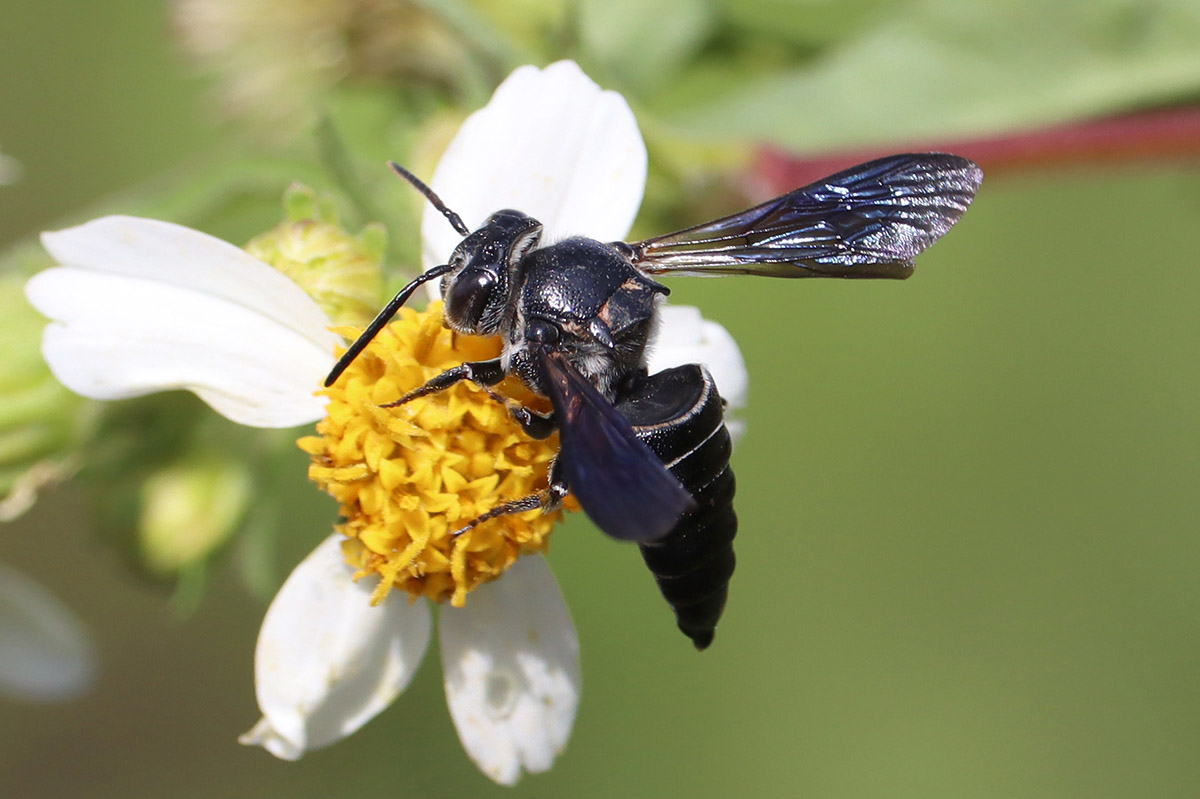
And here’s our fifth new bee species in the yard this year. This is the third cuckoo bee we’ve seen this year. Is in the leafcutter family, and parasitizes the broods of other leafcutter bees. I’ve seen two other leafcutter females within the last couple weeks.
Now, in the fall, many bees are starting to make nests or will mate and find a place to hide and make a nest in the spring. Coelioxys dolichos will break into a leafcutter nest, murder its larvae, and replace them with her own. Her larvae will eat the pollen collected by the leafcutter mother.
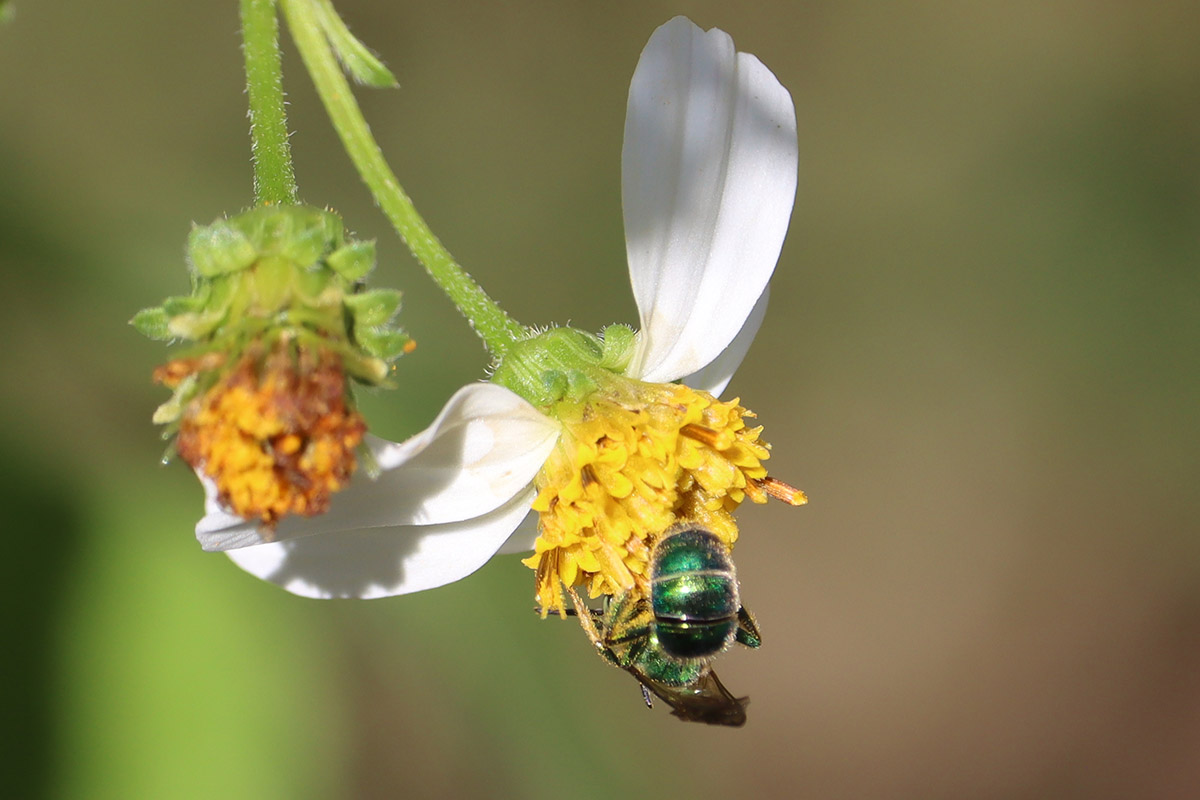
In the previous backyard blogs, bee diversity takes a dip by the end of September. There’s often a gap between the fade of the summer flowers and the blooming of the fall flowers. This year, though, we have an abundance of Bidens alba. And here we see two non-common-eastern-bumblebees bees on flowers.
Bidens alba isn’t the favorite flower of any pollinator, but so many of them visit it. It’s the ultimate complimentary wildflower.
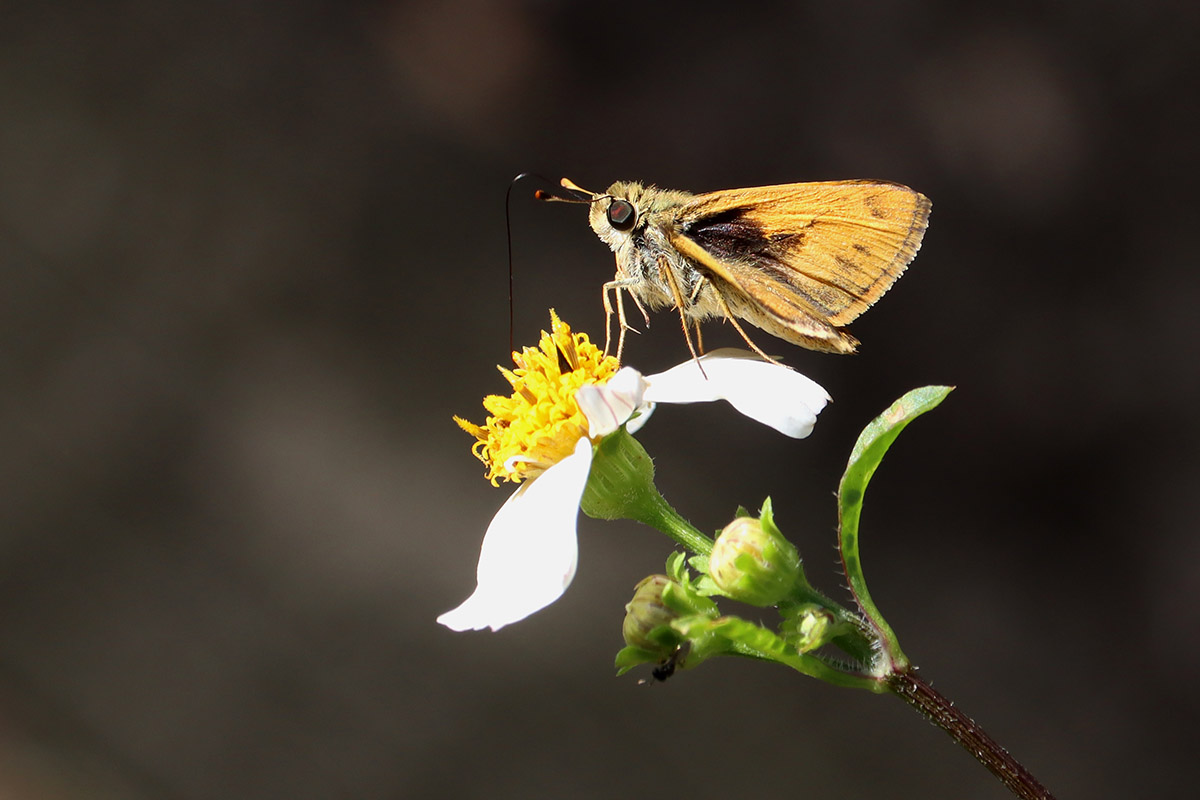
And here’s a little grass skipper on Bidens.
I have two species of aster, narrowleaf sunflowers, and bluecurls getting ready to bloom. I have a good feeling this fall will be busier than normal for our flowers.
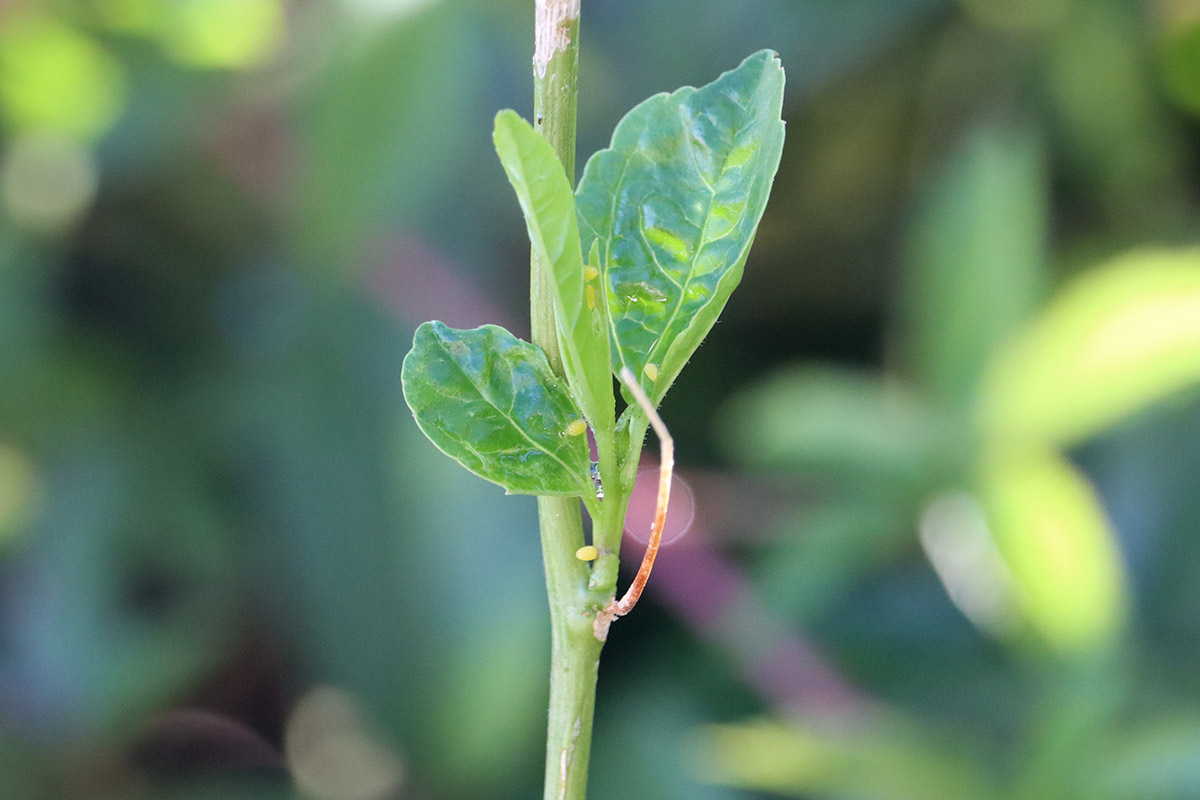
Caterpillars de-leafed our two passionvines. Now, as leaves are beginning to return to the plants, butterflies are bombarding them again. There will be fierce competition for scant resources.
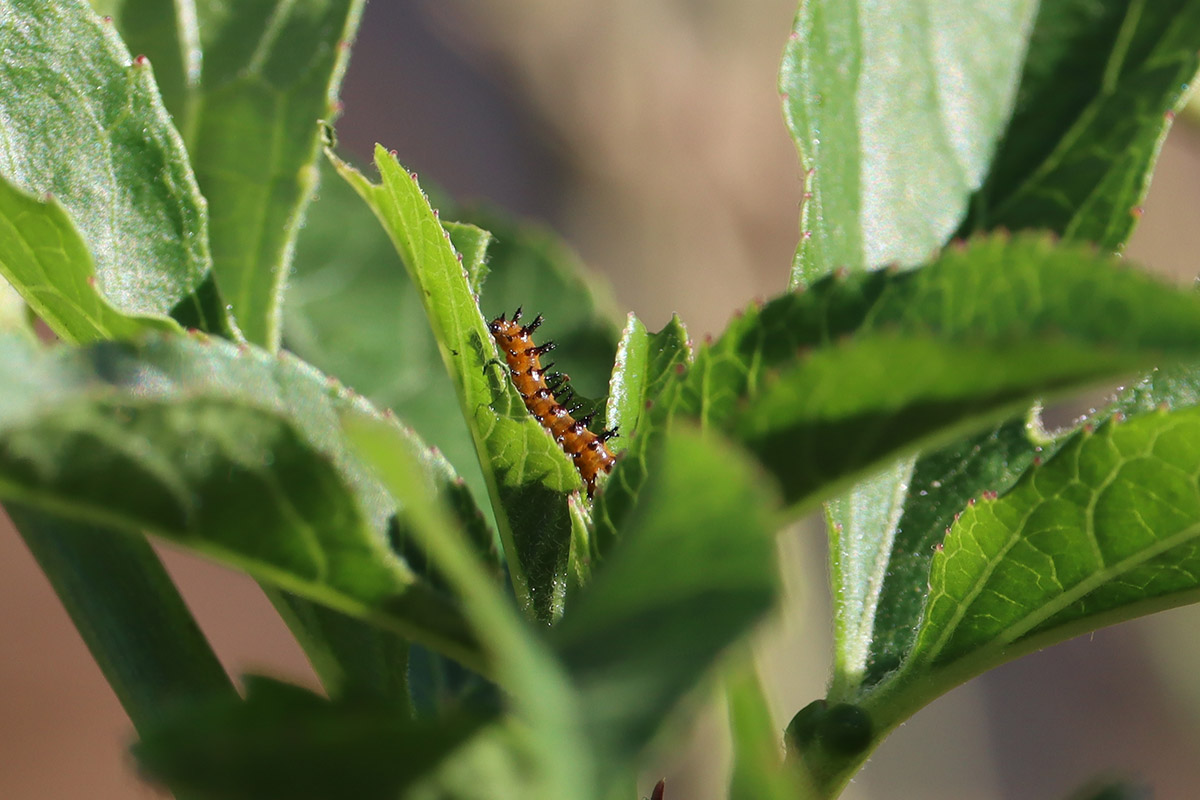
The caterpillars who got a head start will be most likely to survive and become butterflies.
October 6, 2022
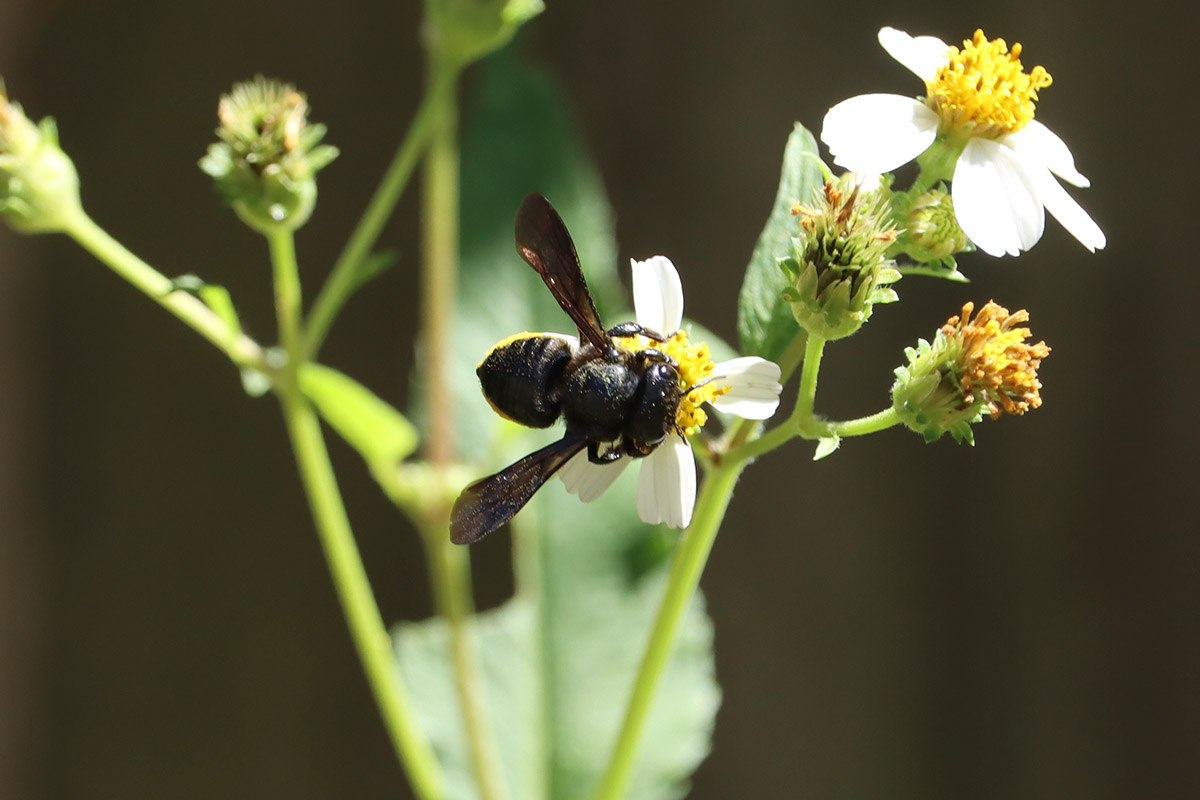
Two days after seeing a bee that takes over leafcutter nests, we see a female leafcutter.
October 11, 2022
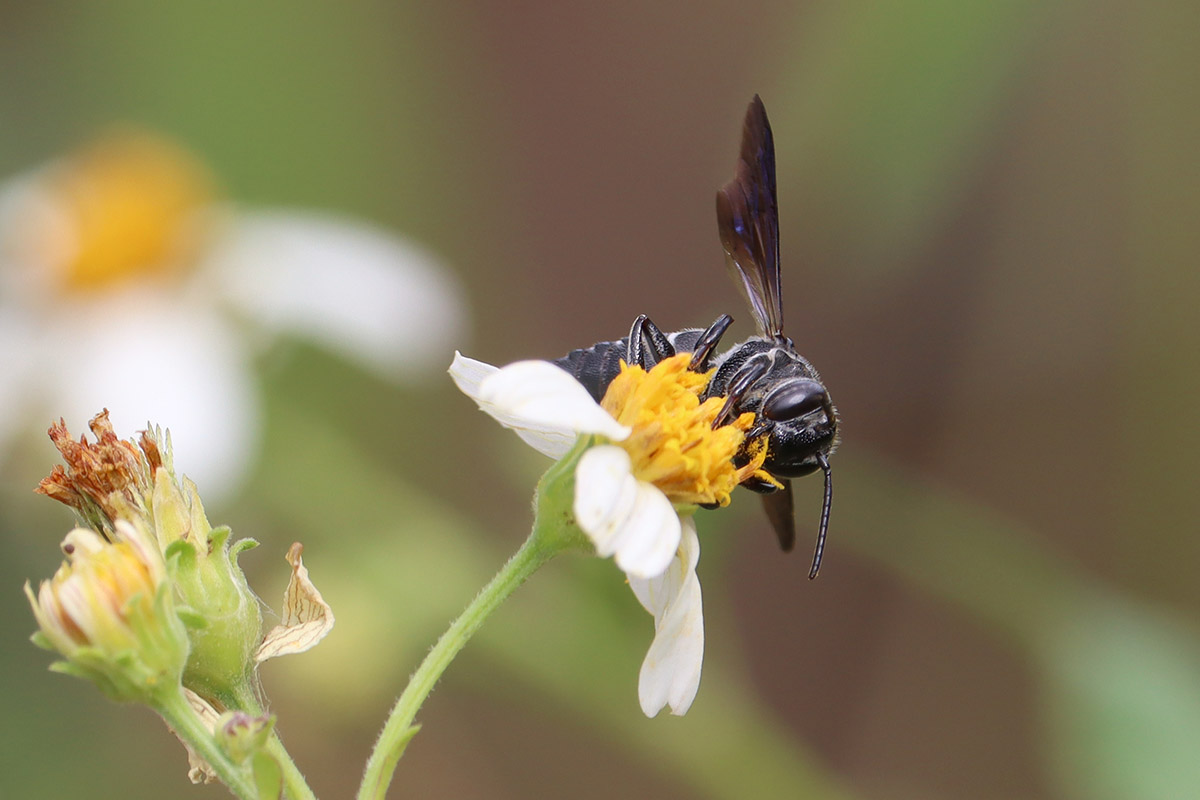
This game will come to a tragic end. I see the female carpenter-mimic leafcutter, and have even spotted a flat-tailed leafcutter a couple of times this week. For years, leafcutter bees have been rare in the yard. Now, we may have a nest soon, and the larvae may not make it.
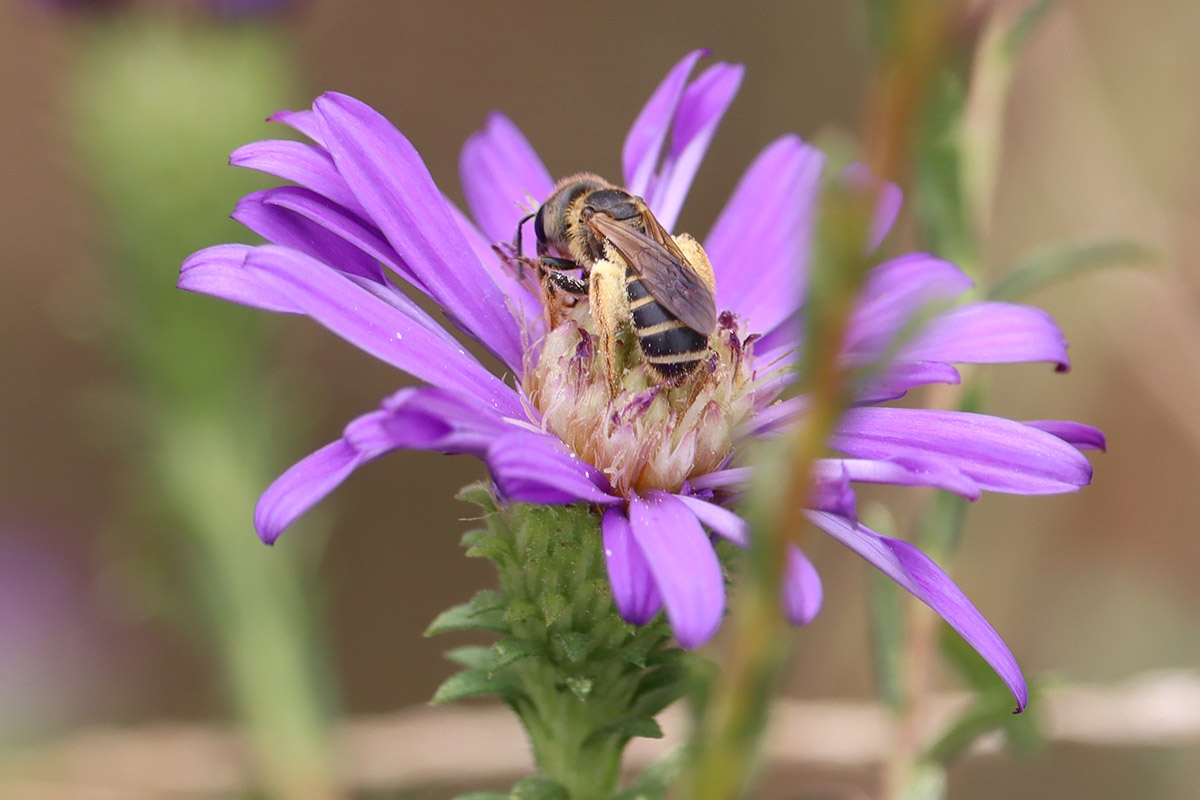
The fall wildflowers are starting to bloom, and we still have several species of bee in the yard.
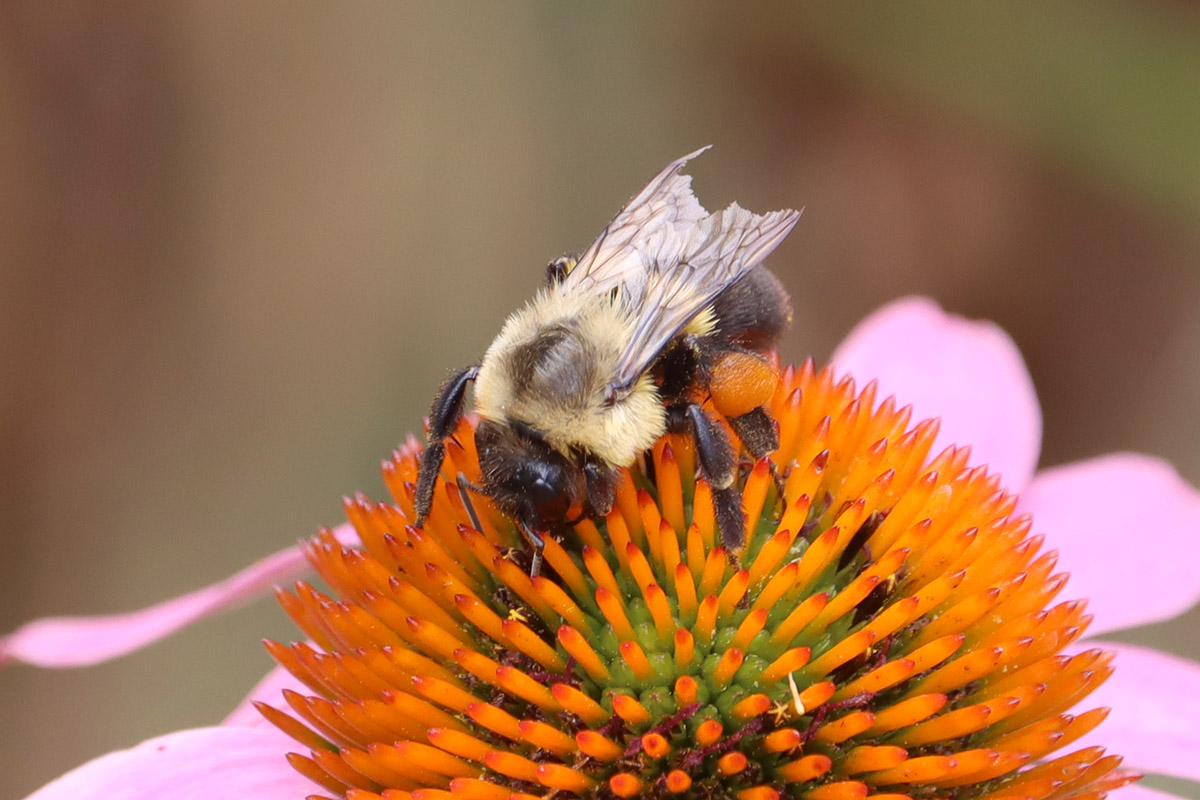
This year, the coneflower plants reseeded themselves in their flower bed, and I was able to grow several in pots from seed. Those I transplanted to the front flower bed. They were still getting themselves established when the others started blooming, and I had written off seeing flowers until next year. Now, as the other coneflowers have gone to seed, one of the new plants surprised me with late season bloom.
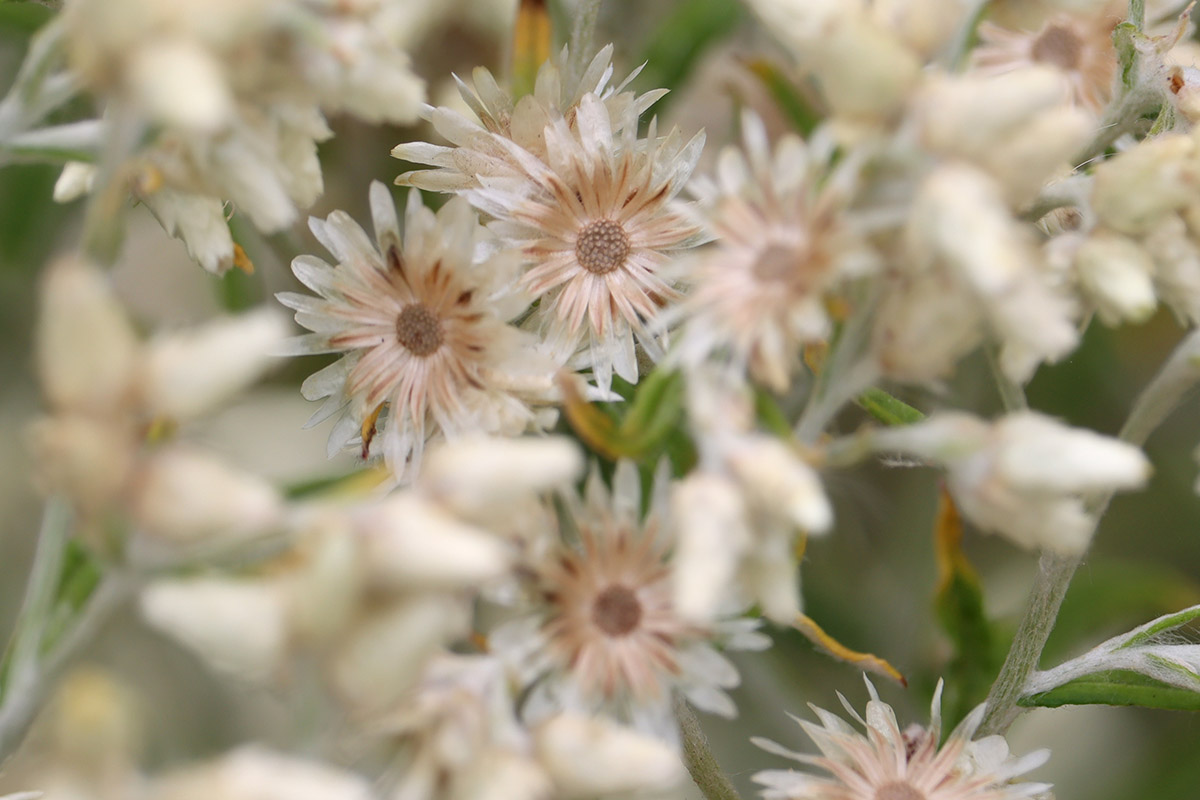
October 13, 2022
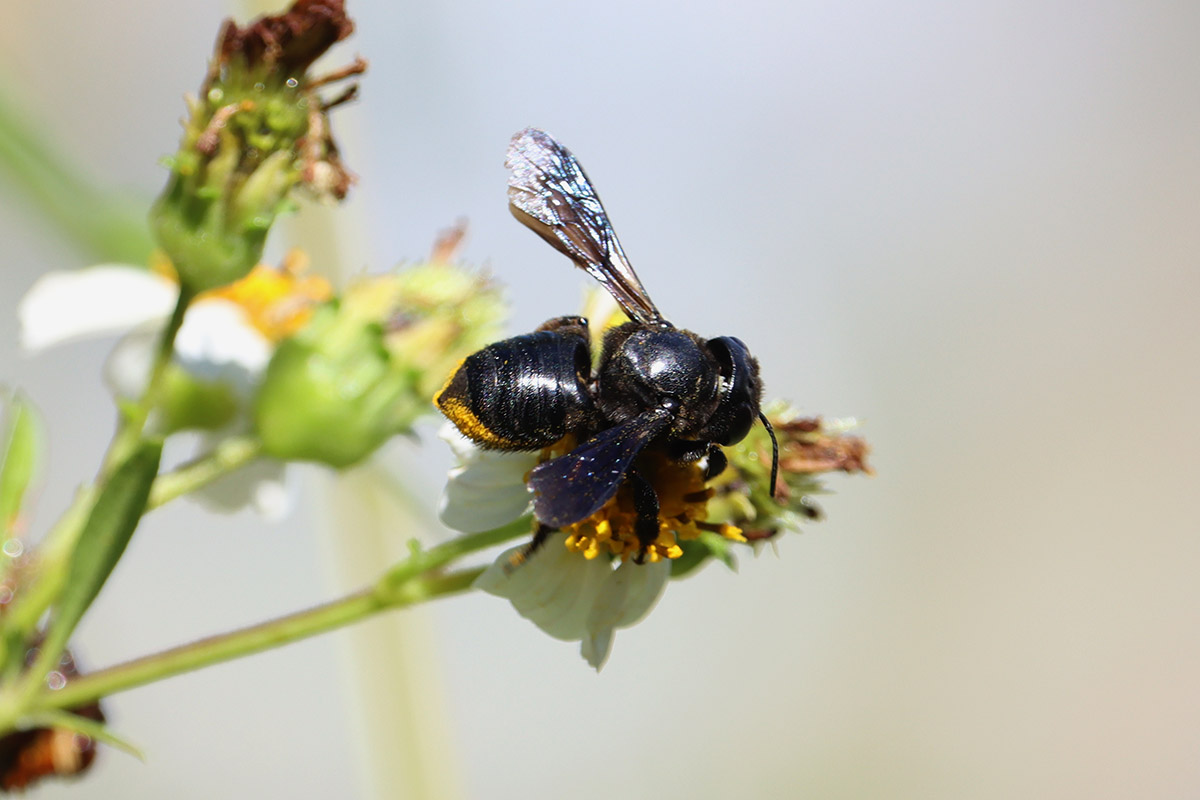
You never know when a bee sighting may be your last of the year for that species. Bees go dormant starting in the fall, but it has remained fairly warm. I still see the carpenter-mimic female and her stalker in the yard.
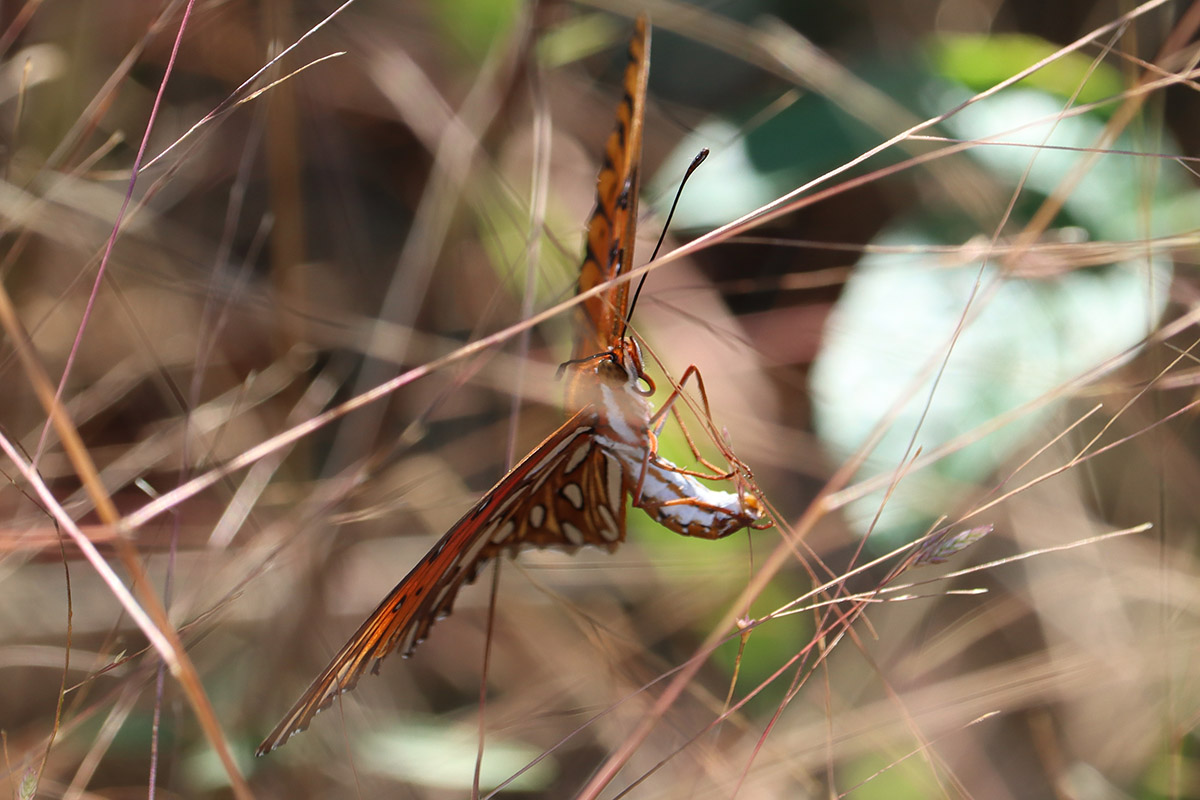
The passionvine still does not have many leaves, and it’s getting late in the year. Gulf fritillaries aren’t butterflies that overwinter; when it gets cold they’ll shuffle on south. North Florida in the fall and winter can run cold and hot (unseasonably warm, anyway), and a cold snap could be around the corner. I wonder at the future of the eggs being lain now.
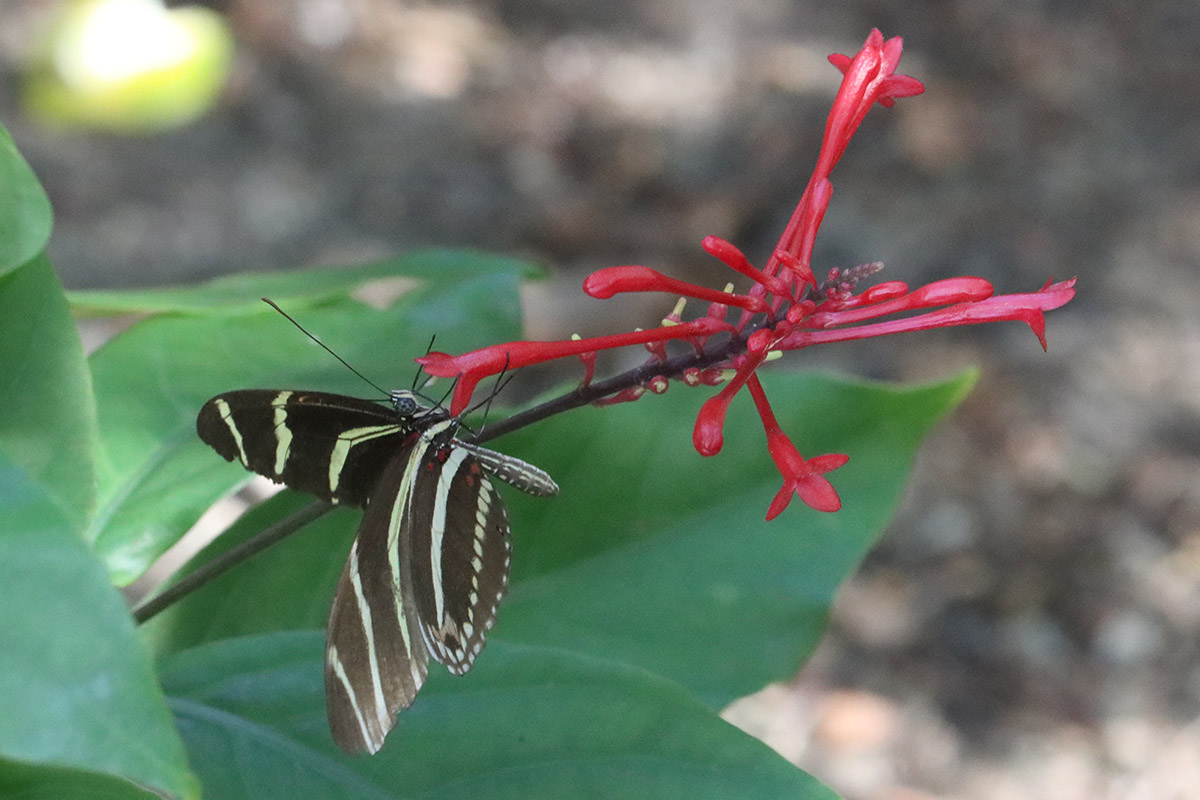
In previous years, this is when we most saw zebra longings- when the cardinal guard was in bloom. It’s a non-native, but popular with hummingbirds. We’ve been having dinner on the porch, and we see the birds daily. The plant flowers in September and October, and always attracts a handful of zebra longwings as well.
October 17, 2022
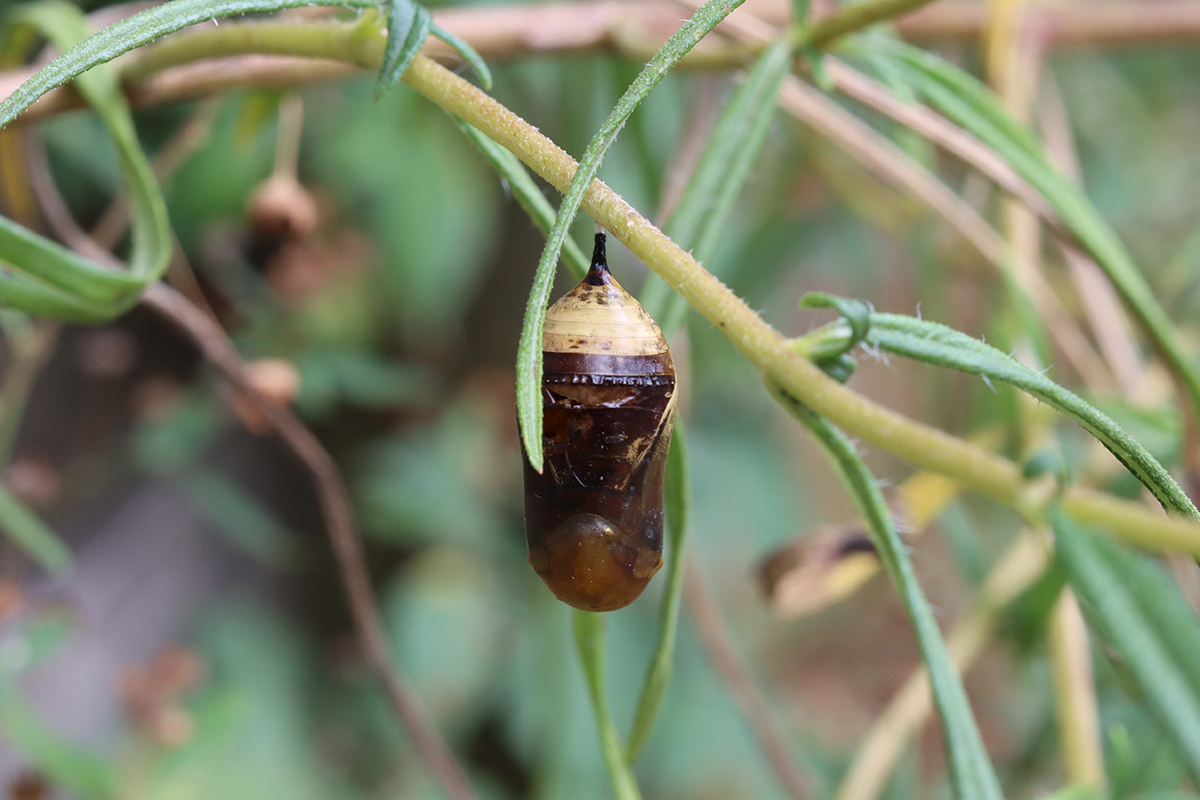
The narrowleaf sunflower is in full bloom now, but I haven’t yet seen pollinators on it. I went to take a closer look when I found this: a dead monarch chrysalis. This year, I saw mature caterpillars and new-looking butterflies, but not a single monarch chrysalis. When they’re green, they can blend in when on a plant like this.
I see a tear in the chrysalis, and I wonder if it was attacked. Or is this, I hate to say it, OE?
October 20, 2022
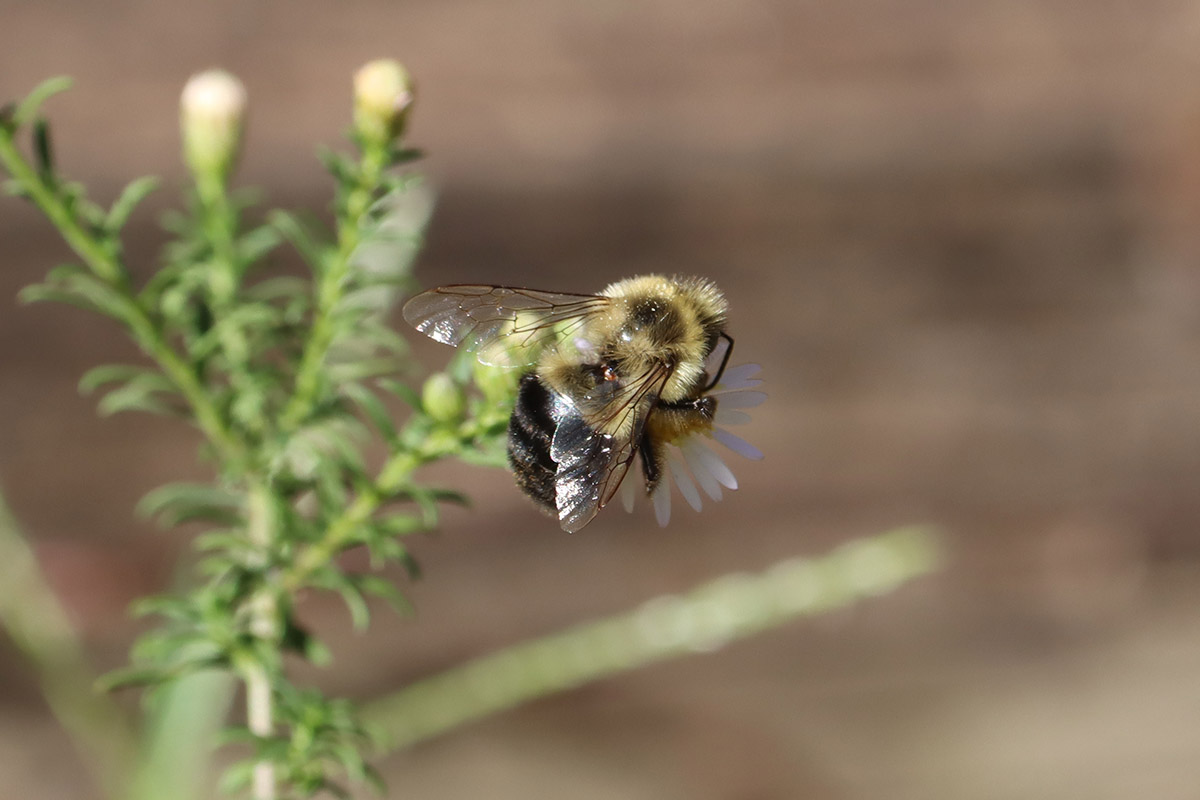
I didn’t see a bumblebee until June, and over the summer I only saw one or two instead of the usual three or four. I may have up to a dozen right now. It’s hard to keep track of them; they’re in all parts of the yard and constantly moving between flowers.
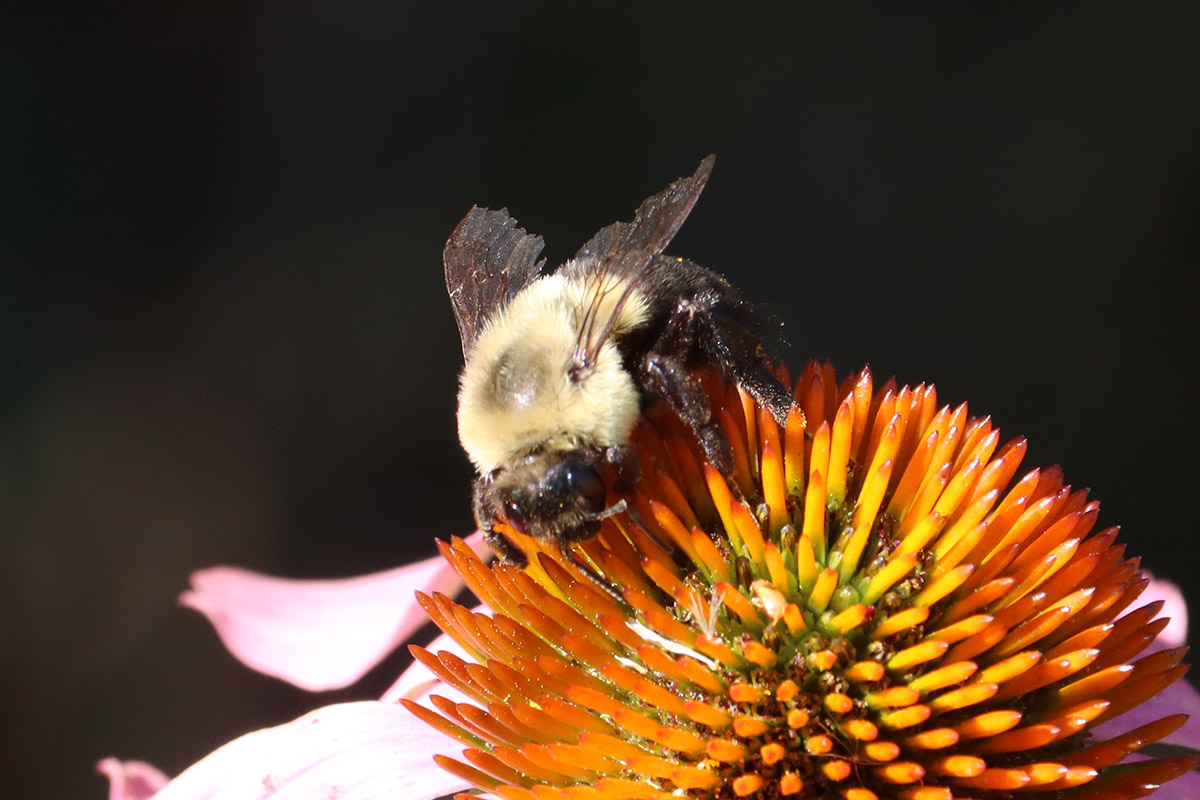
And here this slightly out of season coneflower continues to get love.
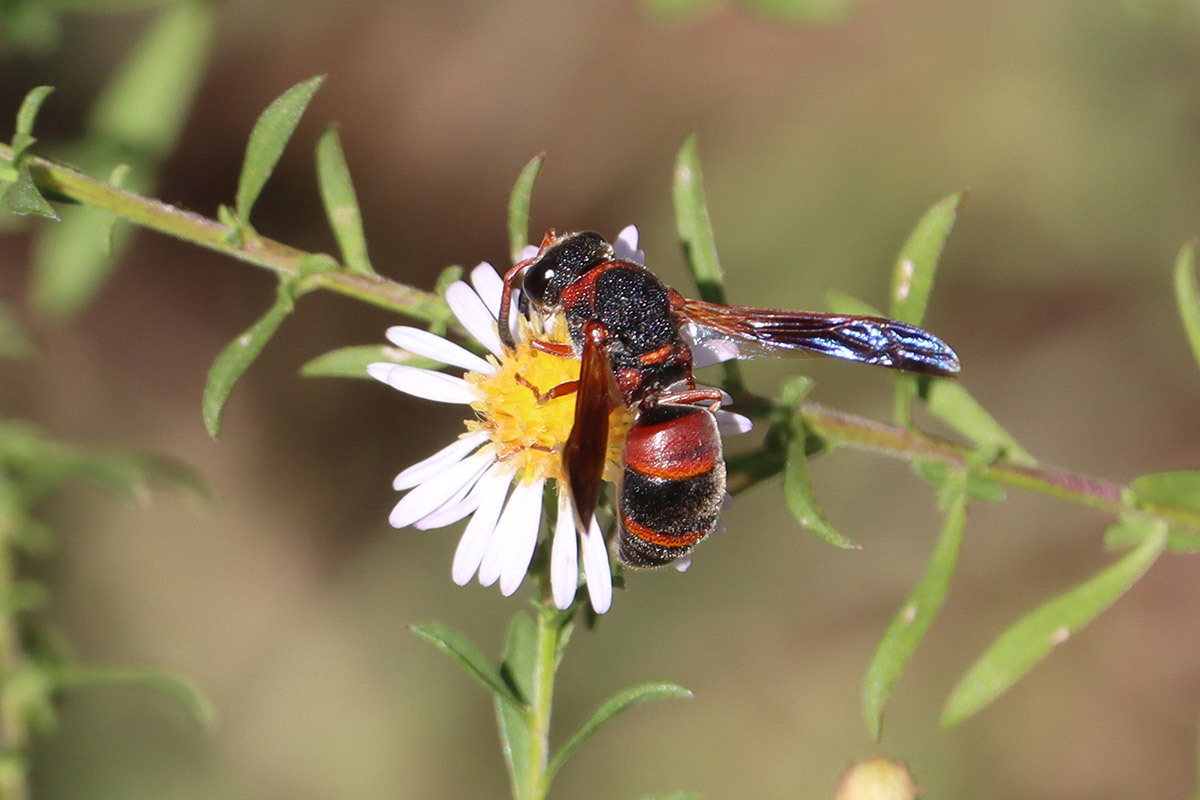
This wasp had become a stranger in 2021, but is once again a common sight.
The rice button aster has always grown as a weed in the yard, and this might be the most flowers we’ve had. These and the narrowleaf sunflowers get nice and large throughout the year, but bloom in the fall. When we learn to identify these plants without their flowers, we can decide to let them grow throughout the year and be rewarded come October. Various other insects may nibble on them or, as we saw a couple of days ago, make a chrysalis on them. The native plants in our ecosystem have value beyond their flowers.
October 23, 2022
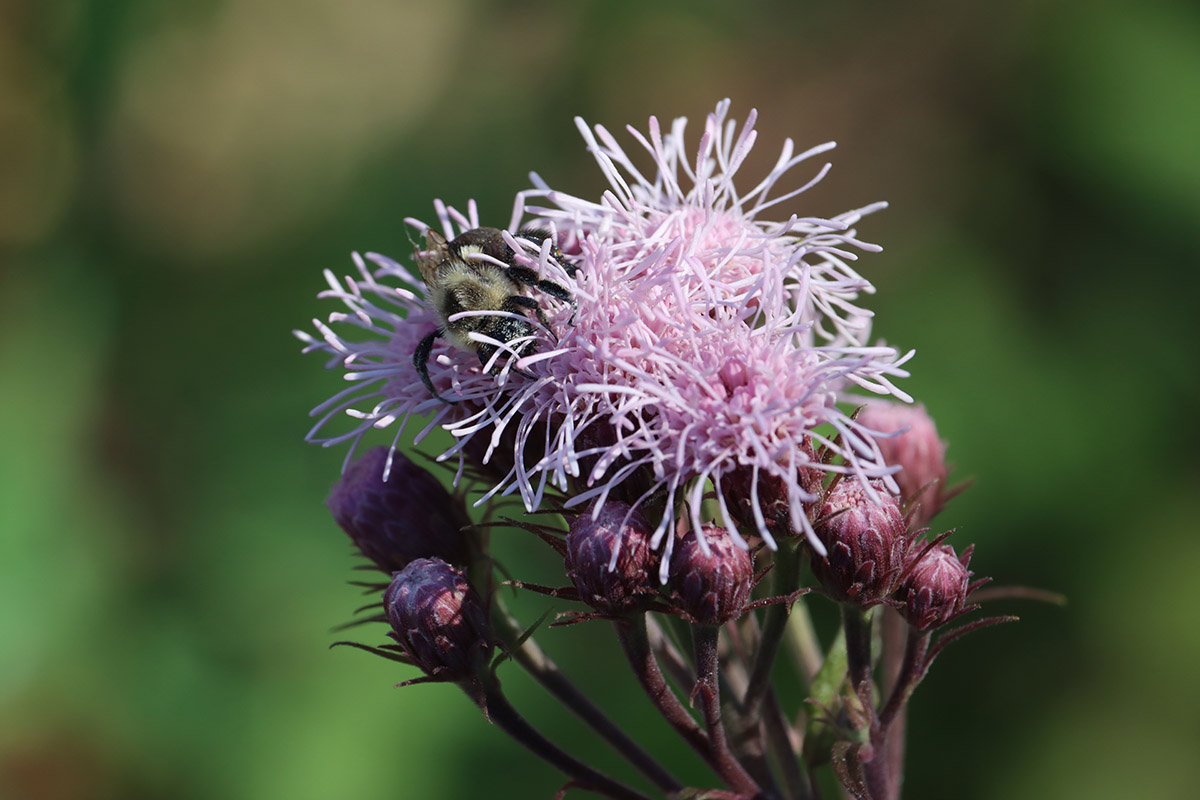
The garden is out to surprise me this year. I think it has something to do with the weather drying out in spring when I was transplanting seedlings. I ended up keeping Brickellia in the two large pots I seeded because the few transplants I put in the ground had a hard time.
The potted Brickellia grew tall and happy, and the plants were visited by all manner of bee and butterfly. The transplants stayed small and struggled until the daily rains of summer. Now, these small Brickellia plants are flowering in late October, a month after the rest have faded.
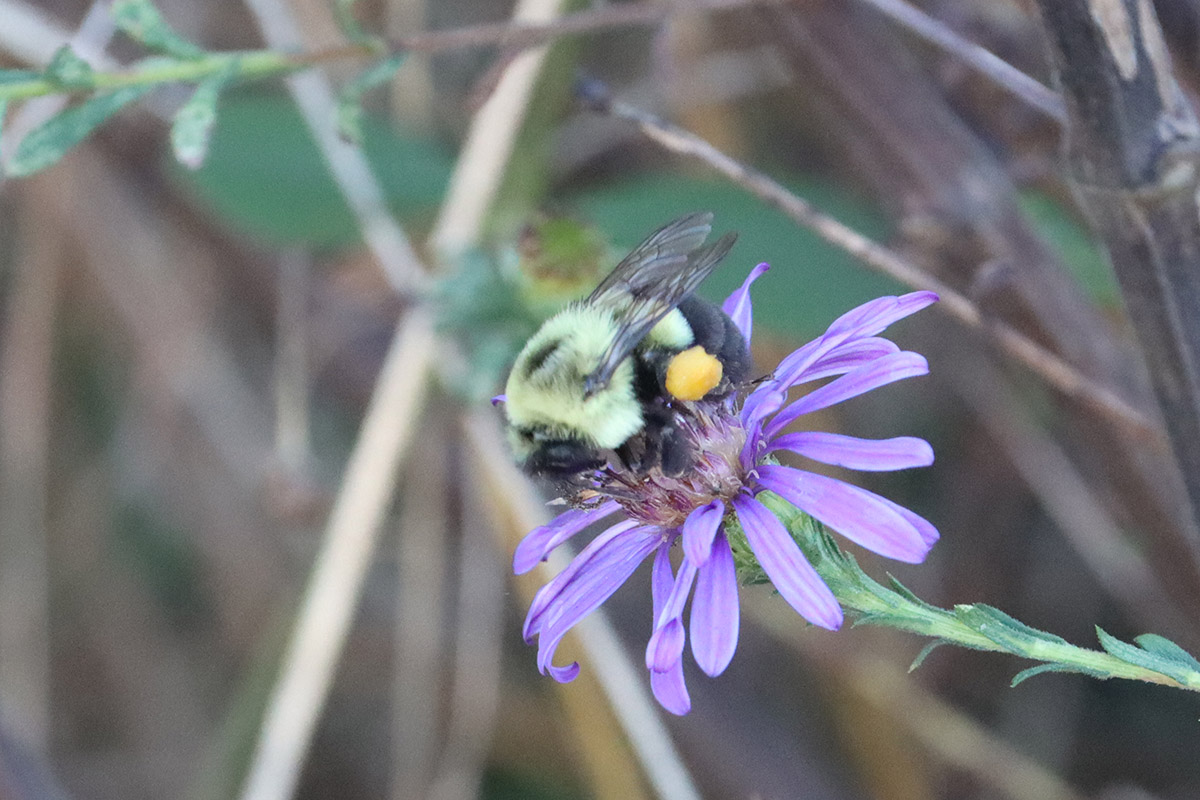
Common eastern bumblebees have been a large presence in our yard this fall. Maybe there’s a lack of fall blooming plants in the vicinity of my house. I also continue to see other bees that had never stuck around our yard in the fall.
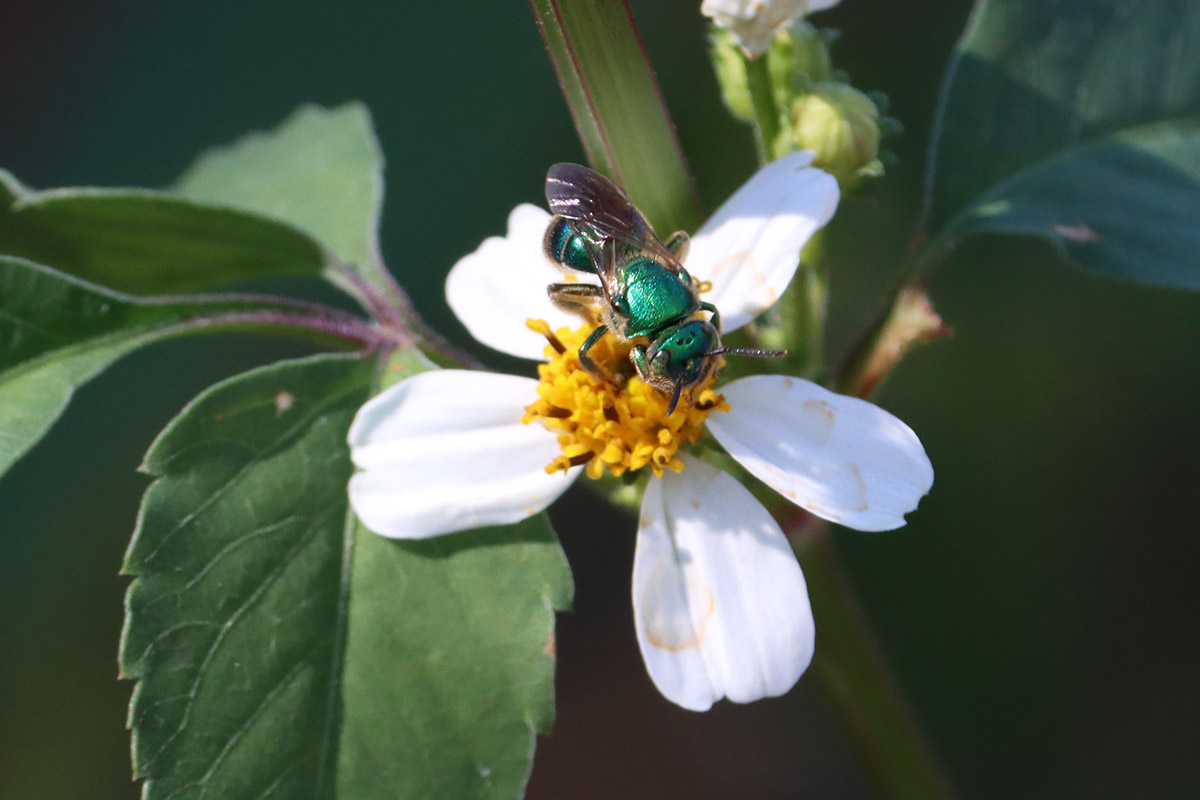
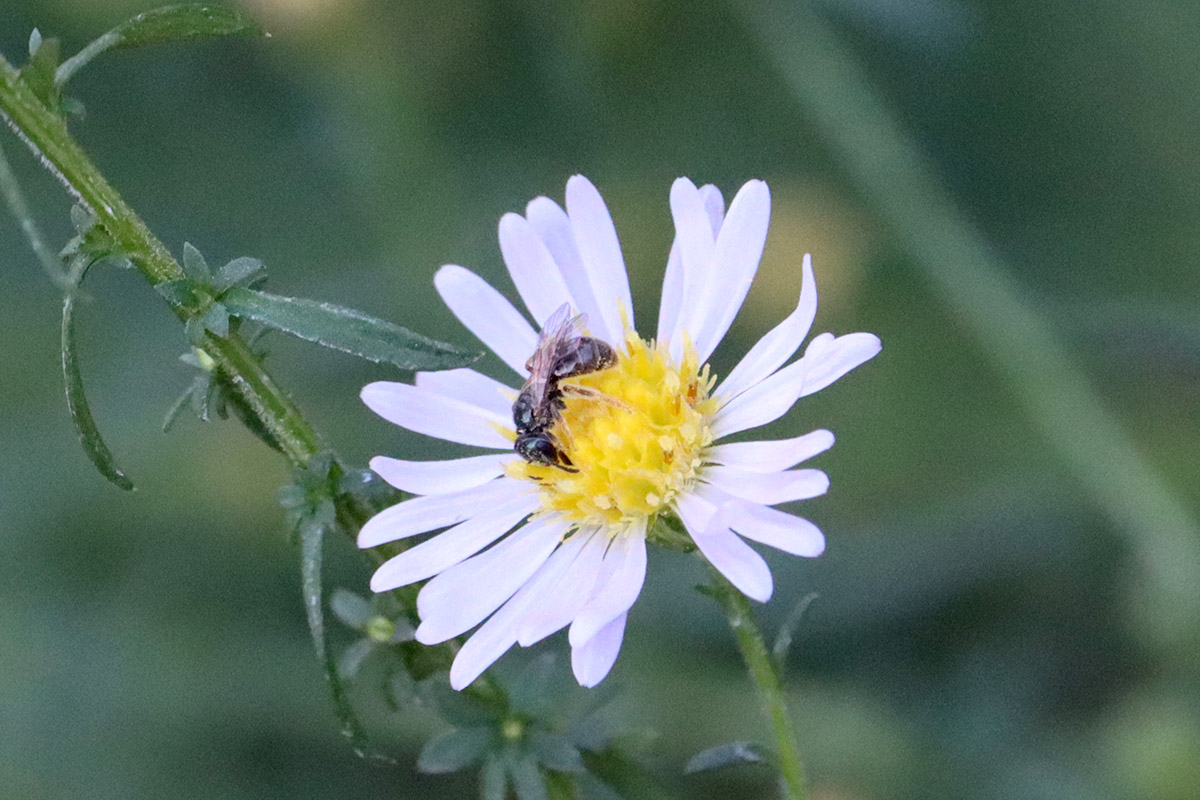
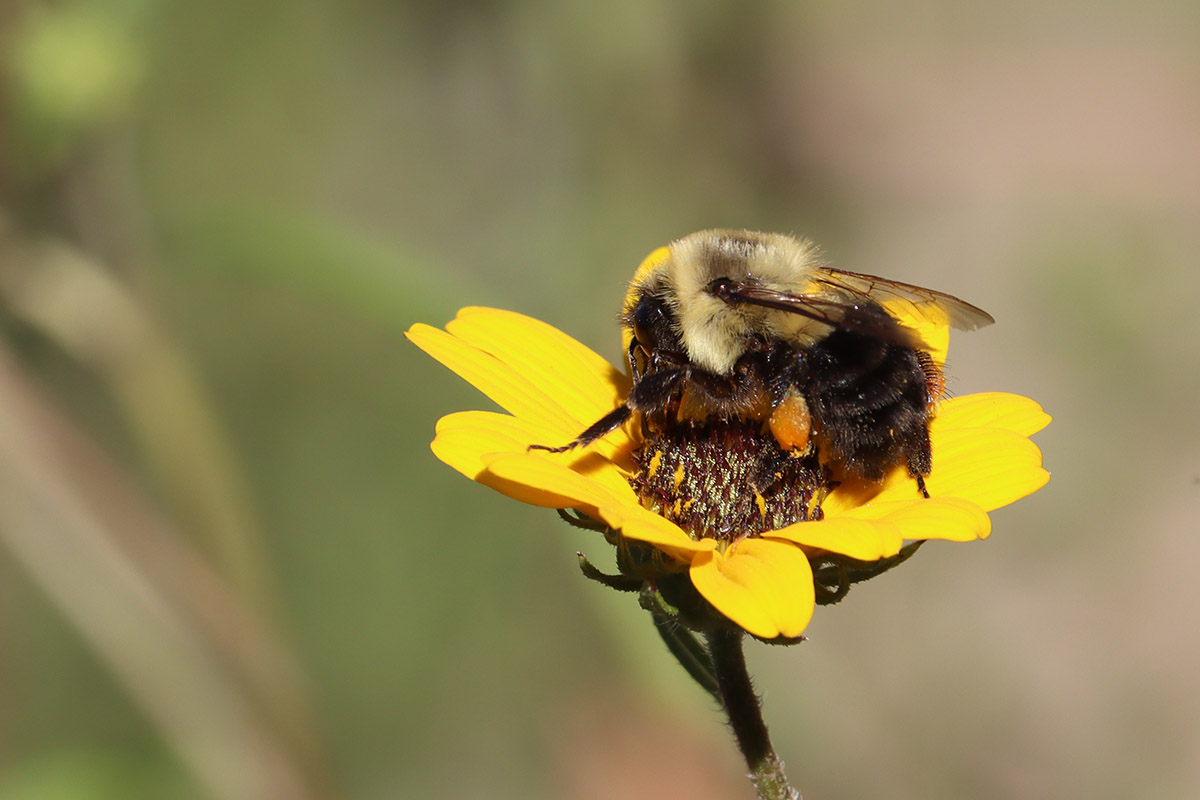
I’m happy to see the narrowleaf sunflowers start to get noticed.
Small butterflies are loving the Bidens alba
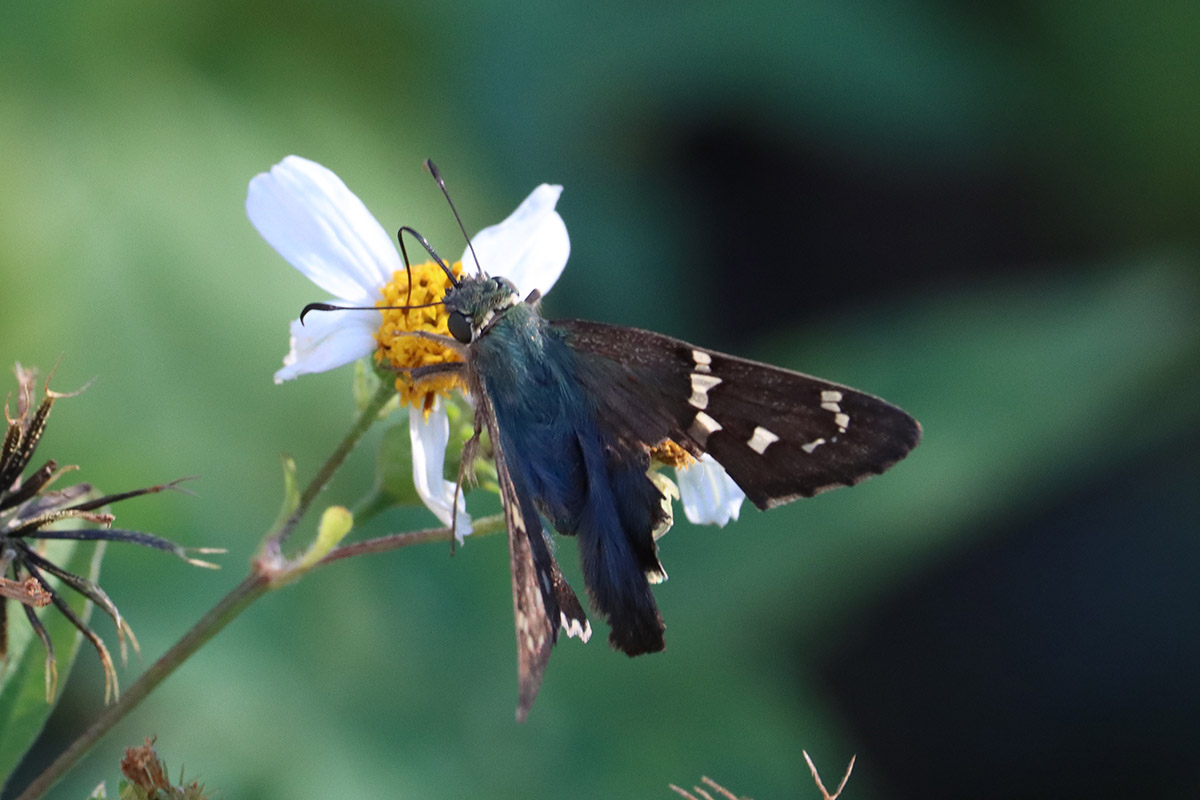
Here’s a butterfly that was a backyard regular, and I know what I did to keep from seeing it from much of 2022. I used to plant zipper cream peas from the UF/IFAS Extension’s library seed giveaway, and never ate the peas. I did end up planting the peas the following year, because they hosted long-tailed skipper caterpillars. This year, I neglected to plant any, and I missed the little bean-rollers.
Next year I’ll put in some spurred butterfly pea for them, and maybe some of the zipper cream.
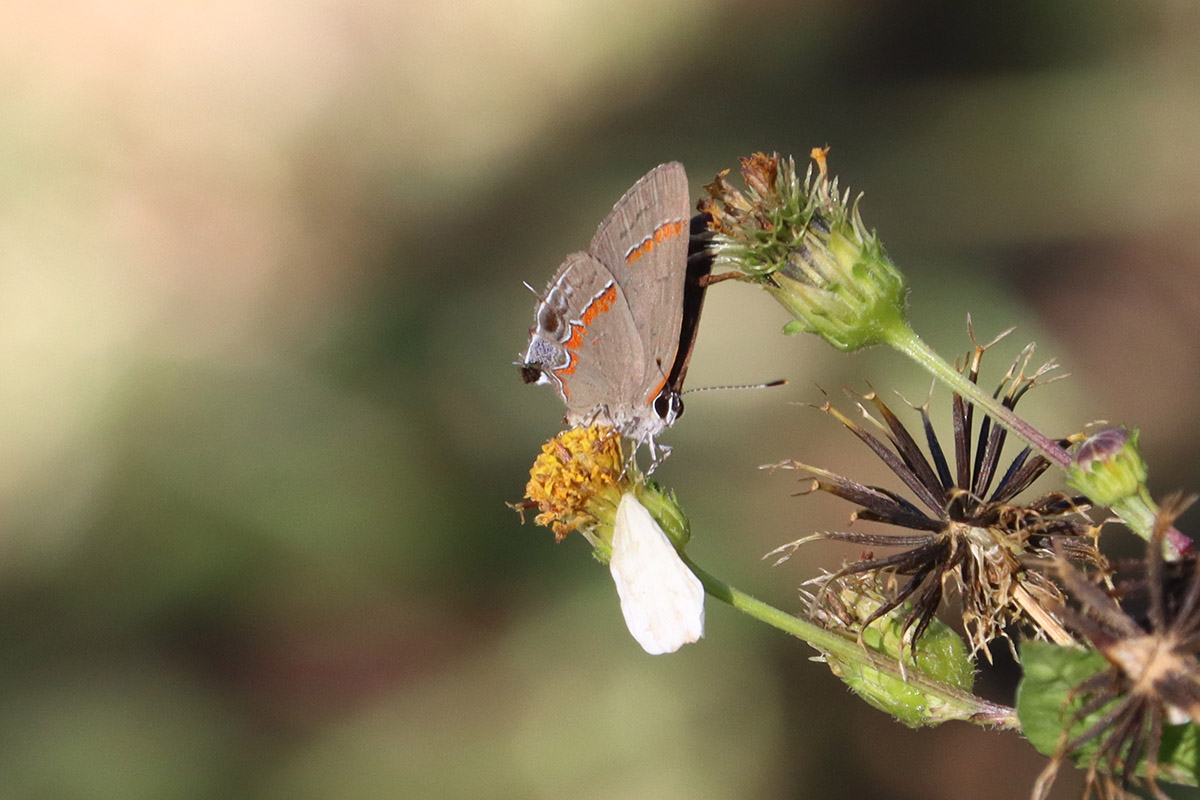
This is my second spotting of a red-banded hairstreak in 2022. There are one or two other species I’ve seen here in the past. They’re small and easy to miss. I wonder, with all the pollinator activity in the yard this year, and all the new bees and butterflies and caterpillars, if I didn’t miss a lot of the smaller, less conspicuous insects that first inspired me to start documenting creepy crawlies in the yard.
It can be my new year’s resolution to look under leaves, at tree trunks, and at the ground with a little more care.
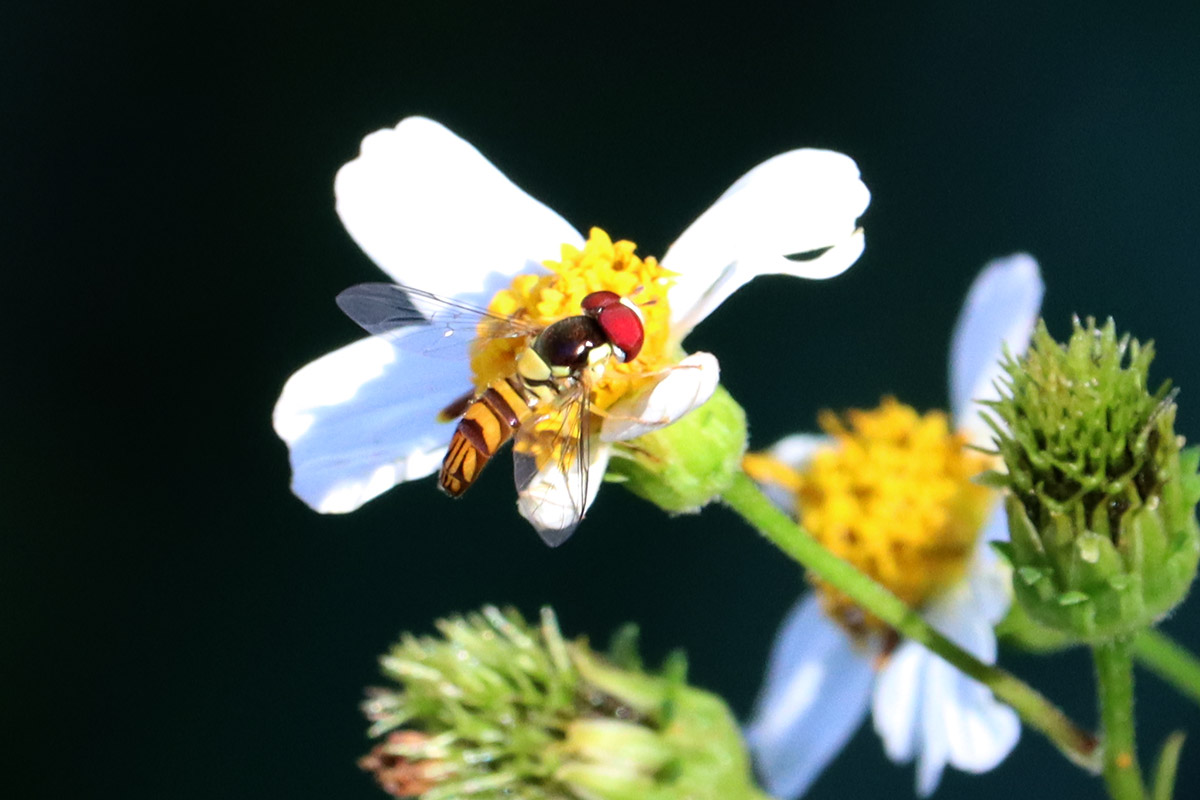
I’m starting to see hoverflies in the yard again. Aphids are some of the few insects I see consistently over the winter, and hoverfly larvae eat aphids.
Doomed caterpillars?
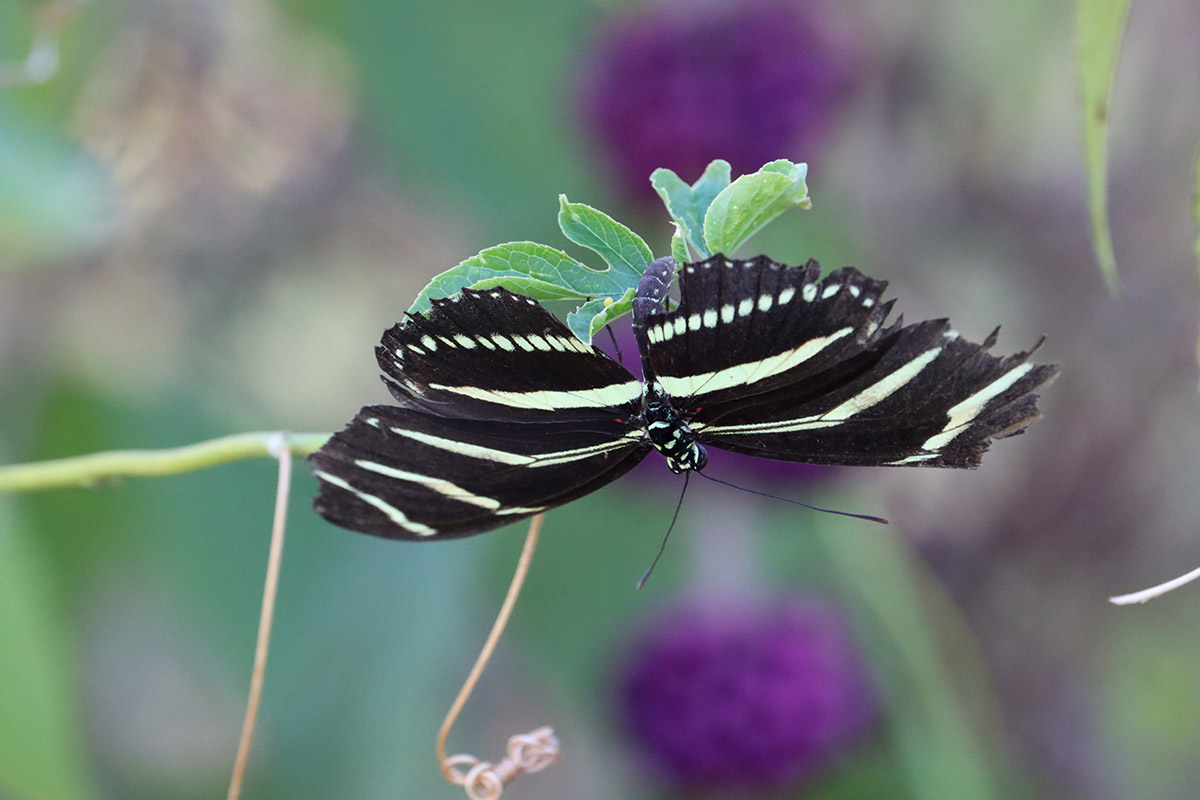
The overnight low was 39 degrees, and the high was 82. Over the past few days, lows have been near freezing, but then the day warms to where bees and butterflies will fly and visit flowers. I wonder what the insects do to keep warm overnight. It’s just warm enough, and perhaps there are enough flowers, to keep them from going dormant or migrating just yet.
Since the gulf fritillary and zebra longwing caterpillars denuded the passionvine in mid-September, the leaves have been slow to grow back. And yet the butterflies continue to lay eggs. Some of them have remained unhatched for a couple of weeks as temperatures dropped.
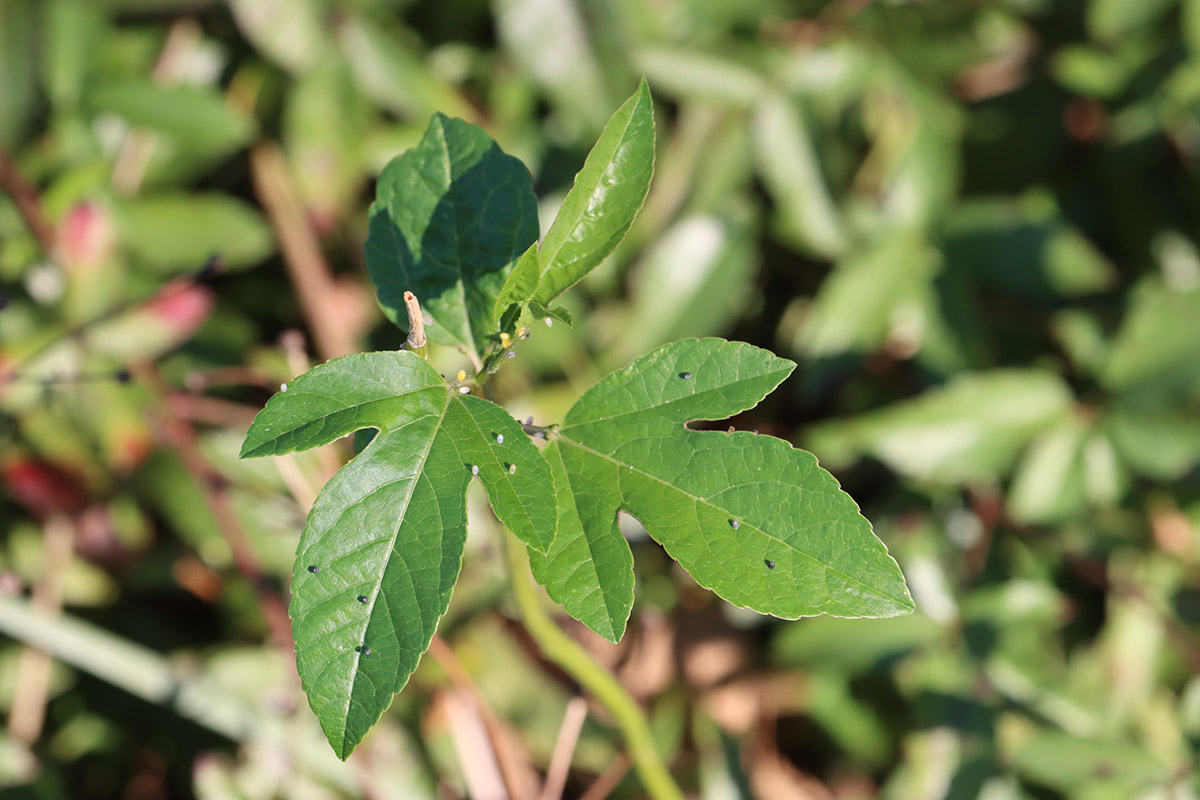
Eggs go dark before they hatch, but also when they’ve died. These eggs have been here for a while, and I wonder if they keep themselves from hatching when conditions are less than perfect. Or did they simply get too cold and expire?
October 25, 2022
I have photos of sweat bees for today, on the same flowers as a couple of days ago. I’ll not share them to avoid becoming repetitive, but I mention it as a note on seasonality. Bees are still active.
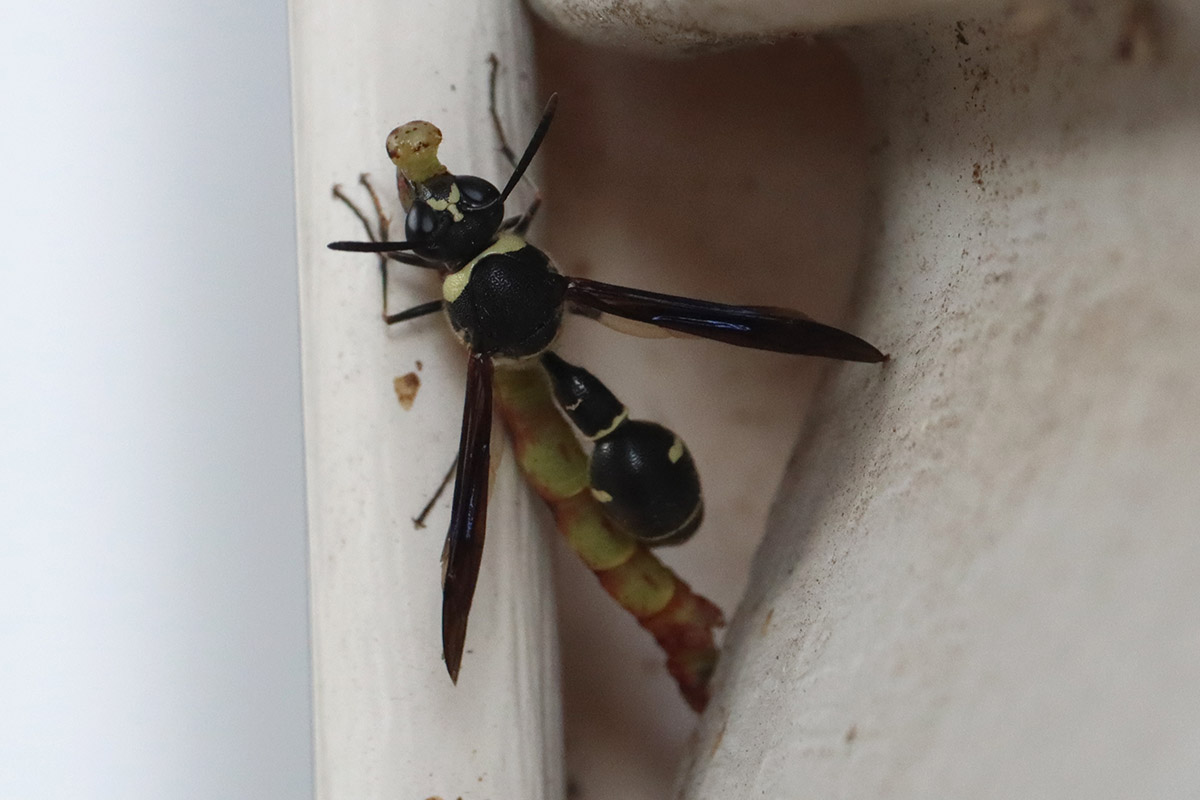
A four-toothed mason wasp seems to have made a nest under our siding. They nest in abandoned carpenter bee nests, and I wonder if there’s soft wood under there.
Here the wasp has brought home a caterpillar for its larvae.
October 28, 2022
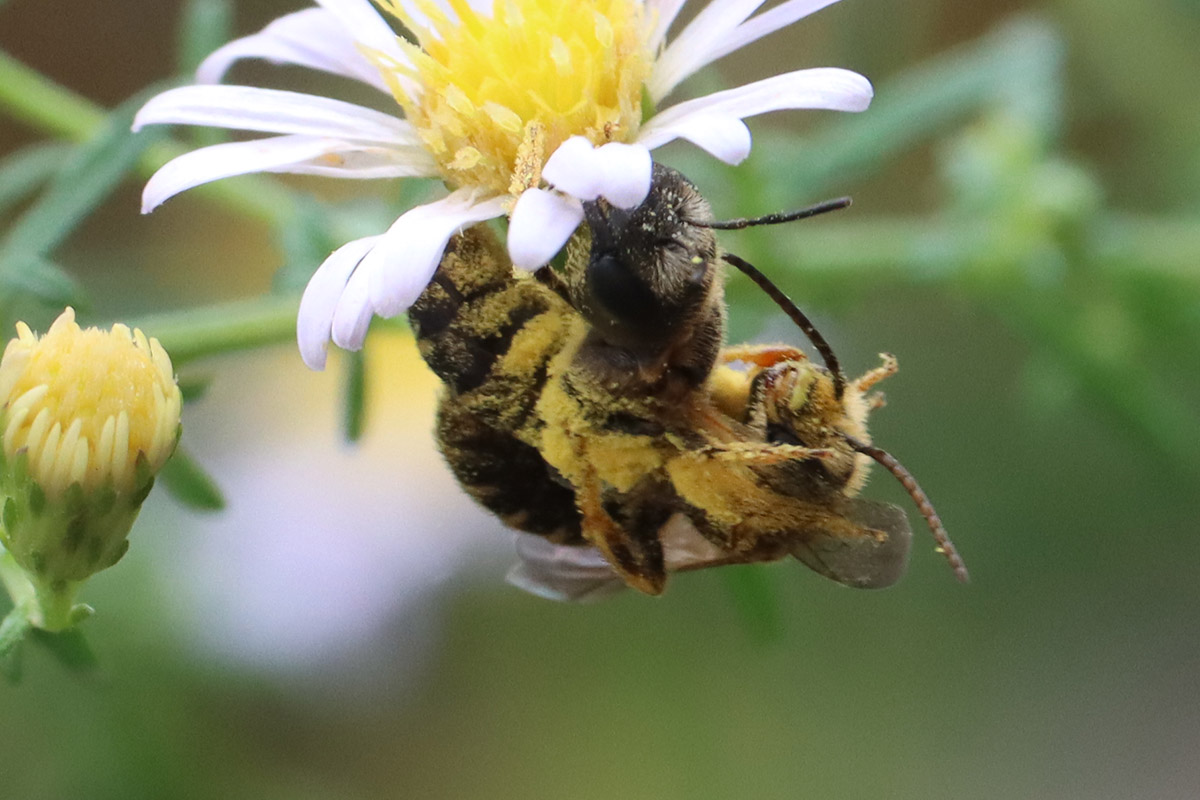
I spent a few minutes watching these two Poey’s furrow bees, one following the other and attemptimg to mate with her as she visited rice button asters.
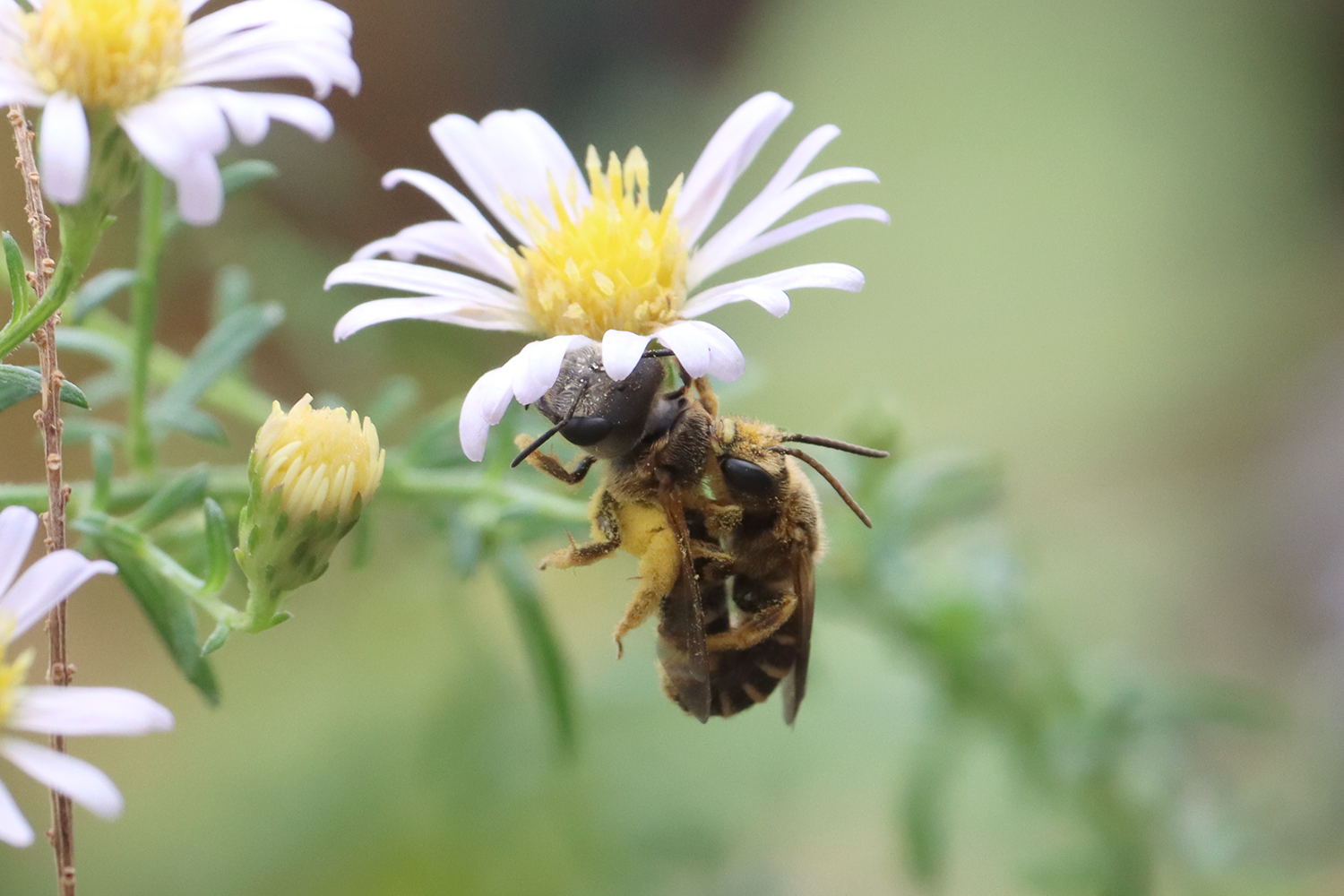
Poey’s furrow bees are common yard bees, and yet this is the first time I’ve seen a male. Look at the differences in their heads. The female has a large head with impressive mandibles. The male has a small head covered with yellow hair.
In the fall, Poey’s furrow bees mate, and females hibernate until spring, when they make their nests. It looks like she’ll go into her hiding space covered in pollen. She’s ready.
This might be one the best benefits of having fall flowers and keeping these bees in my yard for longer- I get to see this.
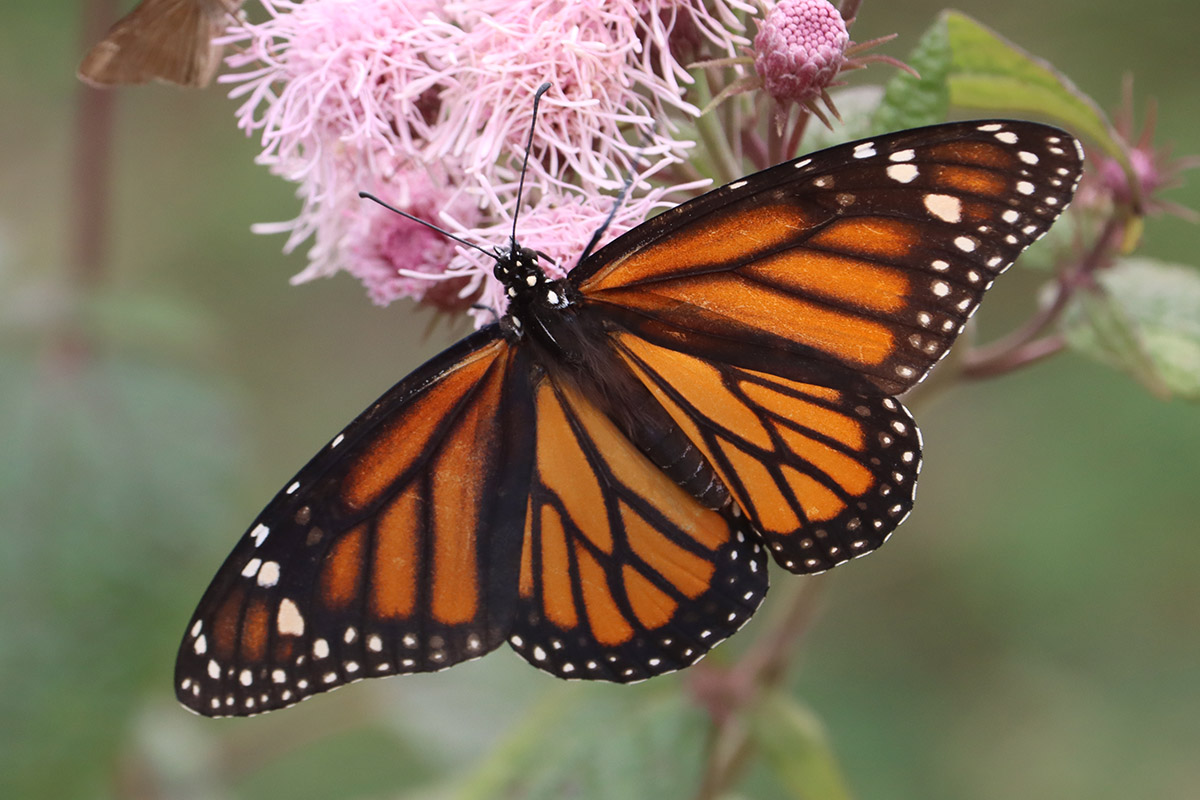
I haven’t seen monarchs in weeks. And then I get this unseasonal Brickellia bloom, and here we see one. It’s like this plant calls to them. At this time of year, they should be migrating south, on their way to Mexico. I’m happy to have a little fuel for this one on their voyage.
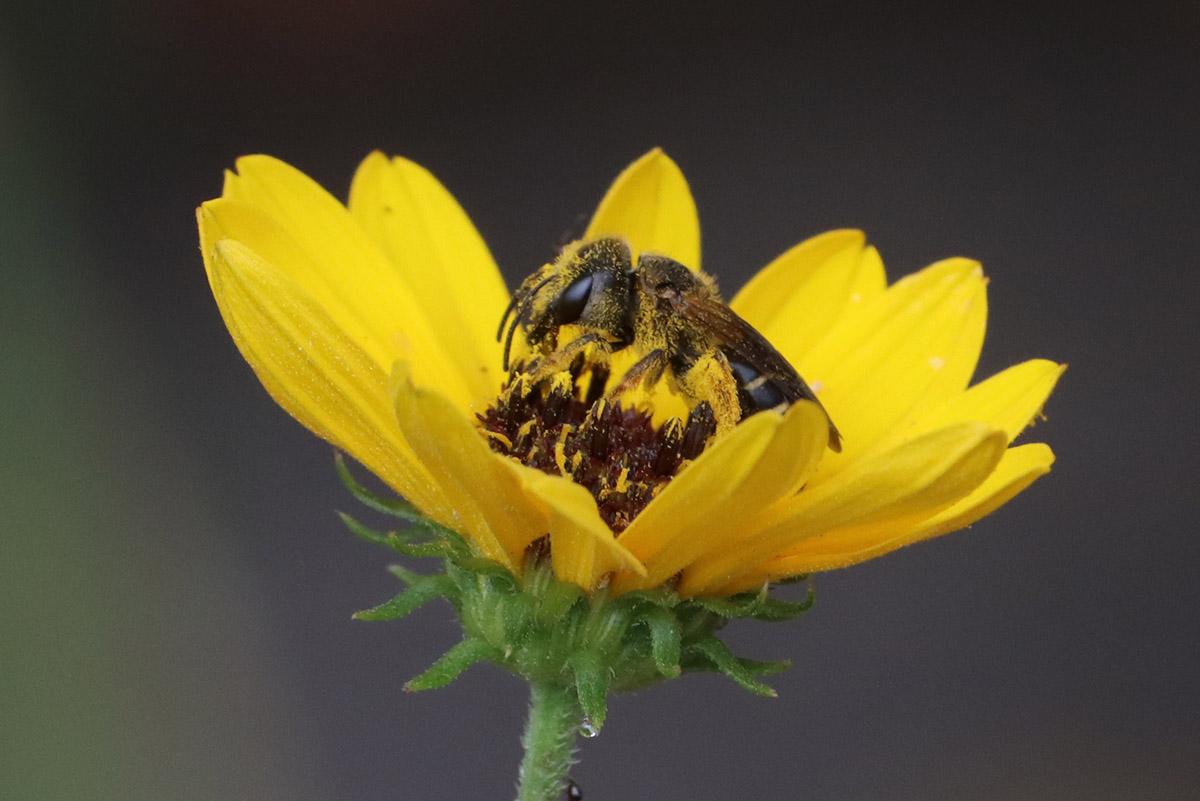
I don’t know if this is the same female from before, but she is similarly pollen-covered.
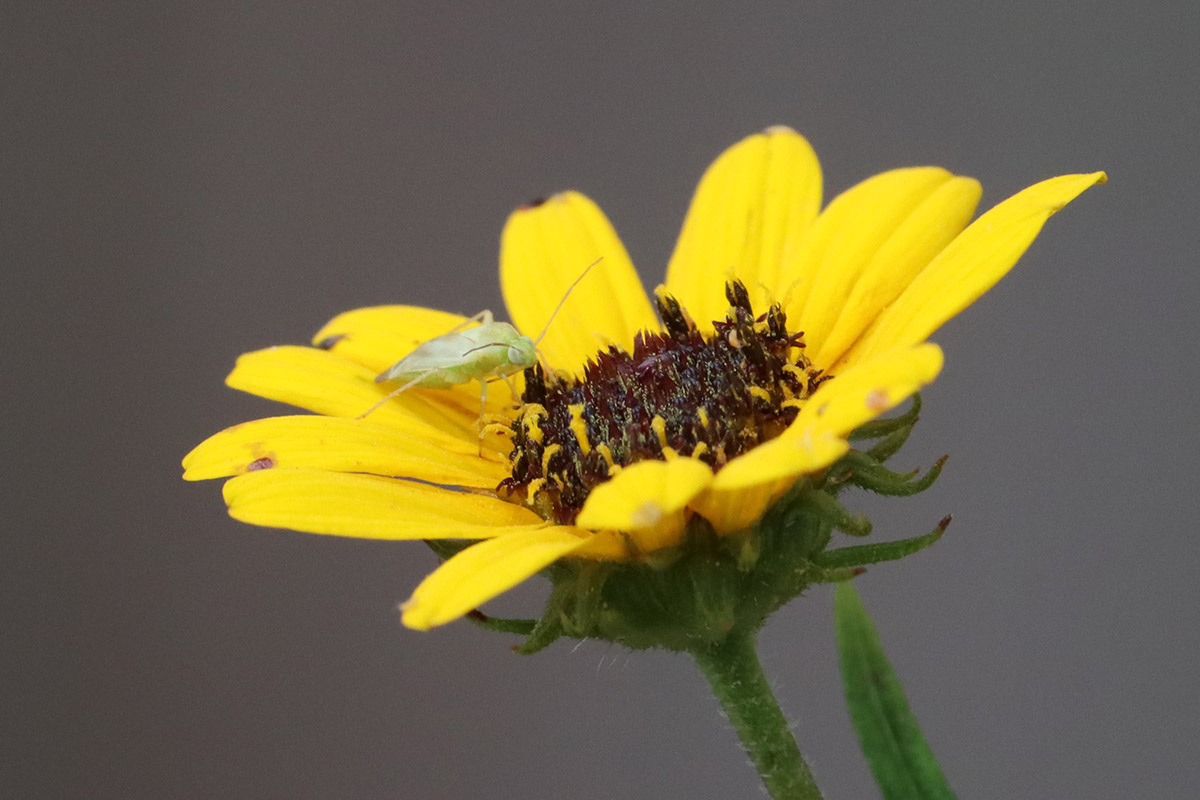
And here’s an insect we saw earlier in the year, eating the pollen in this flower.
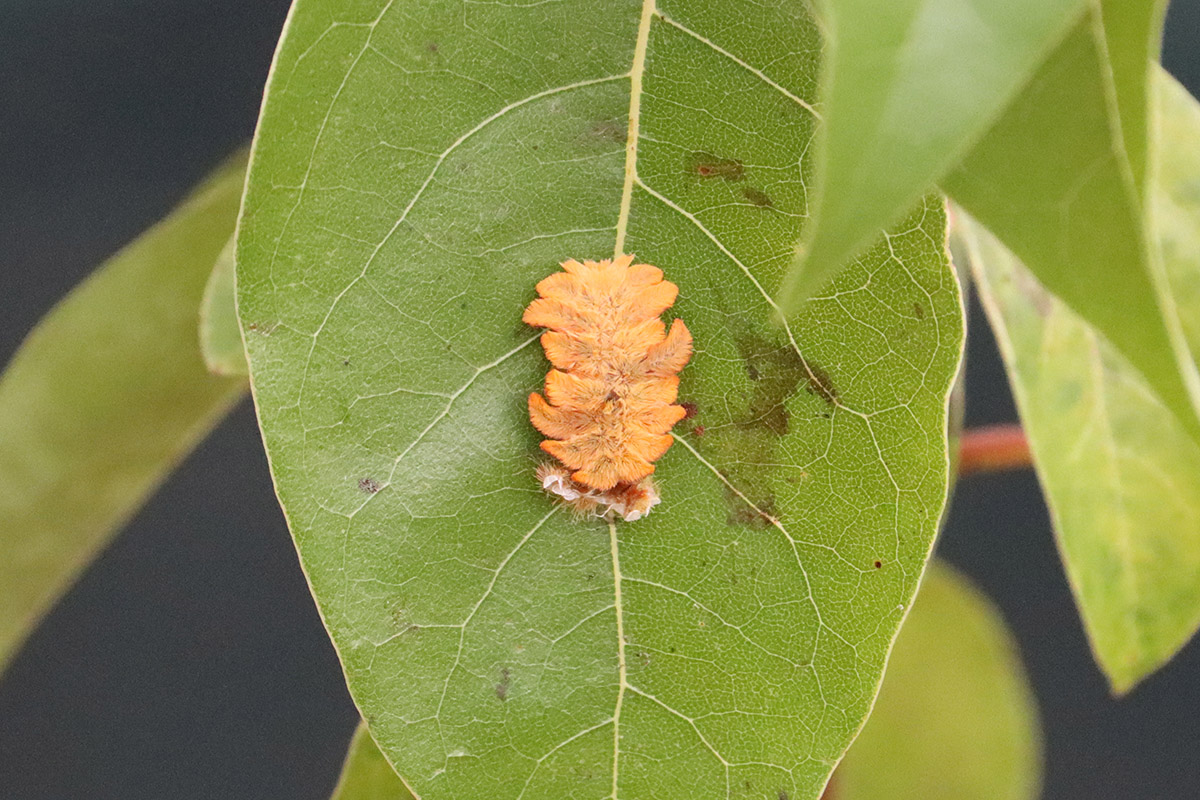
My yard observations have come full circle today.
When I started the Backyard Blog in 2018, I wasn’t yet on iNaturalist. I found something pink and fuzzy on a leaf one day, and my searches led me to believe I had a sort of flannel moth. I posted the photo and a biologist wrote in to point me in a different direction: fuzzy oak gall.
Gall wasps lay their eggs and make their nest in in one efficient move. They inject their eggs into leaves or stems, usually those of an oak tree. Along with the eggs, they inject chemicals into the leaves that create structures from the plant matter, called galls. Some are round and woody, or translucent. Others look more like fuzzy caterpillars. They’re all nurseries for gall wasp larvae.
iNaturalist’s top ID for this was fuzzy oak gall, as I expected. Sometimes, though, moth caterpillars look like the oak galls that look like caterpillars. This is a hag moth caterpillar. I think that’s a molt just under it.
I let various small saplings grow to a certain height in the yard, mostly to feed insects like this.
October 29, 2022
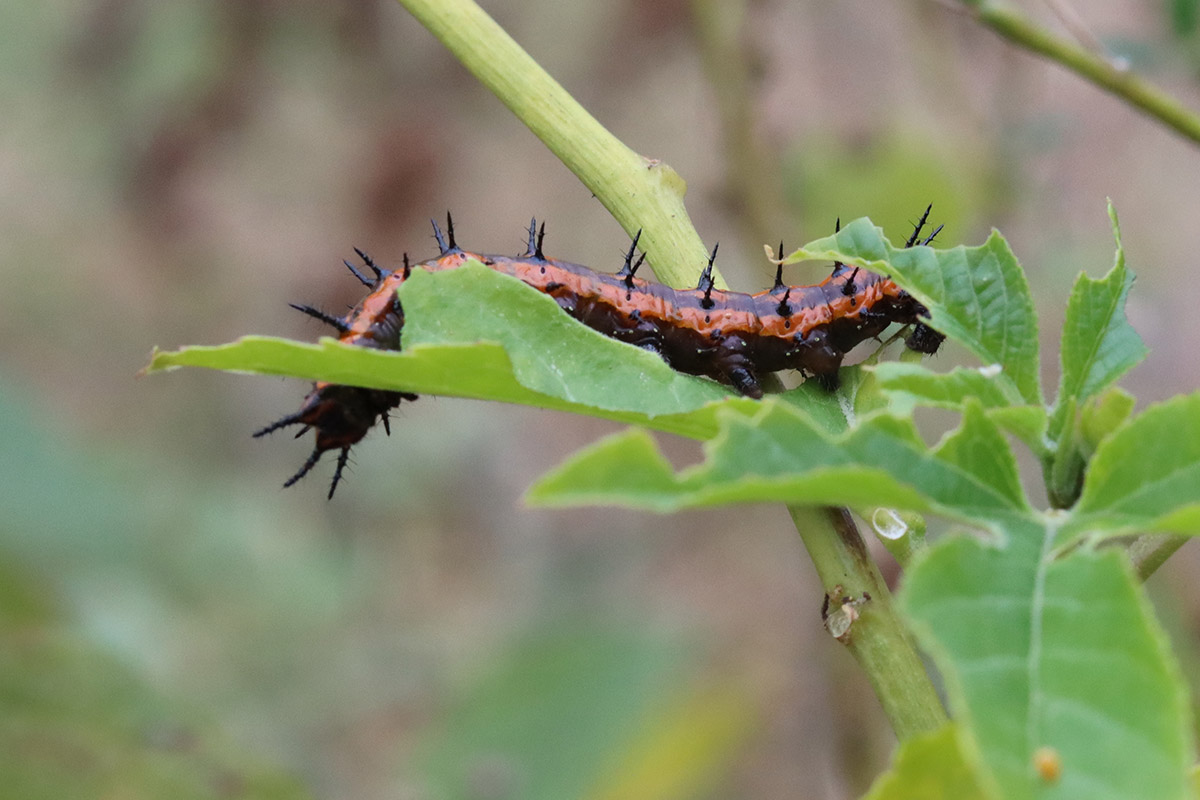
This gulf fritillary caterpillar is a champion. Over the last week or two, it experienced near freezing temperatures. It alone made it from the dozens of eggs laid on a plant with not so many leaves. It will soon make a chrysalis, and if it’s relatively warm in a couple of weeks, it will fly south before temperatures dip.
Perhaps those are champion’s stripes. It’s a typical color variation, but the first I’ve seen with these dark stripes in our yard.
November 5, 2022
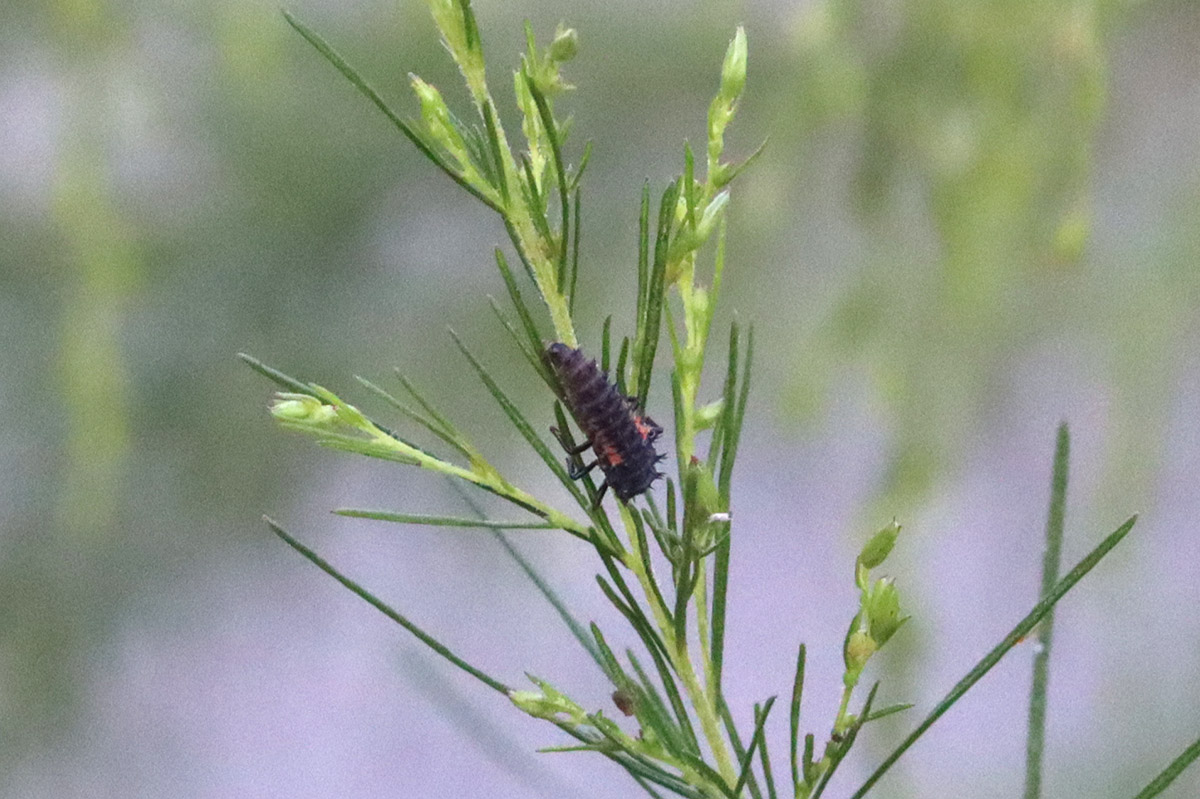
The dog fennel was full of lady beetle larvae in the morning.
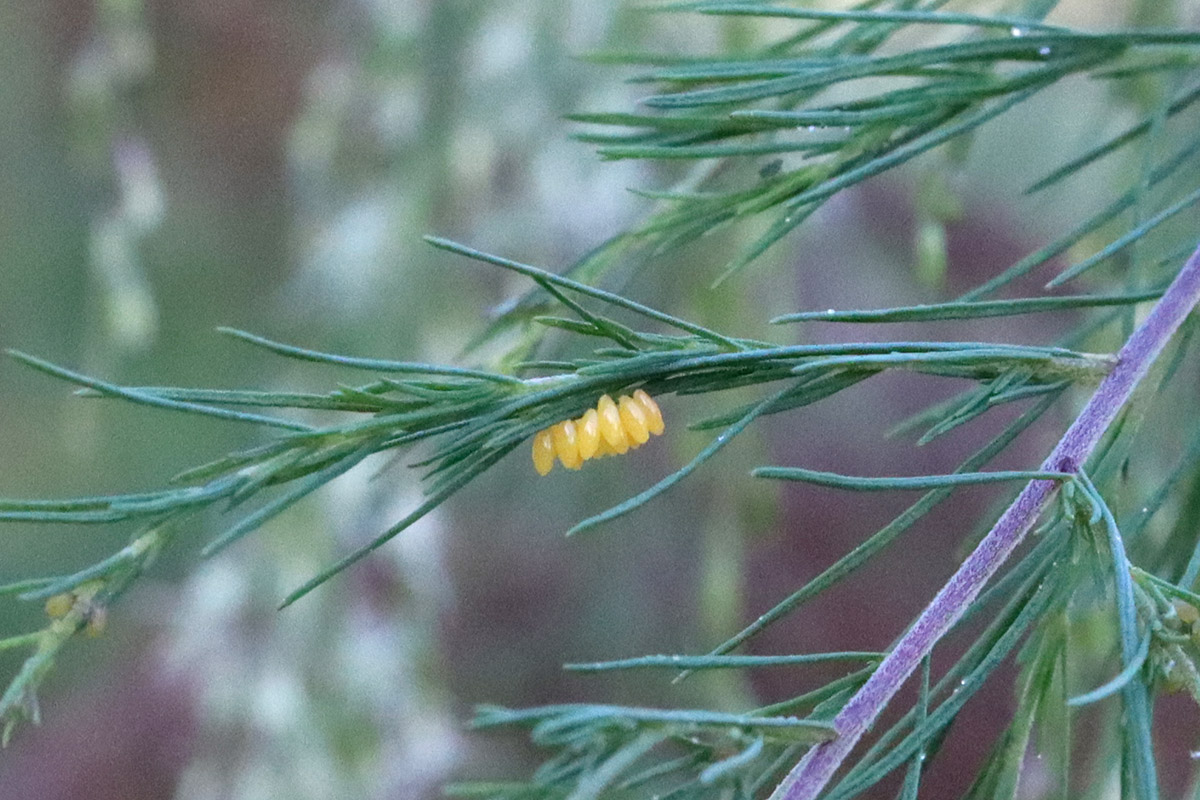
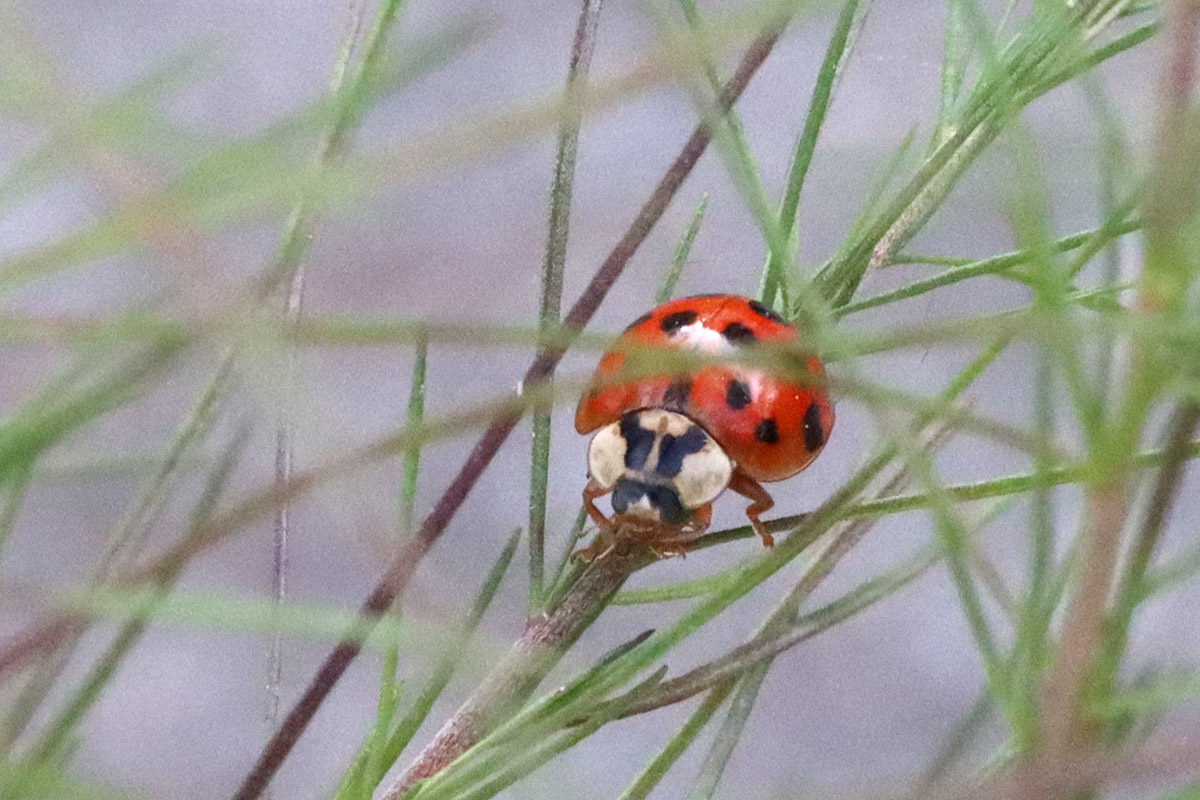
The white mark on its forehead gives it away as the invasive Asian lady beetle. I searched iNaturalist observations for all lady beetles in Leon County, and this is overwhelmingly the most common species. In some capacity, it fills the same niche as lady bugs, eating insects like aphids. But it also eats native ladybugs and their eggs.
So instead of a diversity of native lady beetle species, we have this and the occasional twice stabbed ladybug or other species.
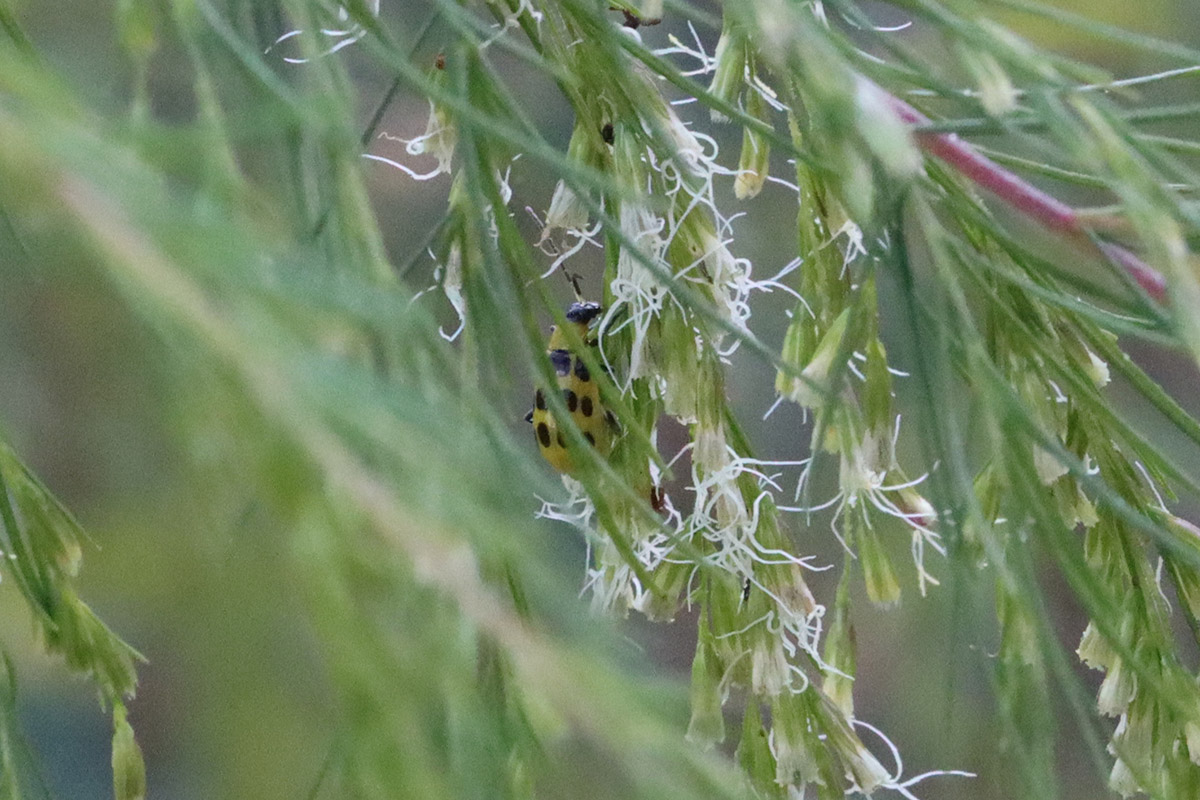
I thought this might be another species of lady beetle, but instead it’s a cucumber beetle. It’s a nuisance to squash and cucumber plants, which we don’t have in the yard now. Also, check out the dog fennel flowers.
Another new bee visitor to the yard
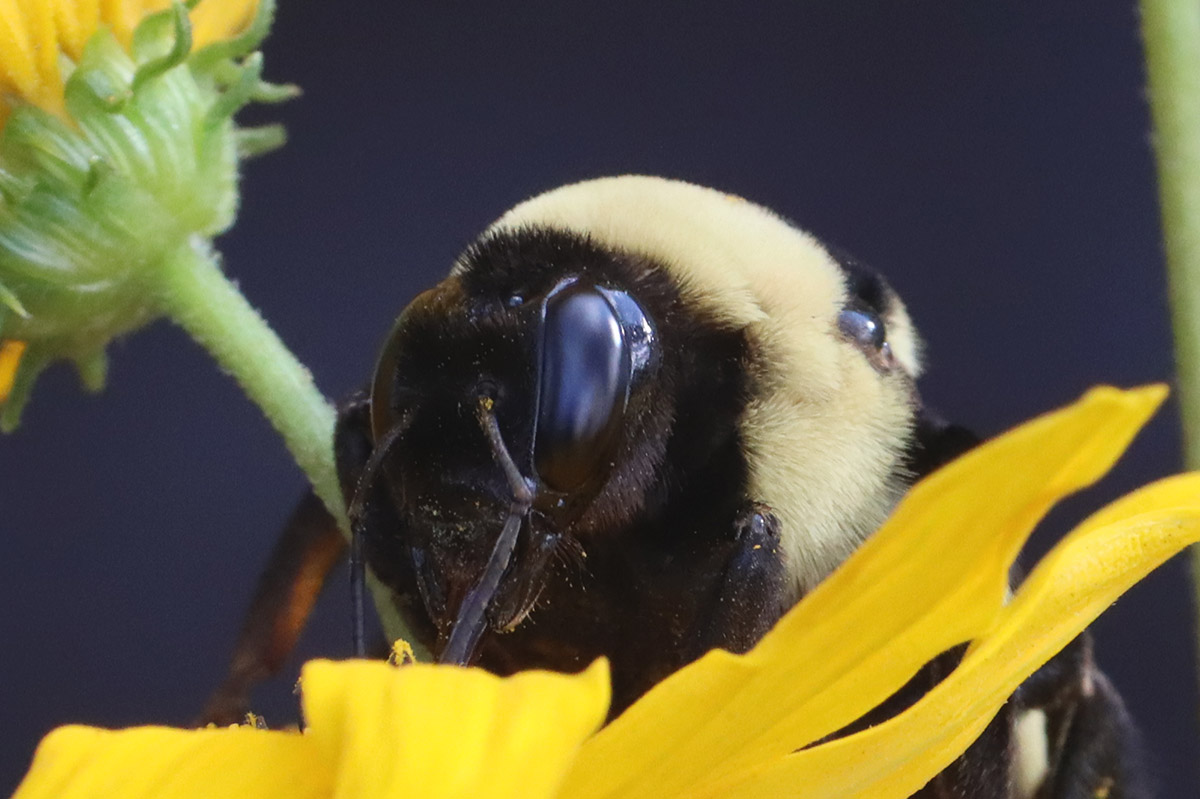
Here’s a new face in our yard. I didn’t know it at the time, but it was the sixth new bee species of the year for us.
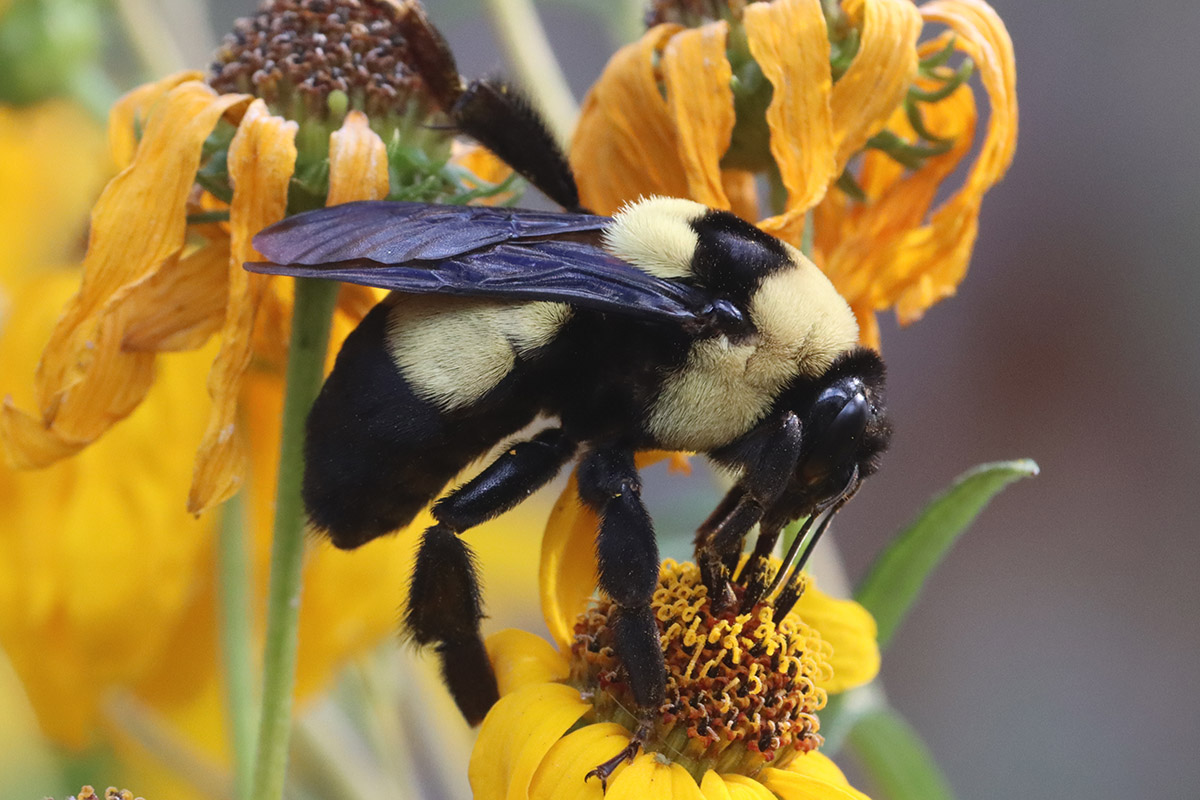
This may be the largest bee I’ve ever seen, moving slowly over the sunflowers. This and American bumblebees are in the same size range as carpenter bees. I thought this might be an American bumblebee at first, though its pattern was off. I thought it might be a male.
A couple of weeks after it visited, I saw a post in a native bee Facebook group about southern plains bumblebees. Like the American bumblebee, this is a species in decline. It is listed as Internationally Endangered by the IUCN.
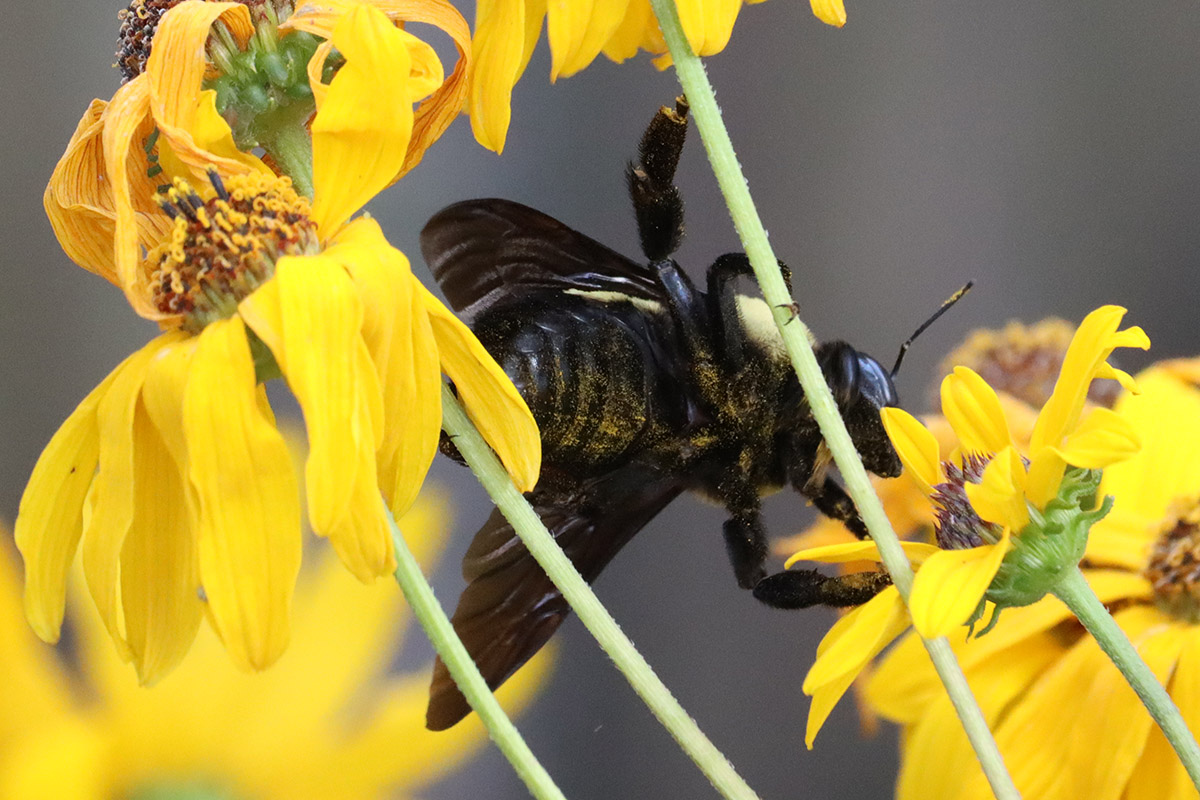
Instead of flying, it walked among the clusters of sunflowers. A nice large, endangered bee, moving at a leisurely pace. A photographer’s dream.
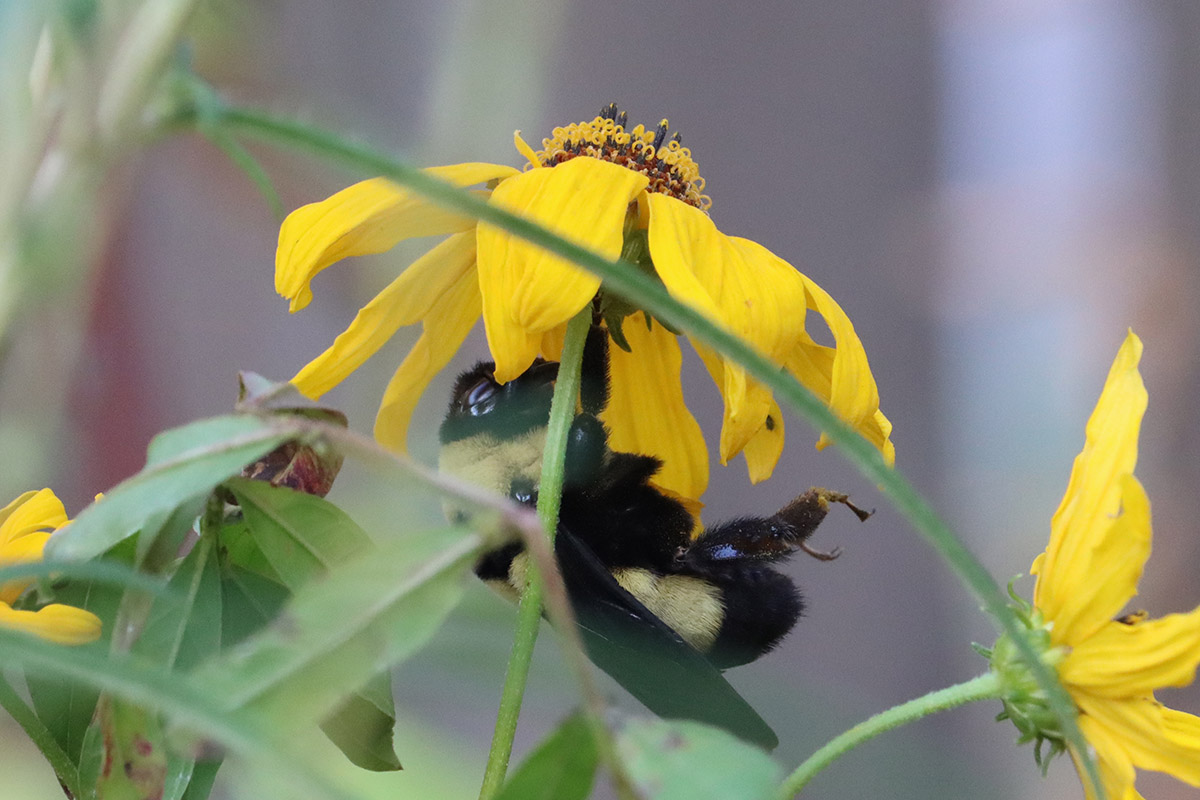
Good night, southern plains bumblebee (it’s about 5:00 pm here, actually).
November 6, 2022
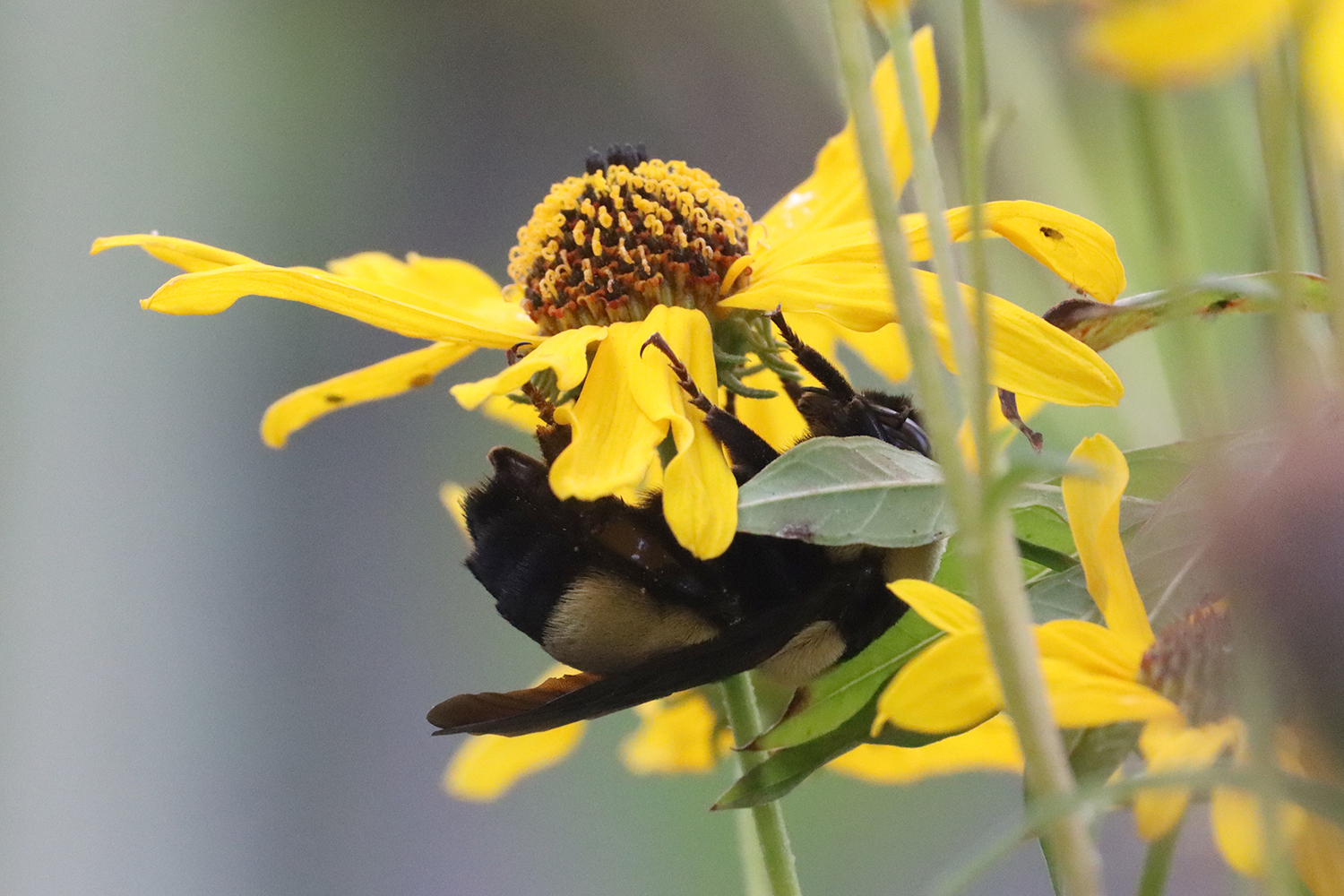
Did it change flowers overnight?
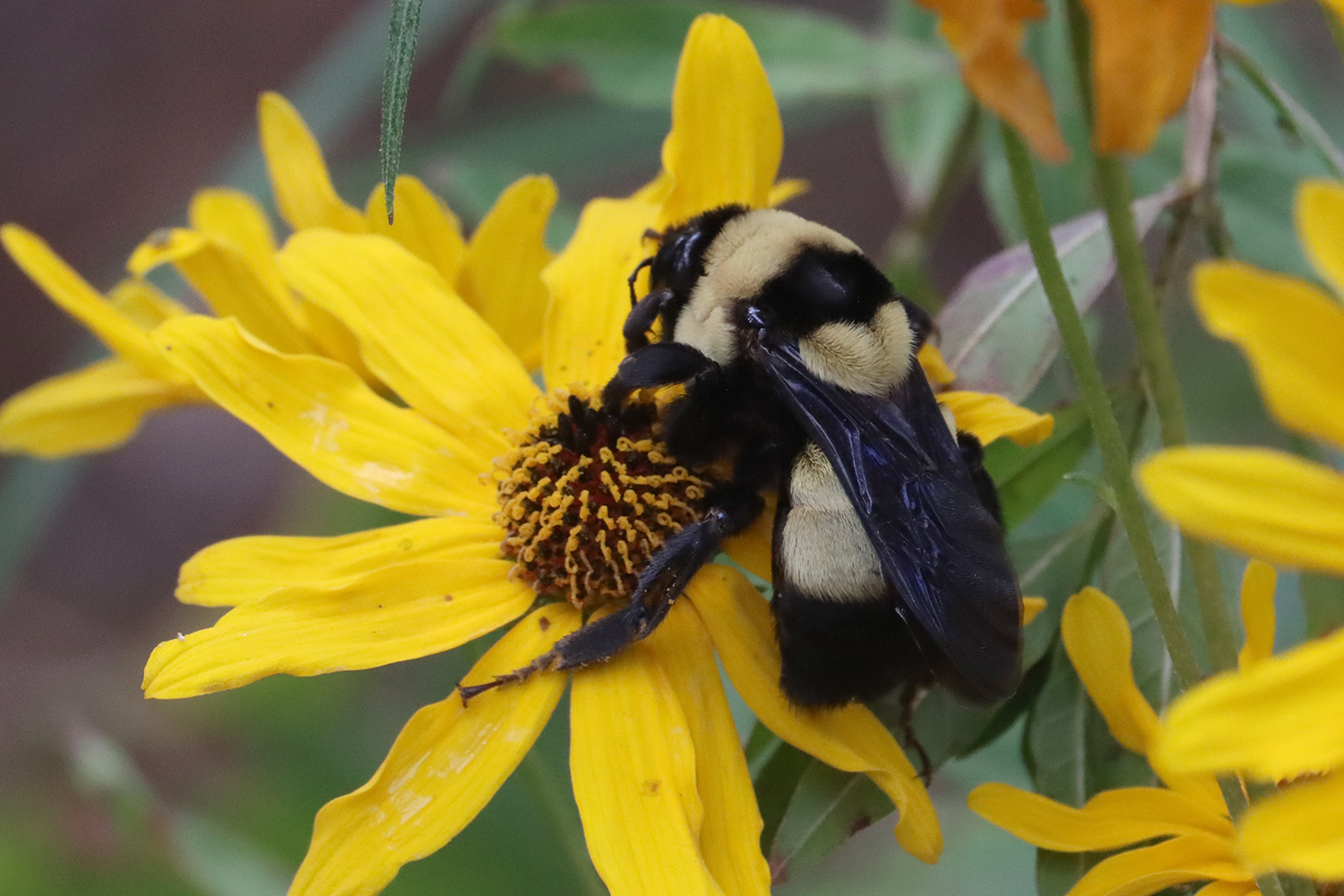
Within a couple minutes of my showing up with a camera, the southern plains bumblebee crawled up on the flower for a photo. By mid-morning, it was gone.
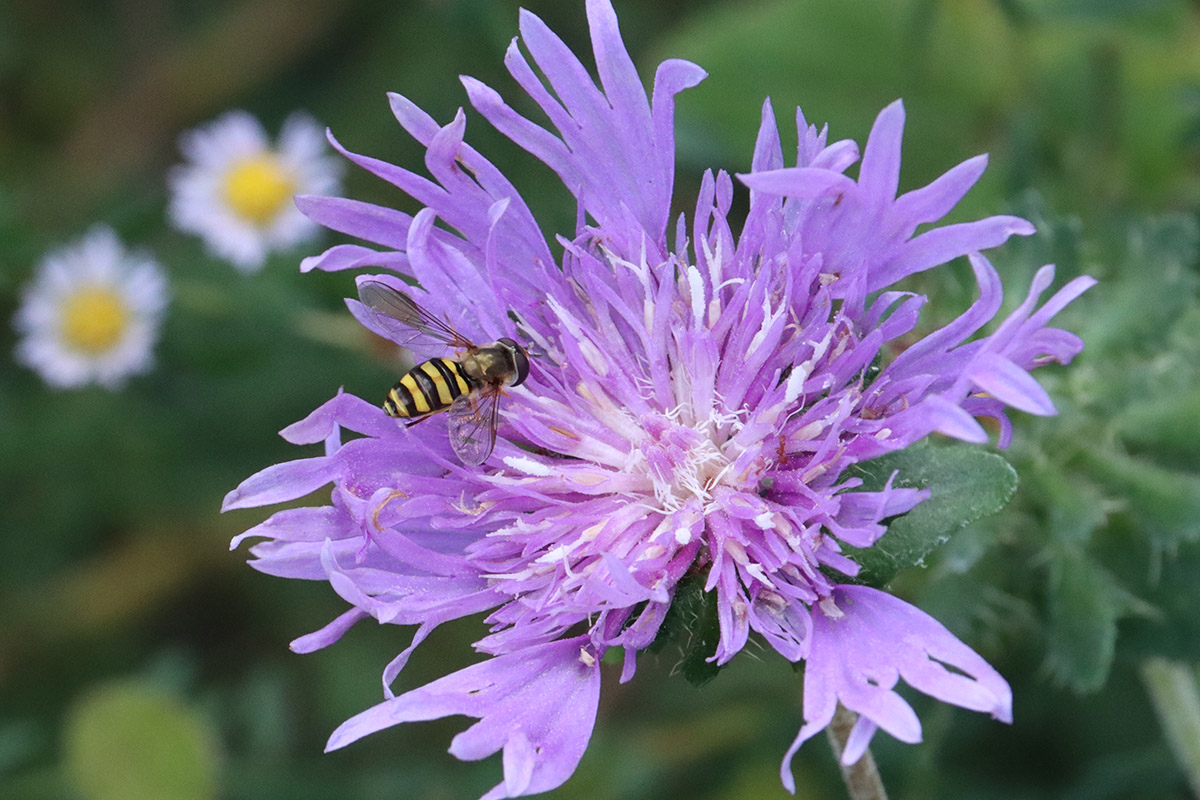
The Stoke’s aster stopped blooming a few months back, but now one plant is producing a few more flowers for us. Visiting one of those flowers is another hoverfly, a different species from the one we saw a few days ago. We have a few species visiting flowers right around now.
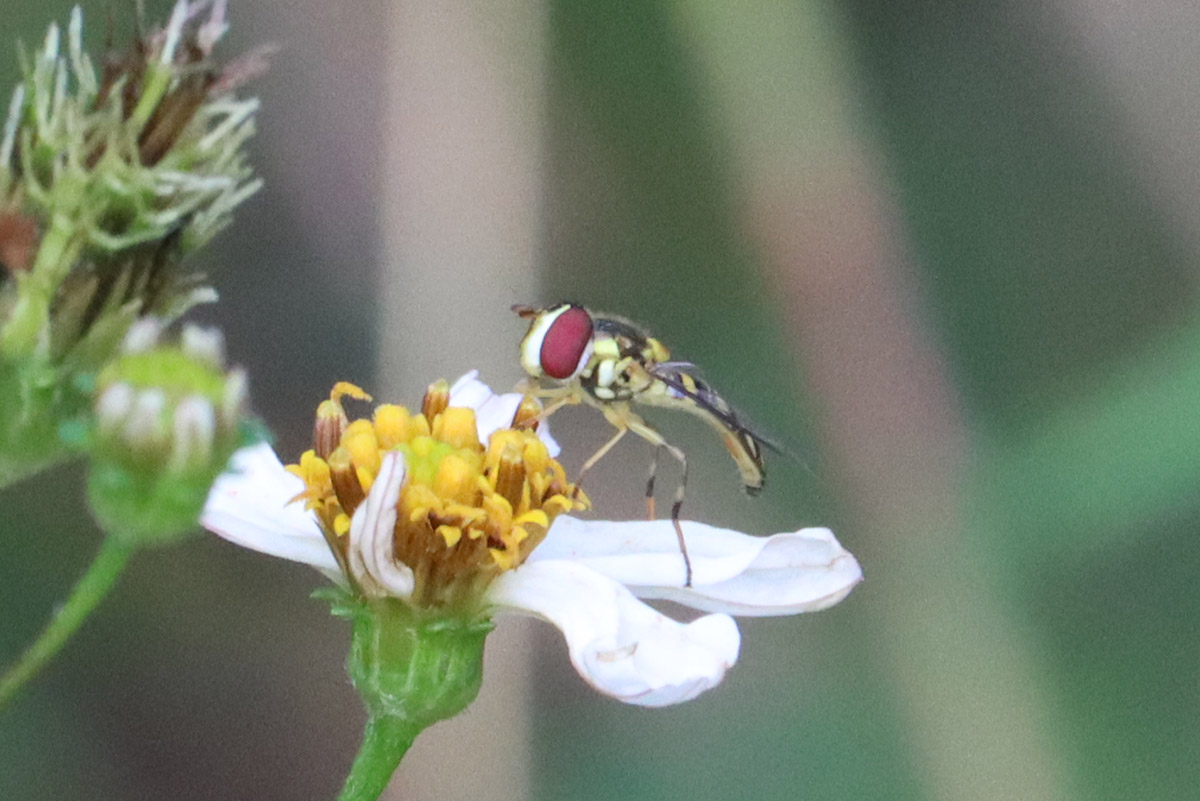
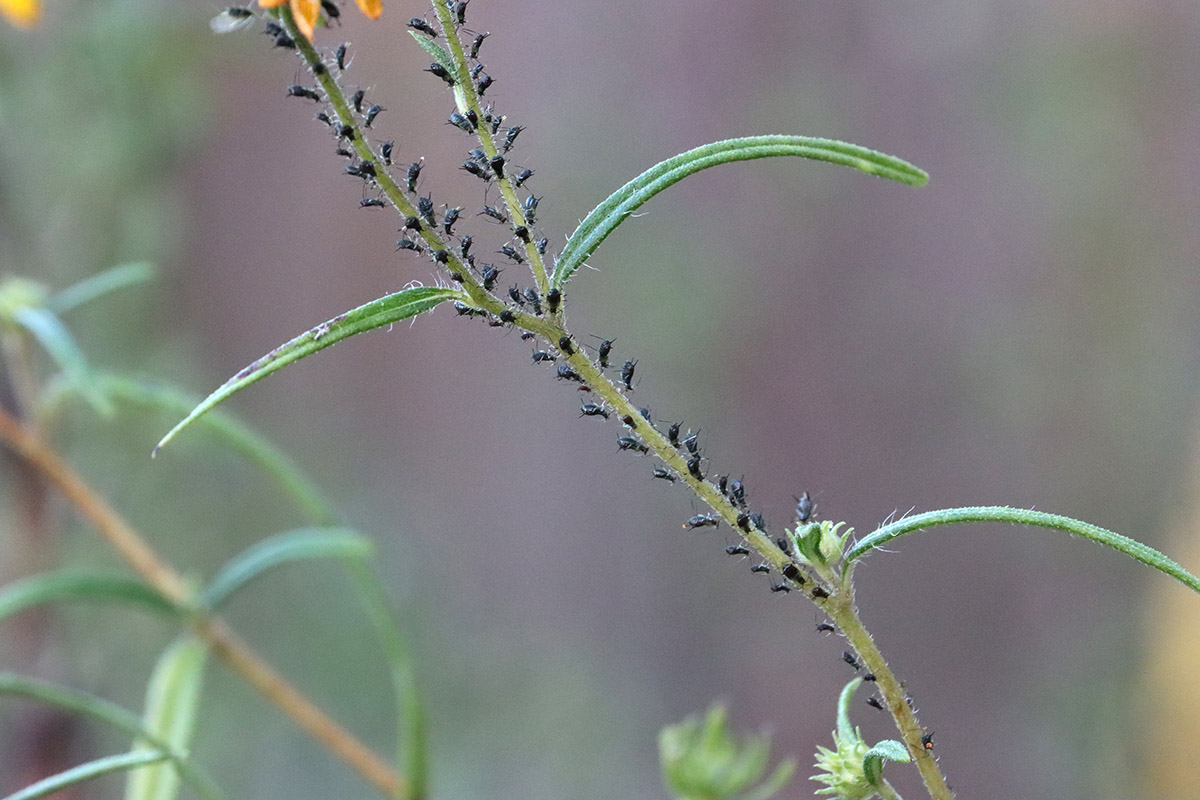
The reason we have so many hoverflies? Food for adults (flowers), food for larvae (aphids).
November 7, 2022
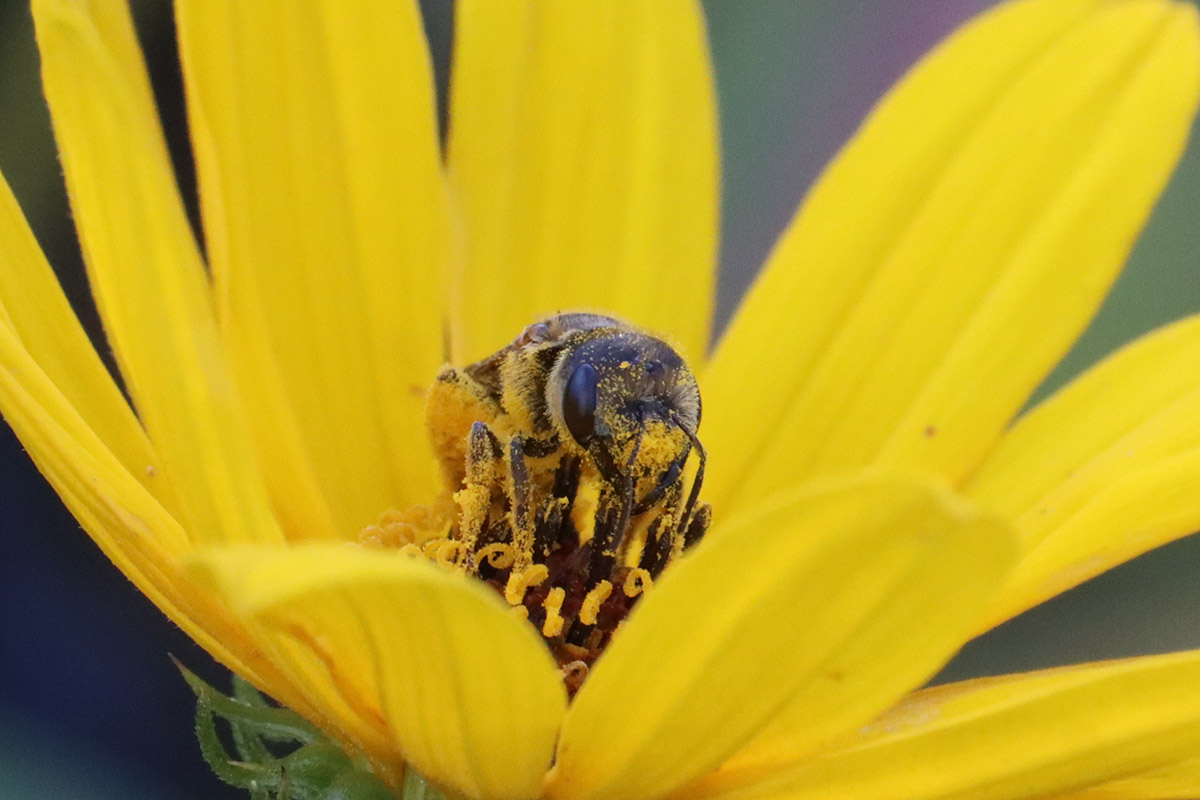
Based on the face fur, I thought this might be the male. But male bees don’t collect pollen; they don’t raise young. It makes me want to gather my Poey’s furrow bee photos from the year and compare them. It looks like she gets a little fuzzier in the fall, perhaps to carry more pollen?
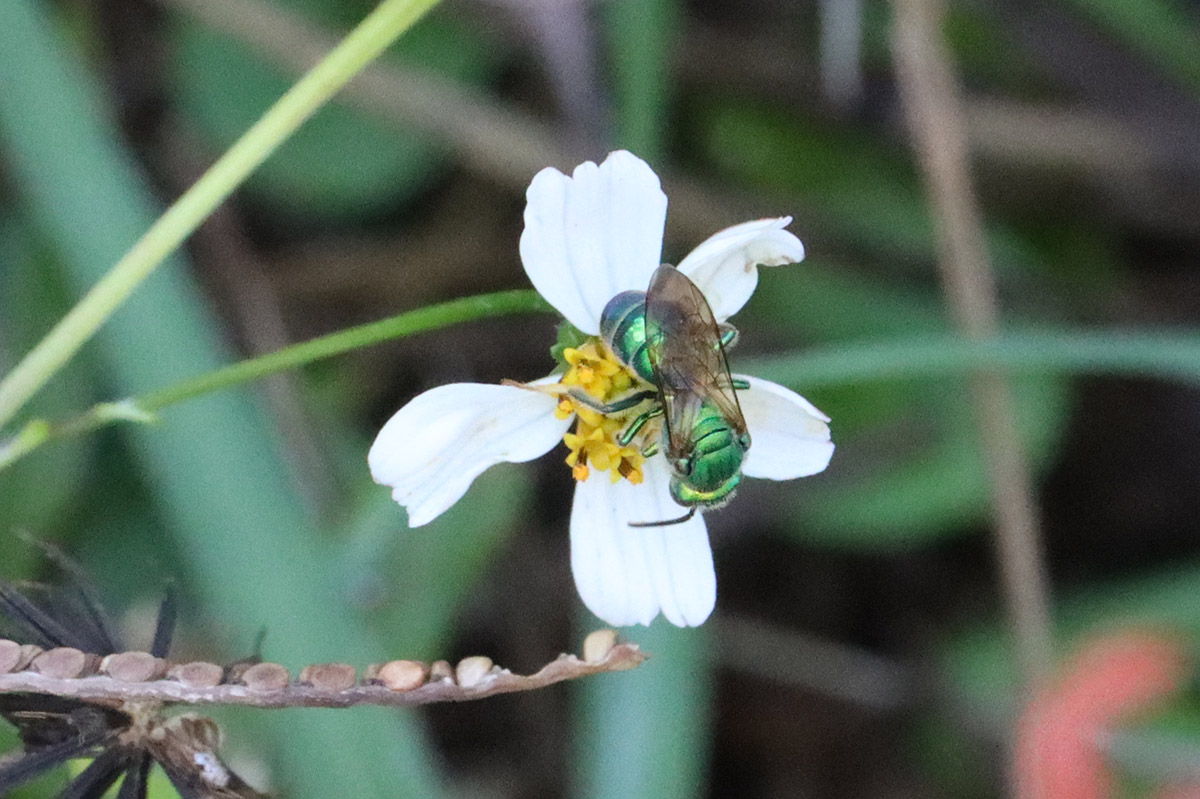
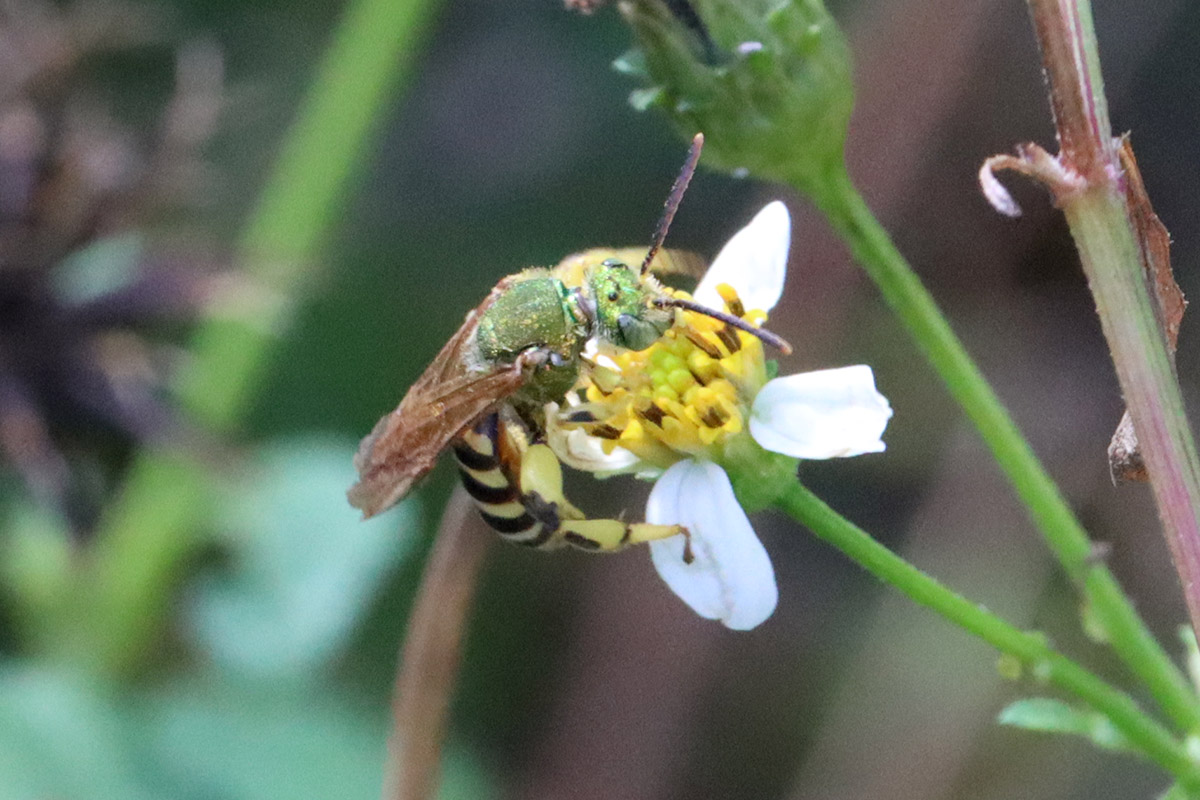
It’s not the swarms of males and females we see in August through early September, but we only need one of each for mating.
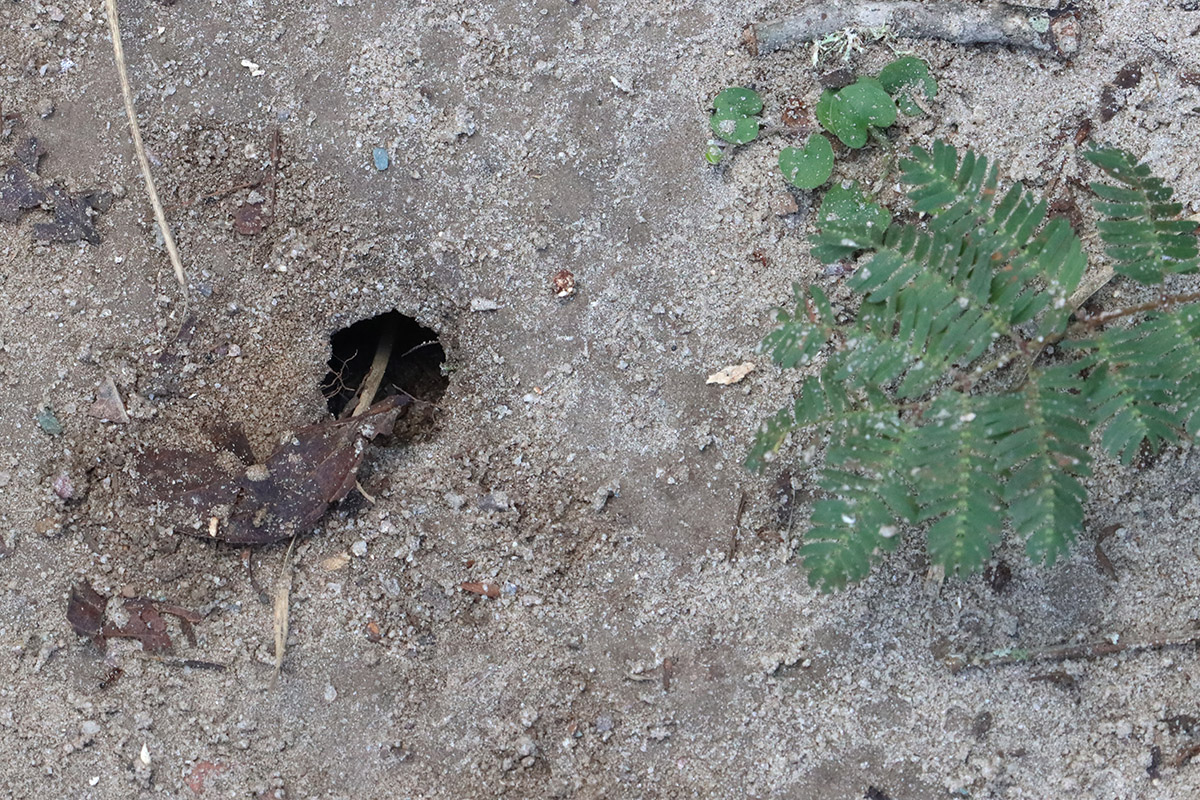
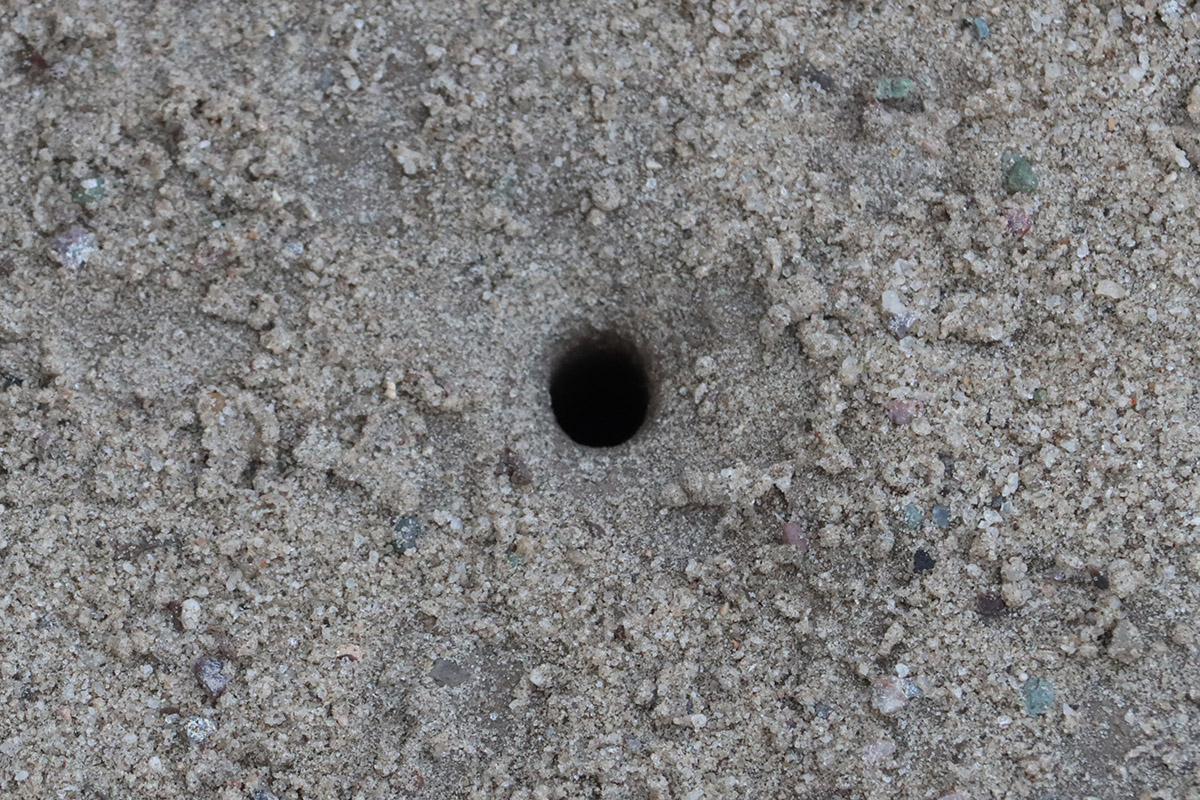
We’ve seen bees mating, and other potential breeding pairs. I’ve noticed new holes on the bare earth in our yard; bees or other insects are preparing for winter.
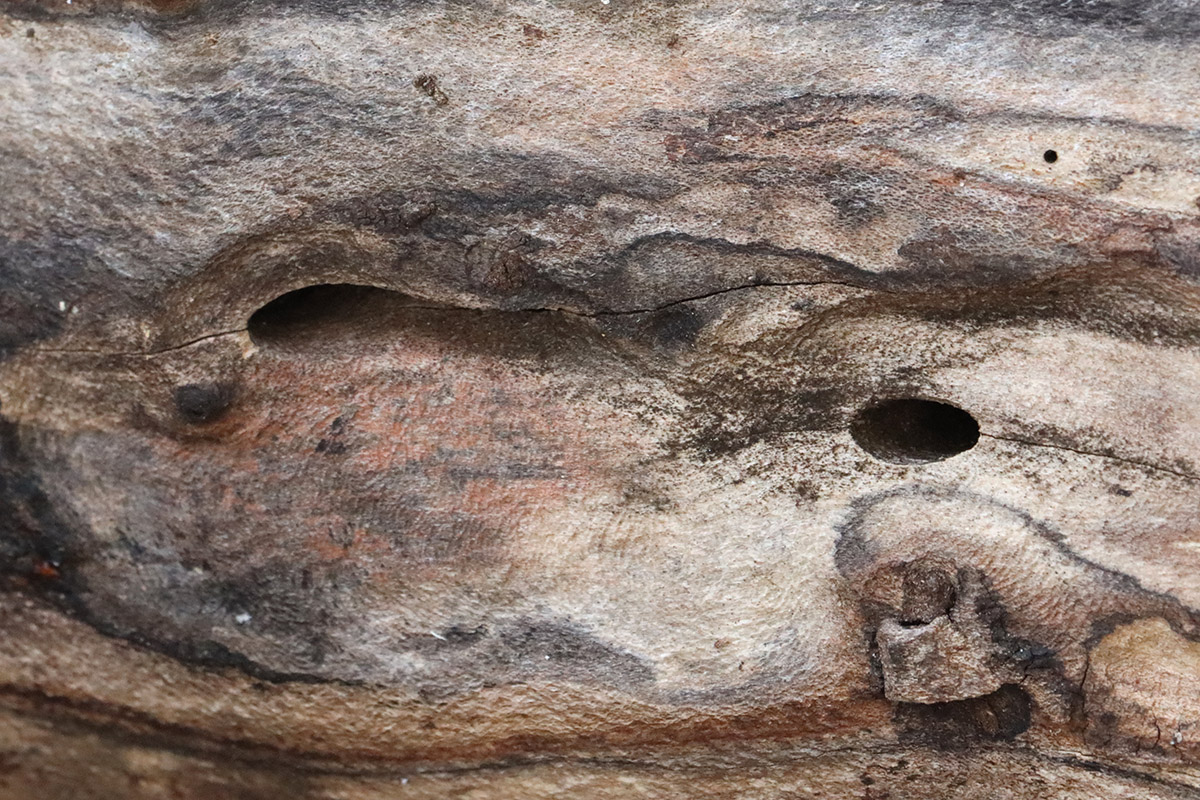
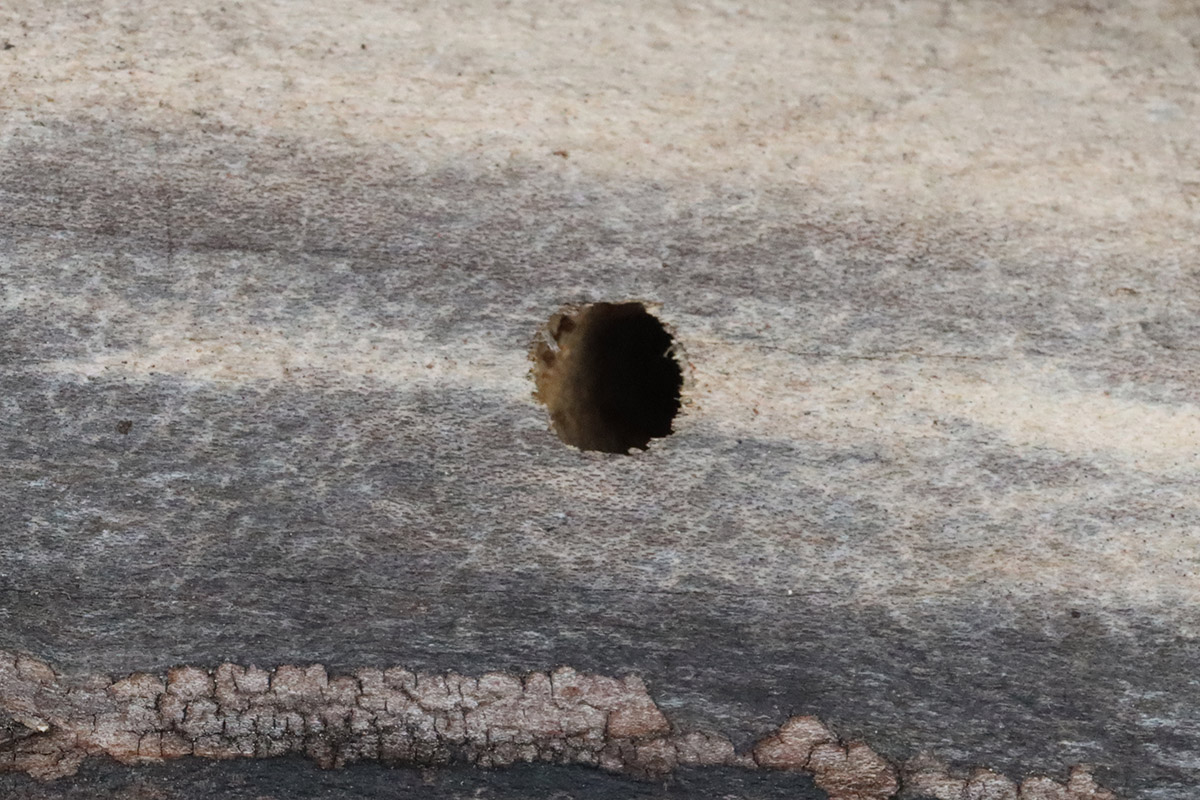
I’m also noticing holes in the larger pieces of wood in our brush pile. In our segment on overwintering bees, our interviewees mentioned dead, soft wood as a place where bees nest and overwinter. I use old branches to create boundaries for flower beds as well.
Bees or some other insects have created these.
Pollinators like the camellias this year
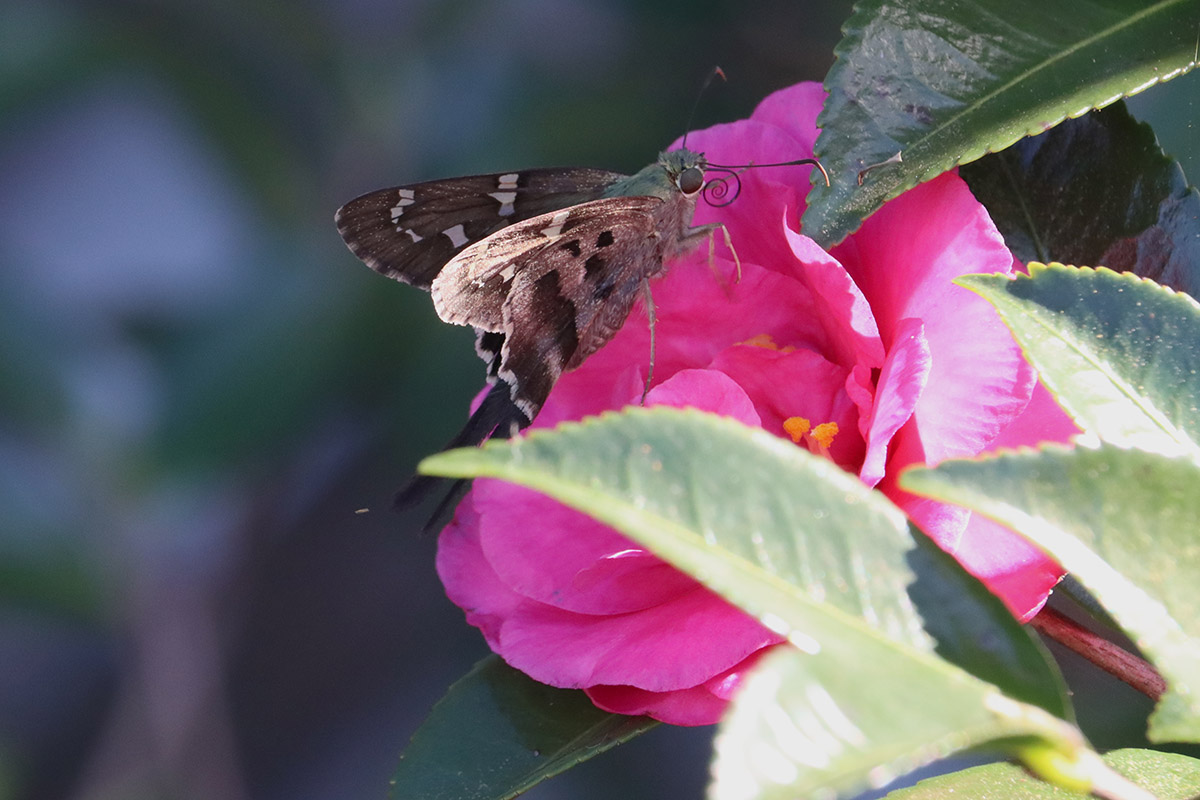
From what I’ve seen, our camellias don’t usually get much pollinator action outside the occasional honeybee. This year is different. I know I’ve been saying that a lot about 2022. I think we have so many more flowers, and are attracting so many more pollinators, that they’re spreading out more and trying flowers they normally wouldn’t. Once they’ve visited all the Bidens or sunflowers, they don’t want to travel to another yard for more nectar. Why not try a camellia?
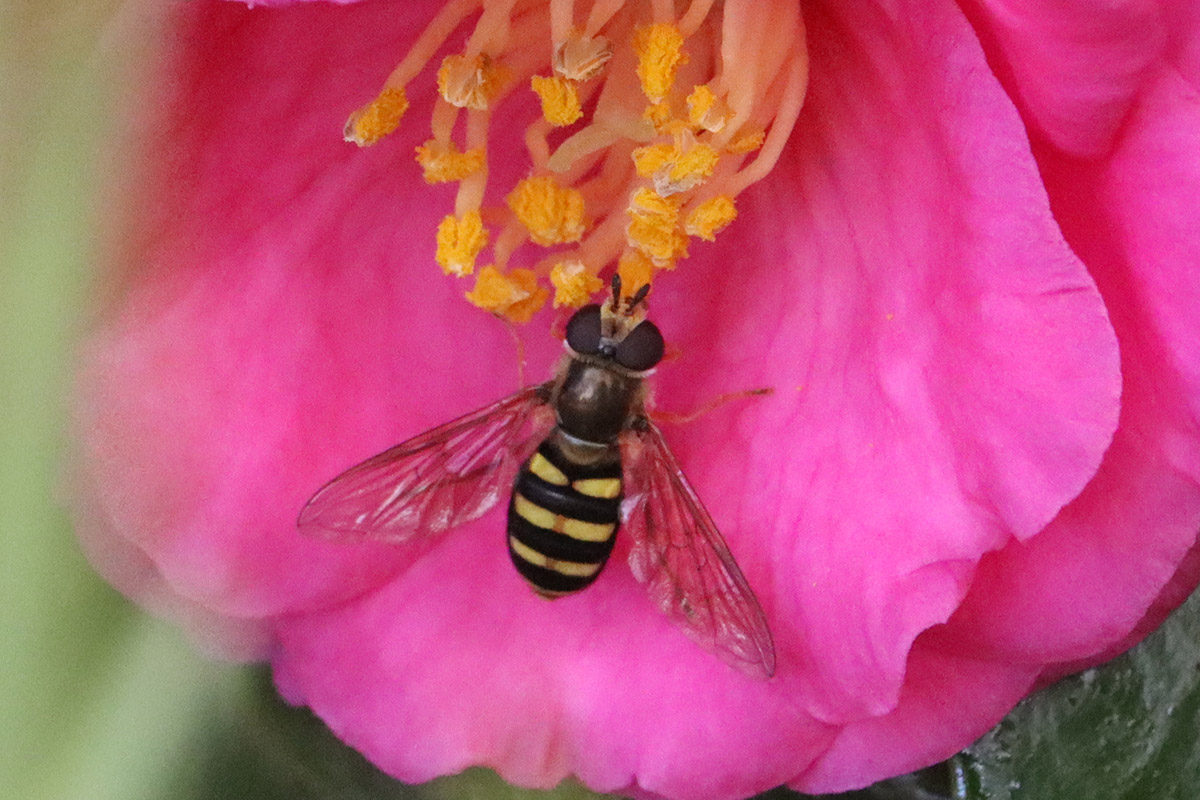
These are Sasanqua camellias, which bloom from October through January.
Migrating monarchs are still fueling up
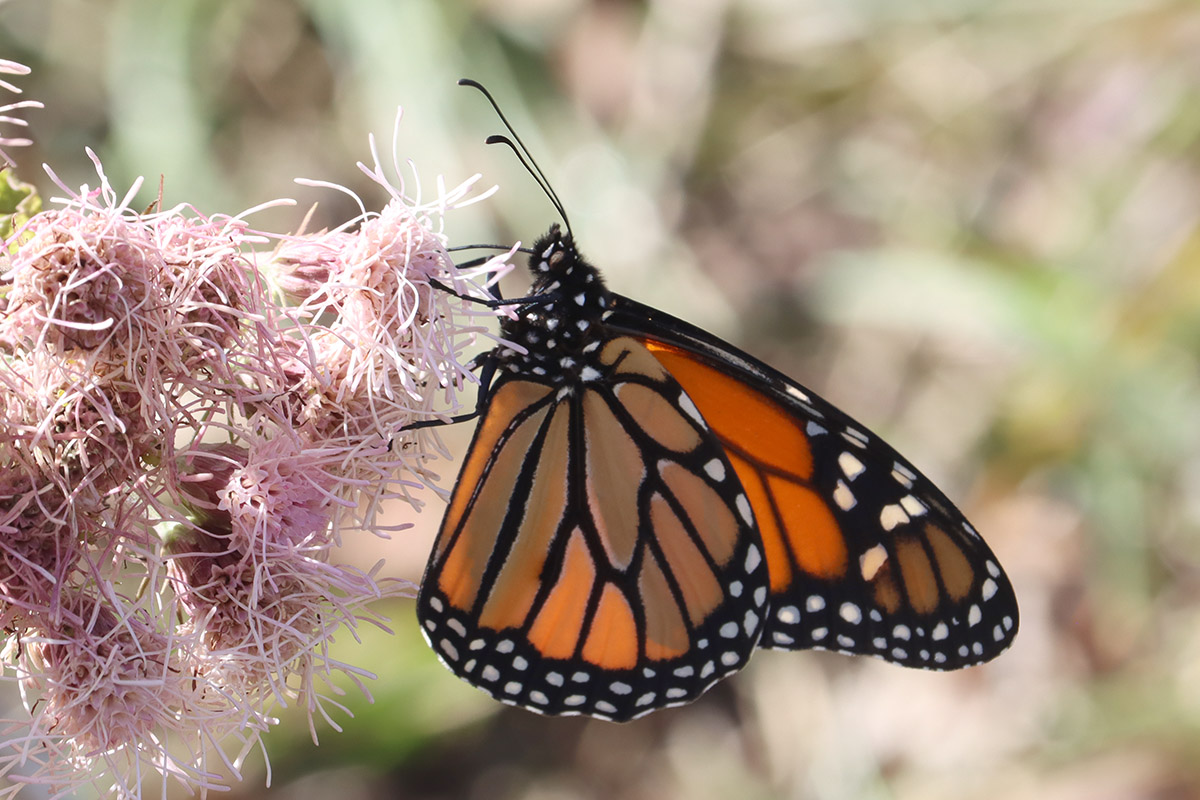
Another monarch is passing through- or is it? Its wings don’t look like those of a butterfly that has migrated from afar.
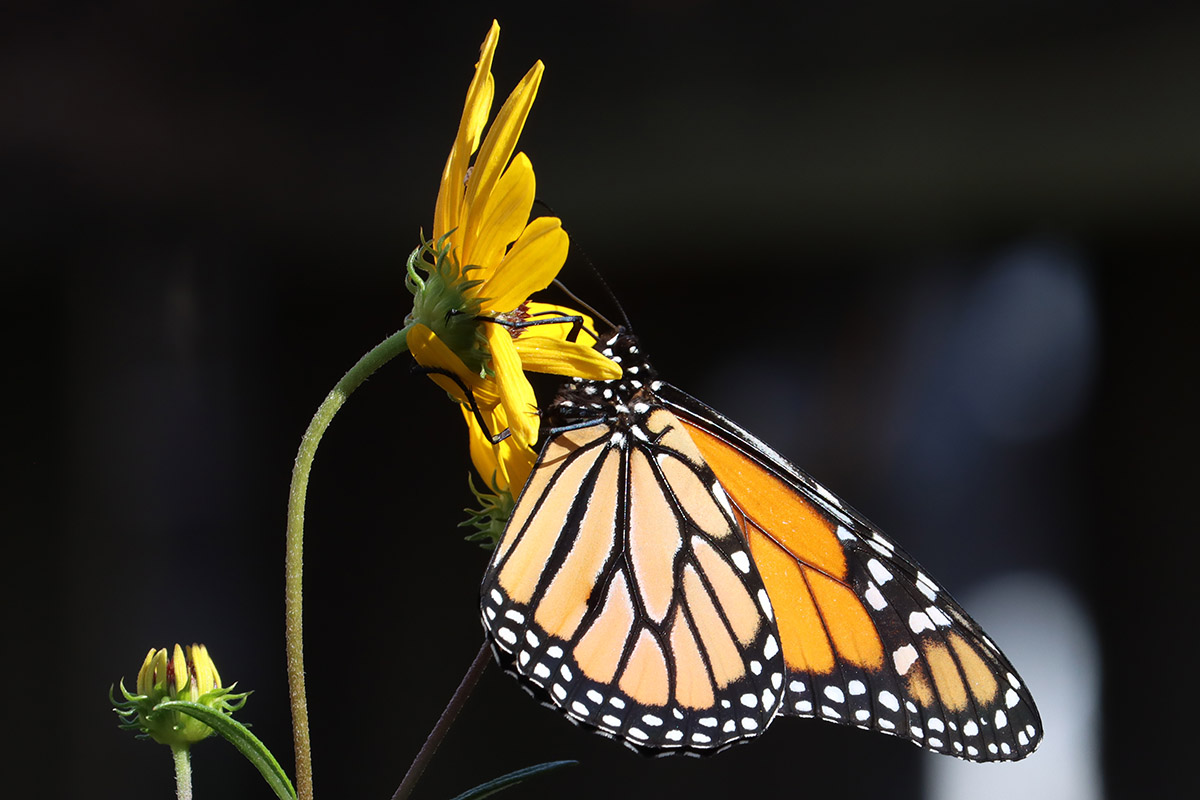
Also spotted on the narrowleaf sunflowers:
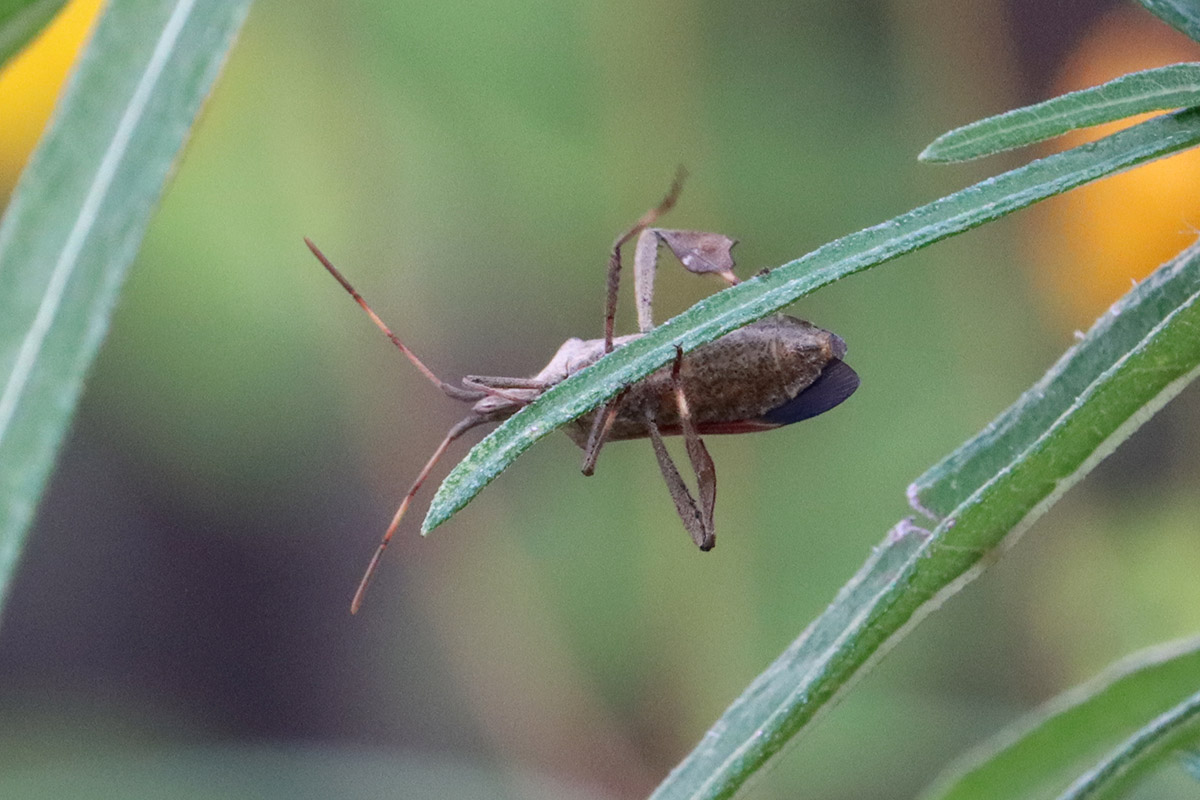
I think this is the eastern leaf footed bug, the only species of leaf footed bug I’ve photographed this year. Over the years, our yard has hosted five or six different species, four in the Leptoglossus genus alone.
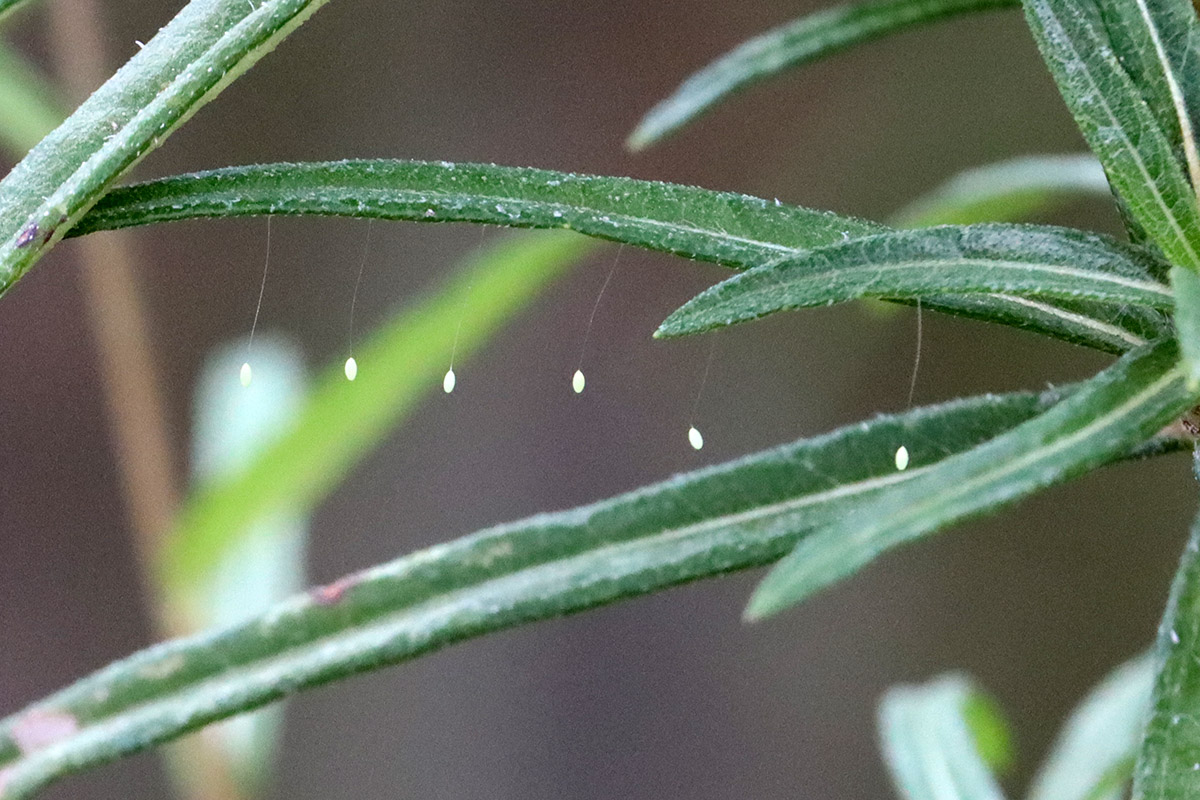
Last month, I found a monarch chrysalis on one of these plants. Here are the eggs of a predatory insect, a killer of “garden pests.” Above is a plant eating insect on narrowleaf sunflower. This plant flowers for about one month in a year. The rest of the year, it’s a habitat for several other insects.
November 8, 2022
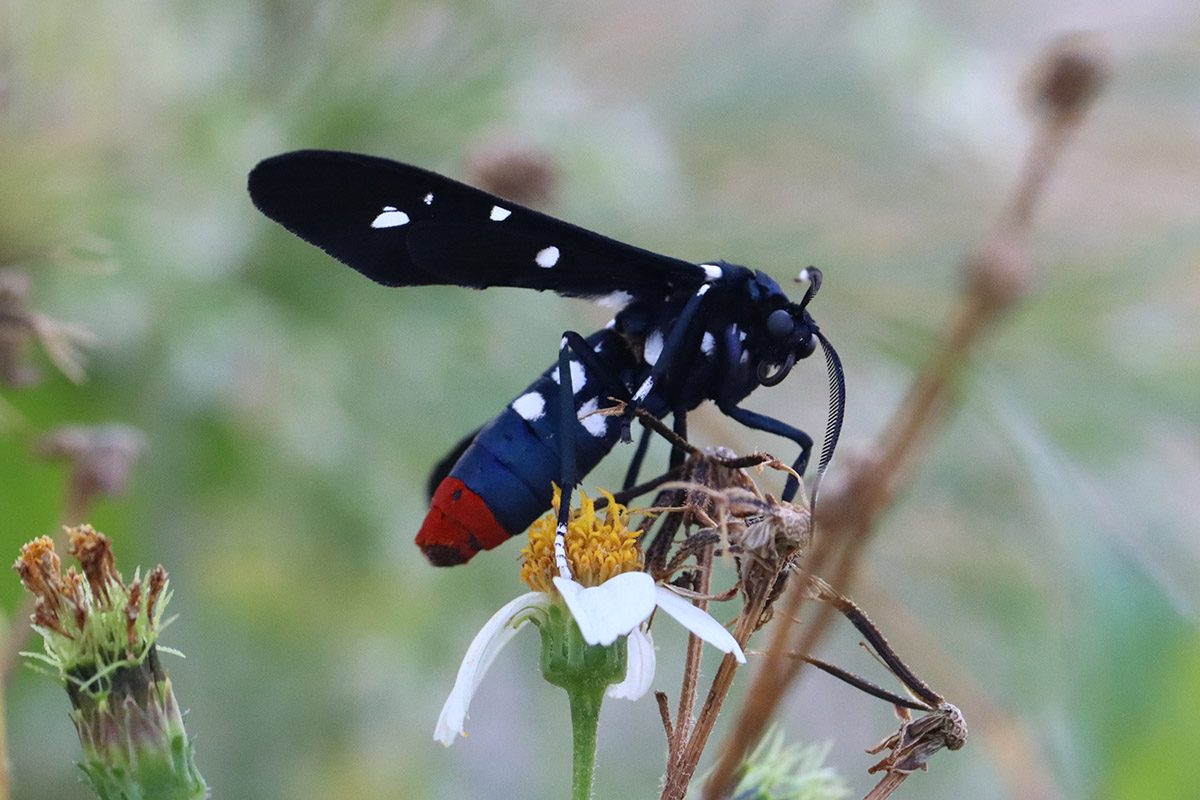
These usually visit in August/ September, and I see them almost exclusively on Brickellia. Maybe the late blooming Brickellia plants have attracted this one now.
November 24, 2022- Thanksgiving
Amy and I, and even the kids, split kitchen duties this Thanksgiving. I found myself with a little time before the turkey went in and after it was already roasting. I saw a few things that made me thankful this year.
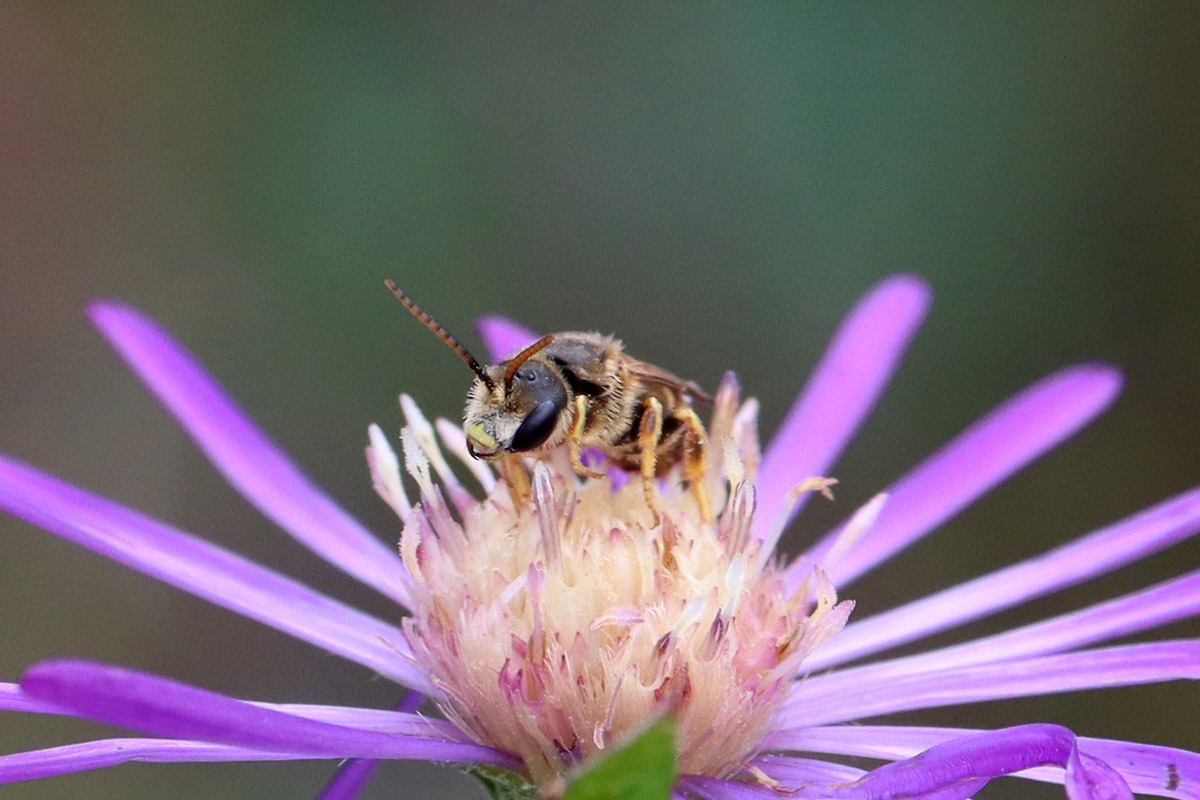
Before I took the photo and was able to see the face clearly, I wondered why this bee wasn’t totally covered in pollen. Here again is the male Poey’s furrow bee. Thanks for fathering next year’s Poey’s furrow bees!
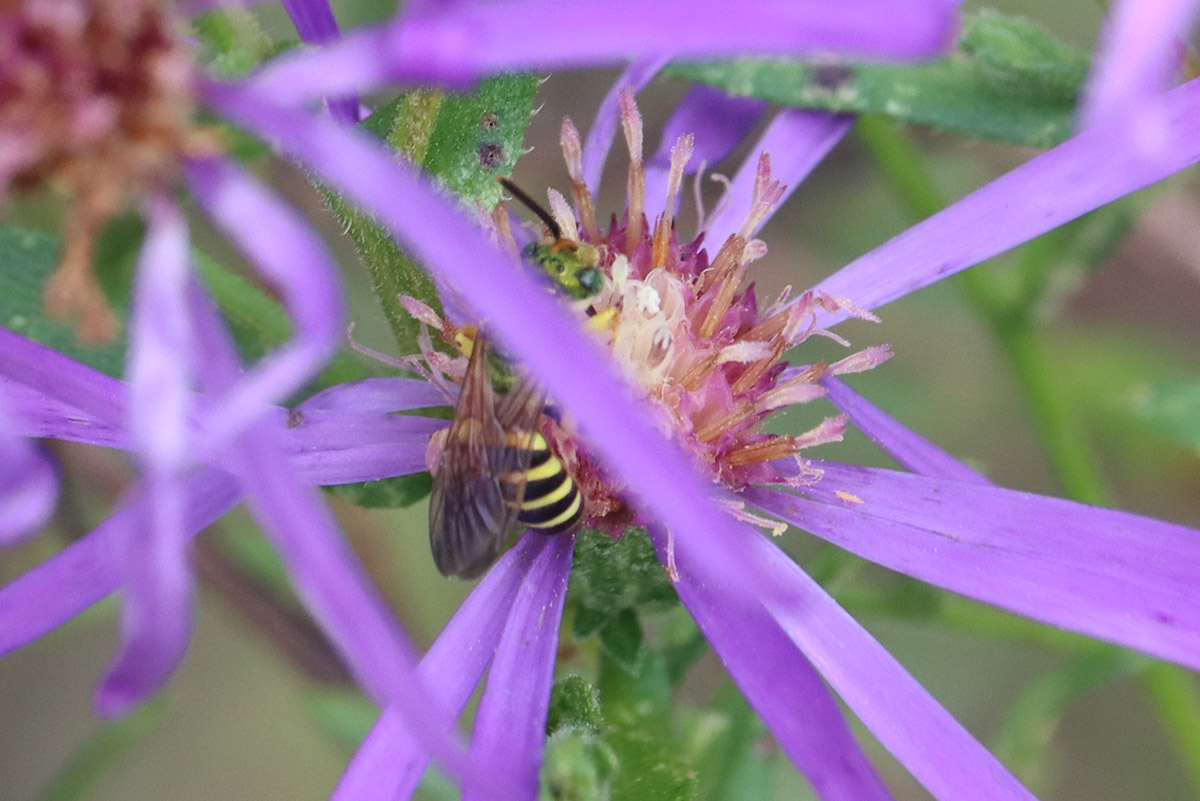
Another male on the Georgia aster. Thanks for fathering next year’s brown-winged striped sweat bees!
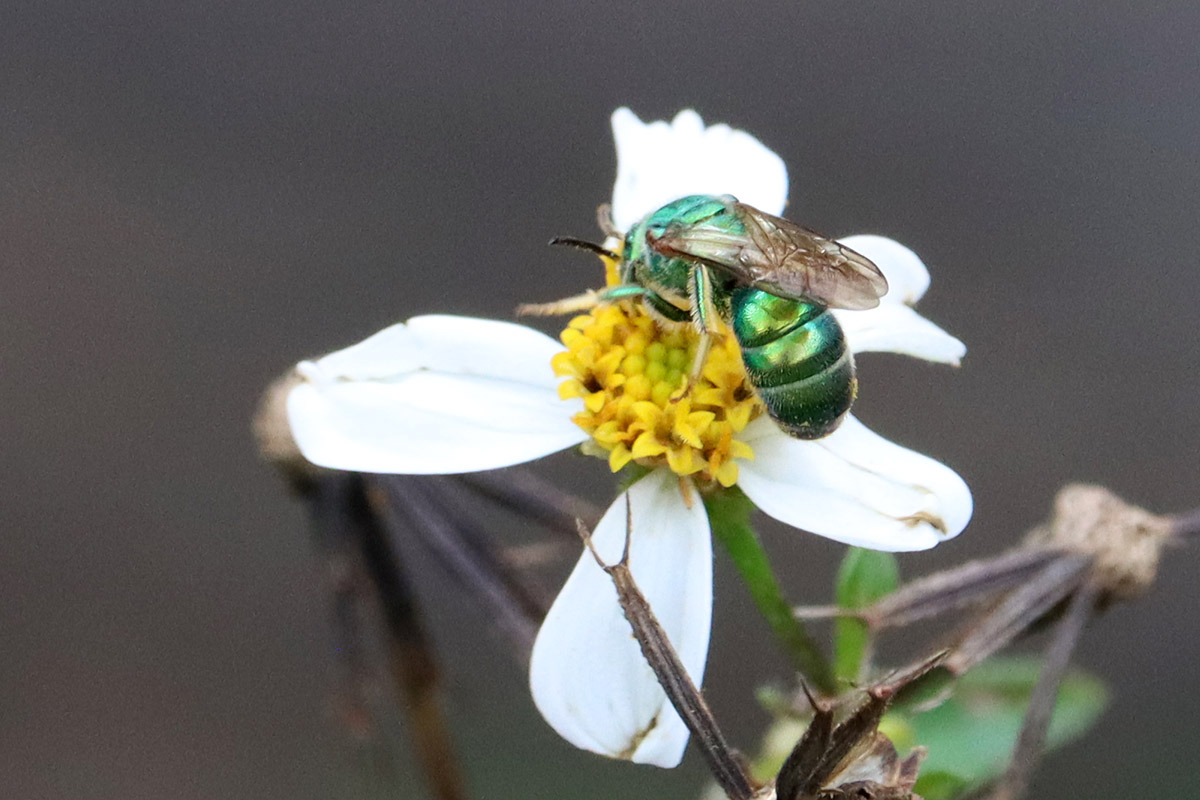
Thanks for the nest you’ll build in the spring, and for raising next year’s brown-winged striped sweat bees!
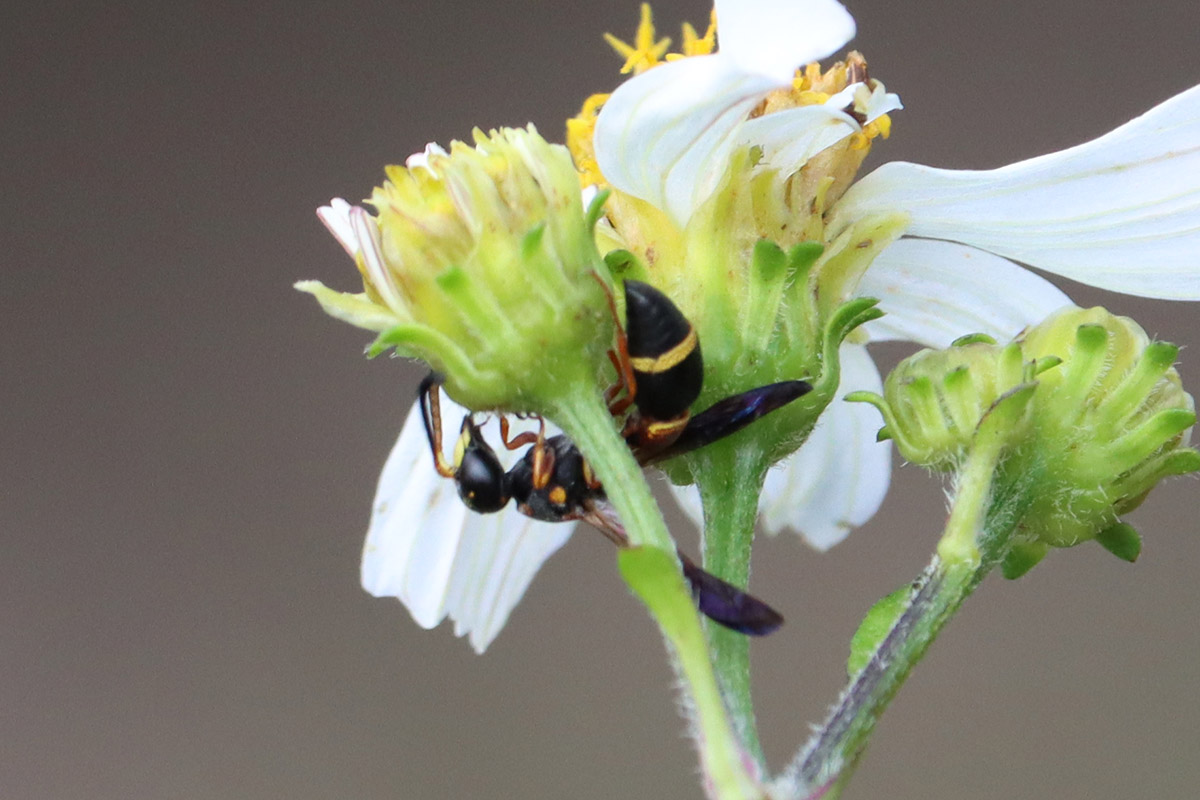
This is a mason wasp, one of many with yellow stripes on their abdomens. According to iNaturalist, it’s a species I’ve not observed before. Thanks for visiting our yard!
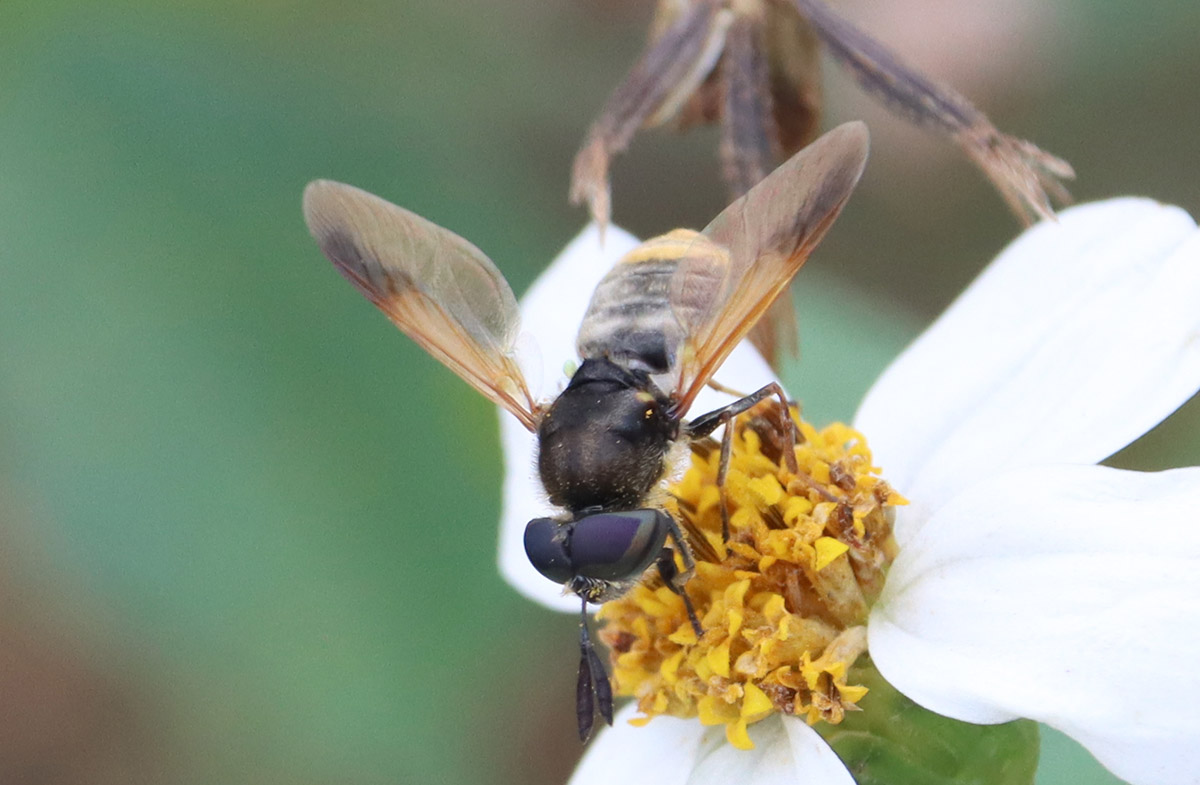
A flower visiting fly, and, I’m thankful to say, another new species for the yard.
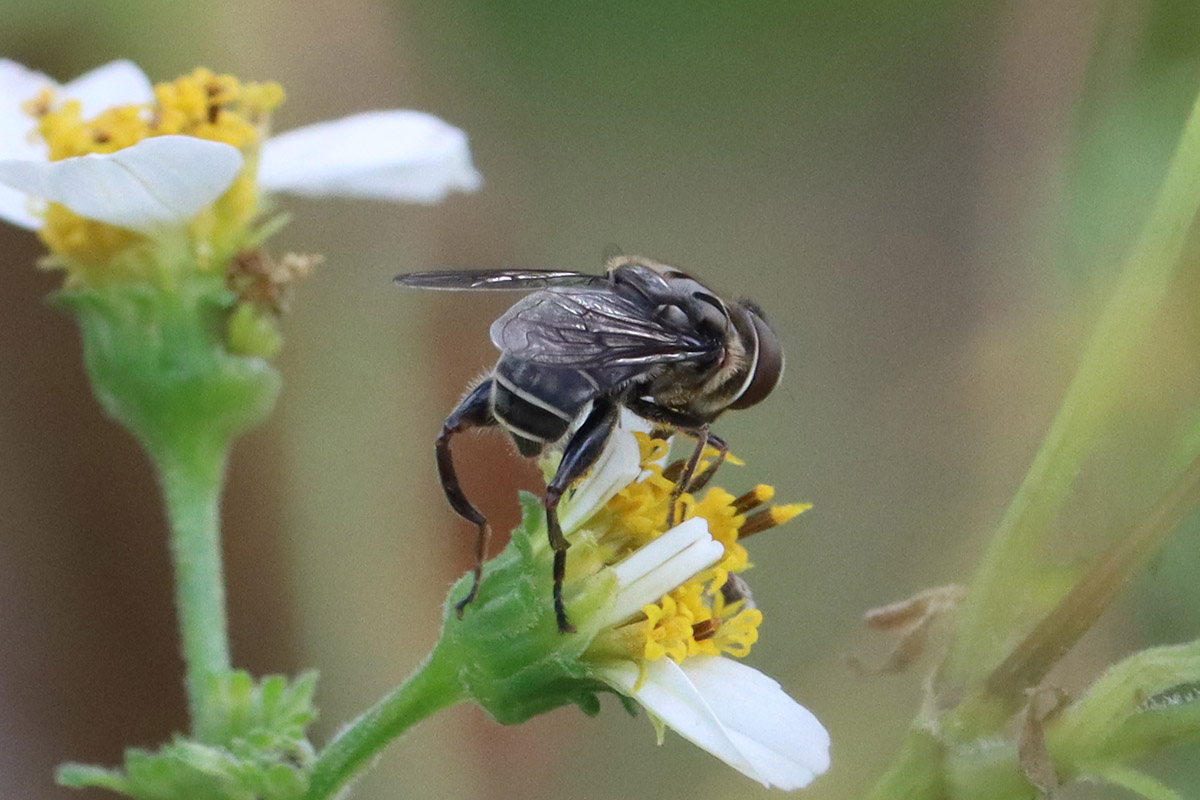
Another new species! This one is a syrphid, or hoverfly. Thanks for depositing your aphid-eating offspring on my plants!
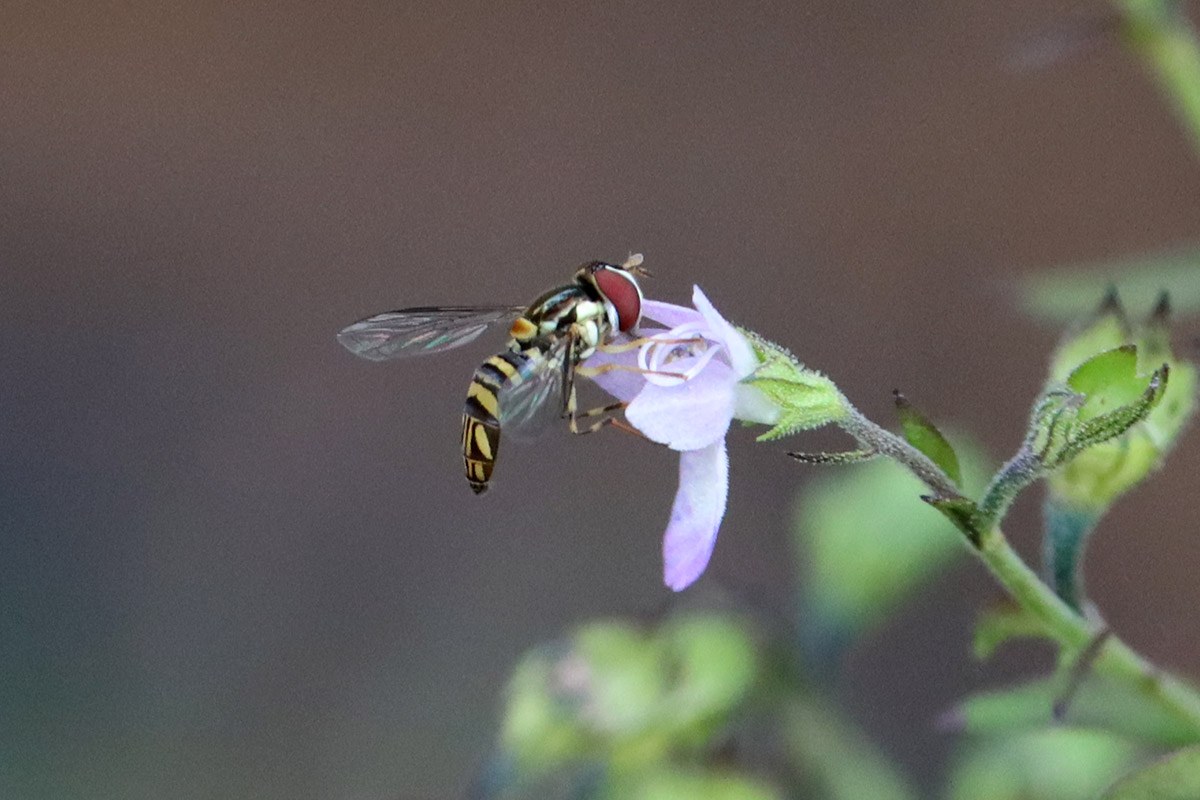
Thanks for visiting this plant, and for your aphid-eating larvae!
I bought one forked bluecurls plant two years ago. I now have a couple dozen, at least. They reseed like crazy. I let them take over a raised bed, more or less. They’re pretty, but this is the first insect I’ve seen pollinating this plant. I’ll keep a few next year, but not all of them.
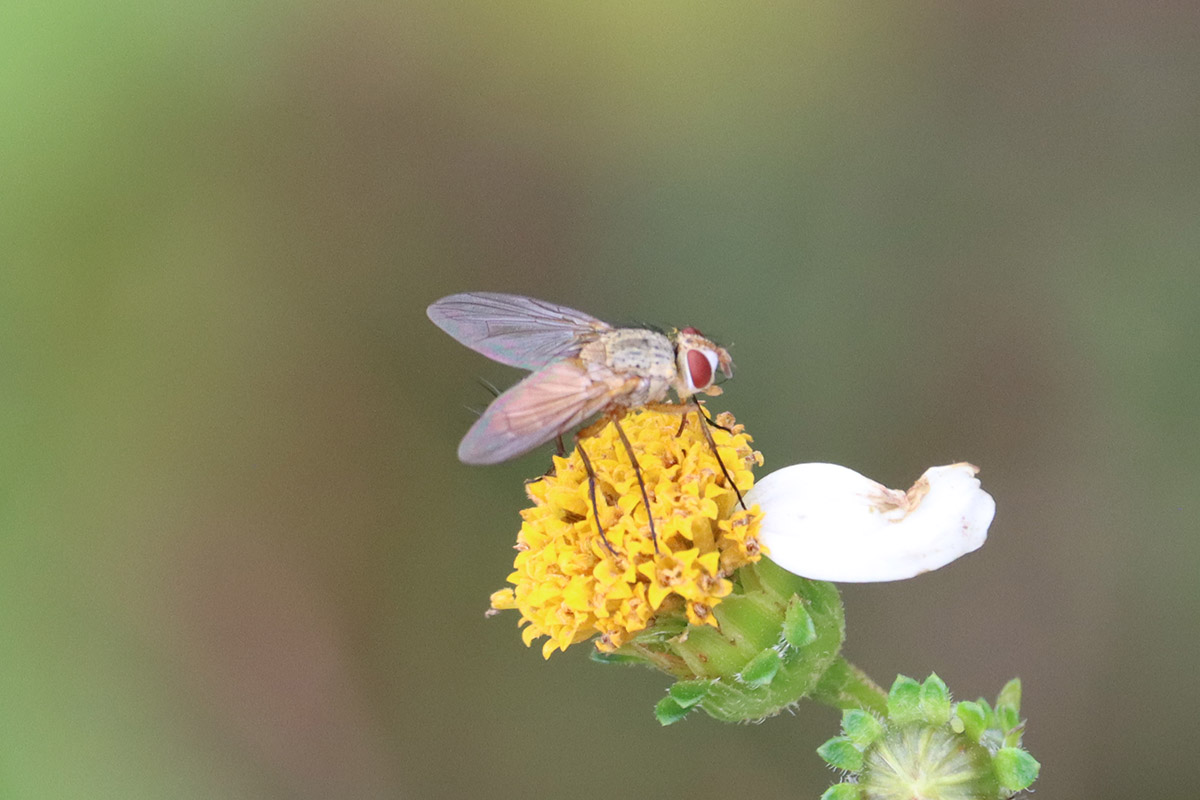
Bristle flies are parasitoid breeders. So thanks for… I don’t know. Bristle flies, or Tachinids, are known for parasitizing garden pests. I couldn’t get a species-level ID for this one, so thanks for potentially killing garden pests!
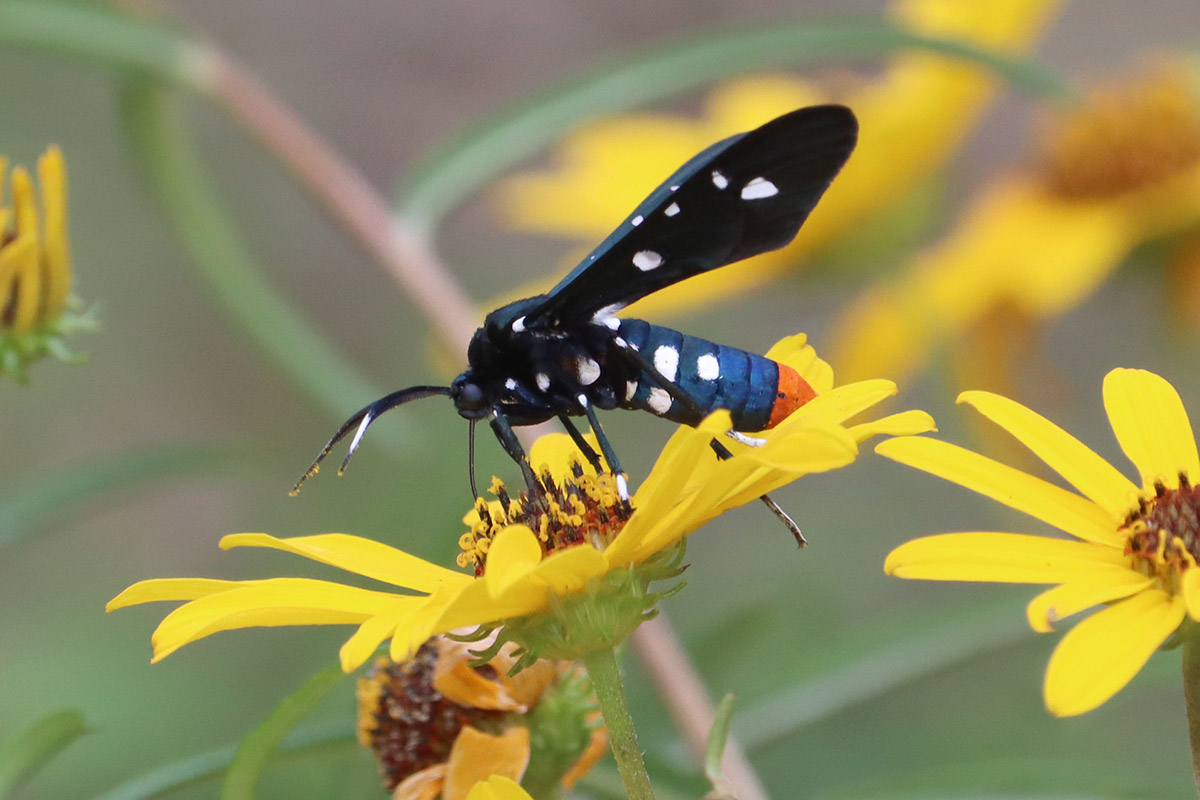
For some reason, half of our narrowleaf sunflower didn’t bloom with the rest. It should be done by now, but is still feeding pollinators. I’m thankful for all of the late-season blooms, and for a showy (though nonnative) pollinator showing up on Thanksgiving!
November 27, 2022
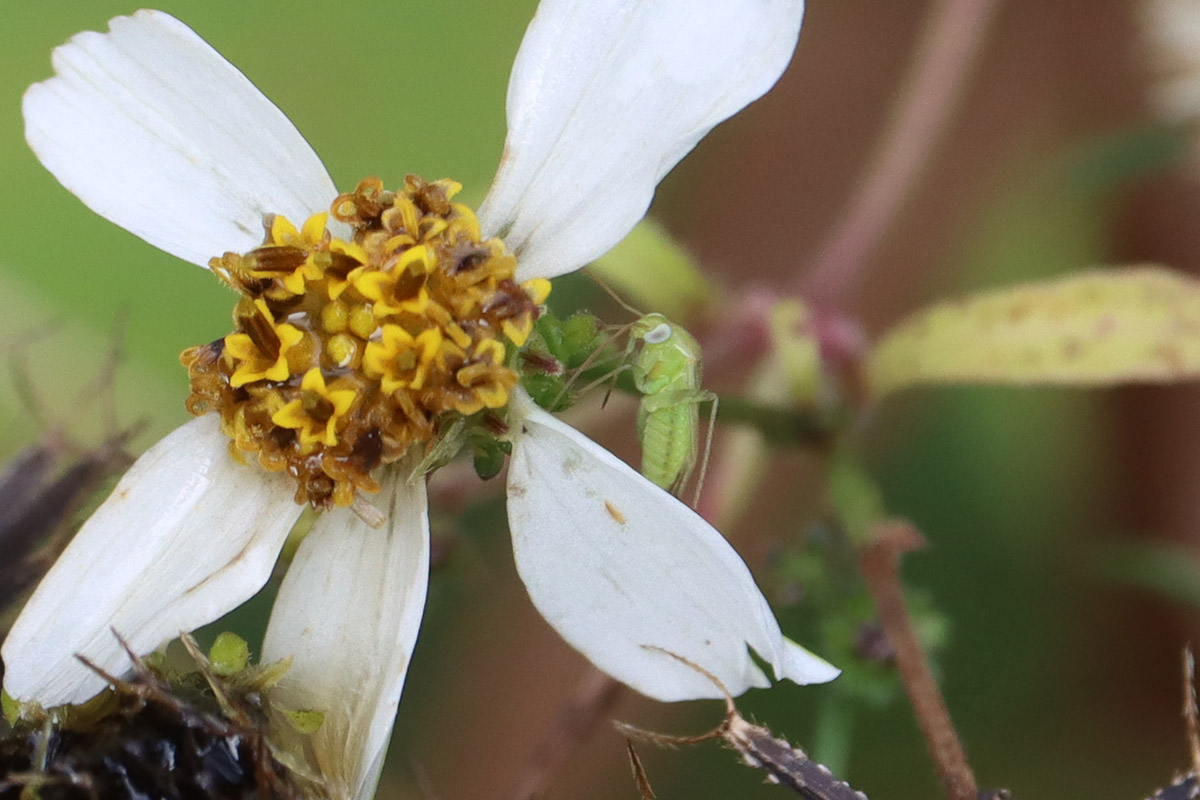
This has been a common insect this year. They feed on asters, and we have so many more flowers in the aster family this year. These include Coreopsis, sunflowers, rosinweed, Bidens alba, and of course the fall asters which are currently going to seed.
December 11, 2022
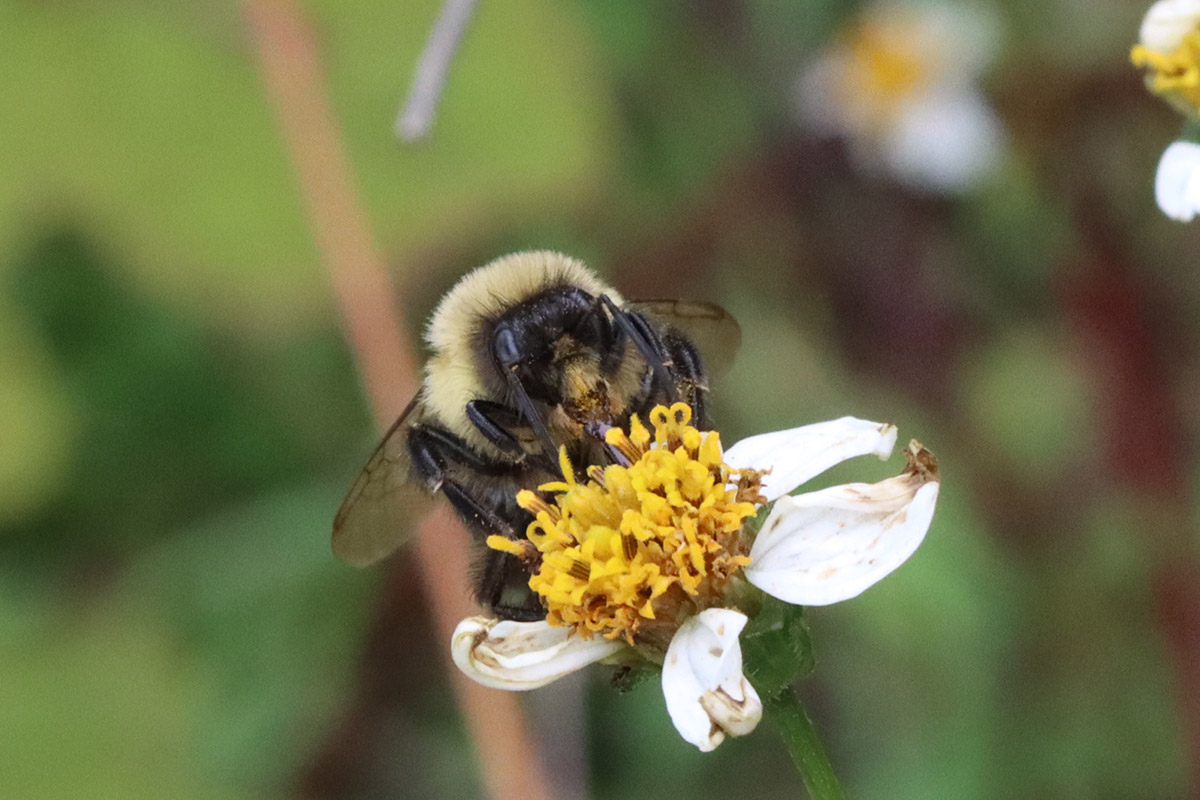
We’re down to the occasional bumblebee visitor in the yard. The other bees have, hopefully, found shelter for the colder months. I have, hopefully, provided them with suitable places to nest.
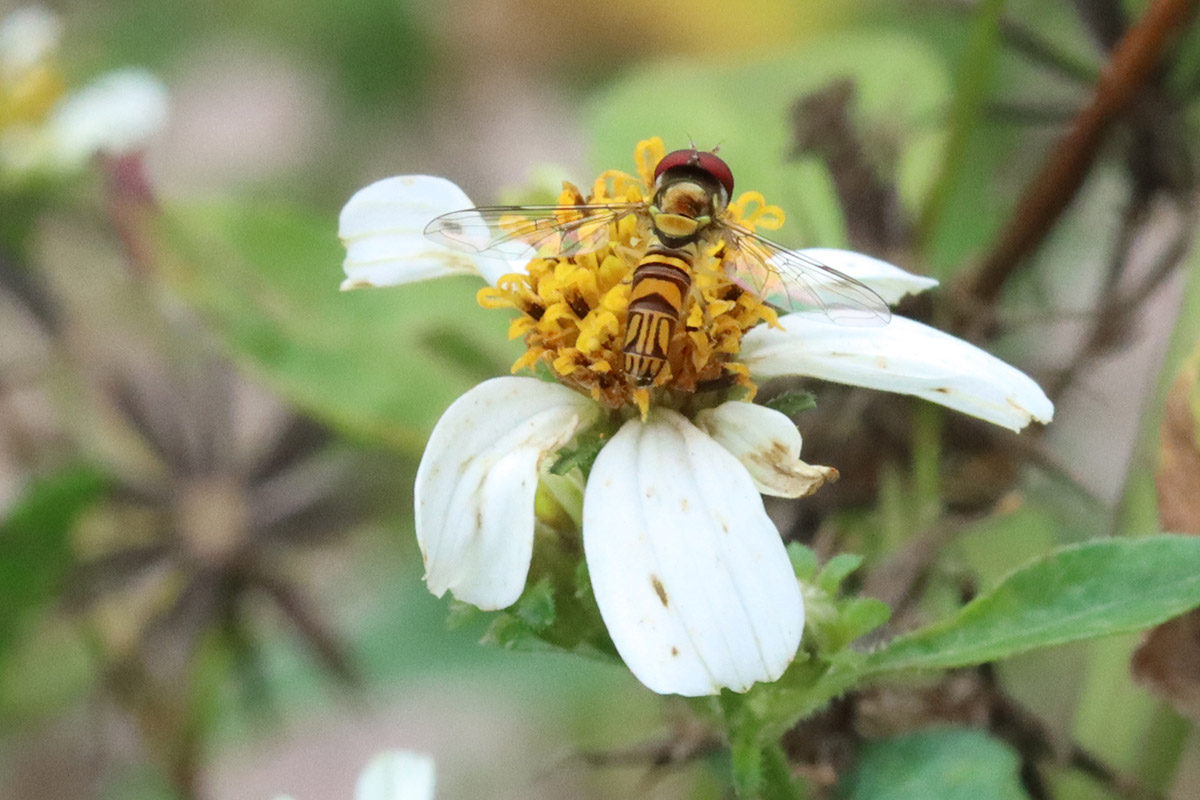
Hoverflies have become more common than bees. I don’t remember this happening in previous winters, but every year is different. We see more of one species and less of another. They may show up at different times of year or impress us with their consistency. New faces show up, and others take a break from our scene.
I was not originally going to write a Backyard Blog for 2022. But then the year happened, and I wanted a record of it somewhere. The Backyard Blog is, in a lot of ways, for me. I like seeing how the yard evolves from year to year, and to have the ability to look back.
My hope is that is has something to offer anyone else who thinks of their yard as a habitat, or is wanting a more lively space surrounding their home. Once you build that stage, all you have to do is pay attention and watch the little dramas, the comings and goings, the tragedies and the victories.
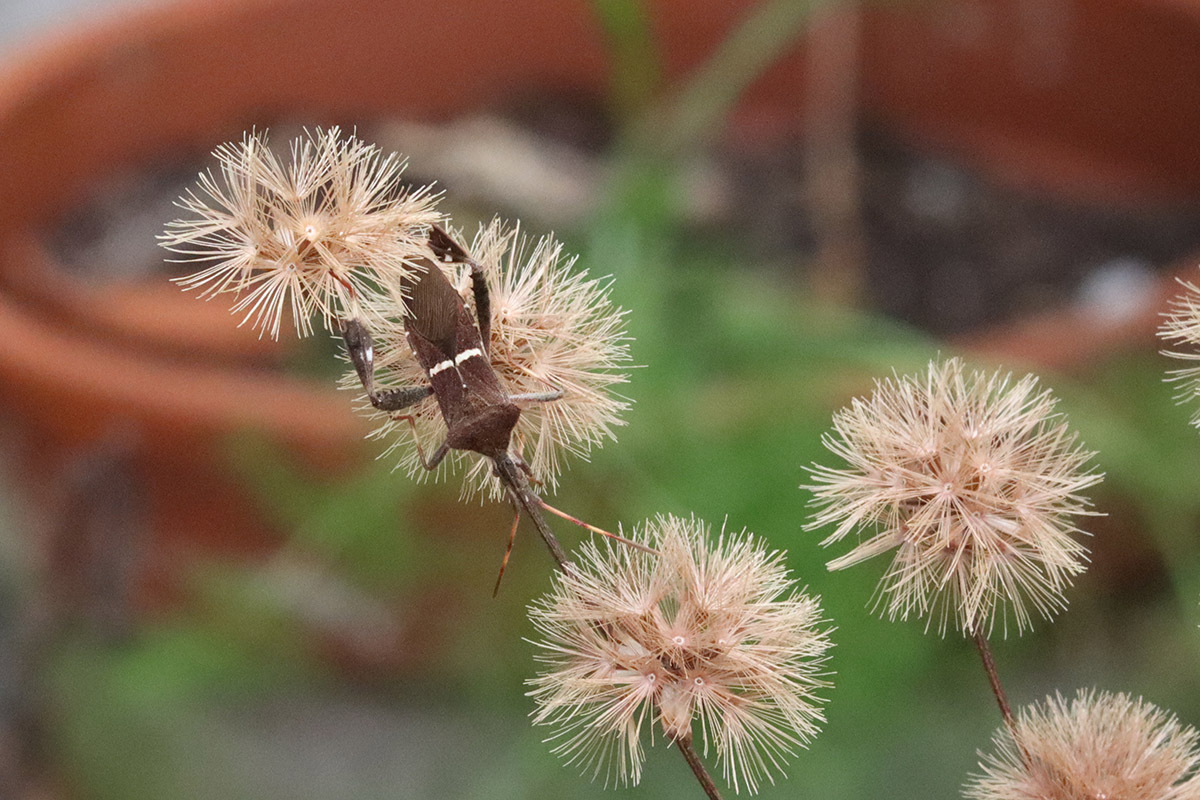
Many of the wildflowers that enlivened 2022 have gone to seed. This image means winter to me. I harvest a few seeds to plant for the next year, or to give away to friends. Ironweed grows easily from seed, and we had plants scattered through different parts of the yard. I somehow neglected to photograph insect visitors to them while they were flowering.
December 28, 2022
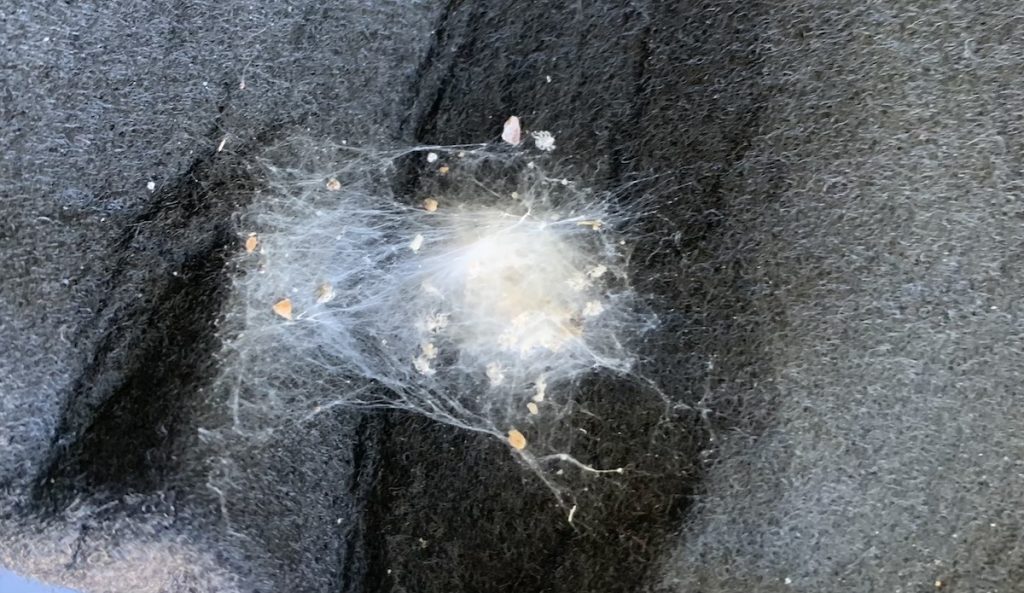
This morning, I uncovered our plants after four days of below freezing temperatures. I left the natives uncovered, of course- they need to respond to the seasons here as they’ve evolved to do. We left town for Christmas during the very coldest time of year. Our last family trip started in June, after the very hottest time of year- three straight days over 100 degrees. We live in that rare place where we may have as many days below freezing as above 100.
I ran out of old sheets and used a couple of empty potting bags as cover. I don’t think they worked well. Anyhow, I found a moth cocoon on this one. Perhaps it was overwintering in the shed. Most of our insects are in the ground, many as larvae and pupae. Others are nestled in leaves, decomposing wood, or the dead stems of wildflowers. Despite appearances, life is all around us.
Driving around today, I saw a cloudless sulphur flying. It was 28 degrees last night, and yet it warmed up enough for this insect, at least, before noon. When I returned home, I saw that any butterfly toughing it out over the last week has nothing to eat in my yard. The scarlet sage and Bidens alba that had bloomed so profusely a week ago have now died back.
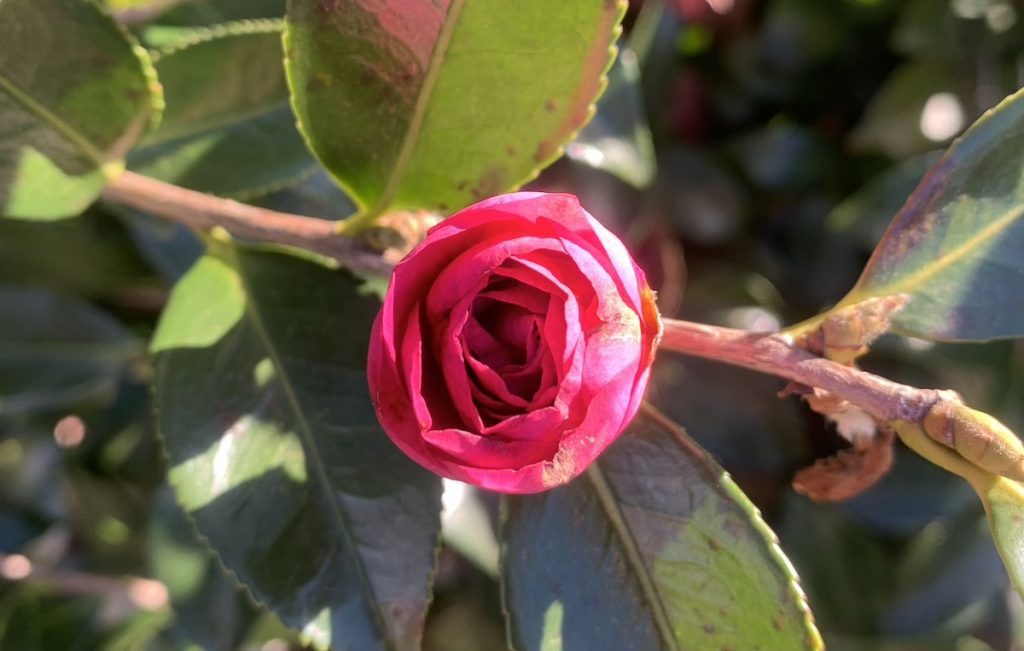
The cold seems to have killed off our camellia blooms as well, though a few new flowers are ready to open up.
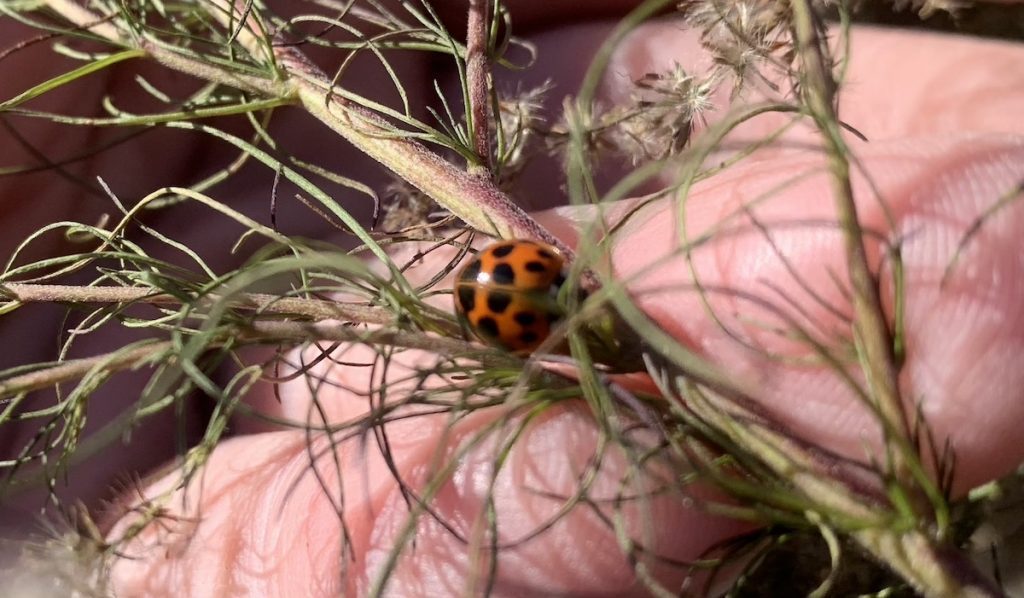
The dog fennel is still full of Asian lady beetles. Aside from a few flies buzzing around our compost, these are the only visible insects in our yard.
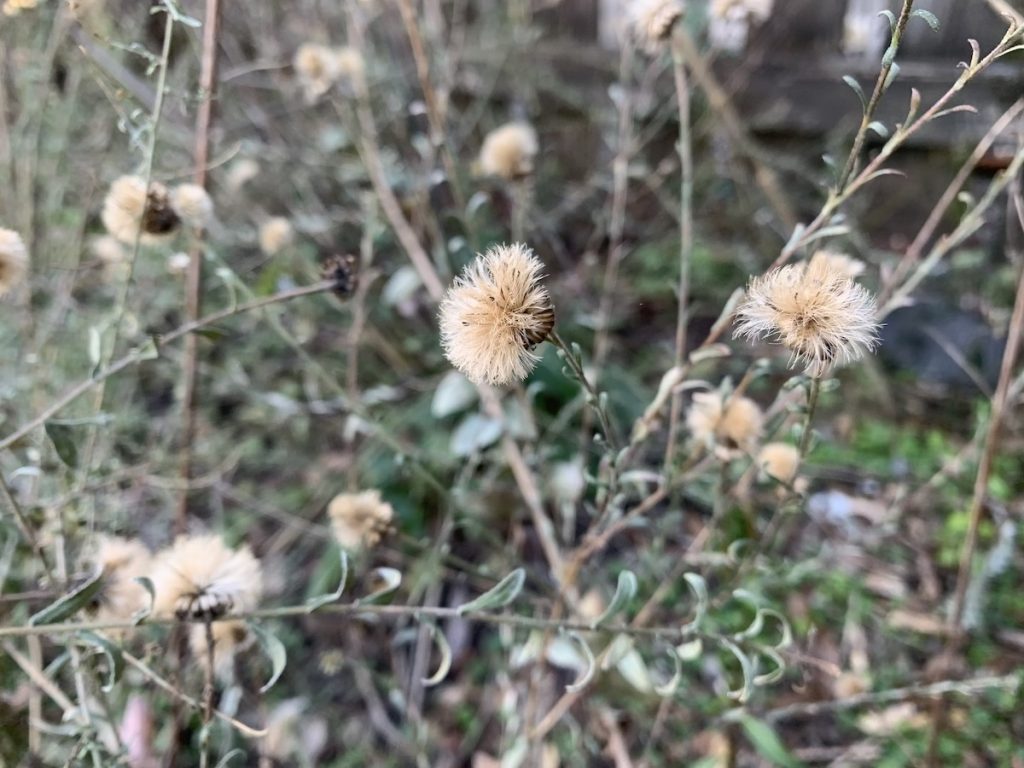
As the year ends, many of our wildflowers look like these Georgia asters. I’ve harvested seed heads from several wildflowers, and have left a few for their winter beauty, and for whatever wildlife might use them.
The winged loosestryfe is resprouting from its roots, as is the narrowleaf sunflower. The sunflowers spend all year growing tall, bloom for a month in the fall, and then start to die back. Almost as soon as they form seed, new leaves start to grow from the base of their stalks. The leaves of both plants were battered slightly by the cold, but are alive.
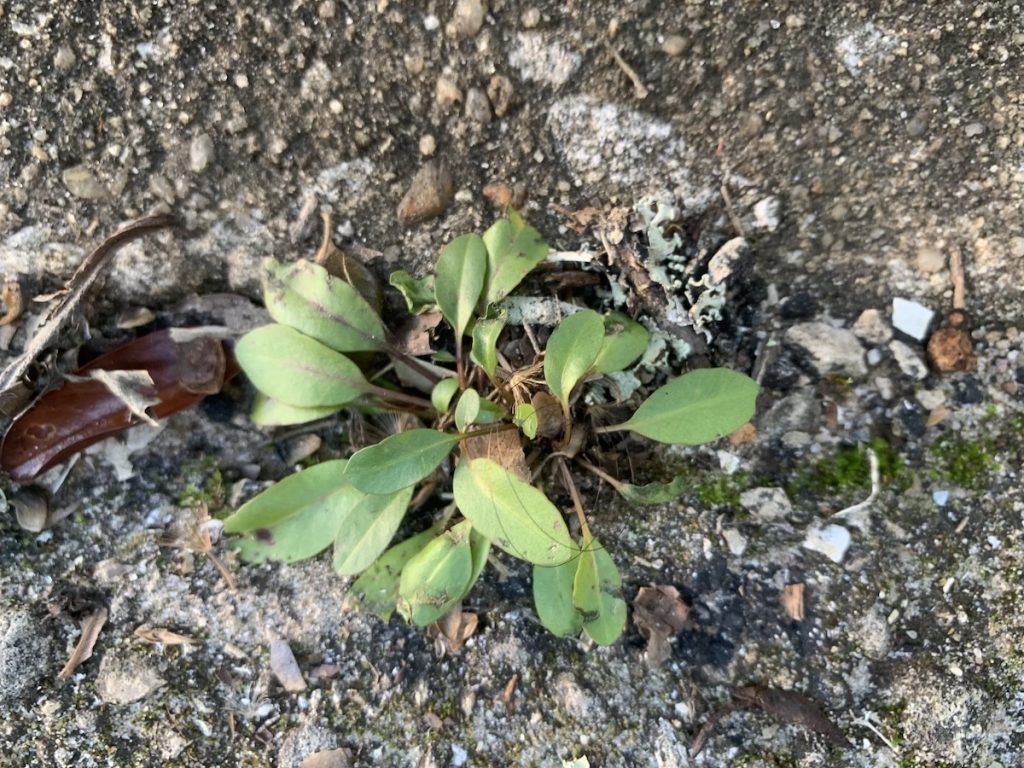
And lastly, here’s one of our Leavenworth’s Coreopsis, the hero species of 2022. They self seeded everywhere in the spring, including this crack in the pavement by our air conditioner. This plant flowered, and was visited by bees. It was never a huge plant compared to its kin in the front yard, but I admired how it grew here.
A few months back, we had some AC work done; the plant was trampled, and died back. Those roots were well protected by the pavement, apparently, as a few weeks ago, I noticed it start to grow back. And here it is after four days of below freezing temperatures.
These plants never cease to amaze me. Over the next few days and weeks, if we avoid another harsh cold snap, we’ll see how our plants respond. Some are droopy, and will perk up. Others have died above ground, and will be reborn from their roots. And then my strawberries act as if nothing happened.
More to come?
I wanted to publish this before the end of the year, but who knows? There may be insect, bird, or plant stories yet untold in the last couple days of 2022. I’ll have my eyes open.
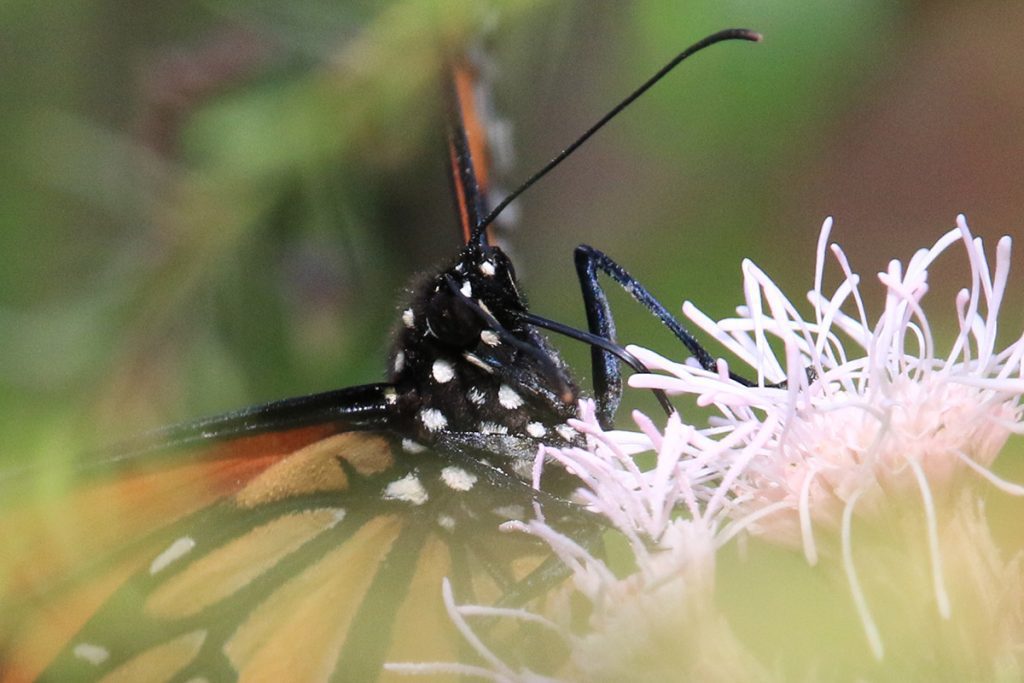
Dig Deeper into Backyard Ecology
What can we do to invite butterflies, birds, and other wildlife into our yards? And what about the flora and fauna that makes its way into our yards; the weeds, insects, and other critters that create the home ecosystem? WFSU Ecology Blog takes a closer look.
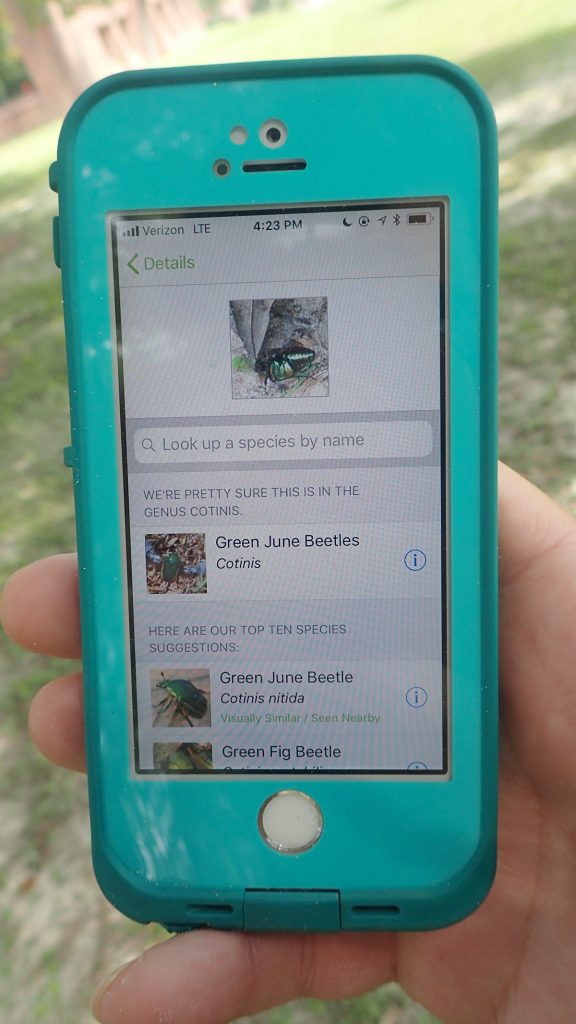
Apps and Citizen Science mentioned in the Backyard Blog
iNaturalist
Identify plants, animals, lichens, and fungi in your yard. Other users correct your identifications if you’re wrong, and even if they don’t, it can be a good springboard to further research.
Seek by iNaturalist
Instant identification, and it doesn’t record your location. This is a good option for kids with phones.
Monarch Larva Monitoring Project
Enter information about monarch caterpillars in your yard, and help researchers get a sense of the health of the monarch population that year, and how and when they’re migrating.
Great Sunflower Project
Record the number of pollinators visiting your flowers, and help researchers map pollinator activity across the country.

